We ended up waking up early at the Hyatt Place Kyoto and headed out to Kiyomizu-dera, hoping to beat the crowds. We were successful but the morning light wasn’t great due to the proximity of the mountains. We ended up visiting three times throughout the day hoping for better light! Later, in the afternoon, we walked over to Kodai-ji and stayed for their nighttime fall illumination event.
Kiyomizu-dera
Hyatt does not require their non-US Hyatt Place properties to offer breakfast for all guests. This may come as a surprise to American guests, though this is actually a very recent change at this property. So, we visited a nearby 7-11 (7-Eleven) for breakfast! This well known American convenience store chain is completely different in Japan as they are overall much higher quality. And unlike our local store at home, they don’t get robbed regularly! There are other similar convenience store chains in Japan, Lawson and FamilyMart in particular come to mind.
We decided to get some onigiri as unfortunately, we were a bit too early for their hot items as they were still heating up. Afterwards, we crossed the street to take the 202 bus from Karasuma Marutamachi to Kiyomizumichi, a 20 minute or so trip.
We had some time before the bus arrived and were able to quickly eat our onigiri at the bus stop before the bus arrived. This is generally not a very Japanesey thing to do. The Japanese do not eat on the street like one would do in America, and certainly not on busses or subways! Eating at the bus stop seemed like an acceptable compromise between not wanting to miss the next bus, being hungry, and not wanting to do something too out of place.
After arriving at Kiyomizumichi, we walked uphill to head to Kiyomizu-dera. It was still early and most, if not all, of the shops that we passed by were still closed.
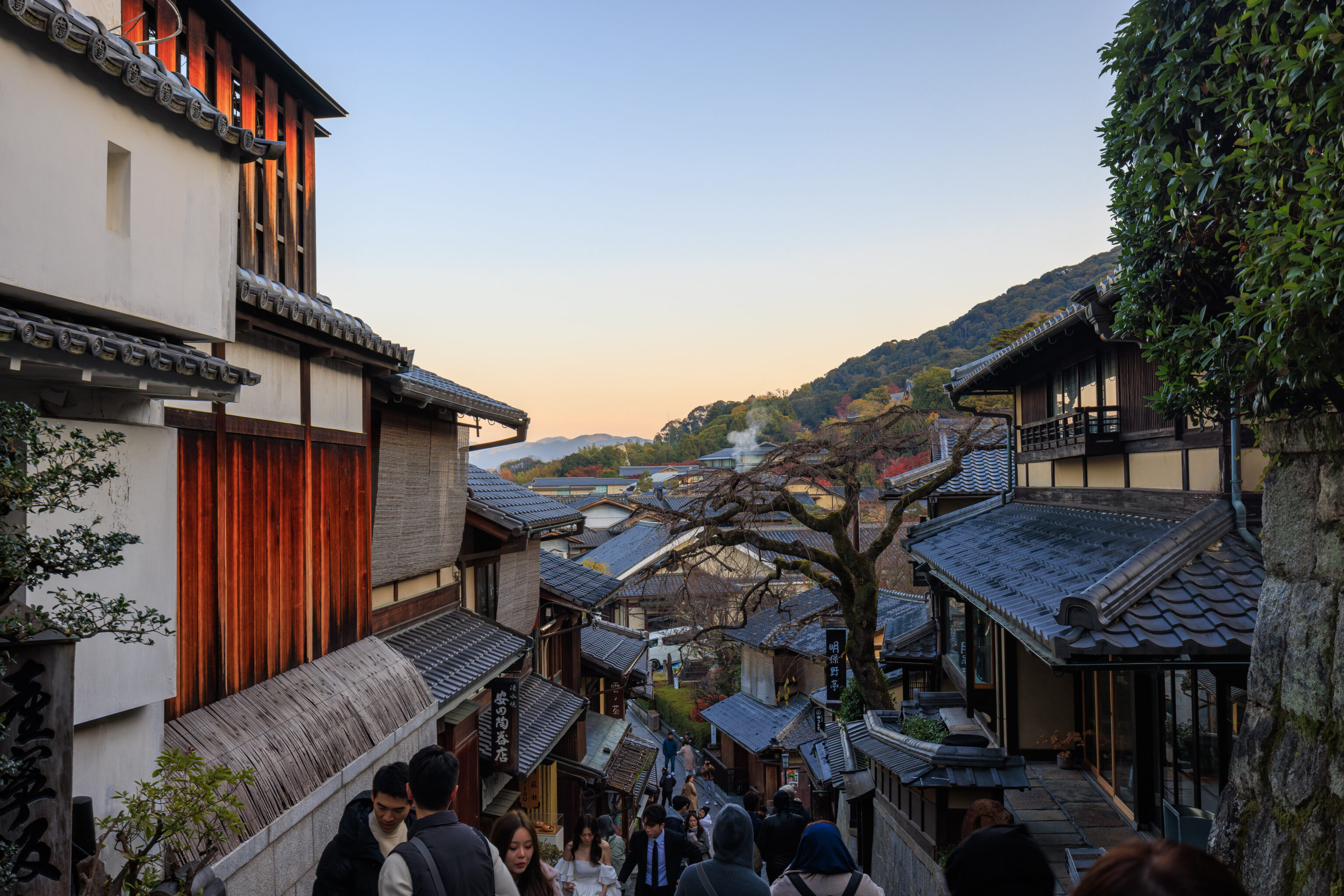
We passed by Sannenzaka, a sloped historic street lined with shops. It was surprisingly busy given the time, 7:20am.
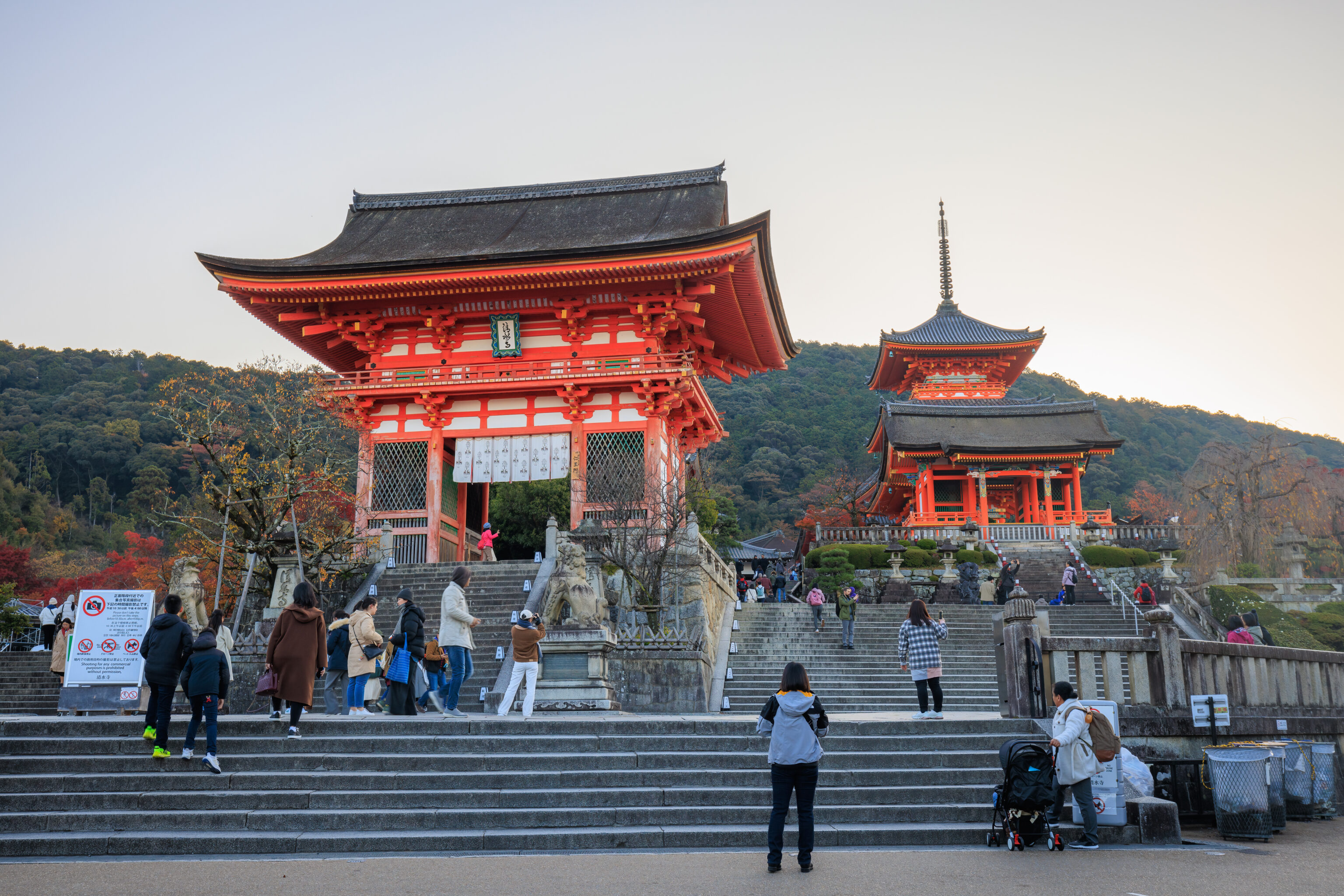
A few minutes later, we arrived at the entrance to Kiyomizu-dera. There were some people there but it wasn’t too busy. The large single bay gate on the left is the Niomon. The translation given for this in English is Gate of the Deva Kings, or Two Kings Gate literally. The Japan Tourism Agency gives an explanation for this name1:
Two chambers are located on either side of the gate. Inside are statues of the deva kings Naraen Kongō-ō (right) and Misshaku Kongō-ō (left). Rippling with muscle and bearing fierce expressions, these deities use their impressive size and strength to uphold Buddhist teachings and to frighten away ignorance. These statues are referred to as “Ah” and “Om.” These names are taken from the first and last letters of the Sanskrit alphabet. Like the classical Greek notion of Alpha and Omega, they refer to “the beginning and the end” and symbolize universality and omnipotence. Also known as the Guardians of the Diamond Realm (Kongō-rikishi), the deva kings often guard the gates of temples throughout East Asia.
The description given is for a different temple but the Niomon name is generic, more like a title than an actual name. Also, gates with guardian statues within are common in Japanese temples.
Wikipedia also provides a similar description of Niomon2:
Niōmon (仁王門, lit. Niō gate) is the Japanese name of a Buddhist temple gate guarded by two wooden warriors called Niō (lit. Two Kings).
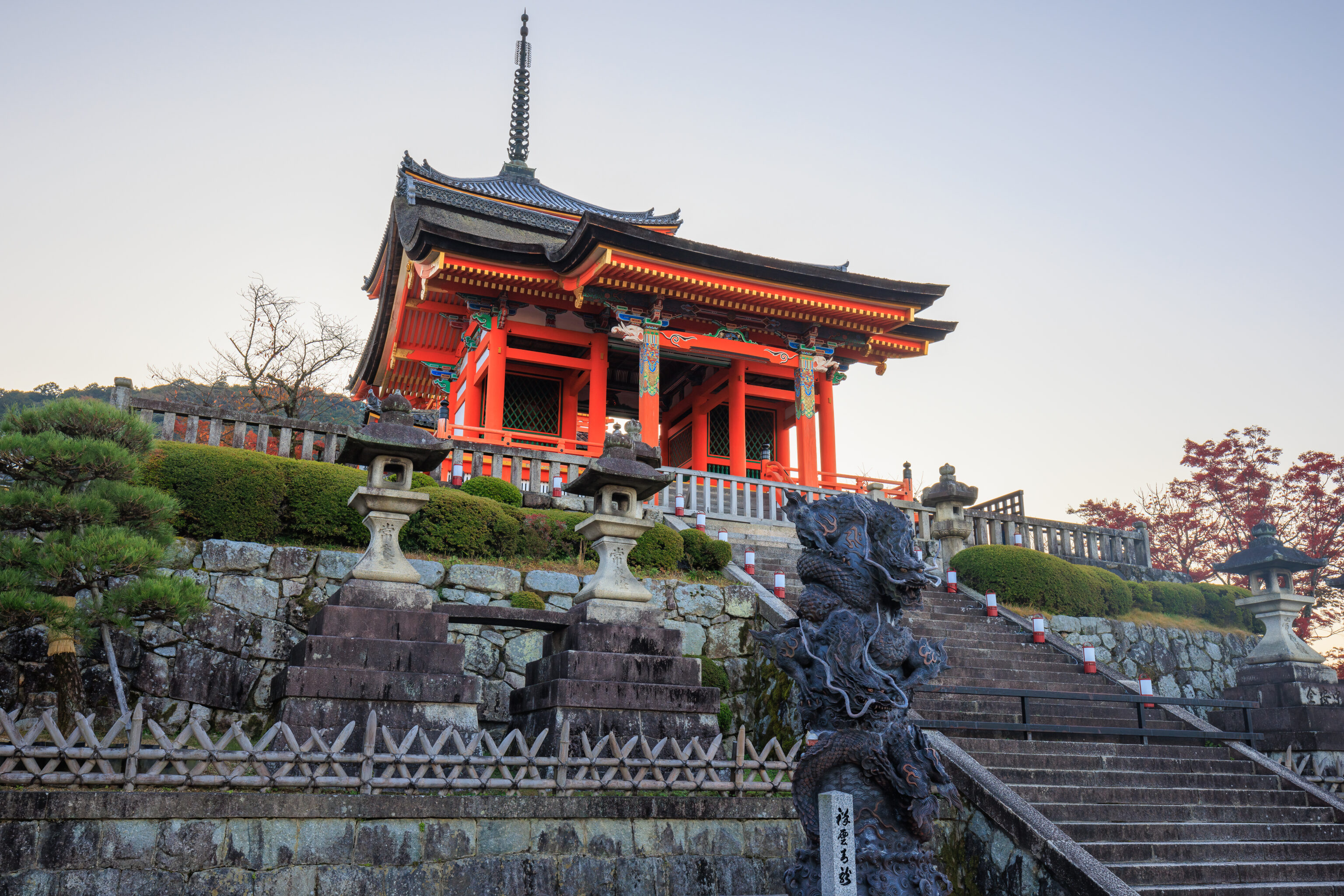
We walked up the first two set of stairs, bypassing the gate.
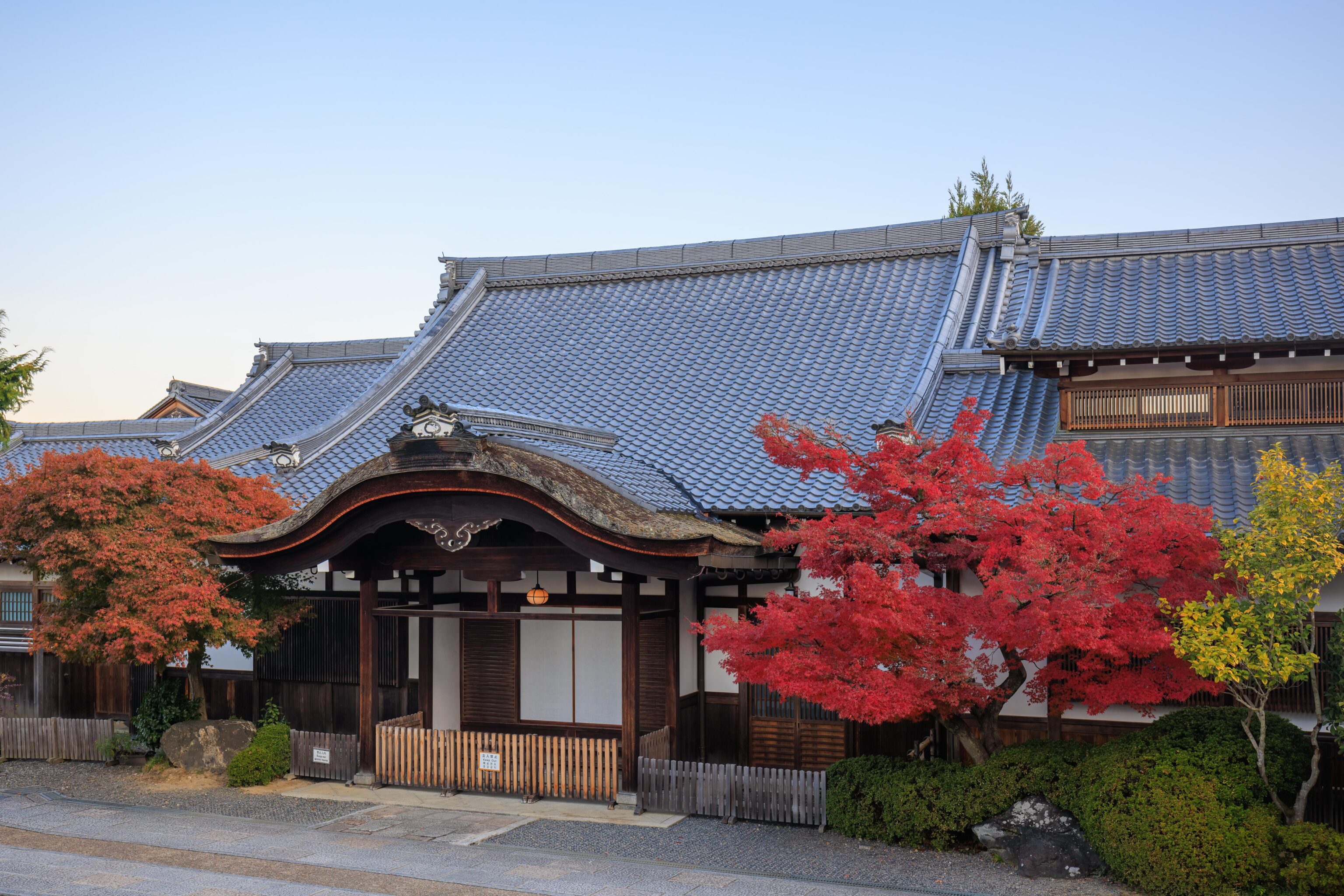
We saw some beautiful colors next to this building to the north.
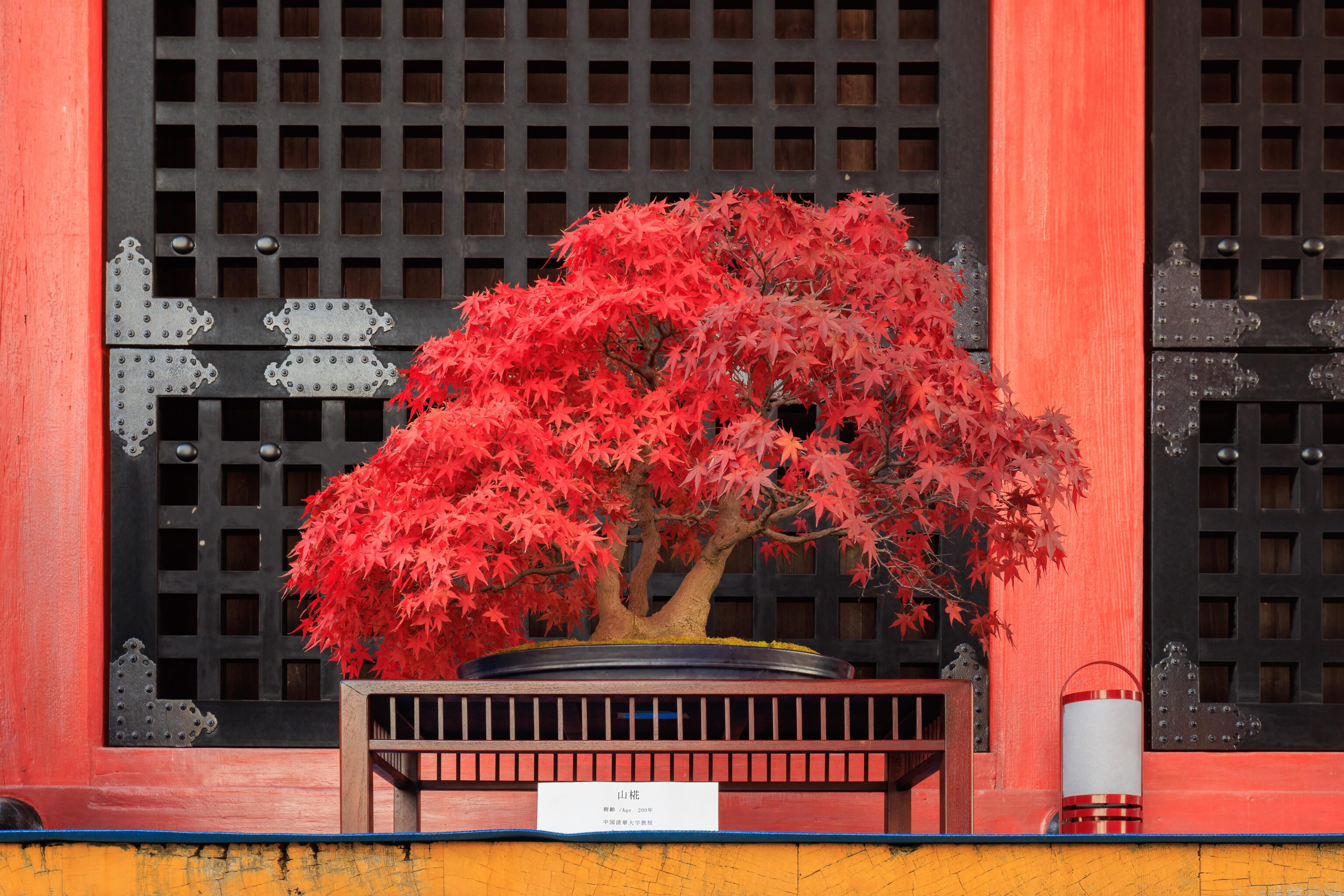
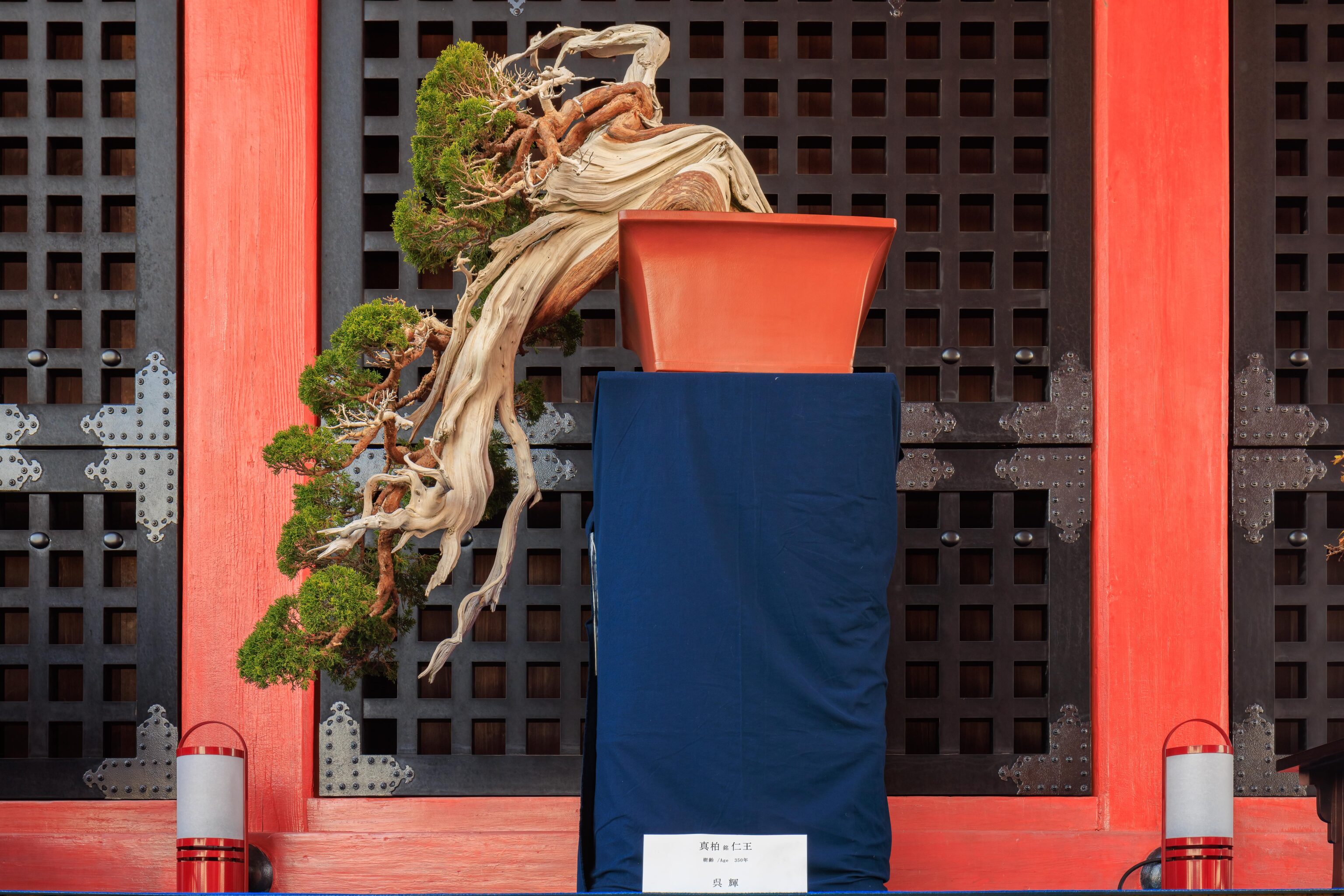
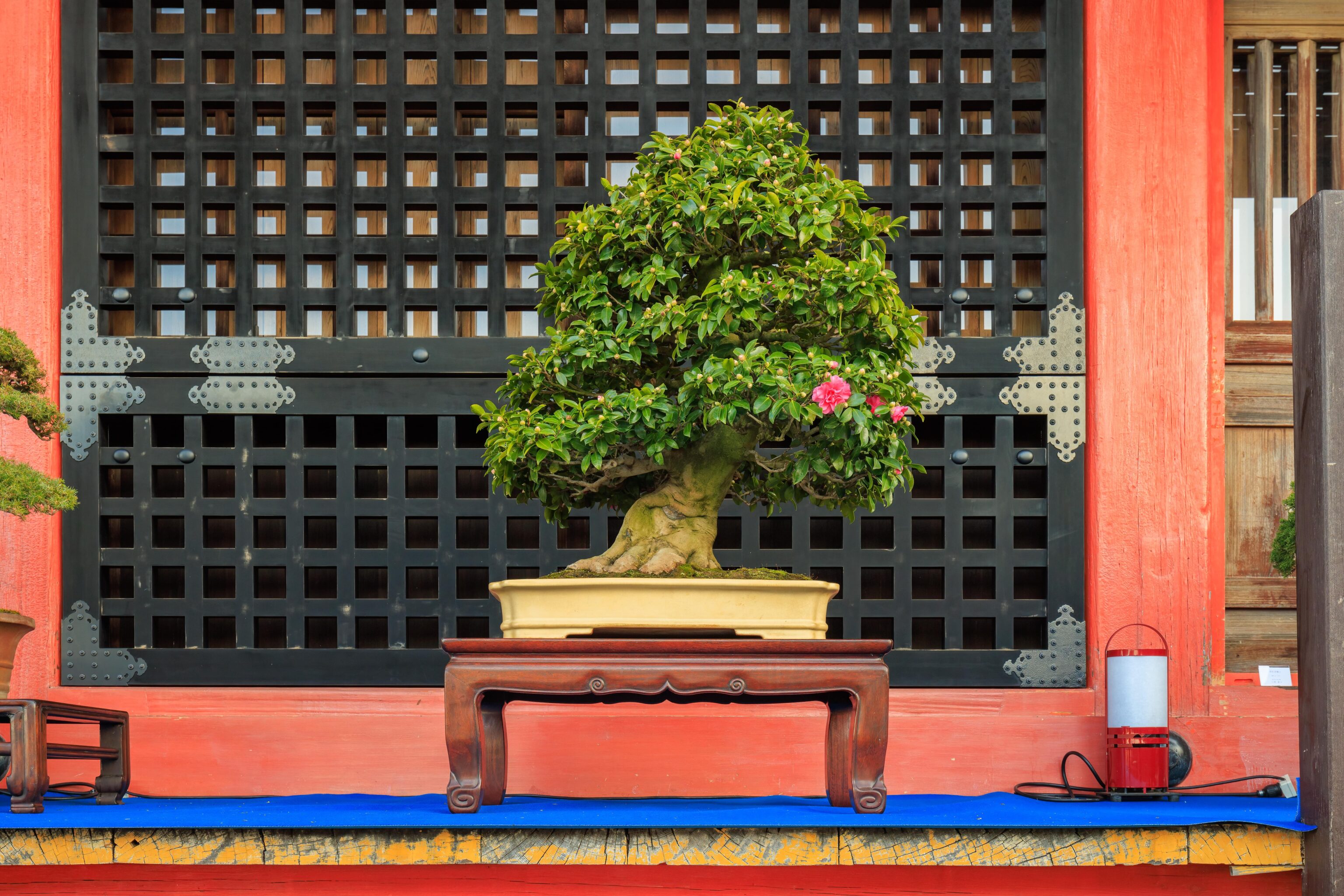
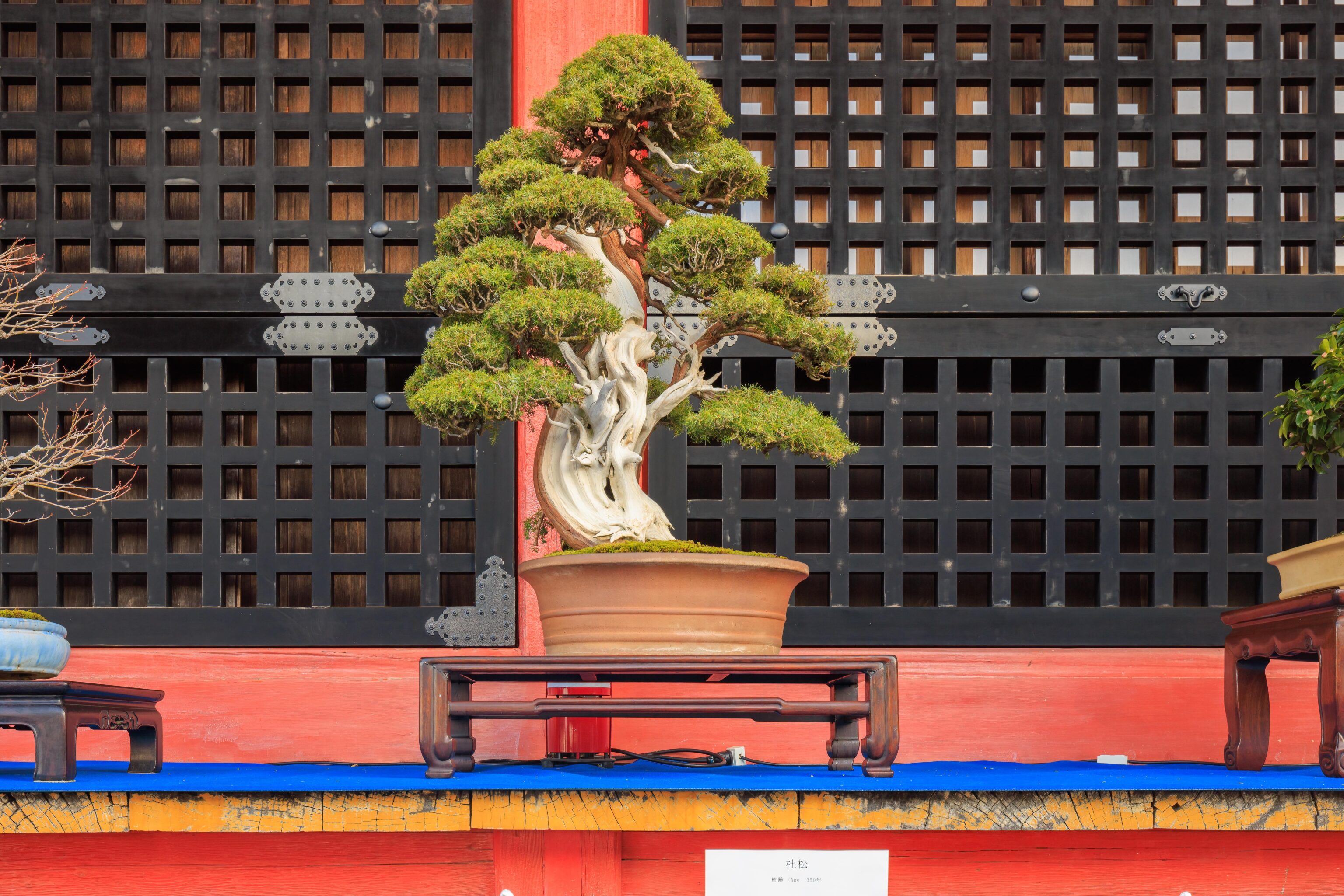
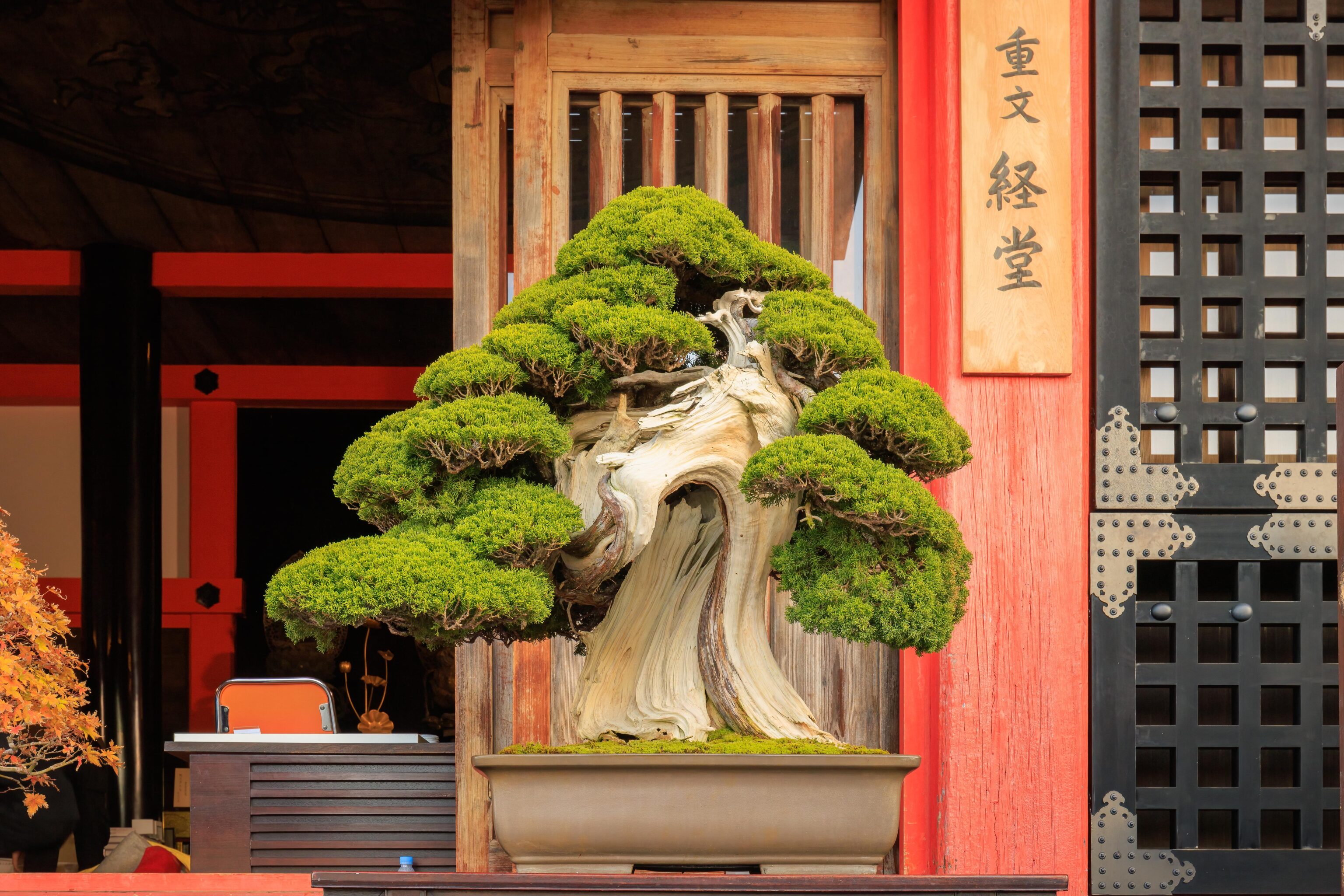
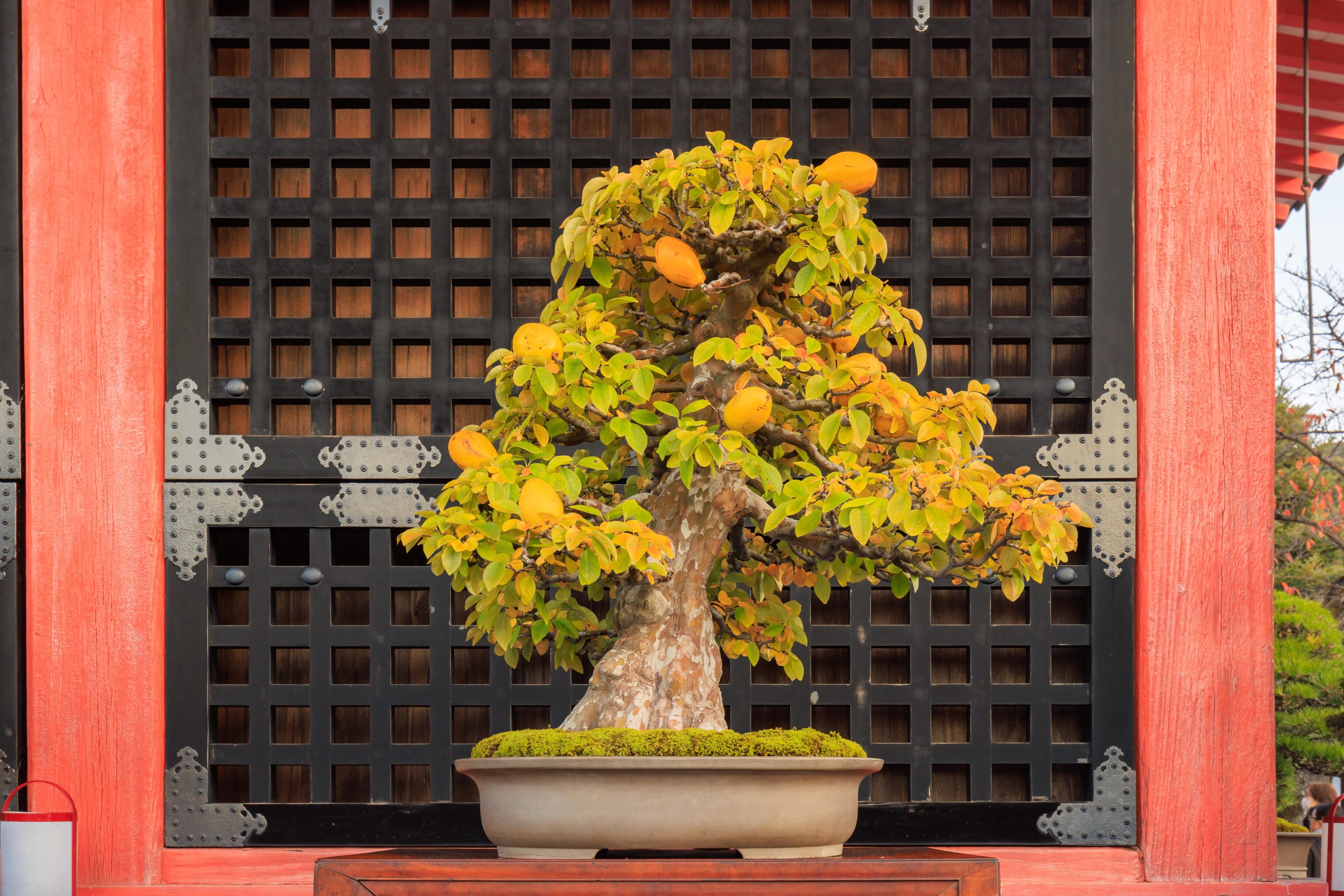
After ascending the 3rd set of stairs, we reached what can be considered the main level of the temple. We passed by some bonsai that were on display at one of the temple buildings, labelled as Kiyomizu-dera Kyodo (Sutra Hall) on Google Maps.
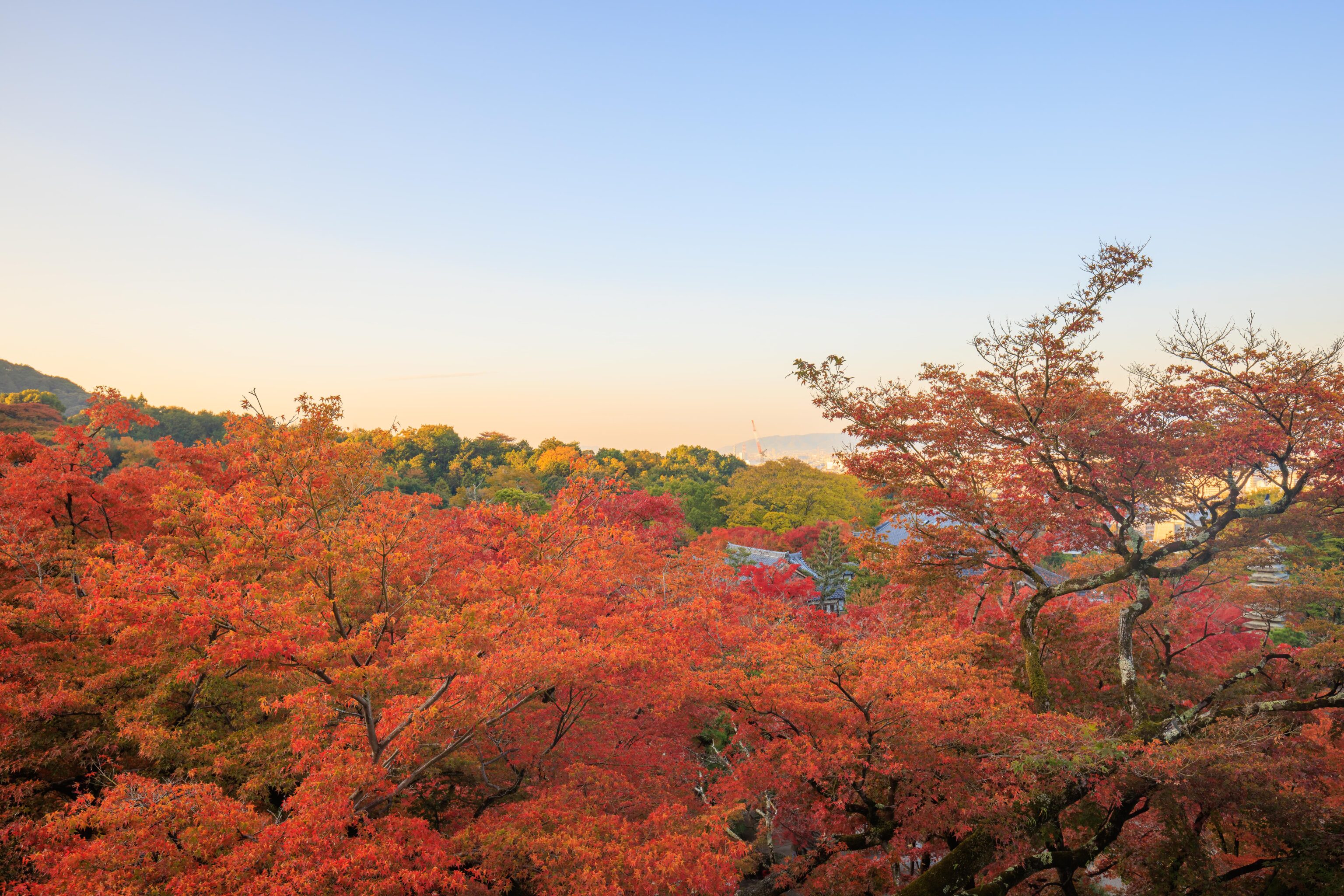
We got our first real glimpse of Japanese fall foliage just to the south! The temple sits above ground level so these trees are all below us.
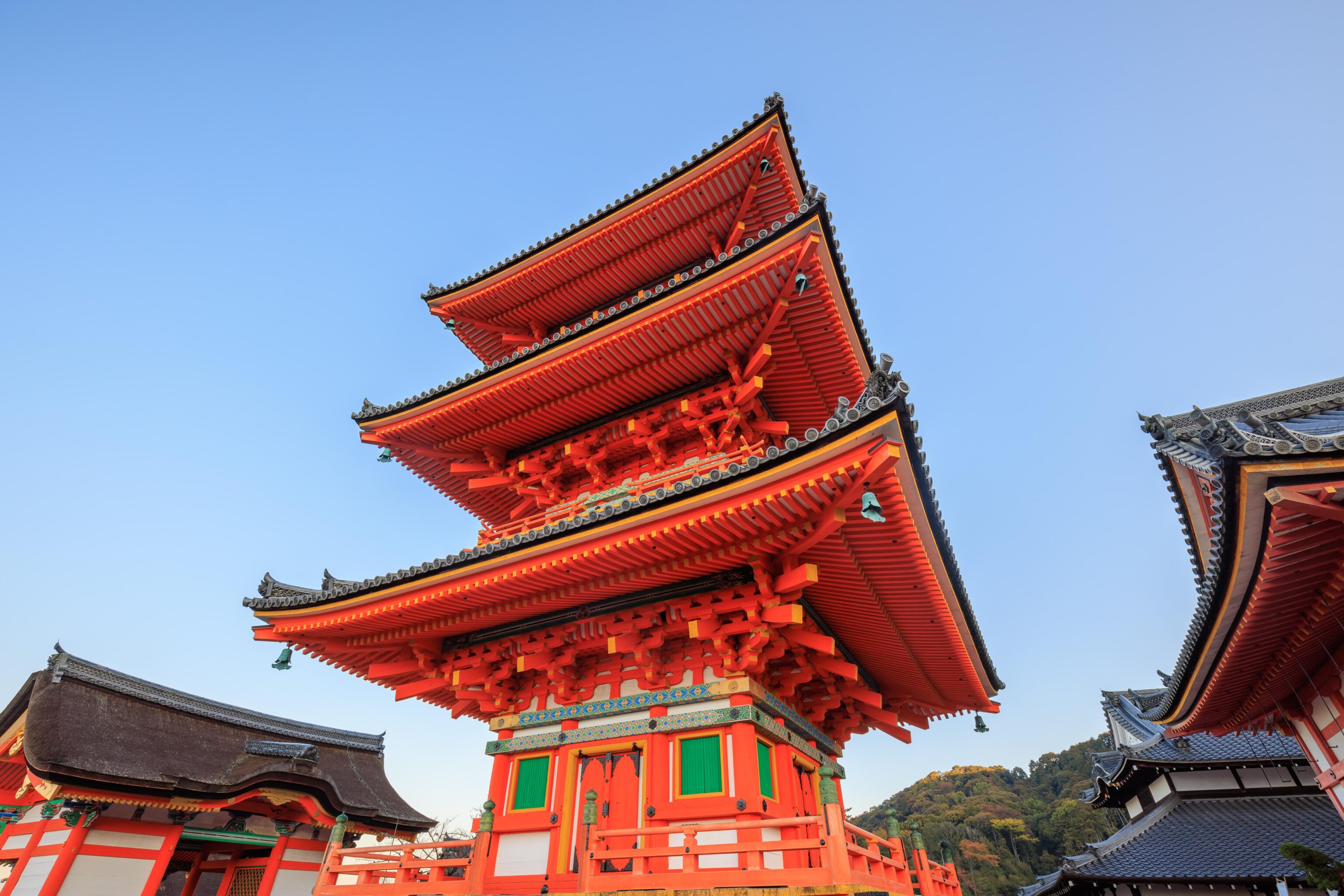
There is a three story pagoda mixed in with the other temple buildings. It’s name in English is simply the Three Storied Pagoda.
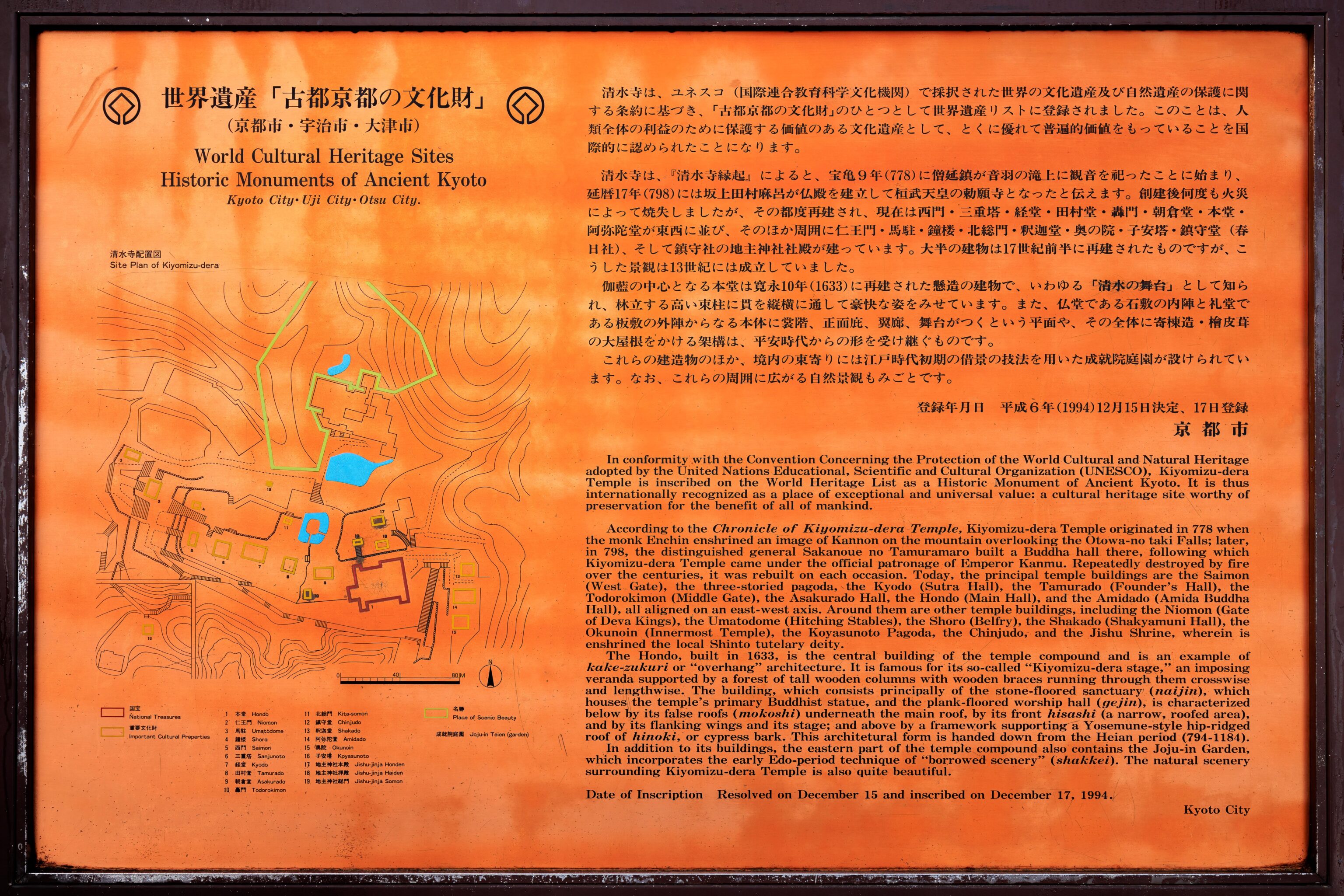
Kiyomizu-dera is part of the Historic Monuments of Ancient Kyoto (Kyoto, Uji and Otsu Cities) World Heritage Site, one of seventeen separate places that make up the site.
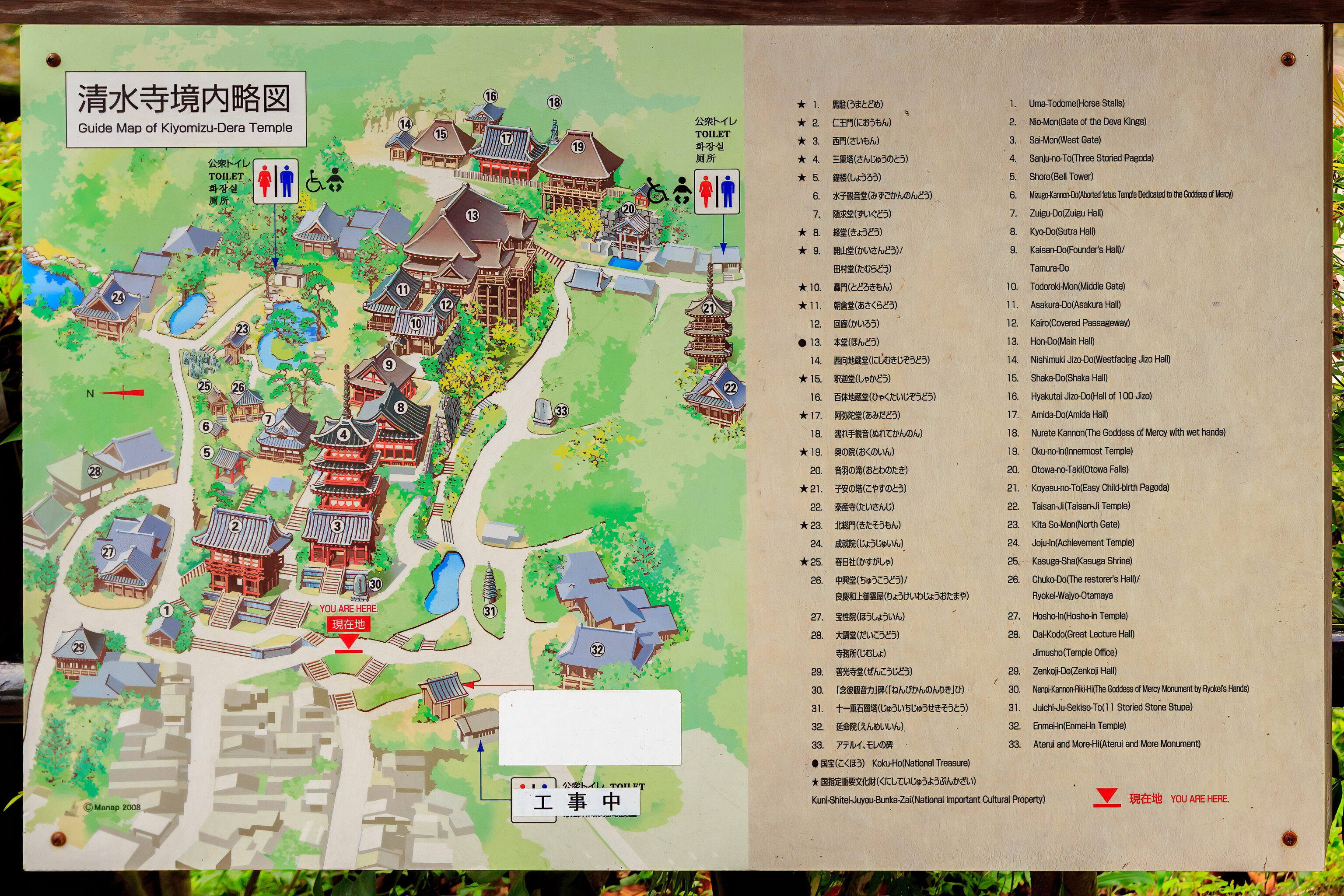
This sign is from a previous visit in 2016. Presumably, it is still here. The temple areas beyond #10, the Middle Gate, require a ticket to enter. This map, while rather detailed in identifying all the relevant buildings in the temple, is ridiculously not to scale. The ticket sales area is around building #9, the Founder’s Hall.
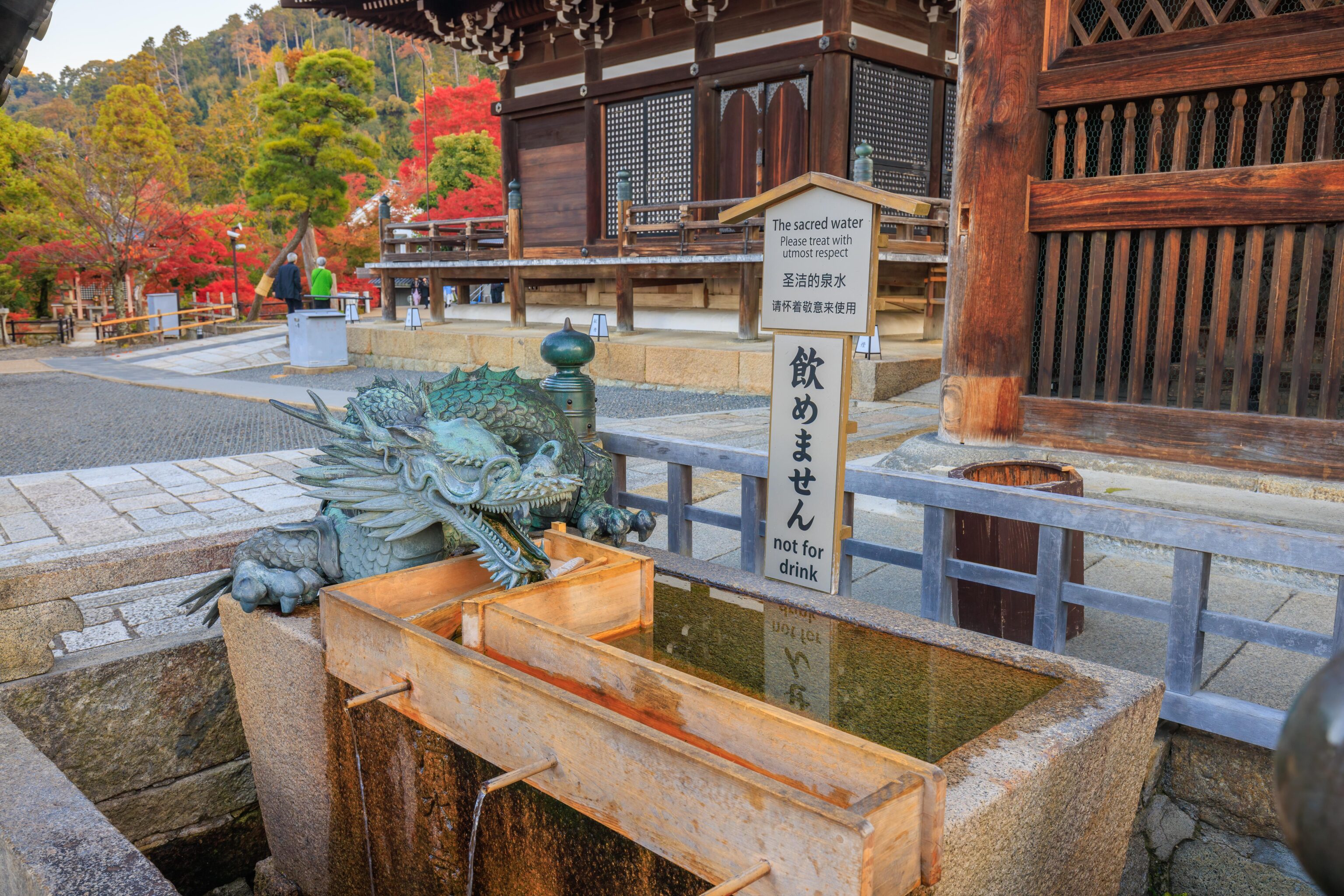
Japanese temples and shrines have a place for purification, basically, symbolically washing your hands and mouth. Yakult, surprisingly as it is the manufacturer of a drink popular in Japan and Taiwan and likely other Asian countries, has a great graphic of the process on their How to Visit a Shrine or Temple page. They come in all sorts of shapes and sizes. This one is a bit fancy in that the water comes out of a dragon’s mouth.
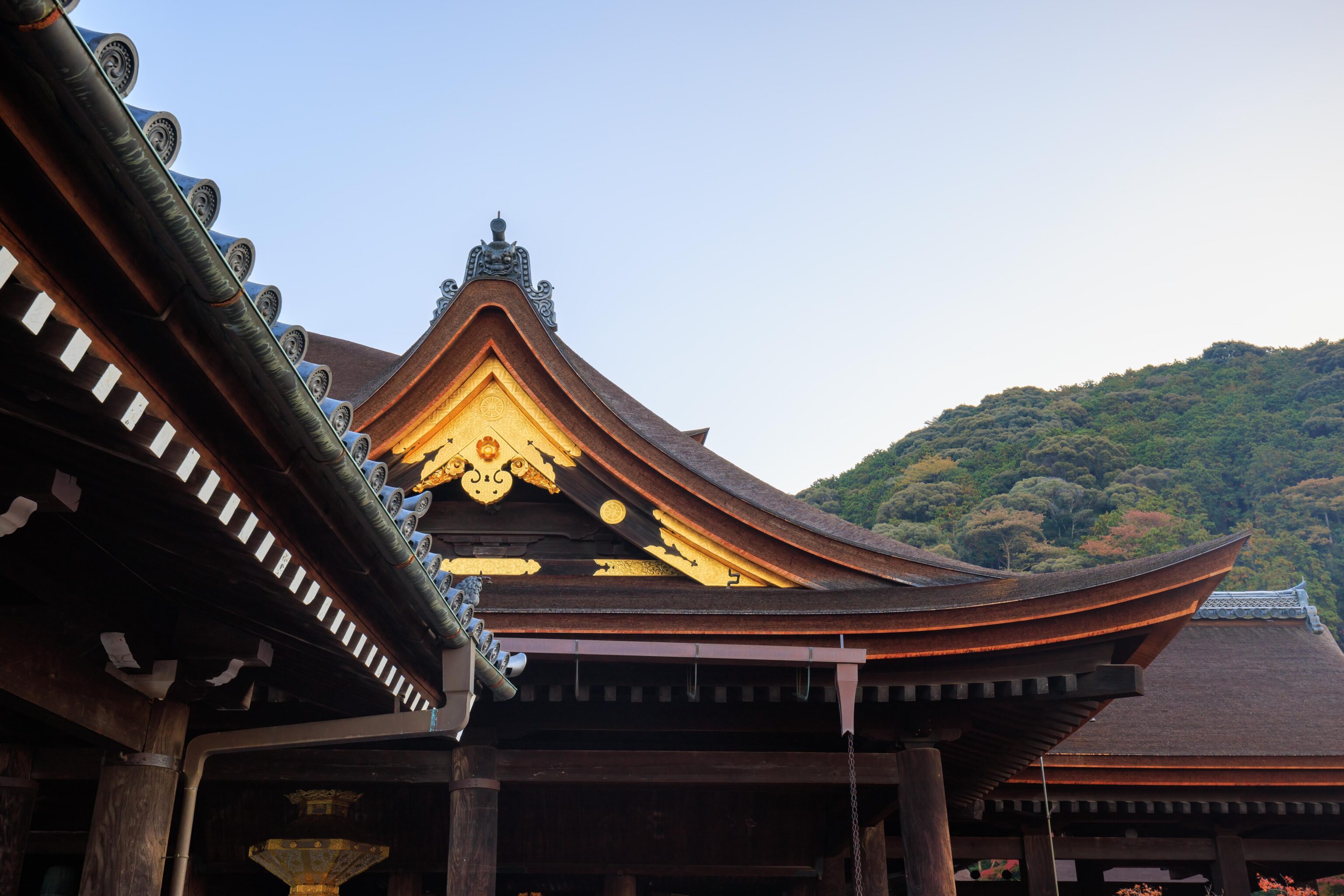
Just beyond, we reached the main hall.
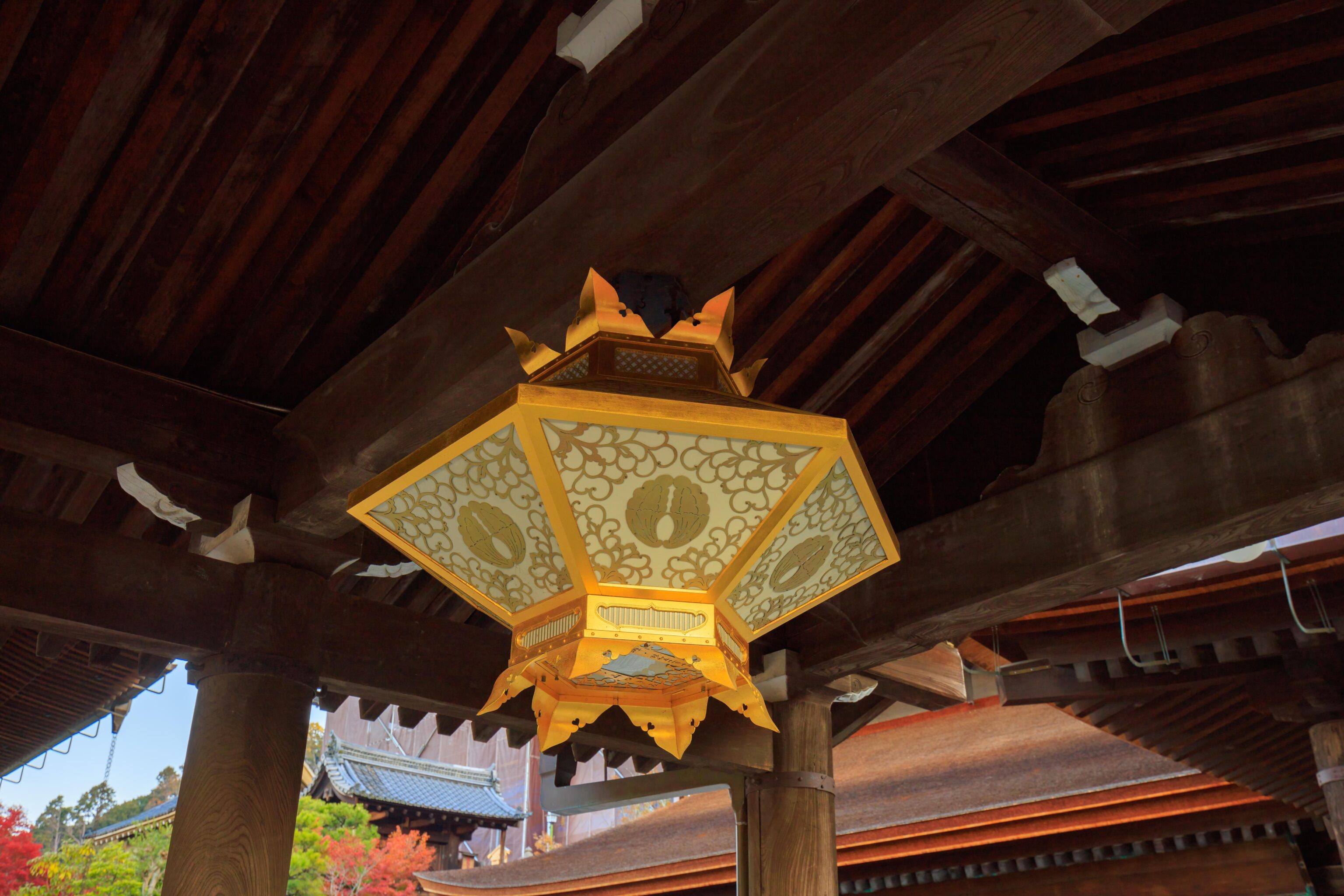
It has some nice gilded lanterns!
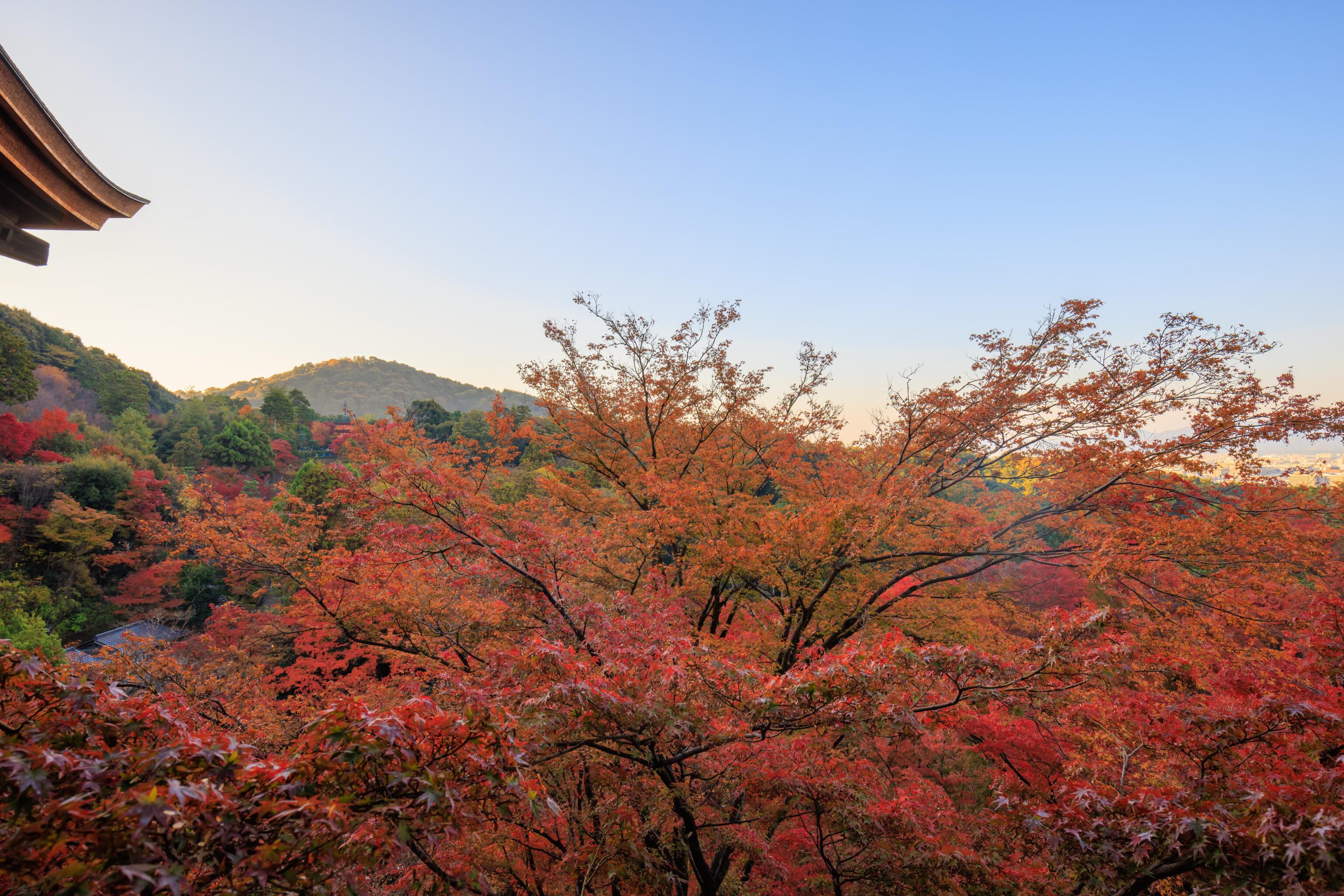
Looking to the south, just by the entrance, our view was primarily of Japanese maple trees! Japanese maples differ from the ones in the western world in that they have tiny leaves.
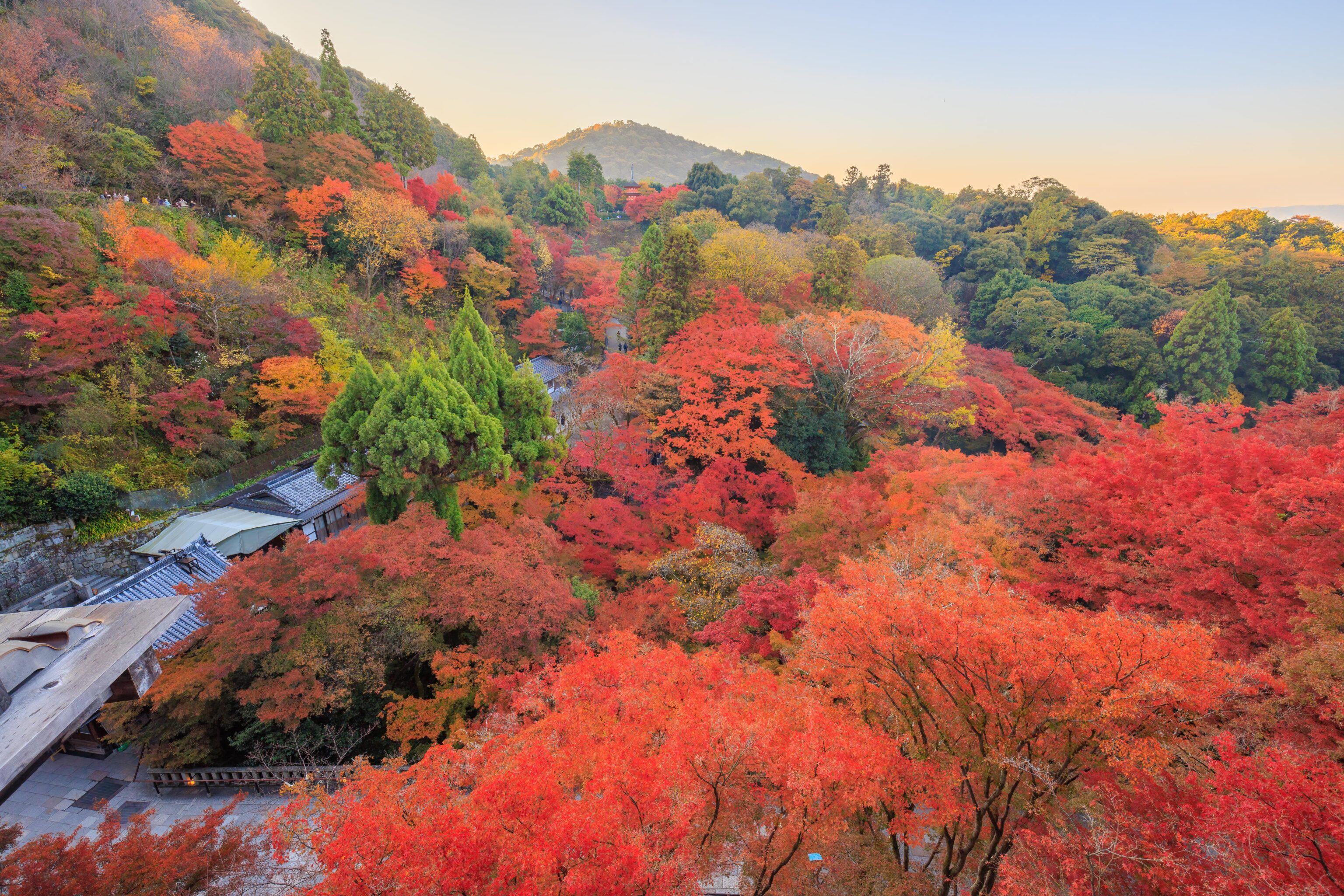
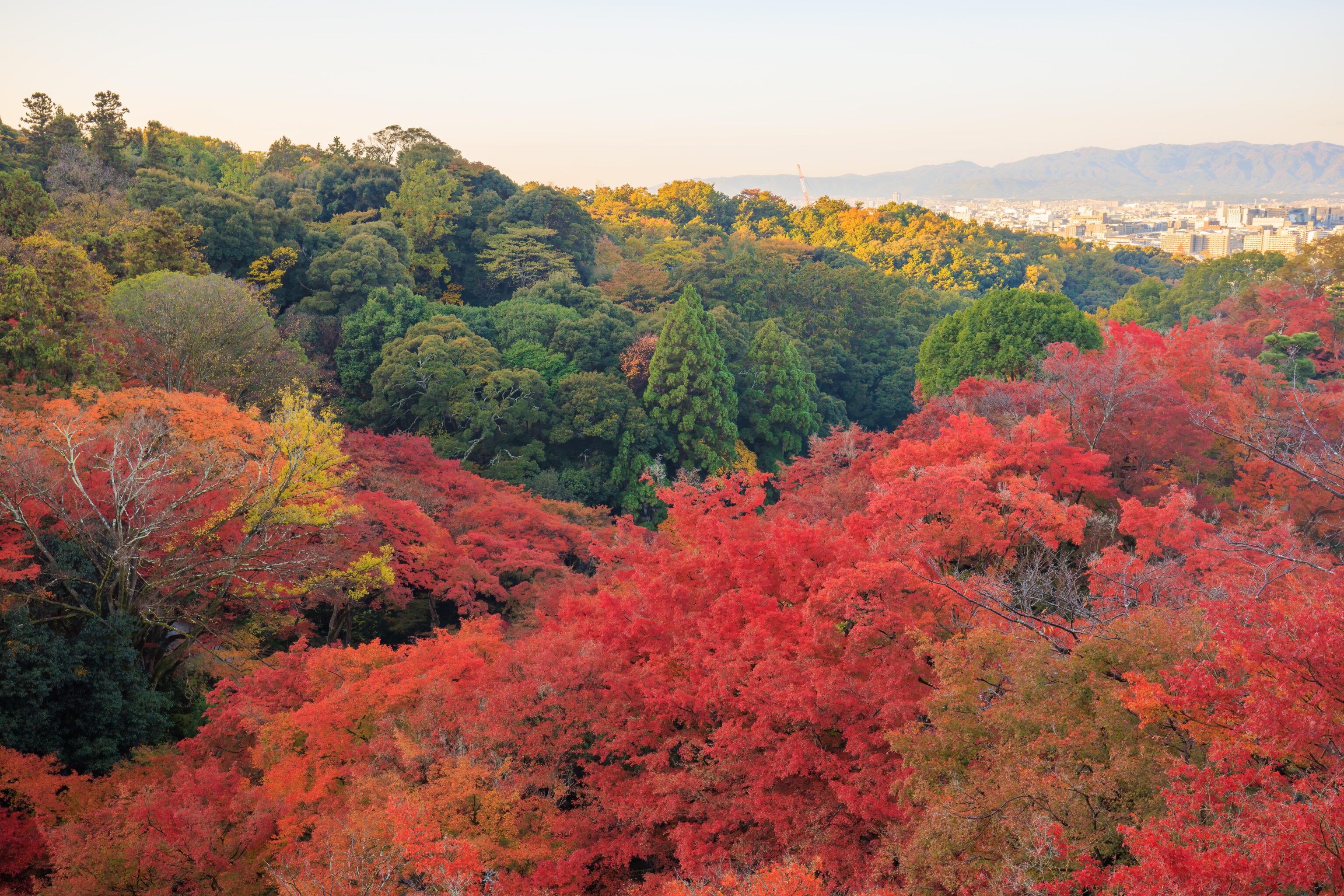
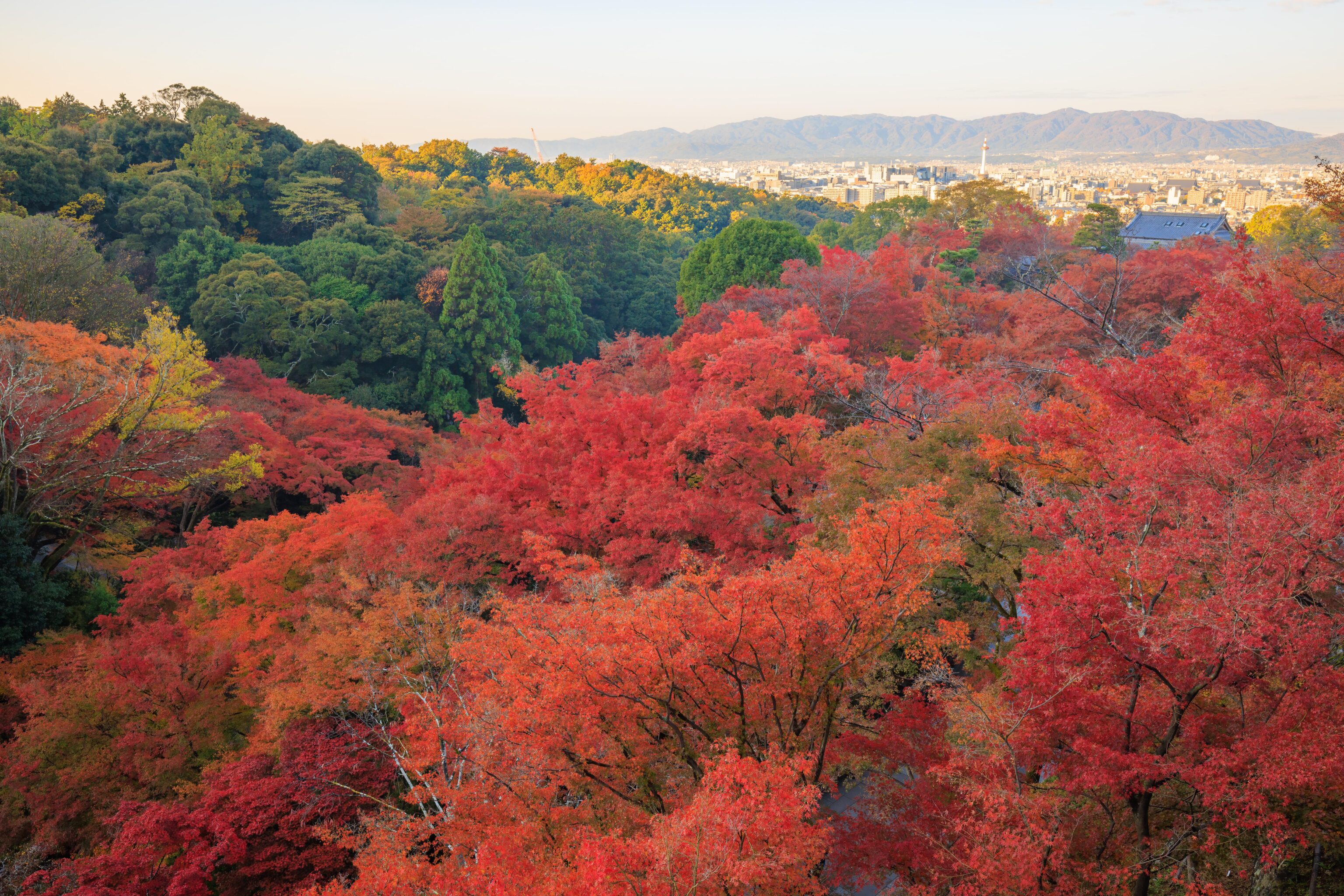
The main hall has a large outdoor terrace, often referred to as a stage, that faces the forest of maples below. We walked around to get different views.
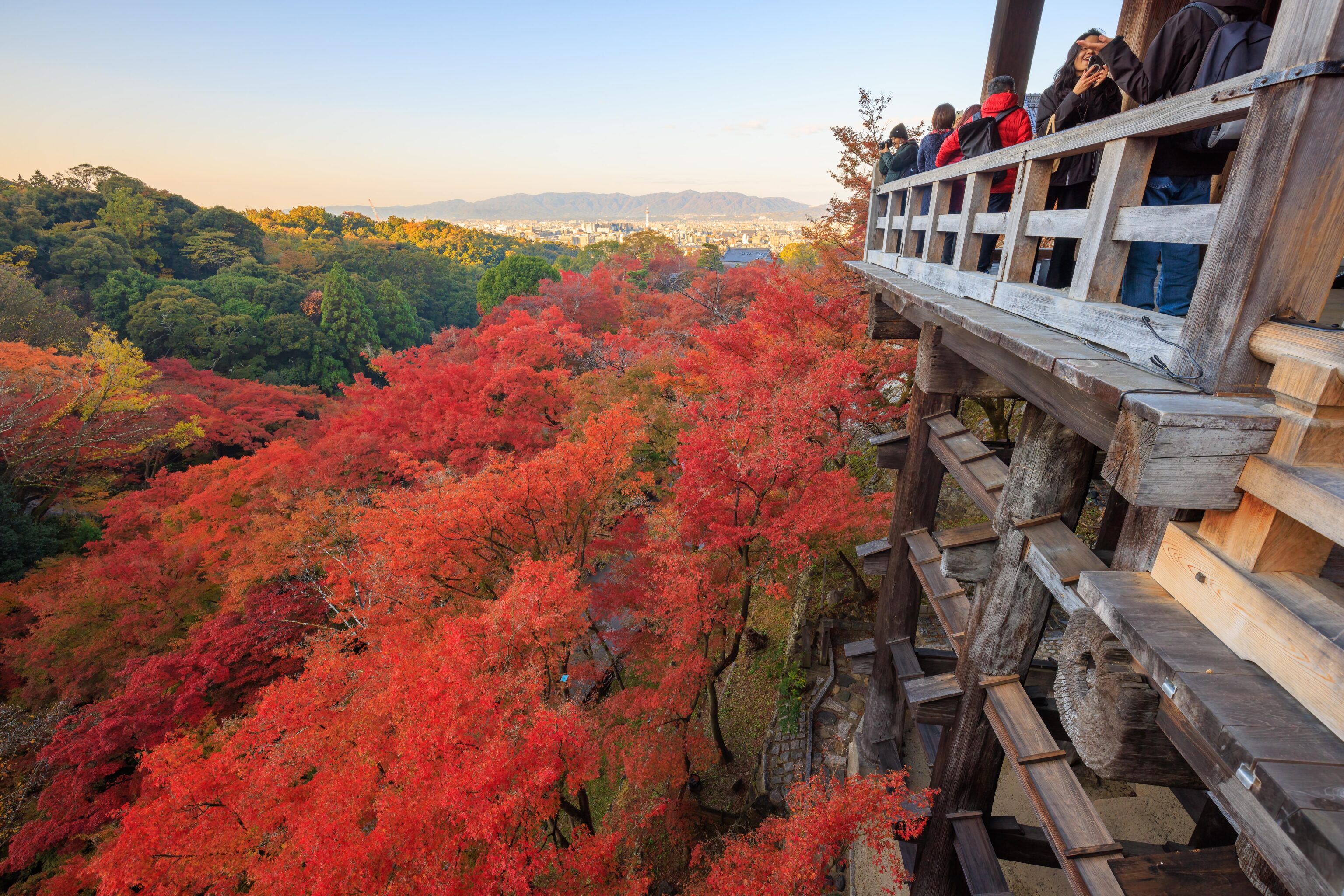
The terrace is supported by a wooden structure below, dating back to the 16333! It is built completely without nails4.
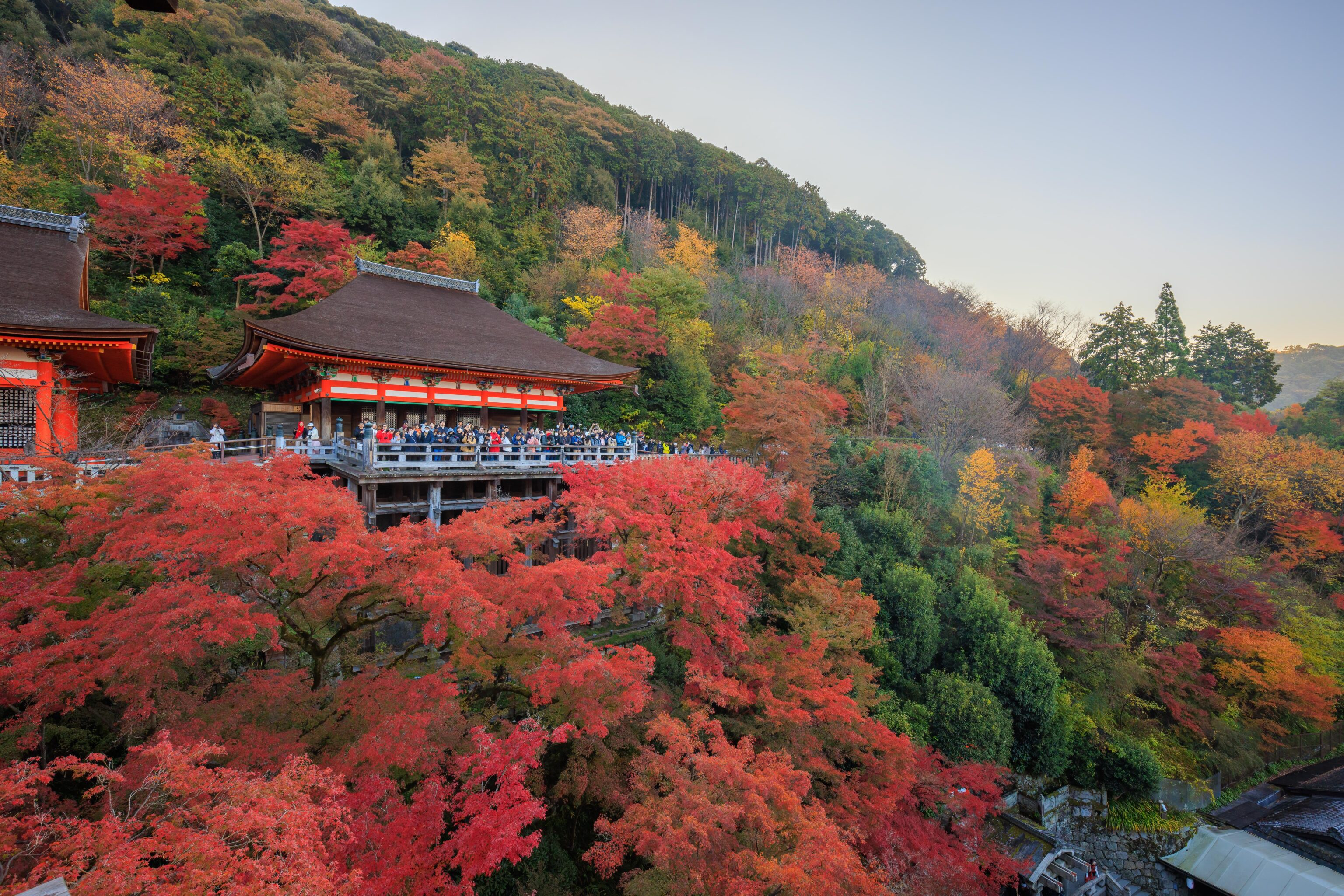
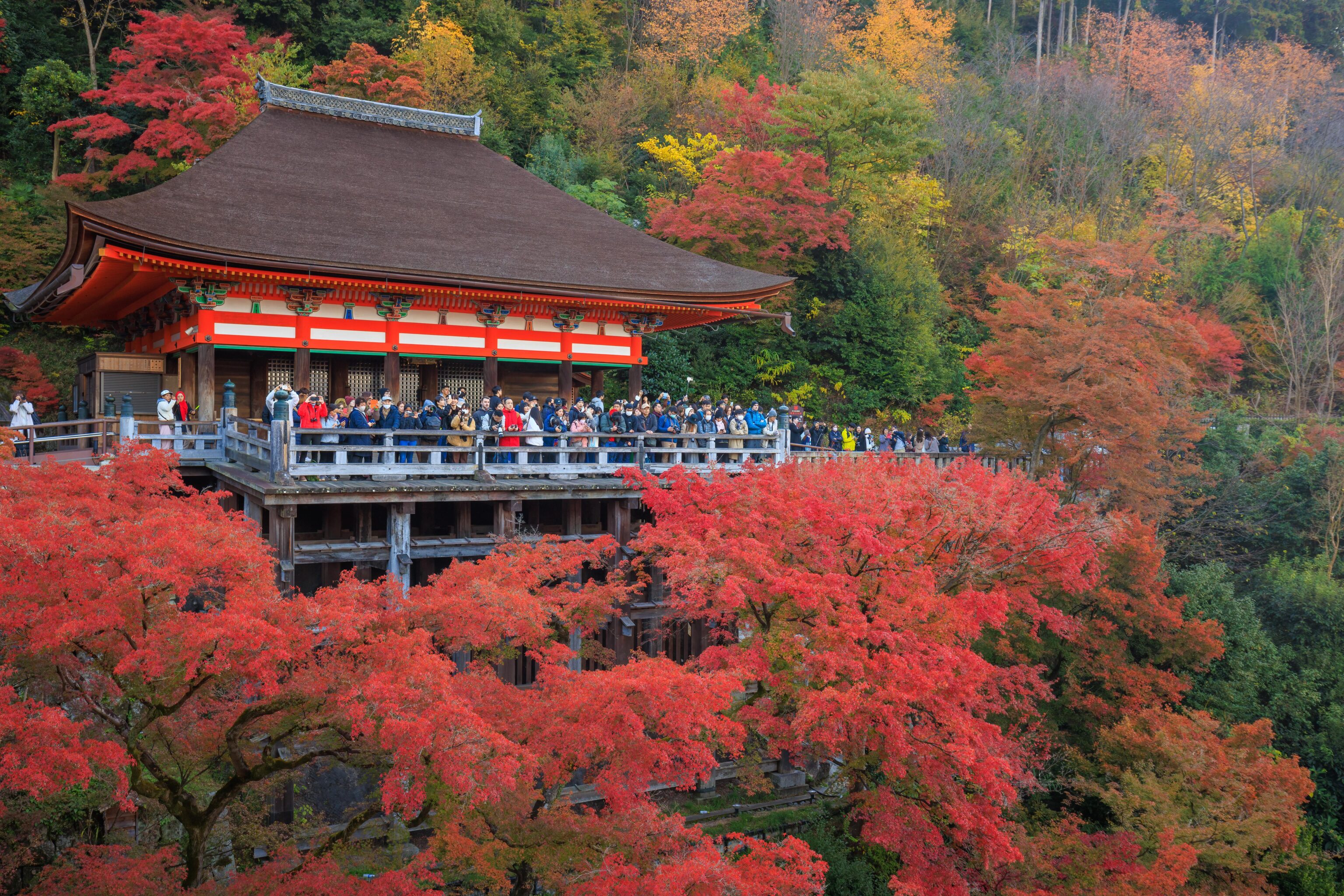
This building to the east of the Main Hall is the Okuno-in Hall. It boasts the most famous view at Kiyomizu-dera from the terrace in front. It was already crowded, even at this early hour! The Kiyomizu-dera website provides a brief description of this building5:
Okuno-in Hall stands directly above Otowa Waterfall. The present building was rebuilt at the same time as the Main Hall in 1633. Okuno-in also boasts a spacious stage constructed using a unique method, just like the Main Hall. The stunning view of the Main Hall stage and the Kyoto cityscape from here make it a favorite photo opportunity for visitors.
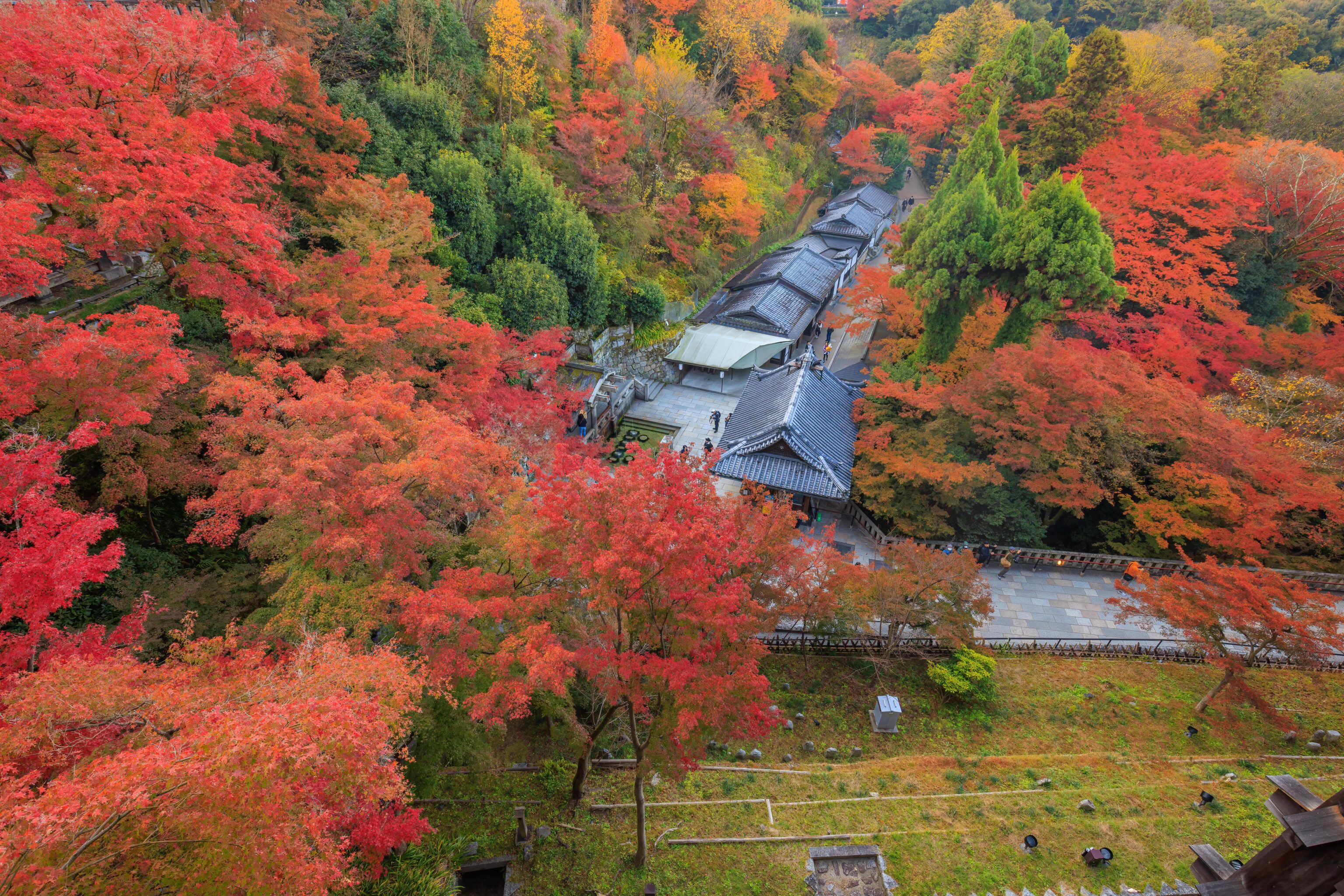
The path through Kiyomizu-dera is a loop, though there isn’t really anything preventing someone from backtracking all the way back to the entrance. The path can be seen below the Main Hall. It looks a bit like a valley but is part of the side of Kyoto’s eastern mountains.
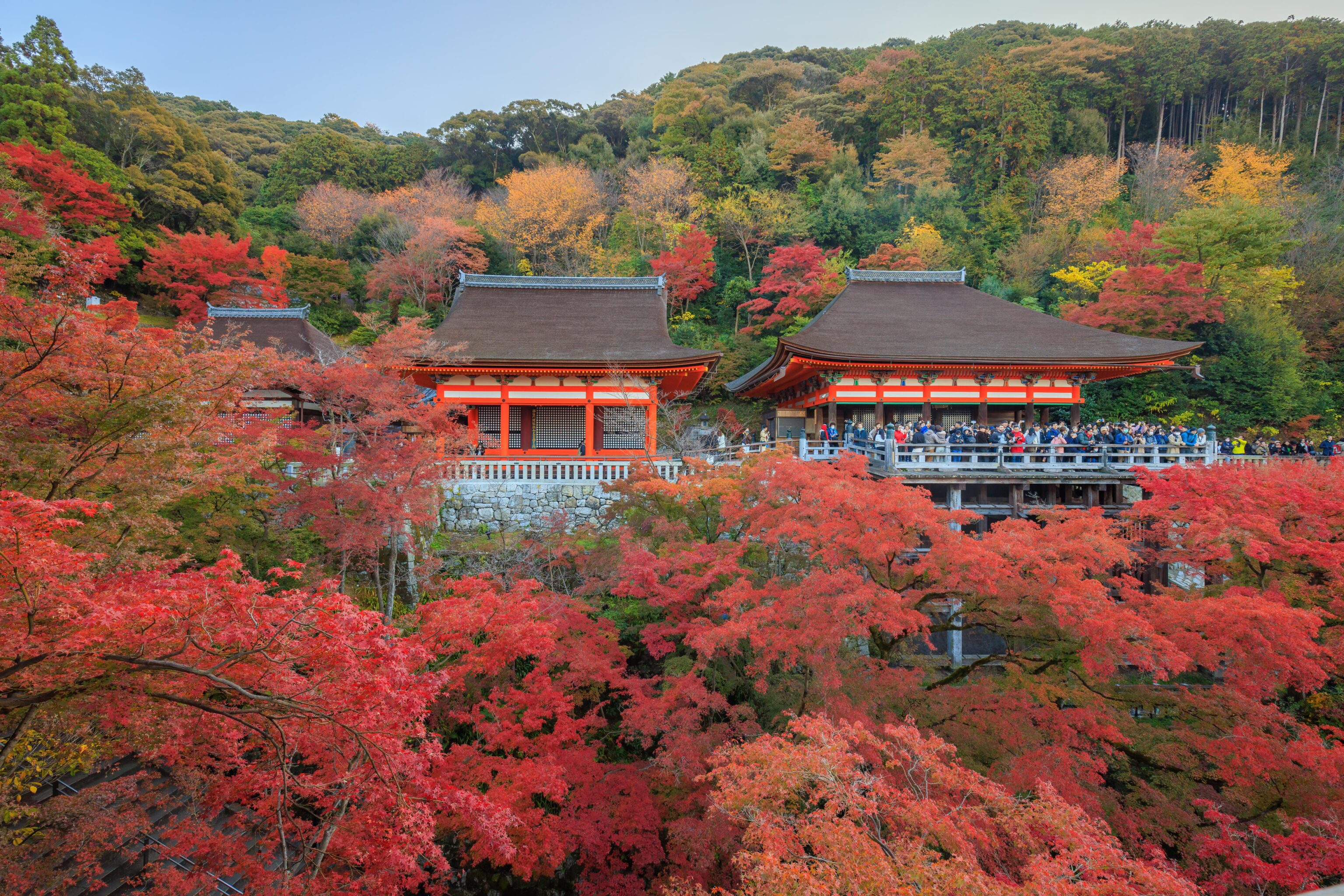
The Okuno-in Hall again, with two other temple buildings to the left. From left to right, they are the Shaka-do, Amida-do, and the already identified Okuno-in.
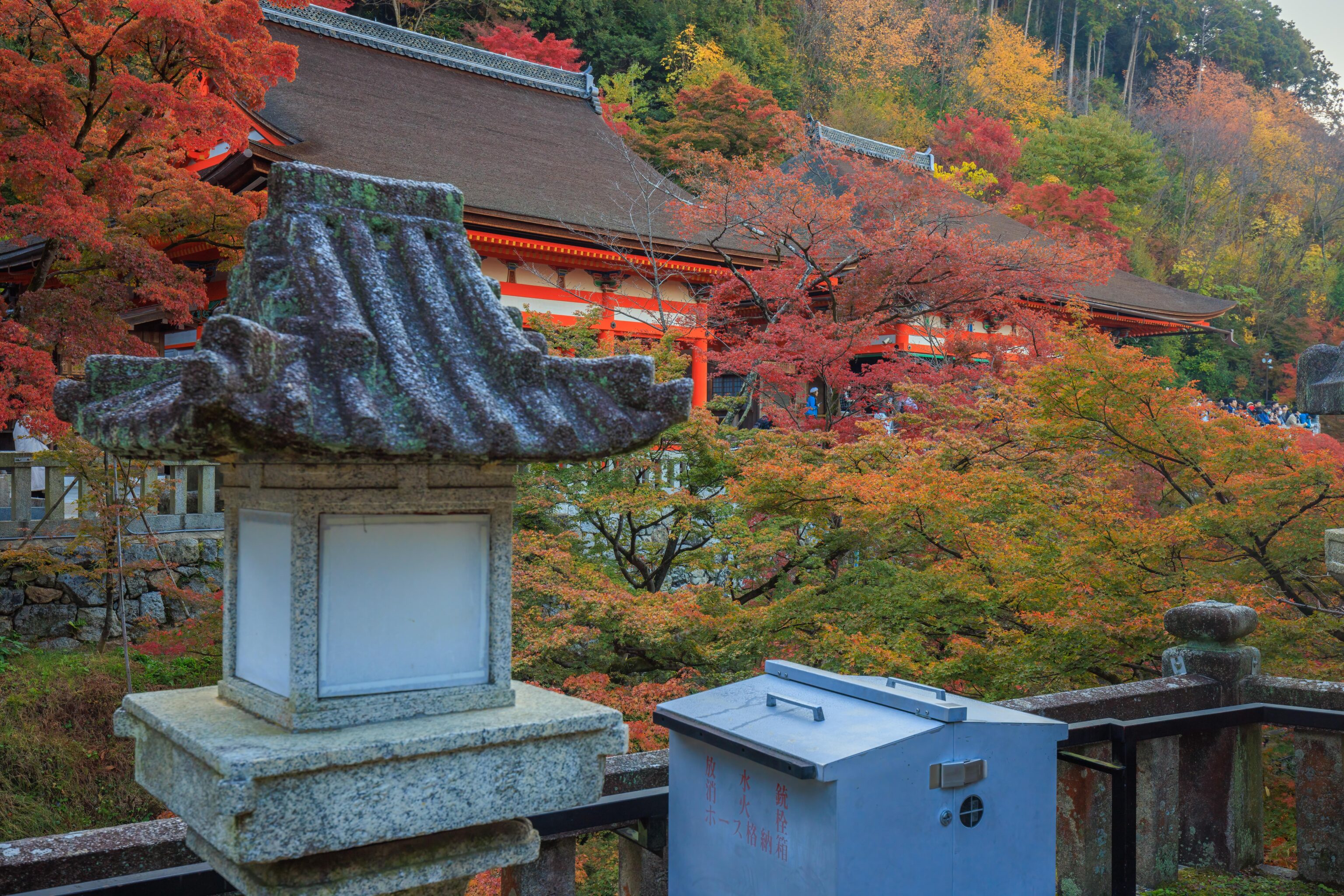
We continued on the route, reaching the northeast corner of the Main Hall. From here, we could see the Okuno-in beyond some trees.
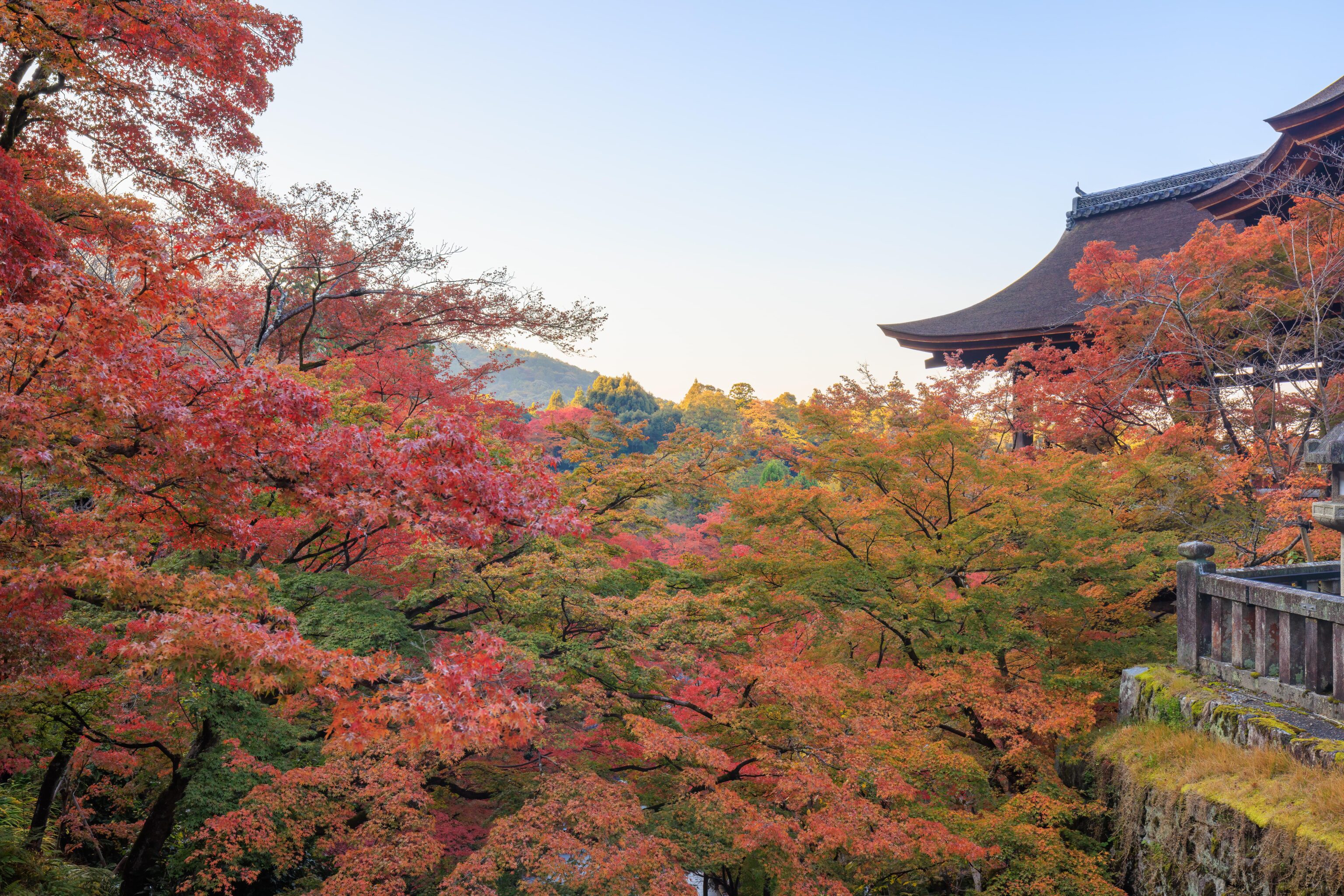
From the Main Hall, we walked on a short path to the east. There are stairs below us here that descend on the side of the mountain.
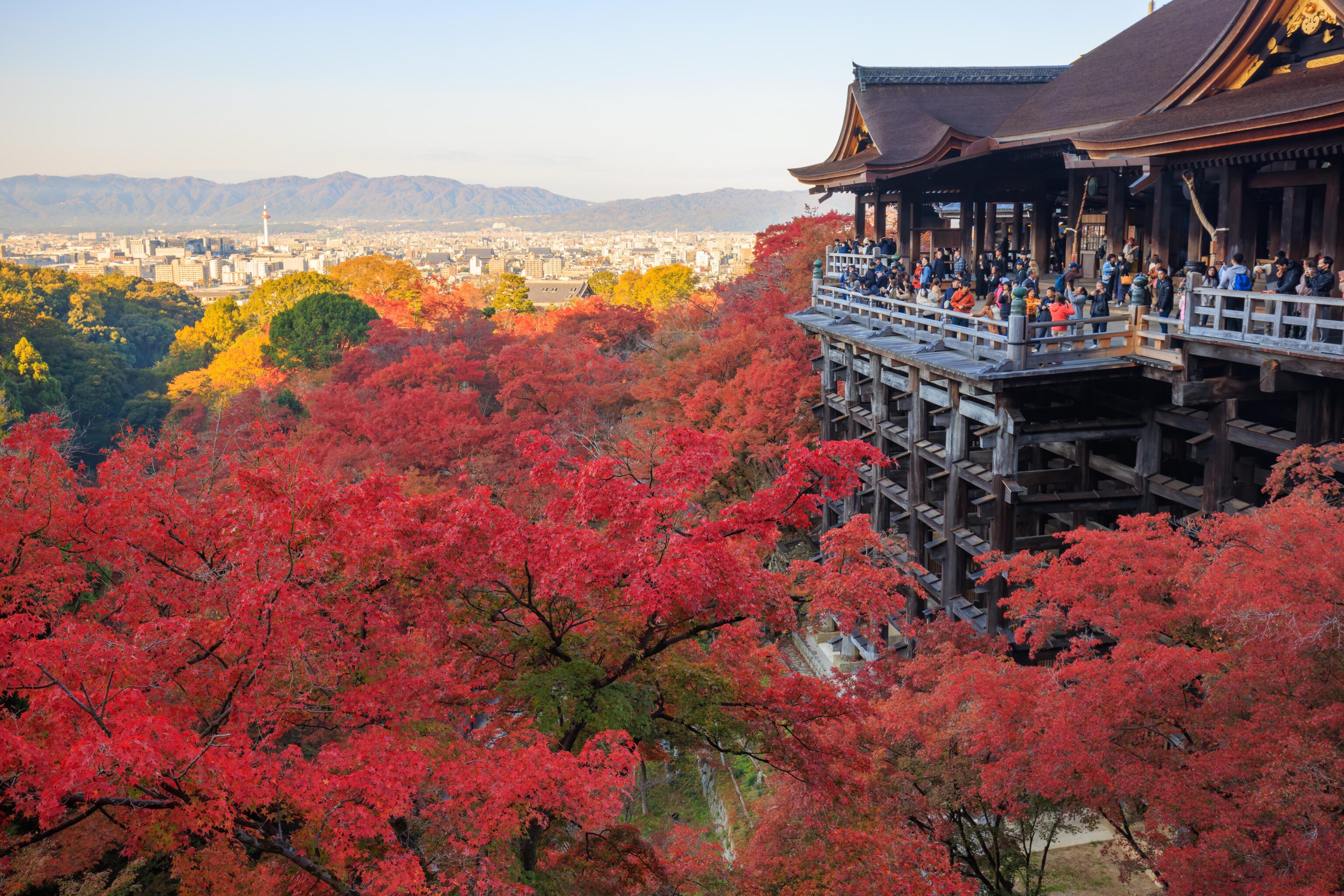
Finally, the famous view from Okuno-in! The much larger Main Hall can be seen on the right. The ground below is covered by beautiful Japanese maple trees. Unfortunately, at this early hour, the maple trees below were still in the shadows of the eastern mountains.
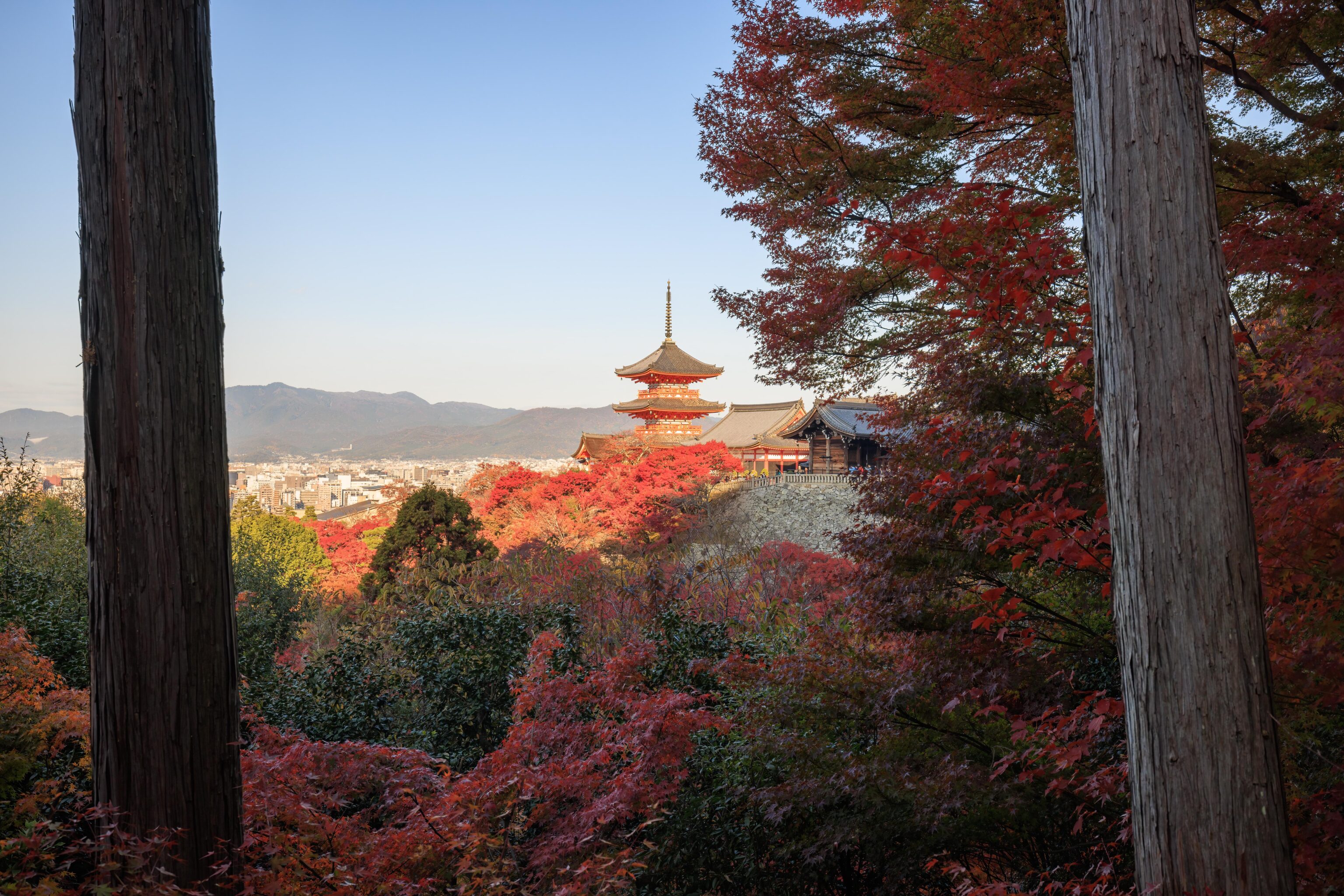
We continued on, deciding to come back later when the sun was in a better position to illuminate the trees. The path leads to the south, mostly flat and clinging to the side of the mountain. At one point, we were treated to a nice view of the Three Storied Pagoda.
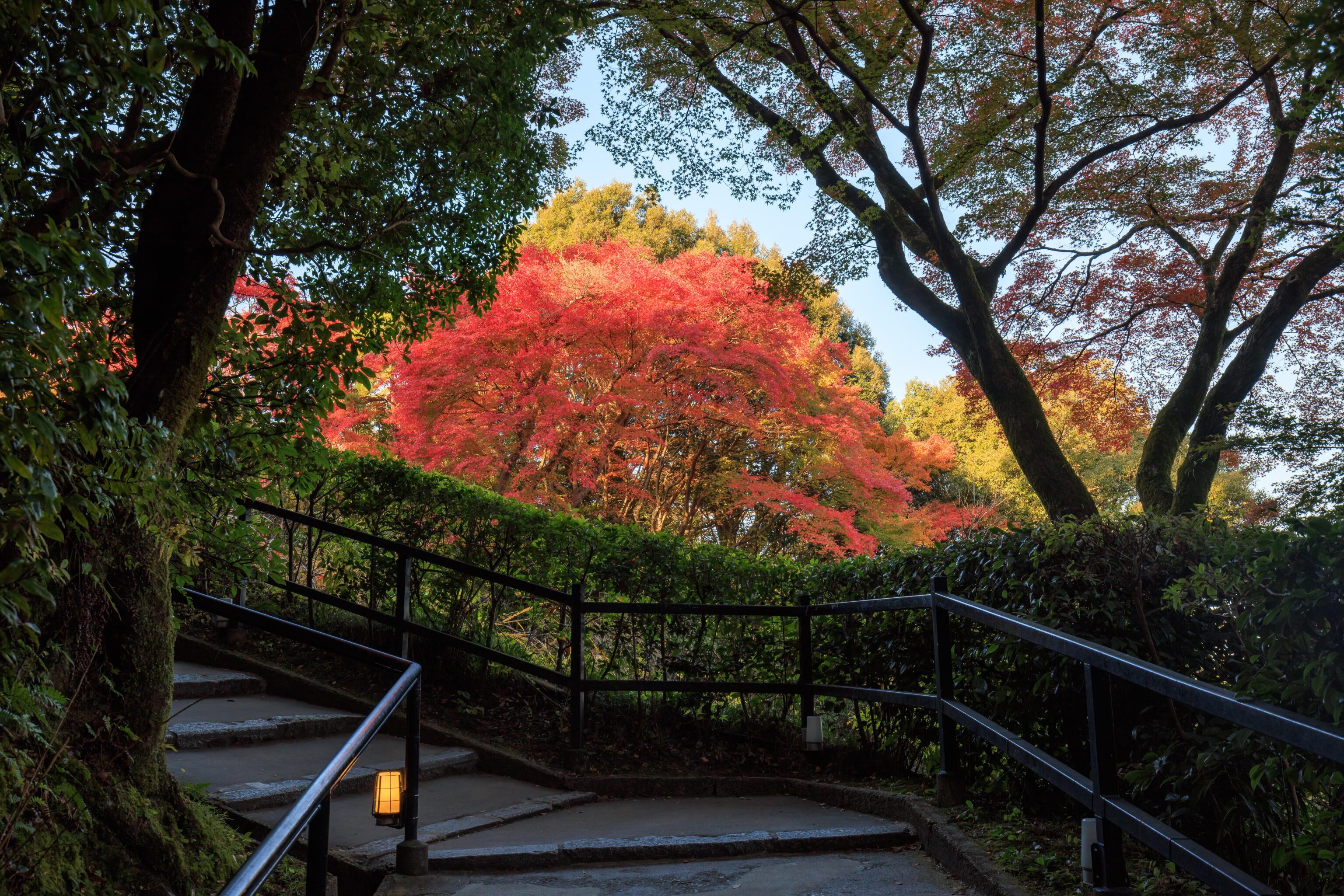
After going as far south as possible, a side path leads up some stairs to the Koyasu Pagoda.
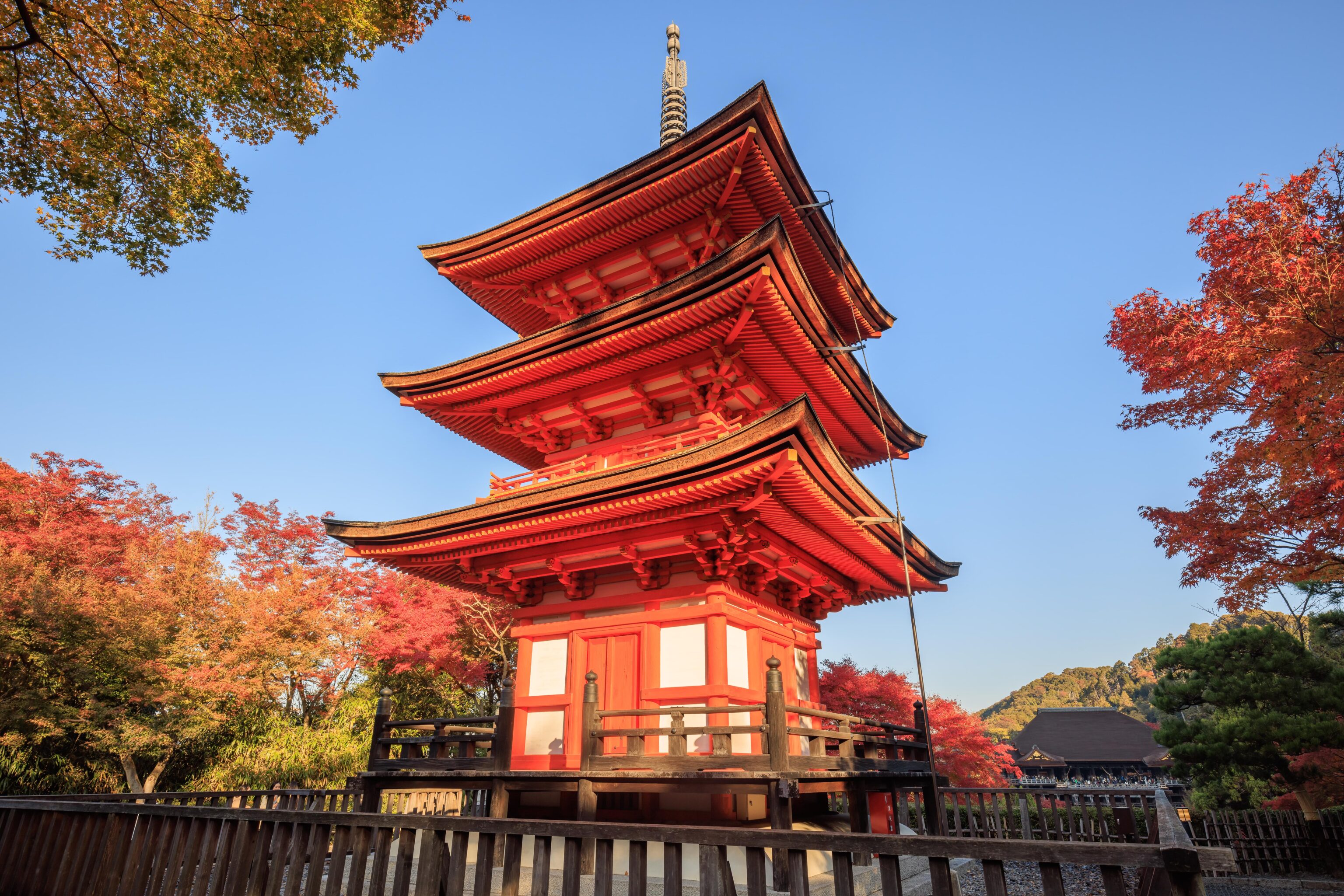
Here it is, the Koyasu Pagoda! This area was relatively uncrowded, particularly compared to the Main and Okuno-in Halls. From this perspective, the Main Hall can be seen in the background. Likewise, this pagoda can be easily seen from the Main Hall and Okuno-in. It did appear in a previous photo above but it was tiny in a wide angle photo.
This pagoda is translated as the Easy Child-birth Pagoda on the map. Japan has various temples, shrines, etc, that are dedicated to very specific things. This is a place to go to pray for a successful pregnancy6.
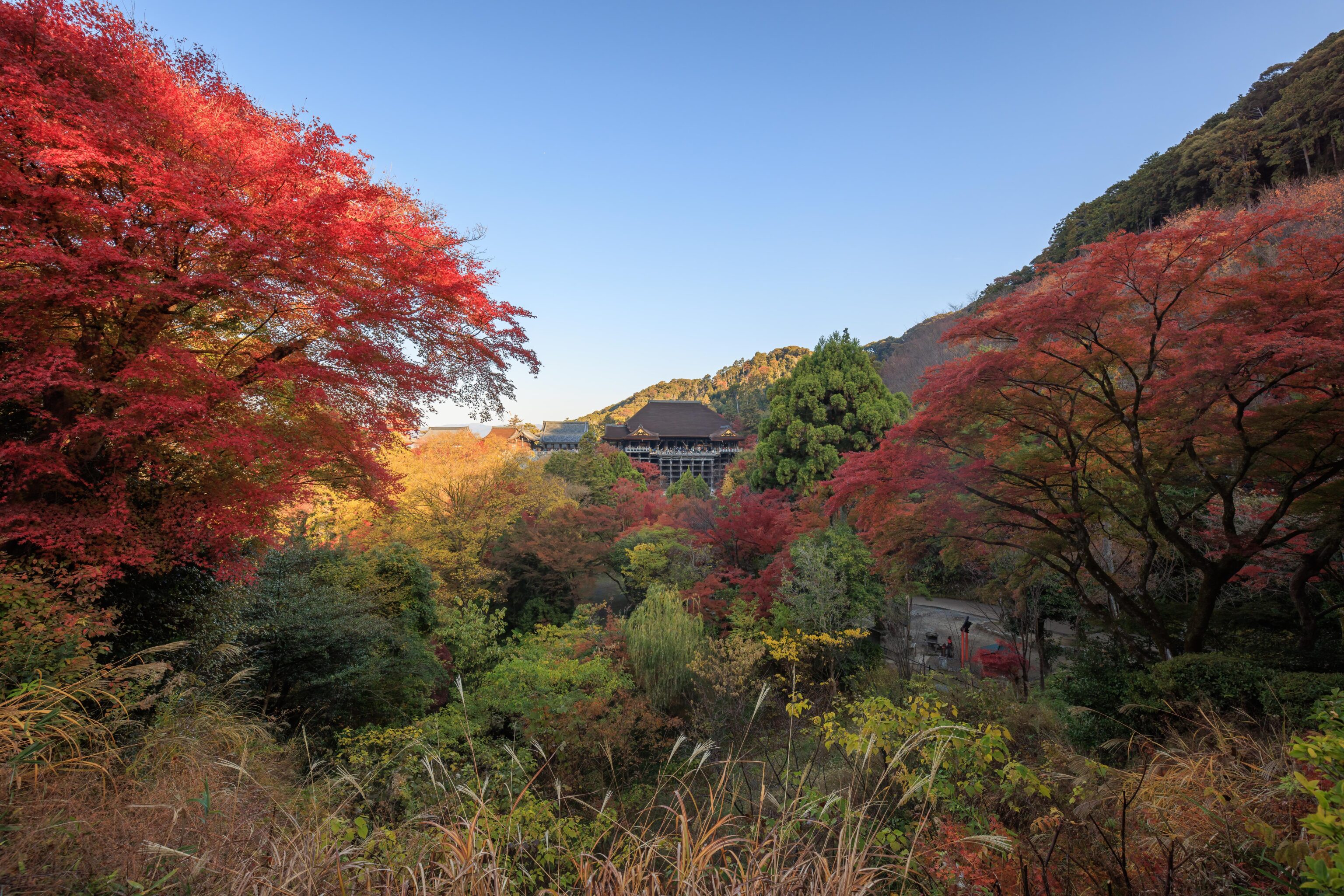
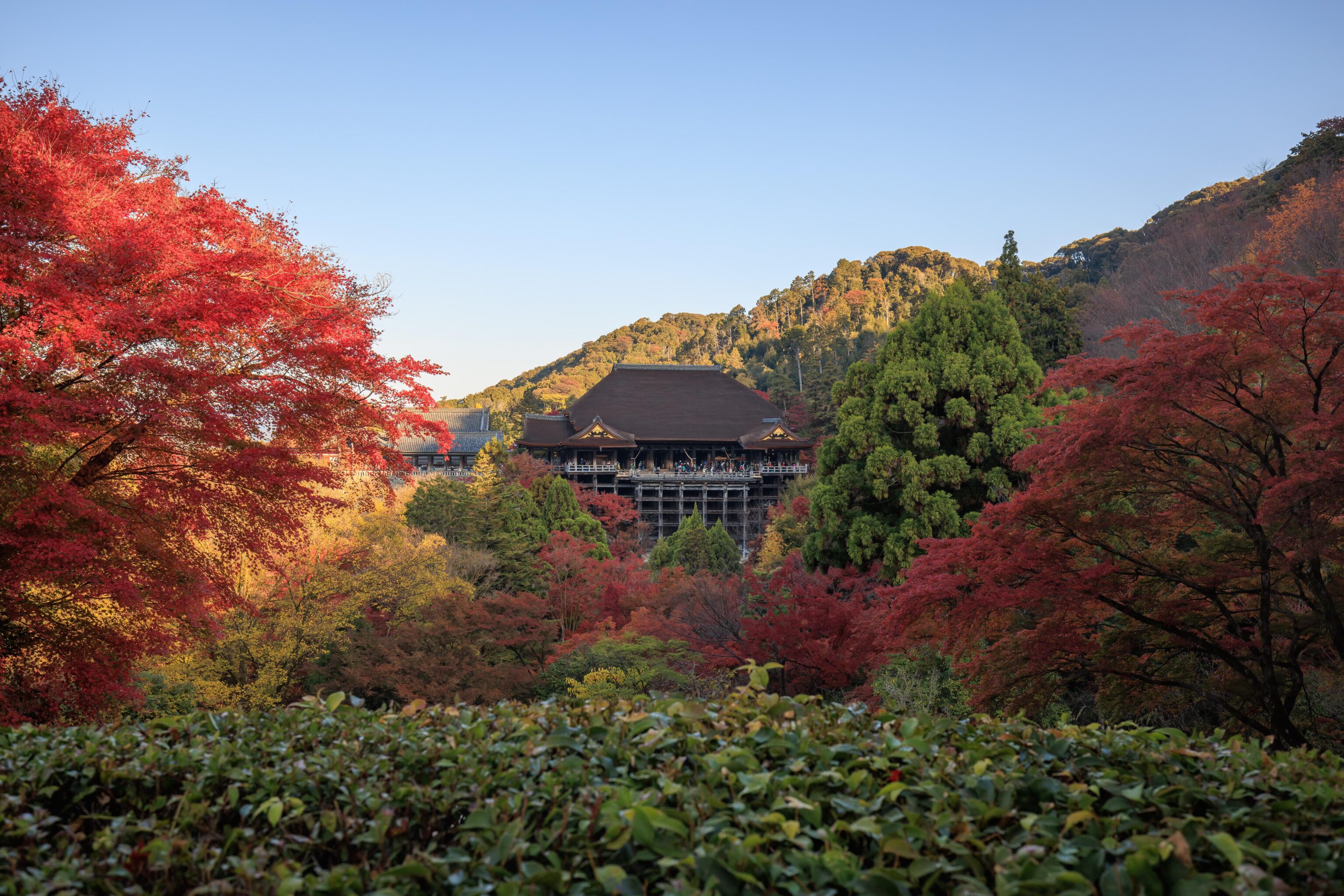
This is how the Main Hall appears when looking directly at it. Note the wooden structure supporting the terrace!
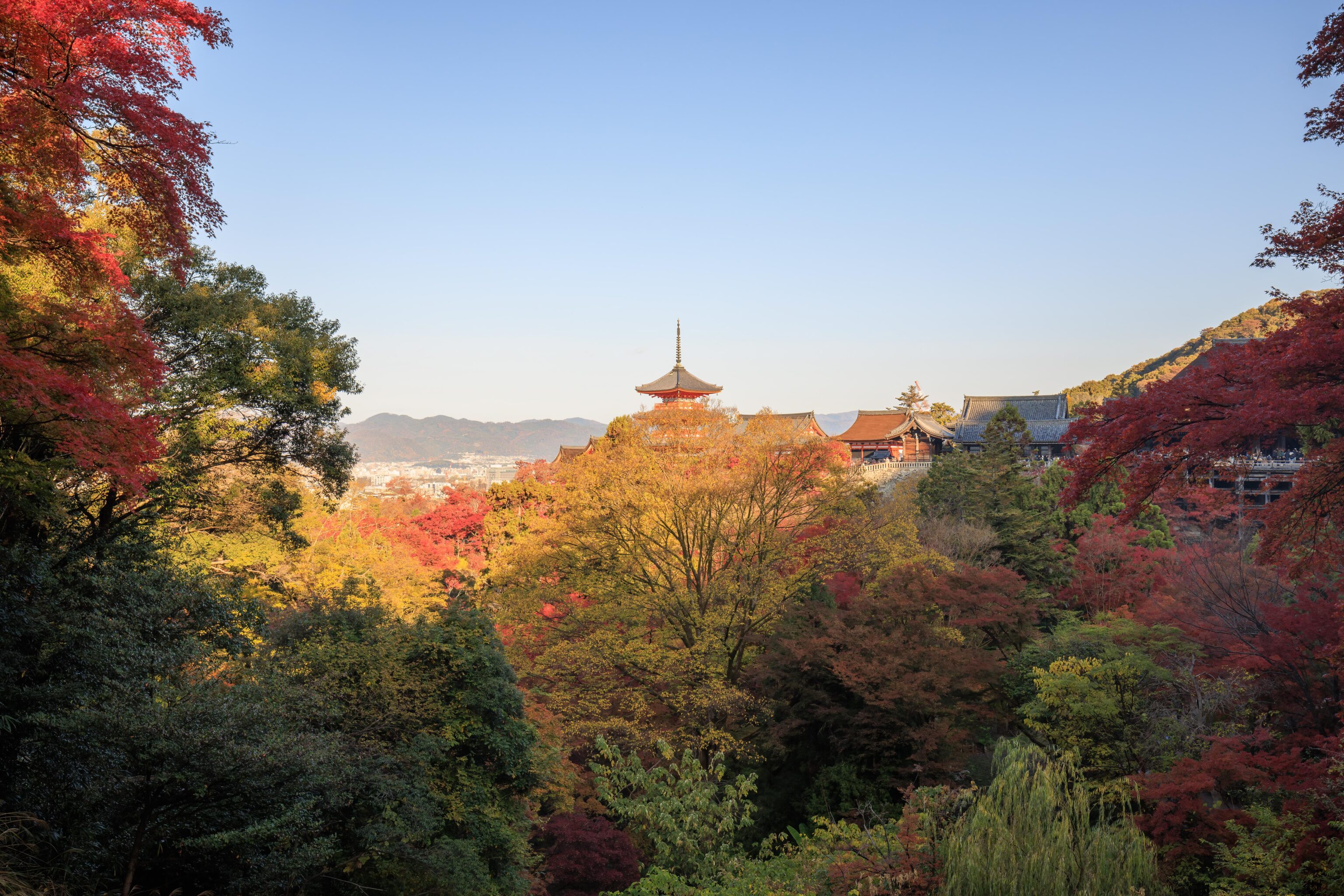
The Three Storied Pagoda can also be seen from here.
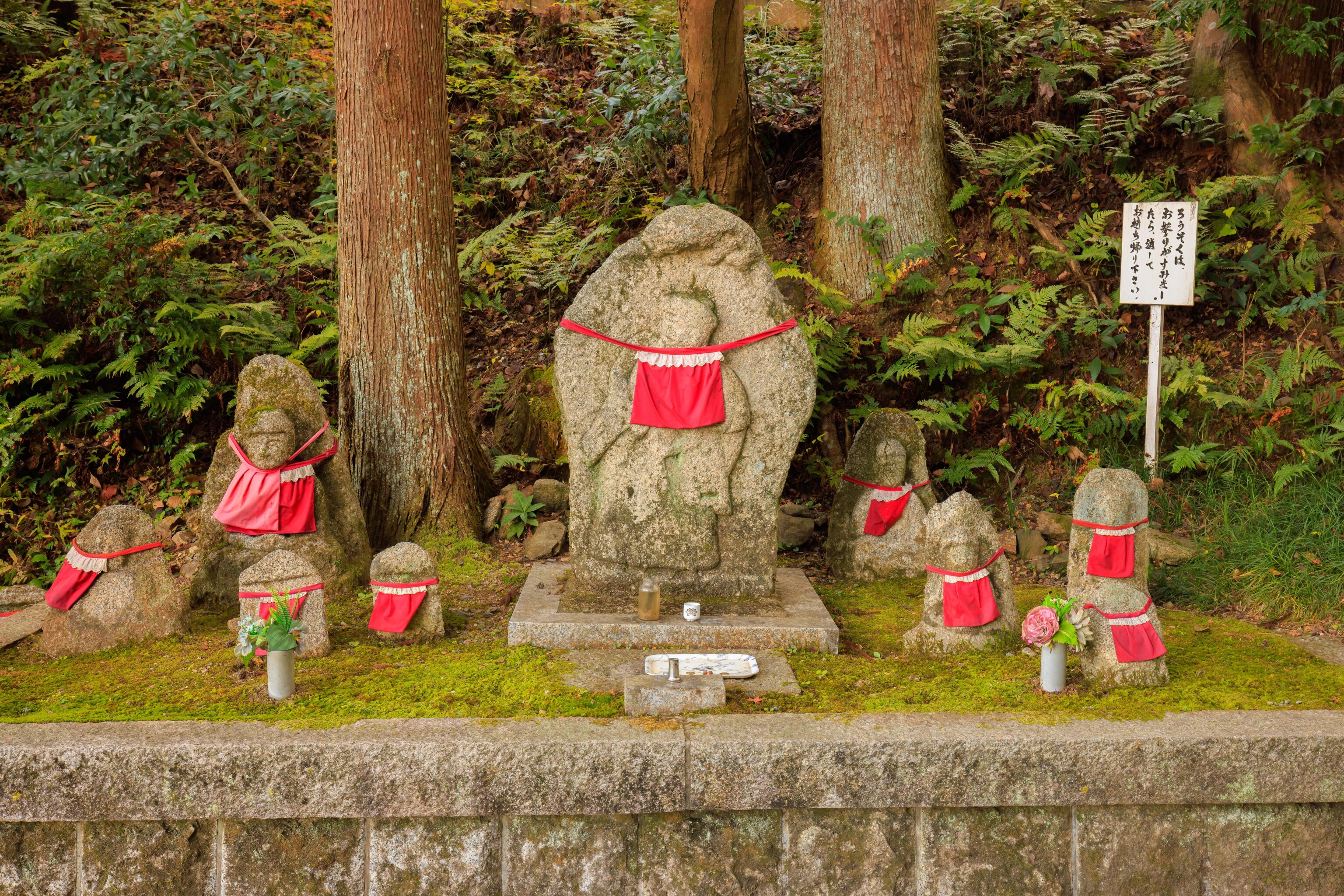
Little shrines like these are everywhere in Japan. The small stone statues may be Jizo statues. These statues are generally described as existing to protect the spirits of children who have died, and sometimes also to protect travelers7.
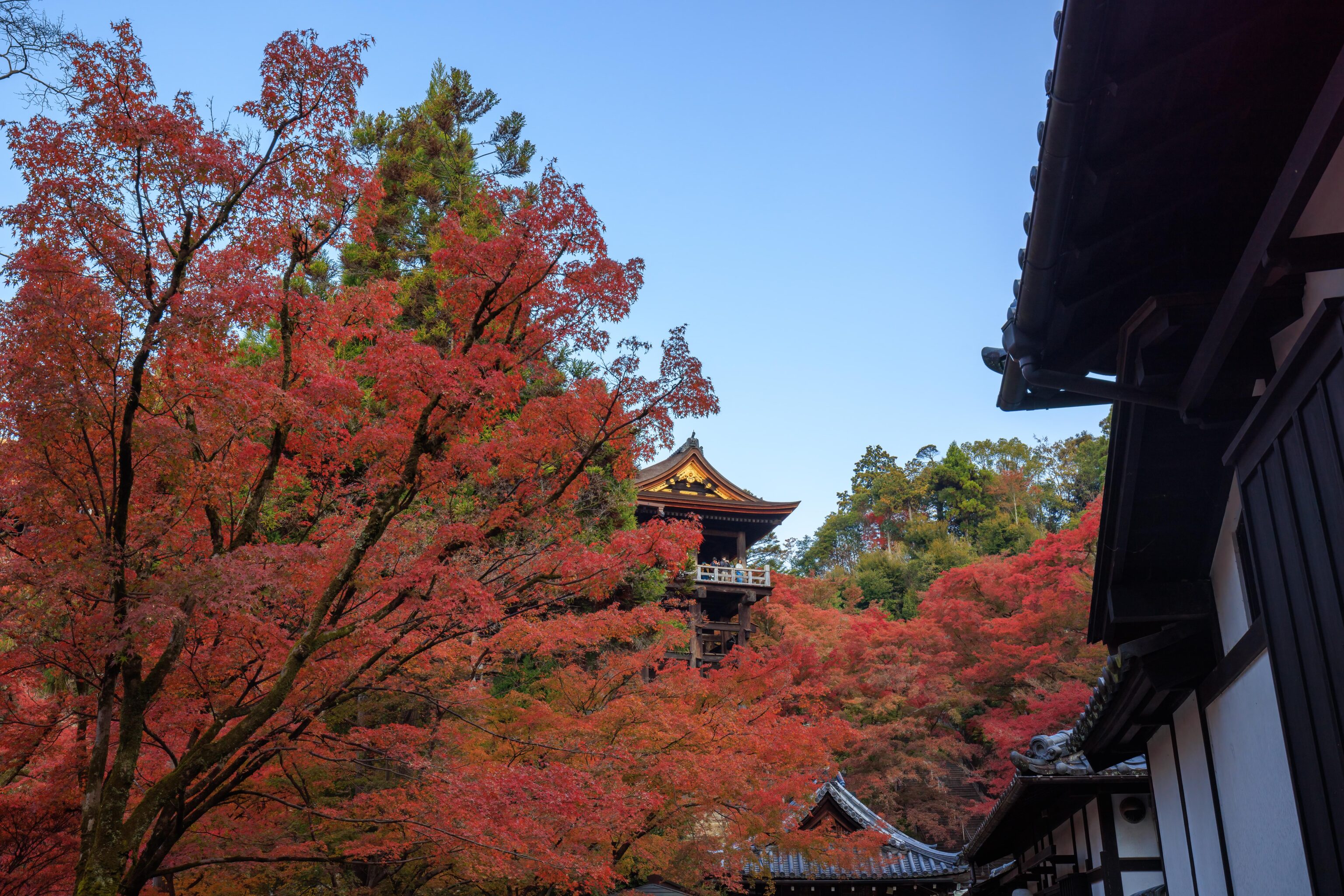
The path descended steeply until we were below the Okuno-in. In front of us, we could see part of the Main Hall, though most of it was hidden by the fall foliage.
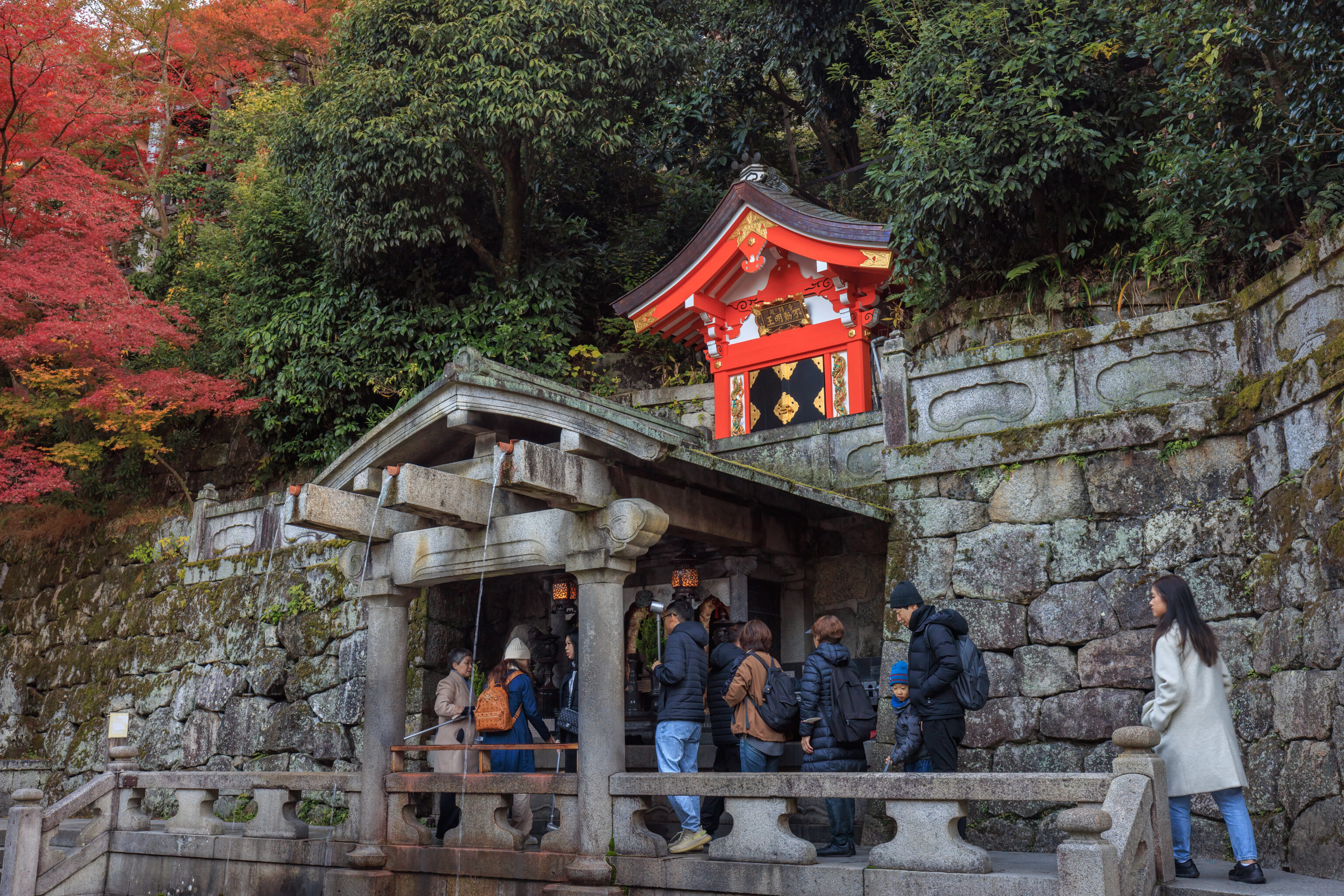
The Otowa Waterfall is below the Okuno-in. Functionally, it is a washing station like the one we saw earlier, however, it is much more elaborate. Water flows down from above, creating three tiny waterfalls. A very long handle with attached cup is used to access the water. It is similar to smaller stations, just with much a longer handle!
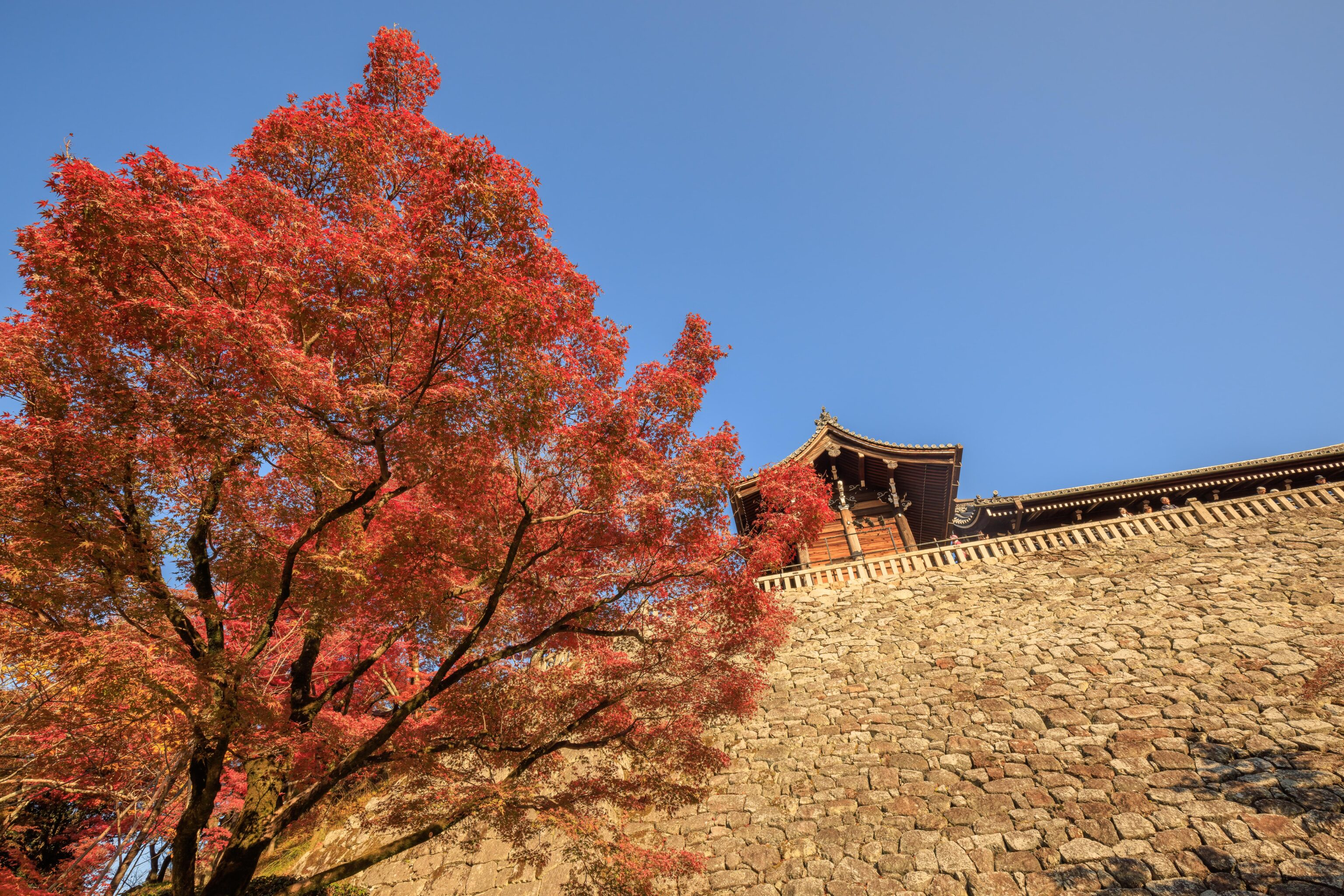
The path turns to the west below the Okuno-in and Main Hall. Here, we were looking up while just past the Main Hall. The structure above is probably the side of the Middle Gate where entry tickets are checked.
The exit to the ticketed area is just beyond this point. There are no barriers or security guards, just signs saying not to enter.
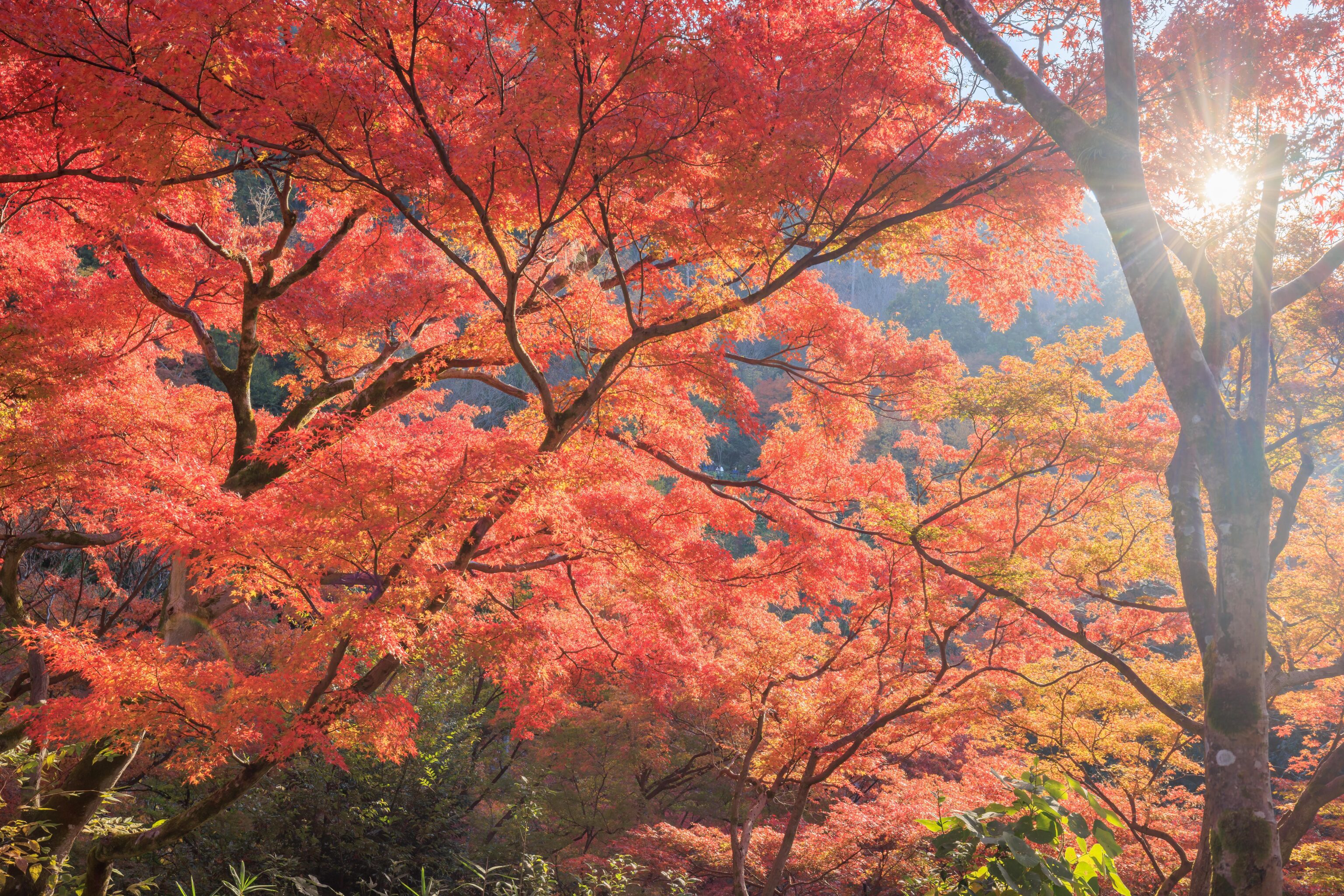
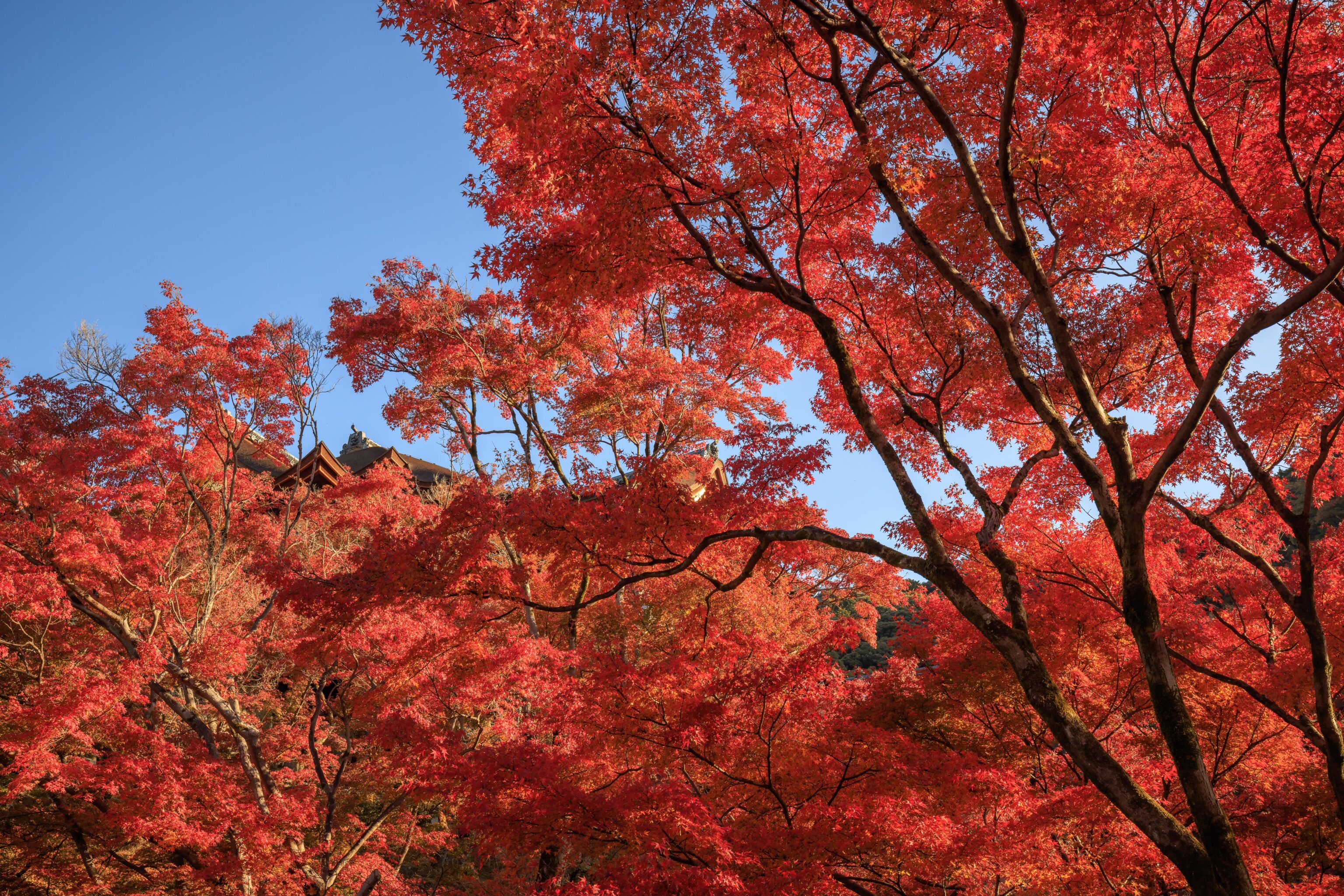
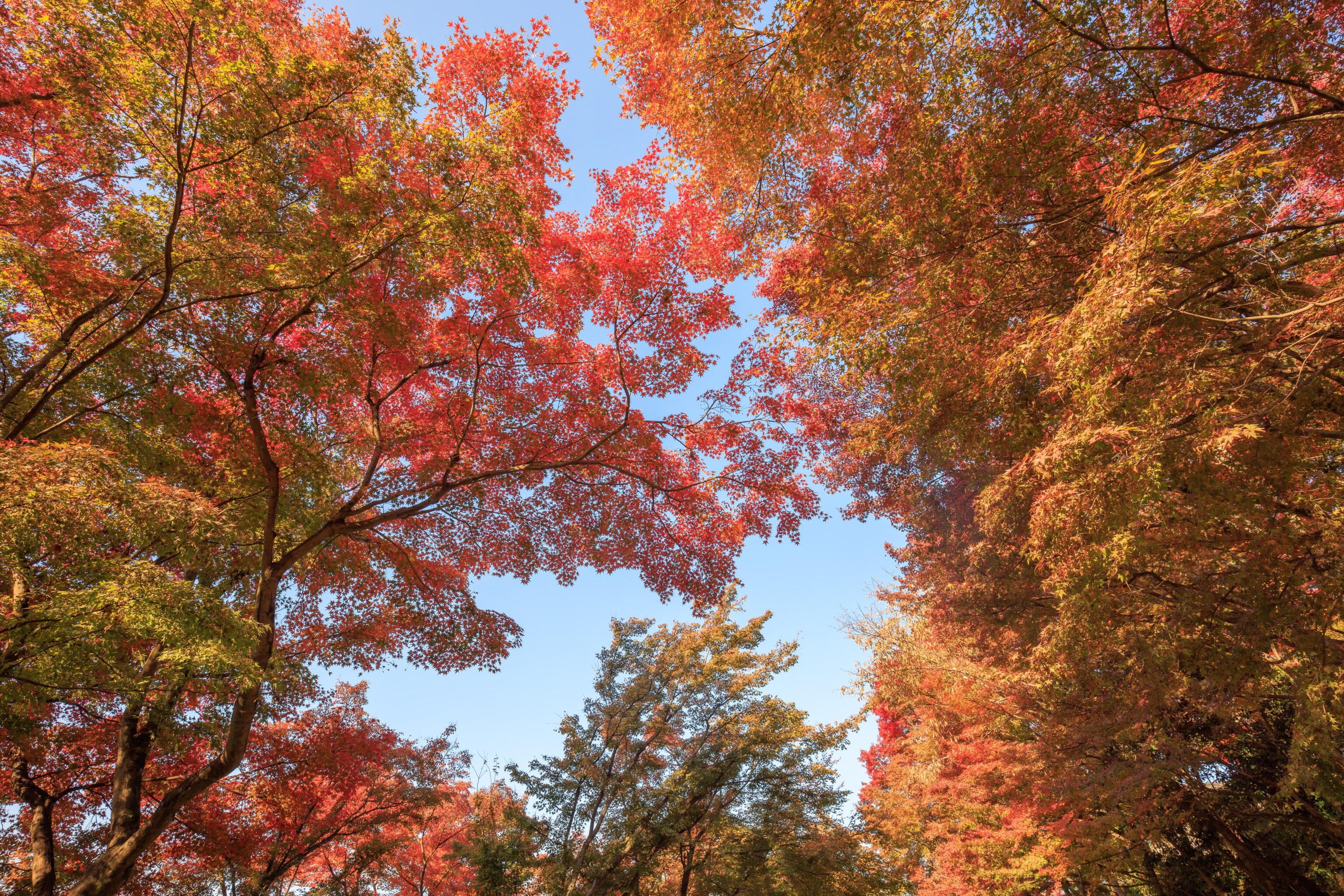
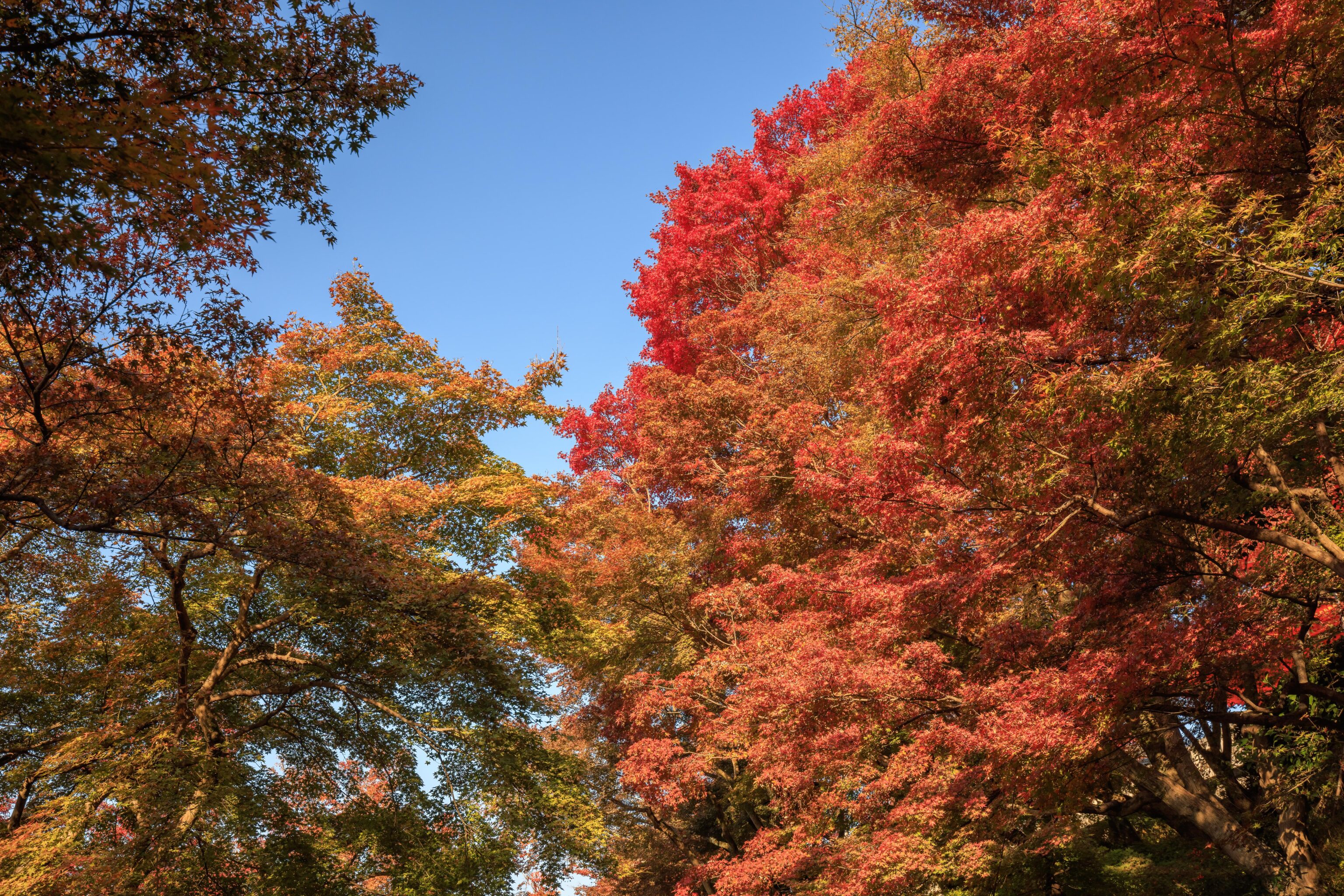
We walked under some very pretty fall colors as we headed west.
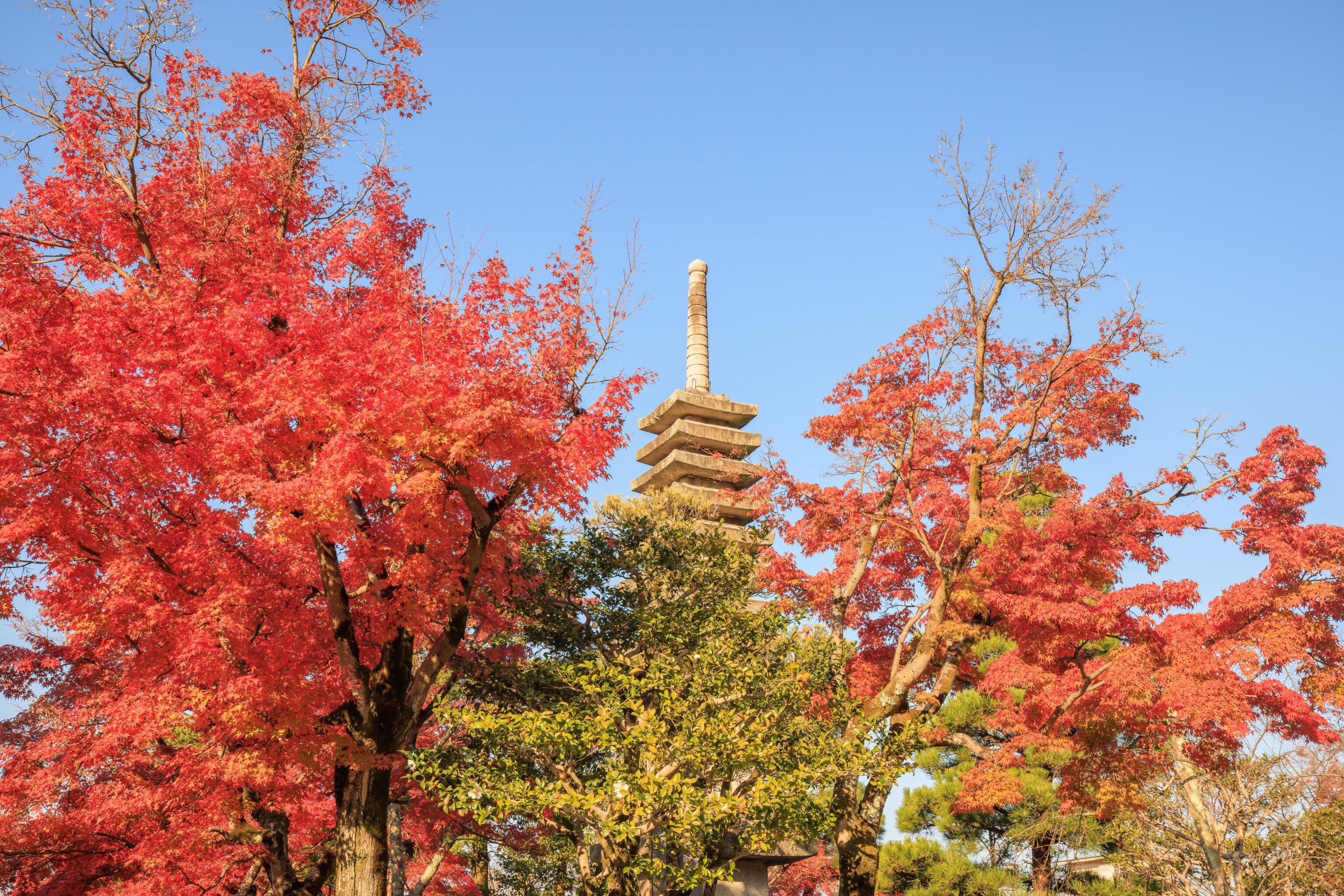
This stone structure is identified on the map as the 11 Storied Stone Stupa, though Stone Pagoda is a more commonly used term in English.
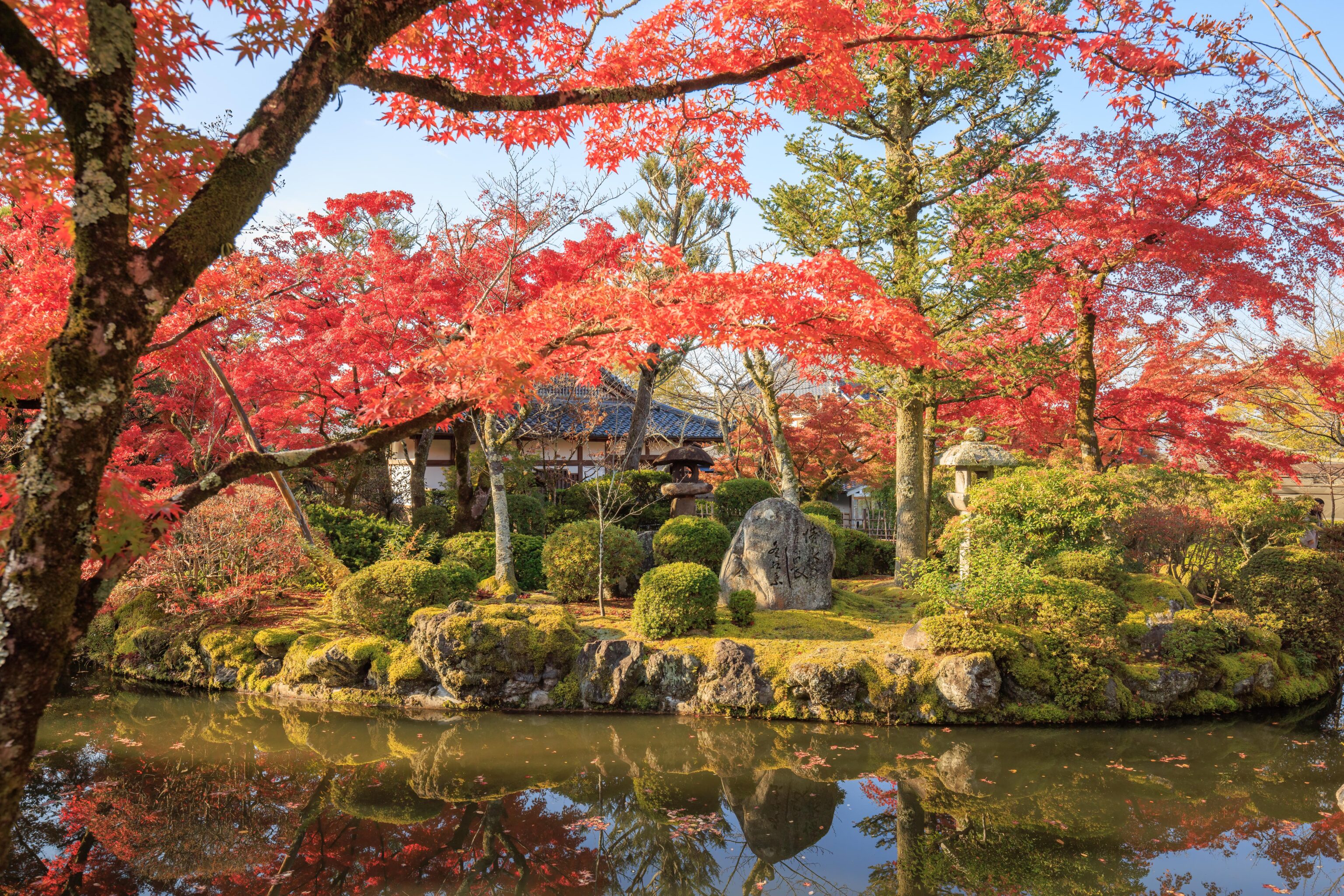
This little pond doesn’t appear on the map but it does appear on Google Maps satellite view. The building beyond seems to be the Enmei-in, #32 on the map and one of Kiyomizu-dera’s sub-temples.
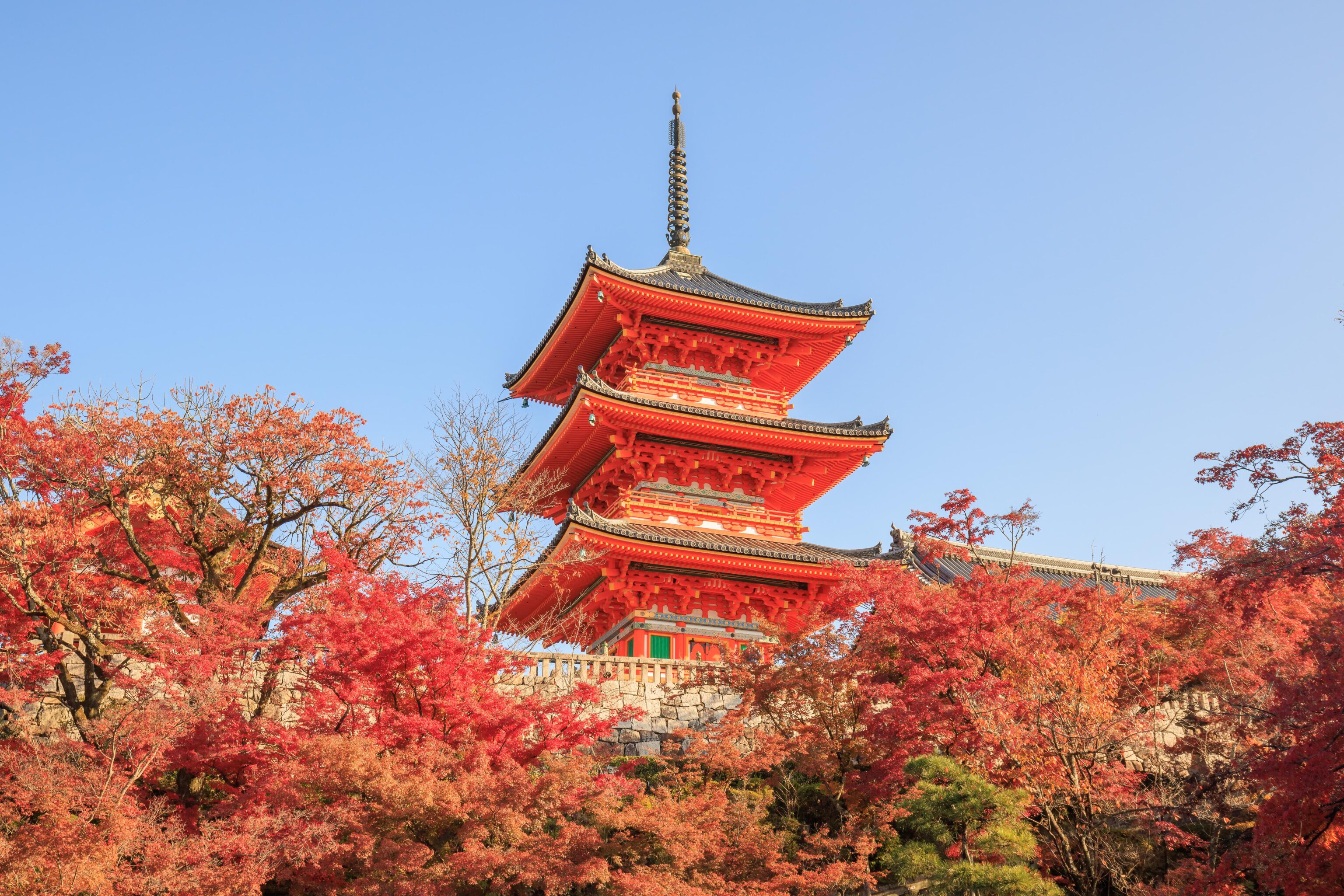
Looking to the north, we could see that we were below the Three Storied Pagoda. The light looks pretty good now! And we still have a clear blue sky!
Kiyomizu-dera, Round Two
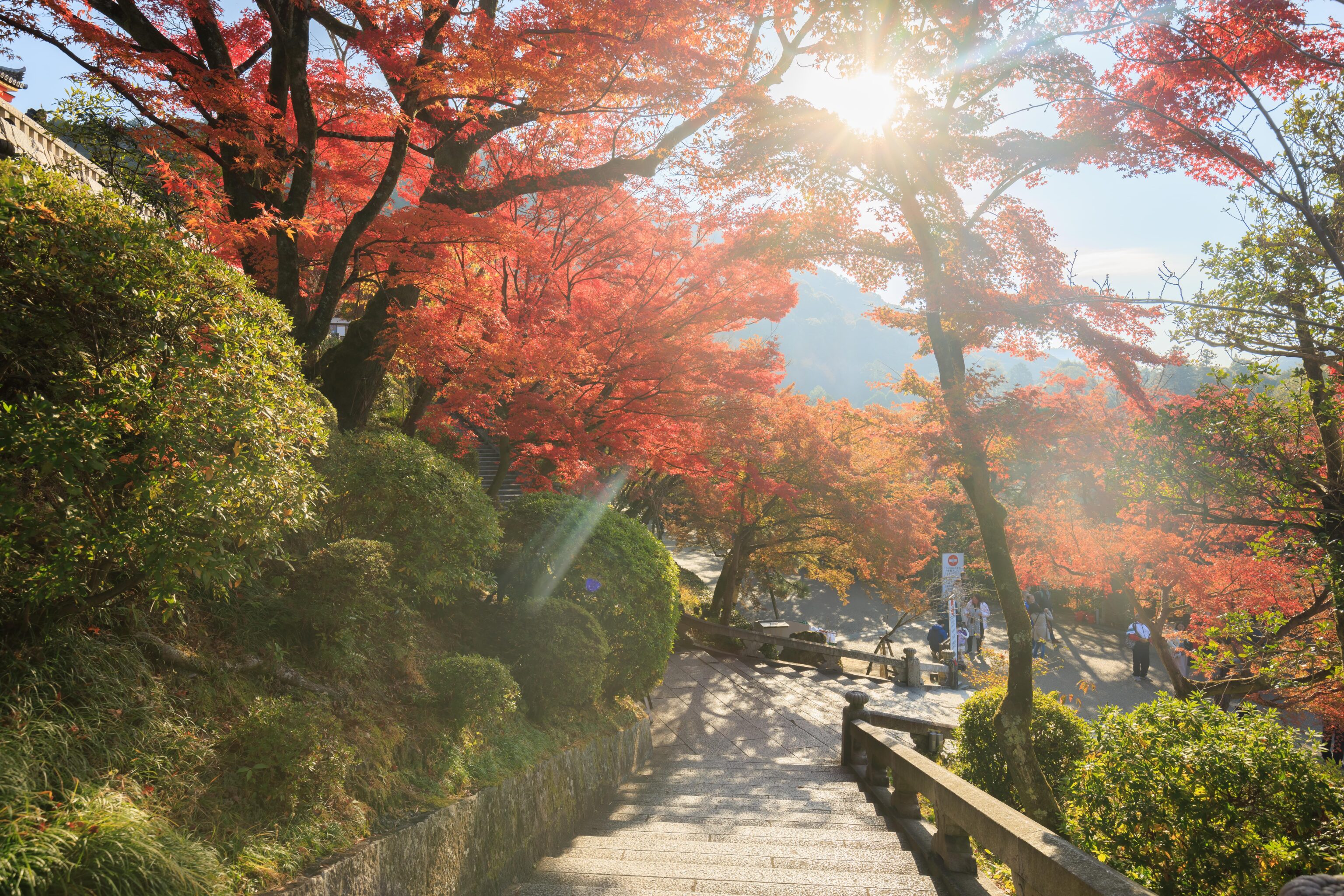
We looped back around to the front entrance to Kiyomizu-dera and went up two sets of stairs to end up here, around #30 on the map. This path continues down and leads to where we just exited the ticketed area. The do not enter signs are visible below at the base of the steps.
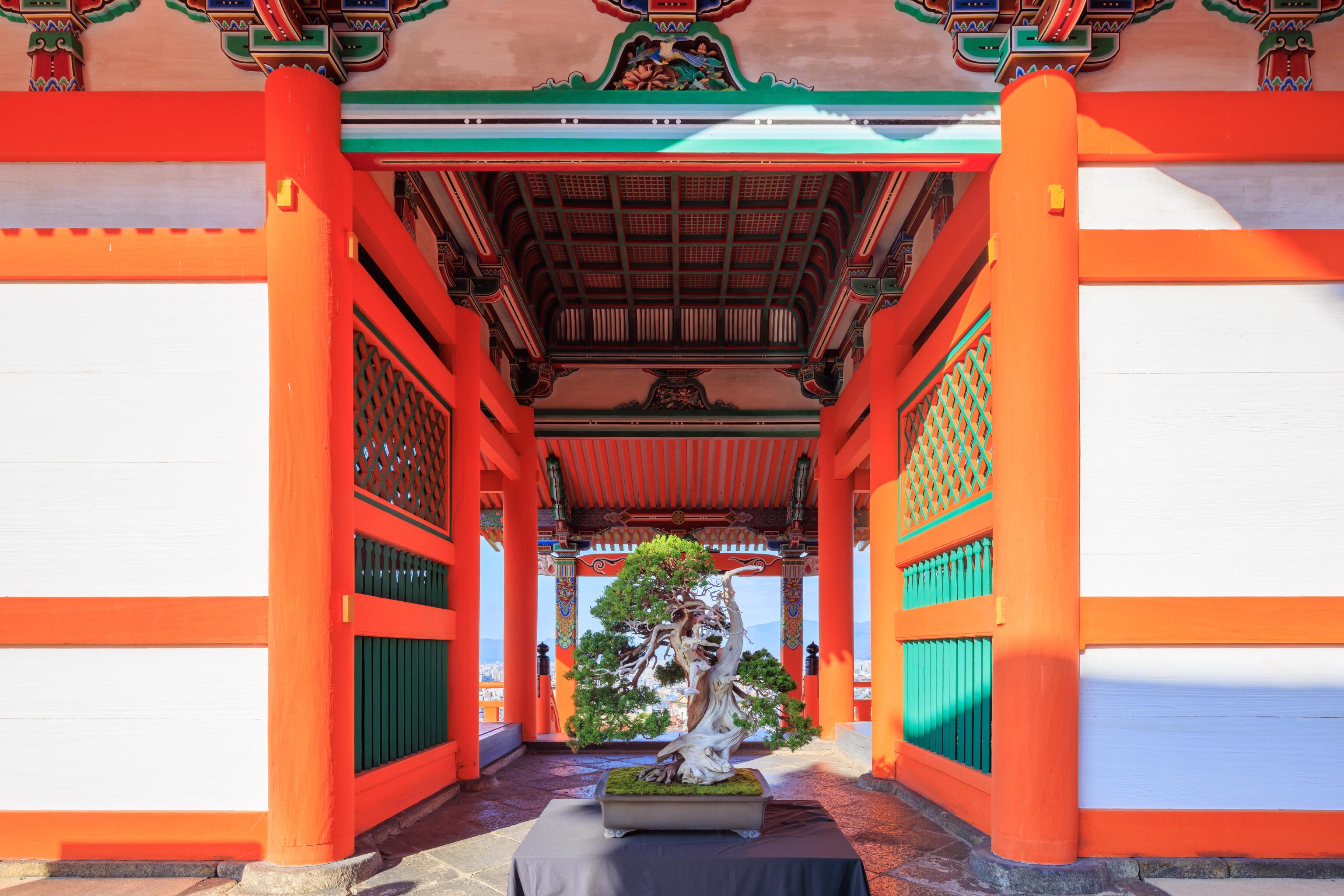
We went up some more stairs and found this bonsai by the West Gate. This gate is blocked off so it cannot be walked through. It sits directly in front of the Three Storied Pagoda, which is behind us here.
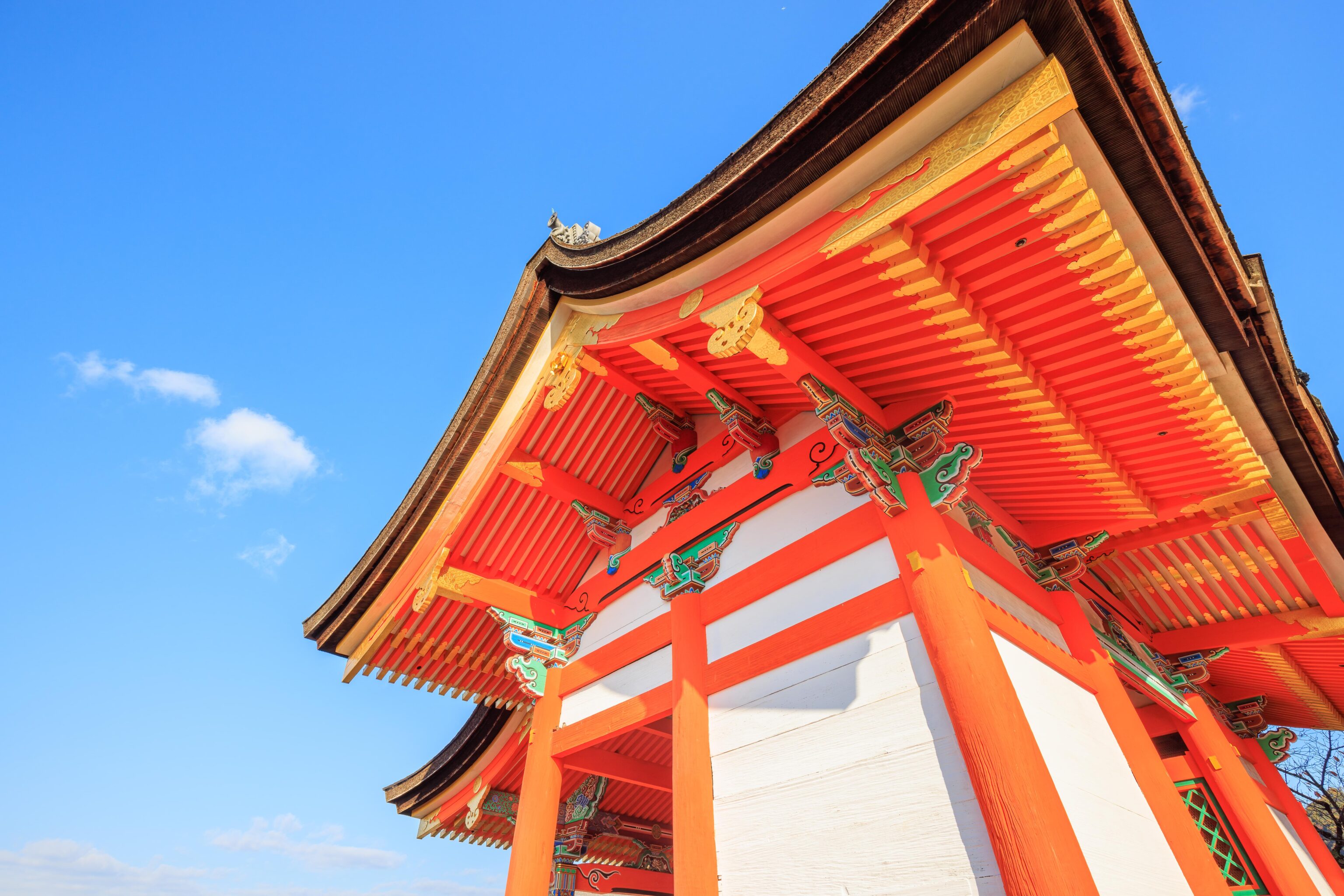
Looking up at the West Gate from its southeast corner.
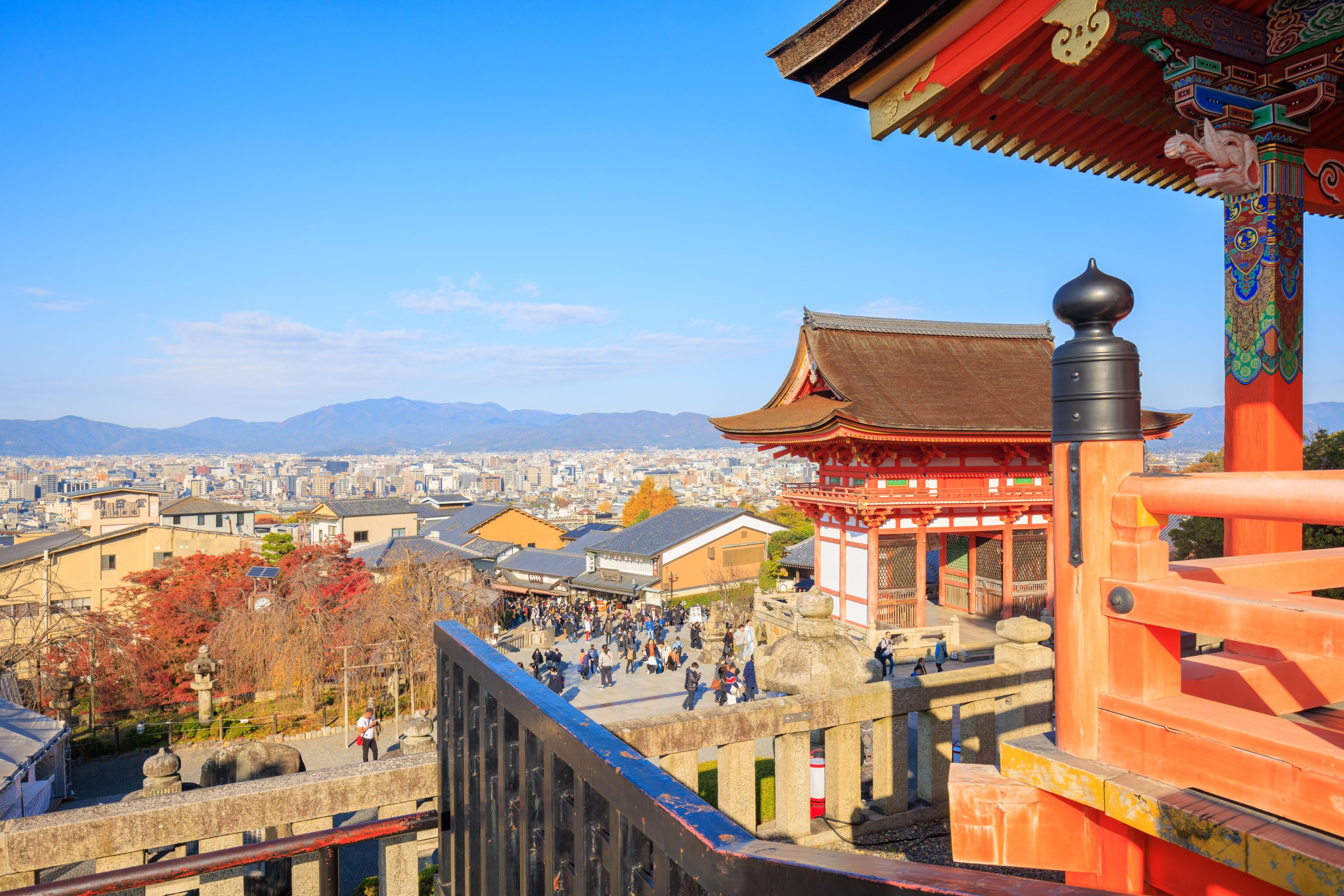
Looking to the west, we could see the Niomon and Kyoto beyond.
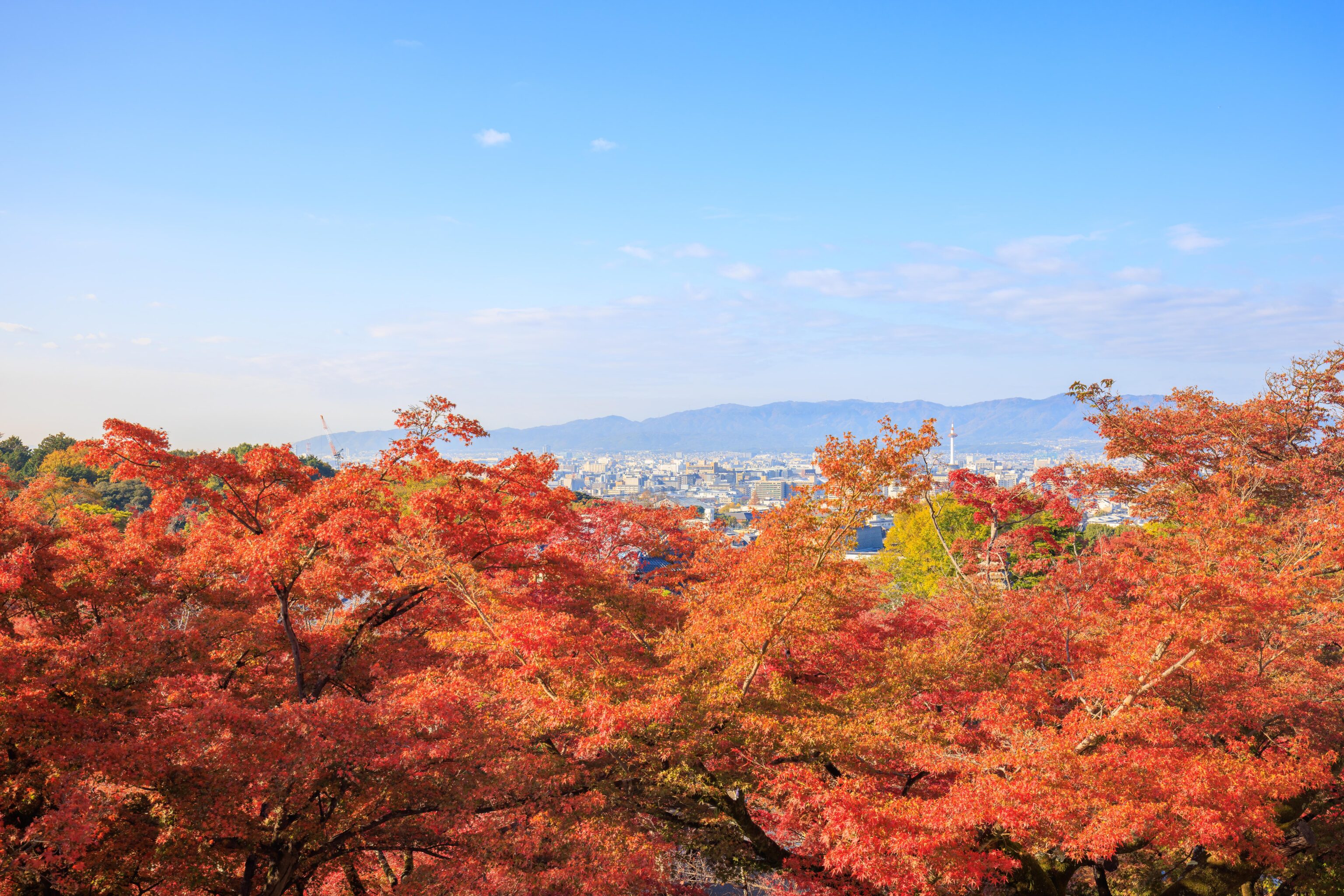
This was the view to the west just before the Middle Gate, just prior to the ticketed area. The light looks good from here! The buildings in Kyoto generally don’t look distinctive from a distance. The only easily identifiable one is the Kyoto Tower!
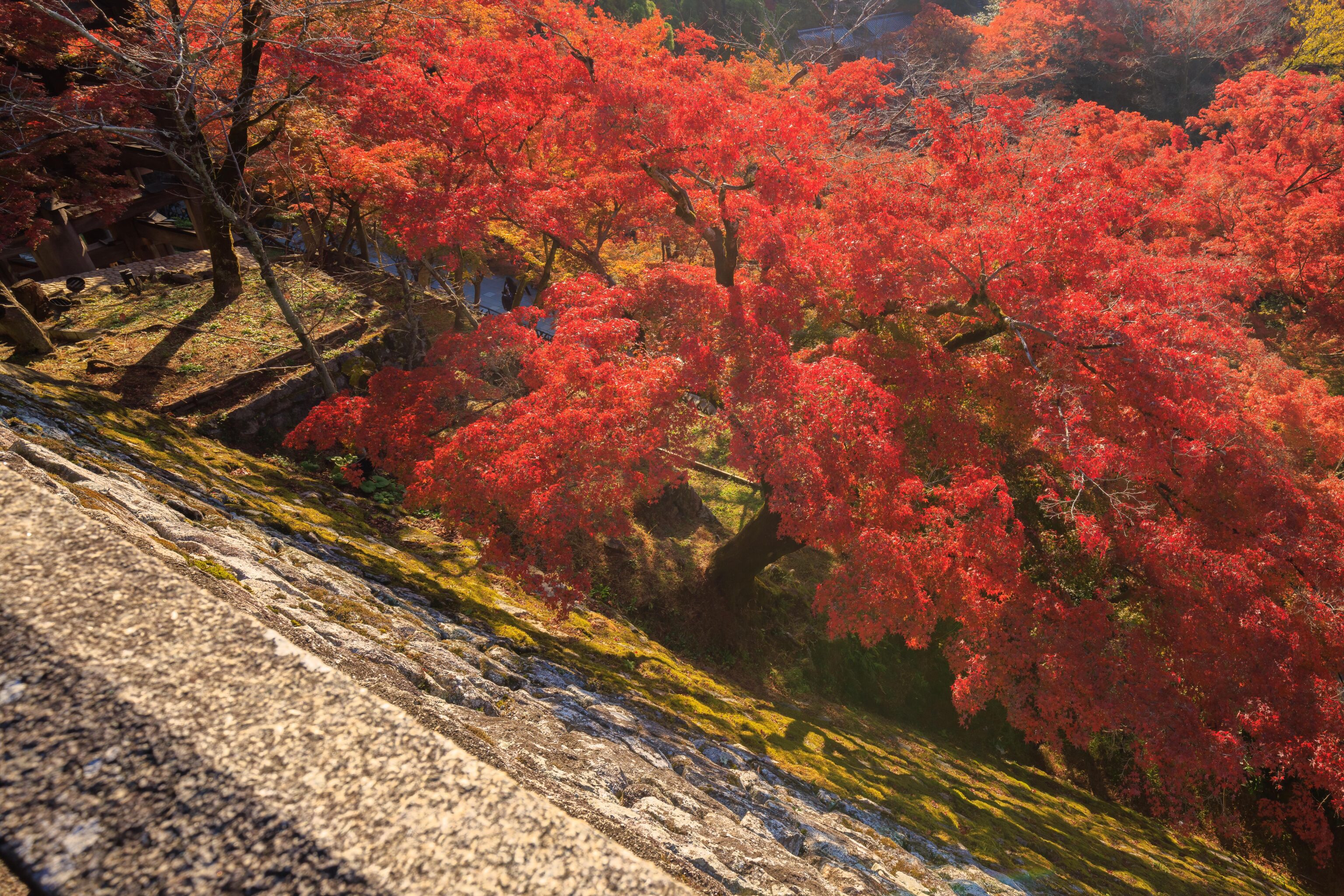
The view looking down at the path we were previously on when exiting the ticketed area.
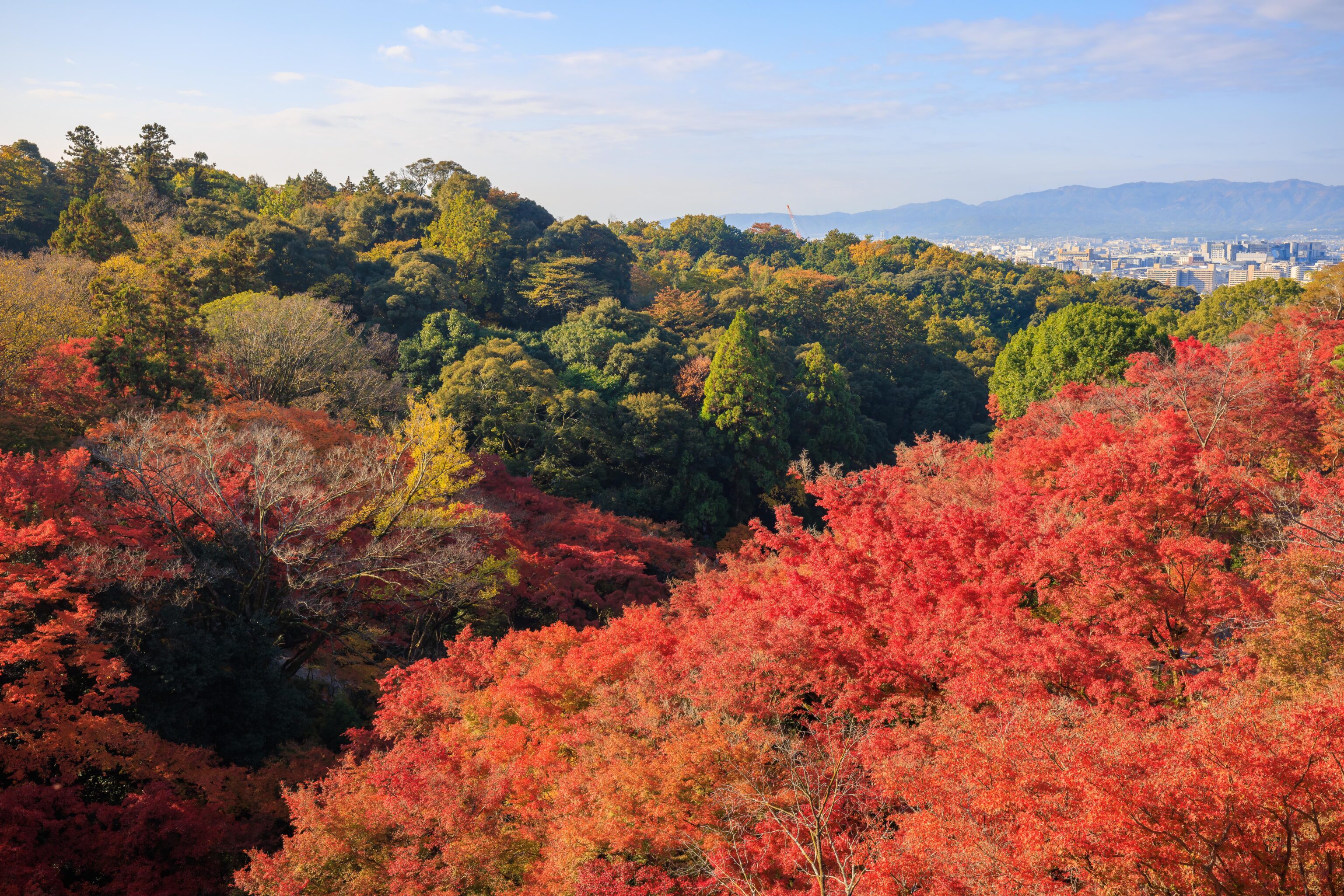
The view from the Main Hall looking to the southwest is pretty good! Though some trees are still in the shade.
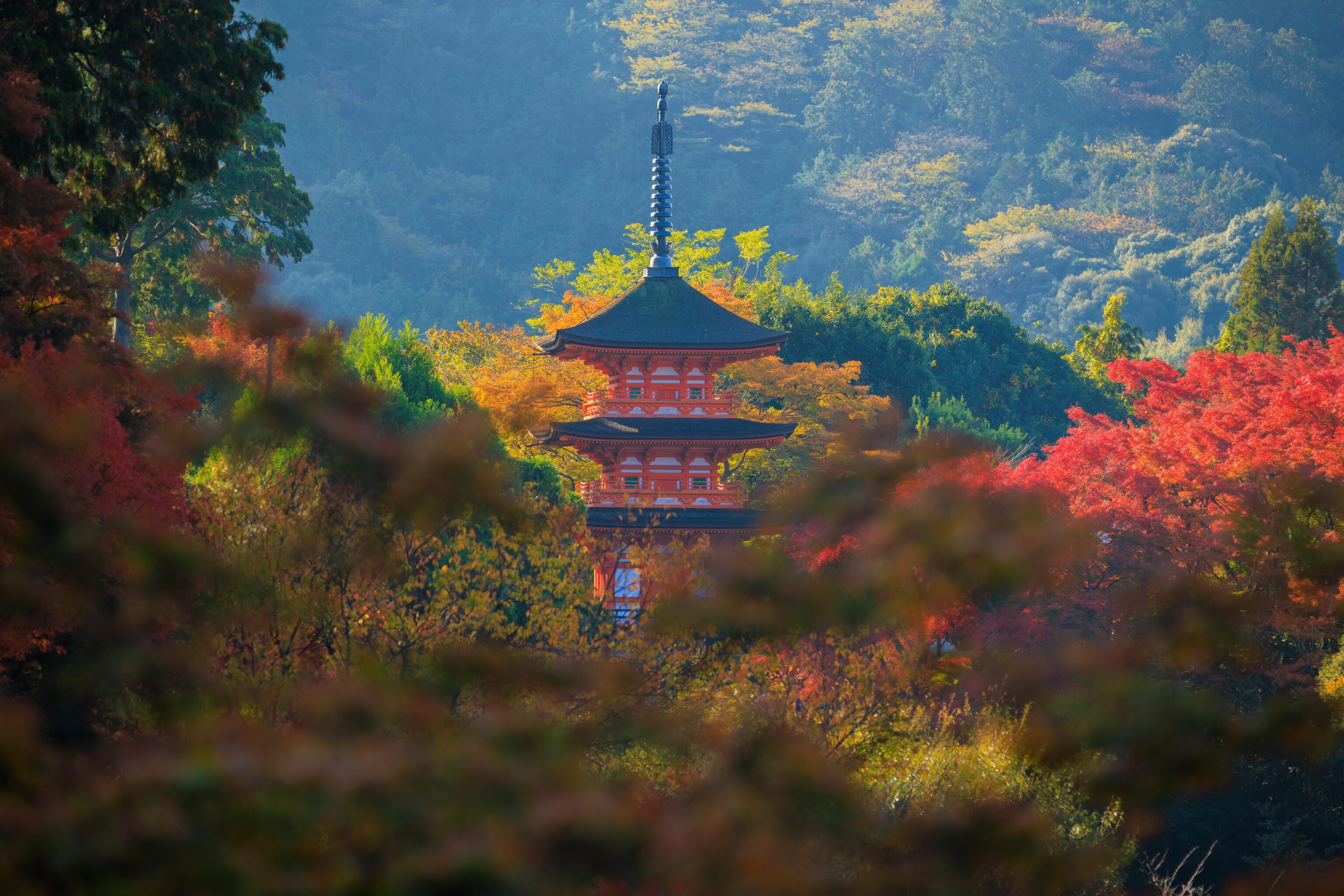
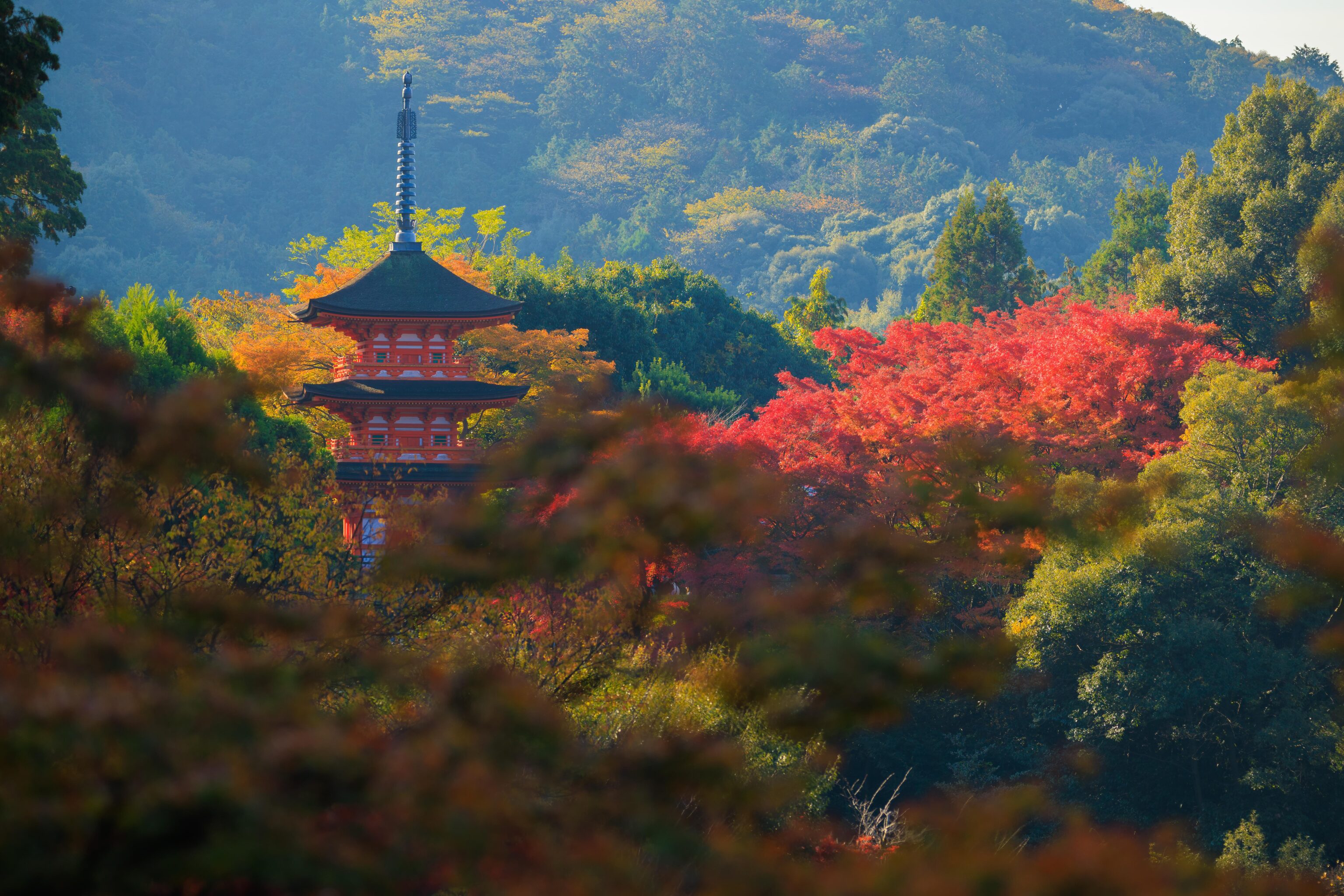
We found a nice spot just beyond the Main Hall’s eastern entrance with a beautiful view of the Koyasu Pagoda. There was no one in the immediate area taking photos at the time. But when I turned around to walk away, there was a cluster of people photographing the scene! The big white telephoto lens is a people magnet!
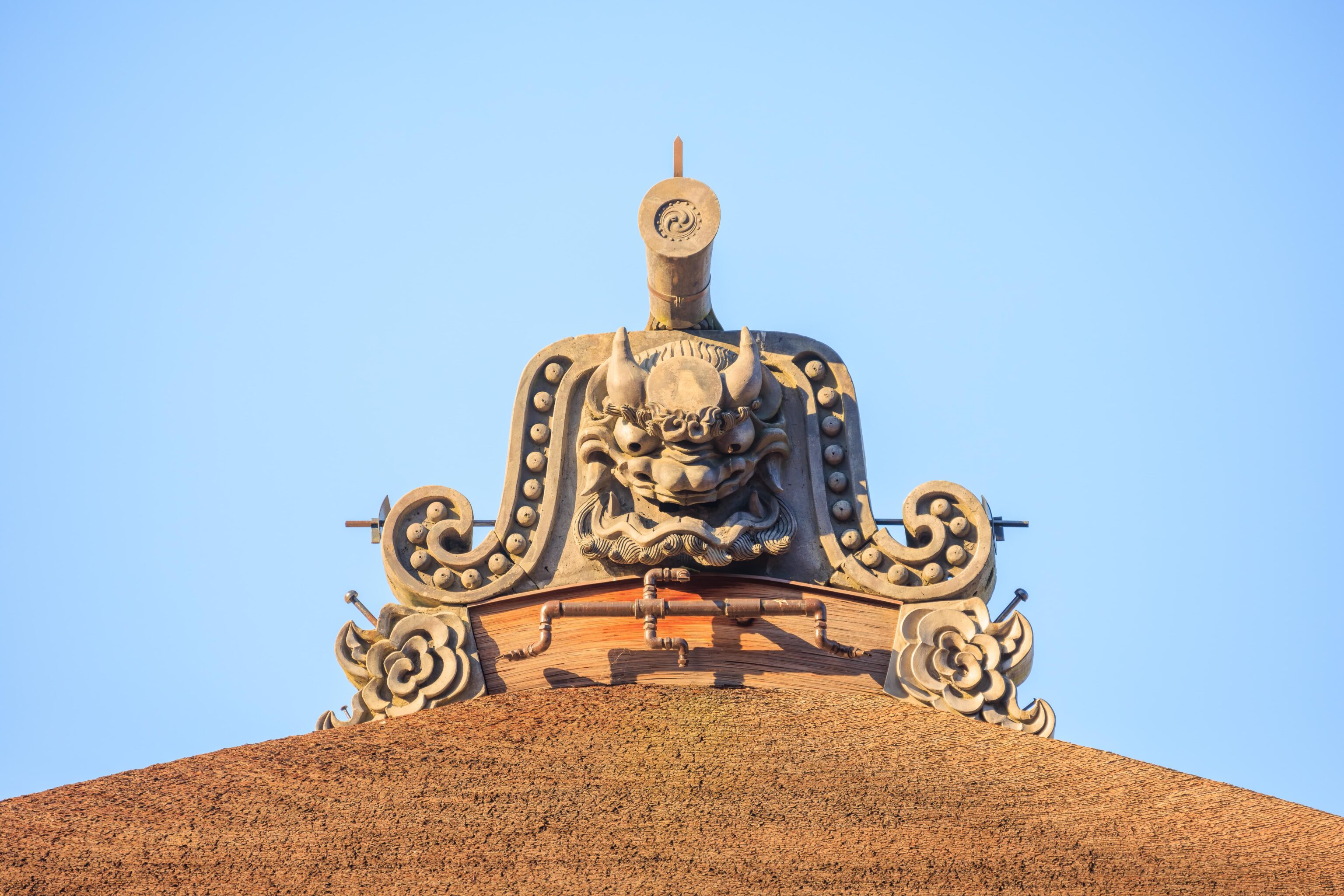
A bit of detail atop a temple building. Given the angle of the shadow, this is probably the eastern tip of the roof of the Main Hall. This same design seems to be on all of the Main Hall’s roof ridge ends.
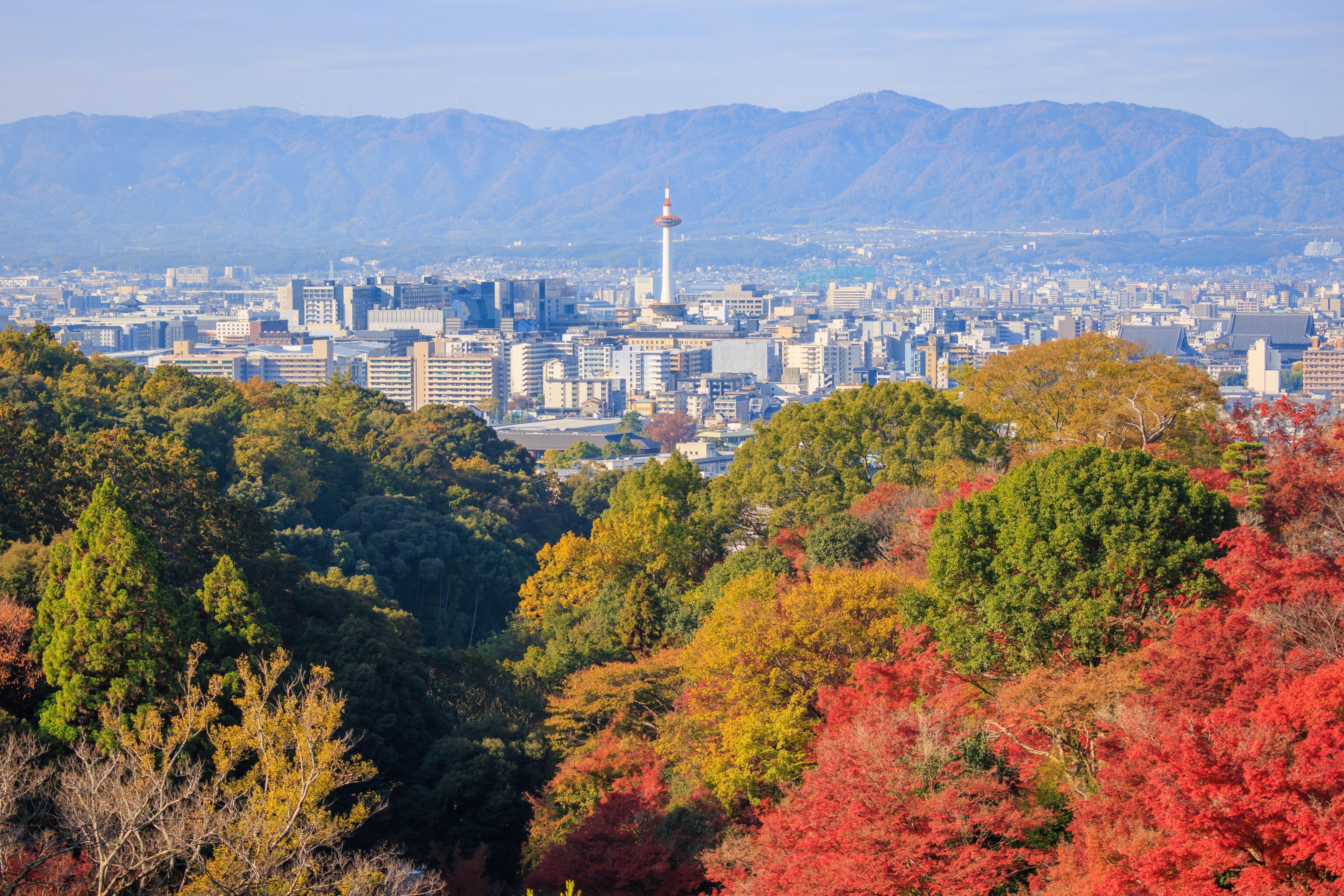
Kyoto Tower, viewed through our telephoto lens. The large glassy building to the left is Kyoto Station. Nothing else really stands out. The top of a pagoda is visible on the left, that might be the top of To-ji’s five story pagoda. There are some large temple rooftops on the right. They might be part of Higashi Hongan-ji?
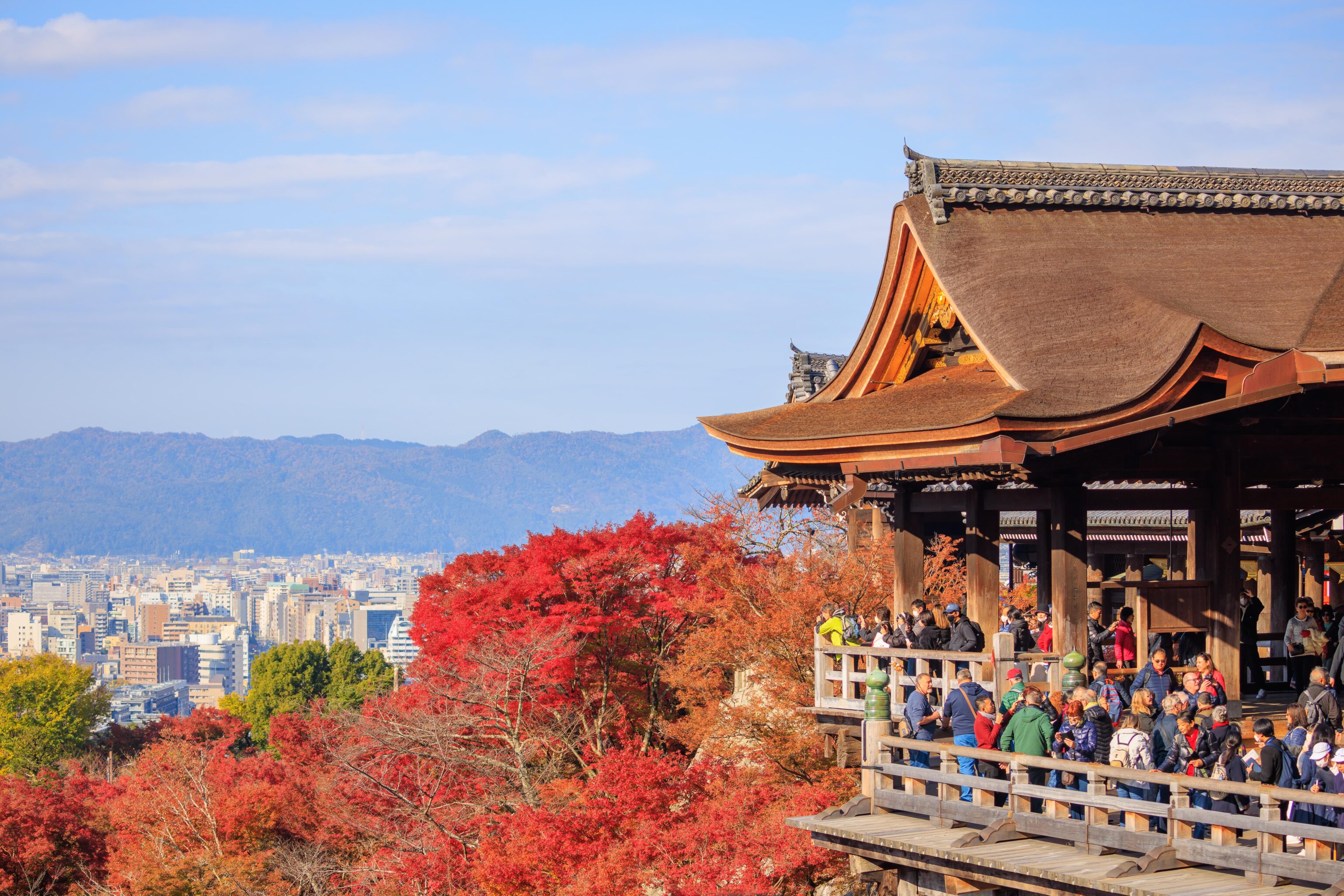
Part of the Main Hall, viewed from the southern end of Okuno-in.
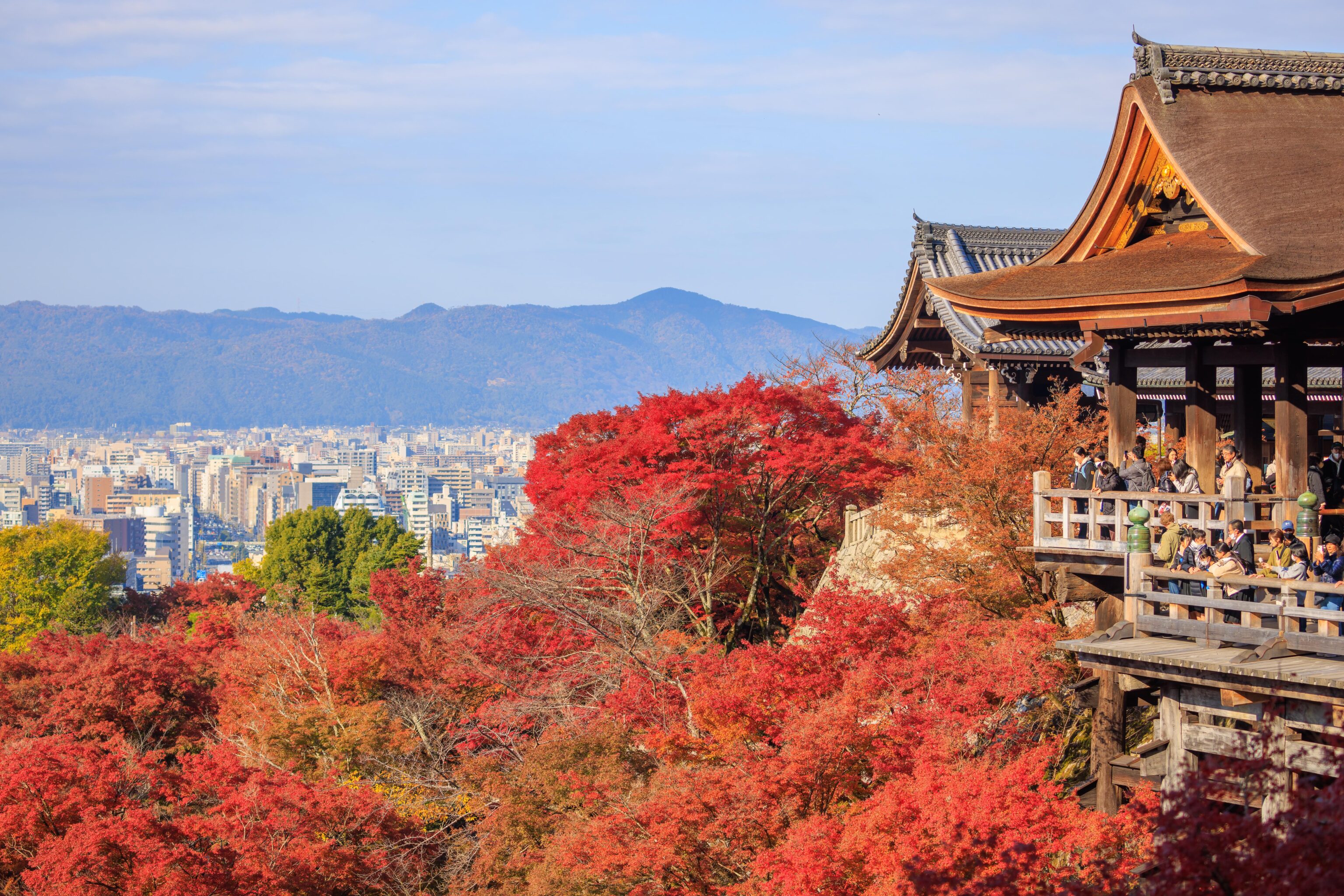
A similar view from slightly further south.
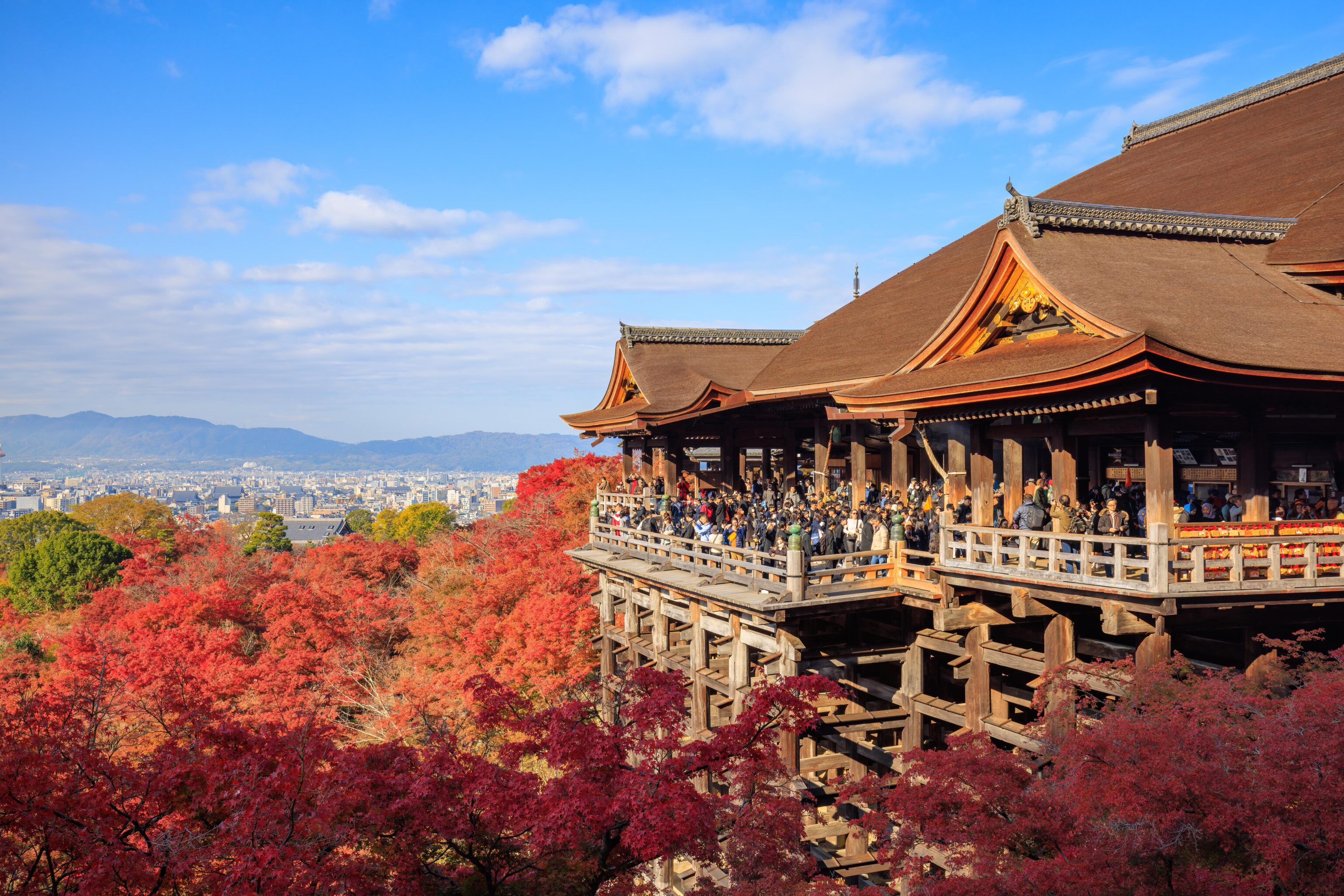
Back to the terrace of Okuno-in with the wide angle lens! While all of the Main Hall was directly illuminated by the morning sun, the trees in the foreground were still in the shadow of the mountains. And, while it was already busy at the Main Hall earlier, it was now rather crowded!
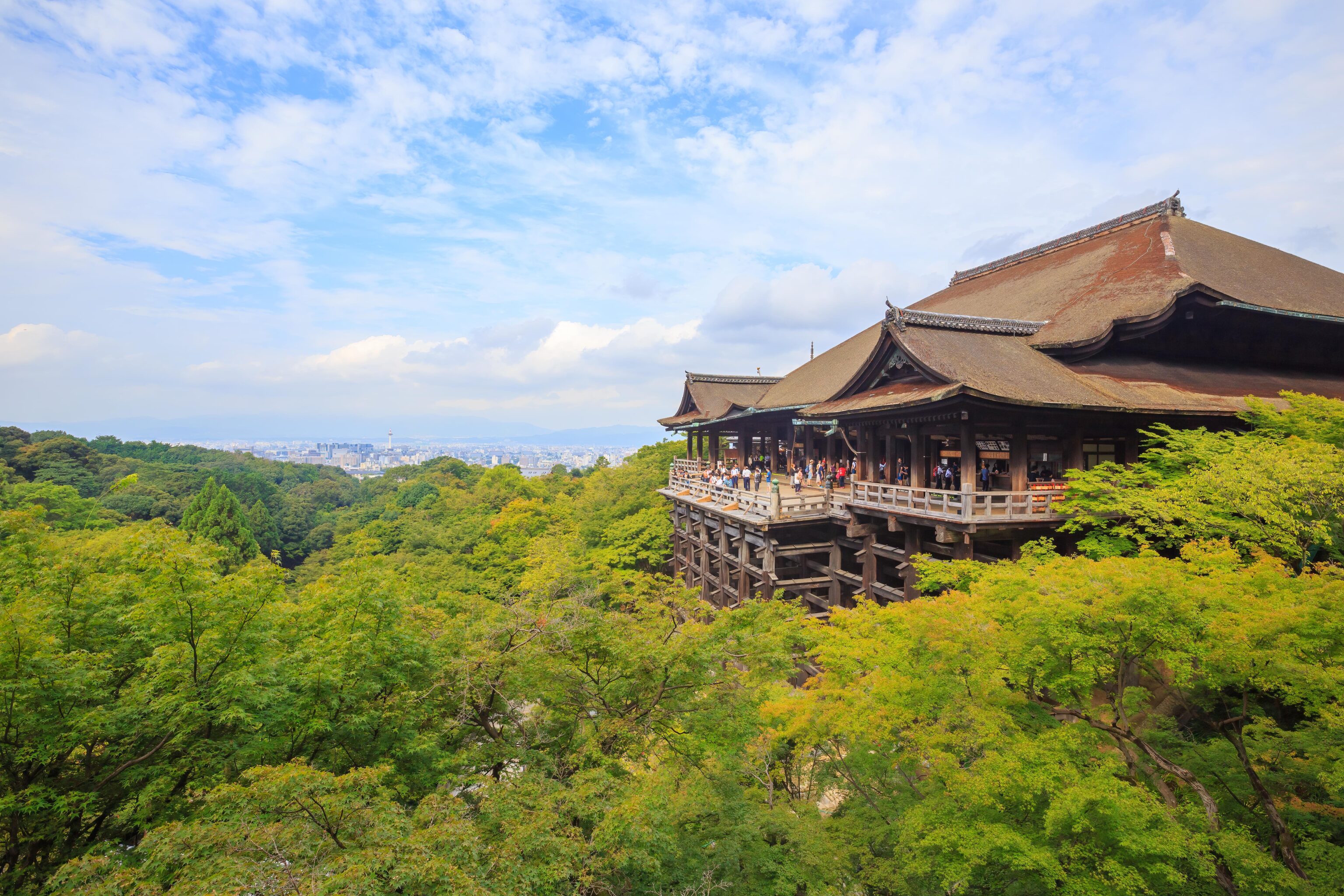
As a comparison, here is what a normal morning at Kiyomizu-dera looked like! This was back in September, 2016 at 8:55am. Definitely less busy than today at 9:30am, and definitely less busy than earlier in the morning today when we were here at 8:20am!
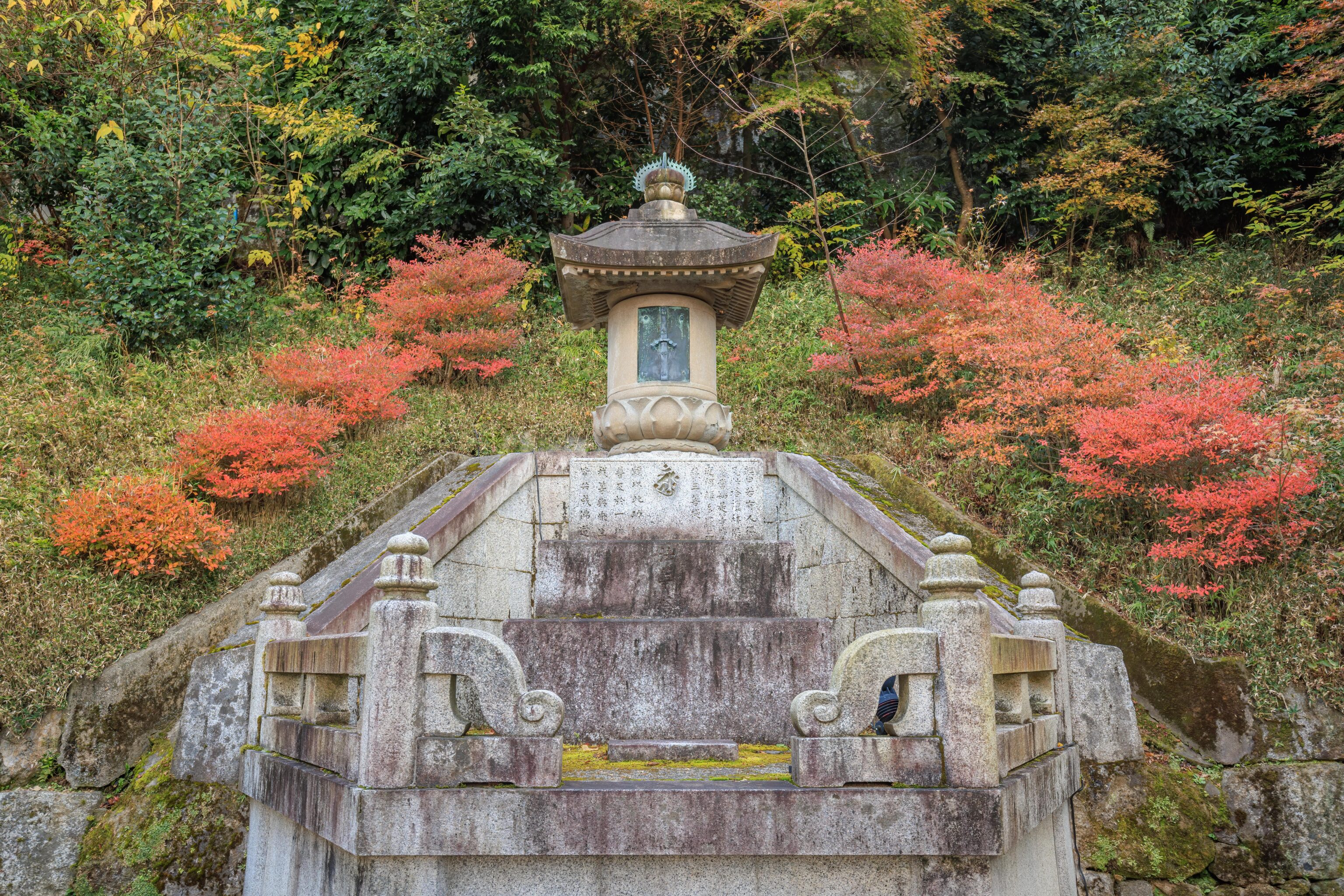
There are some additional structures behind the Okuno-in and adjacent buildings.
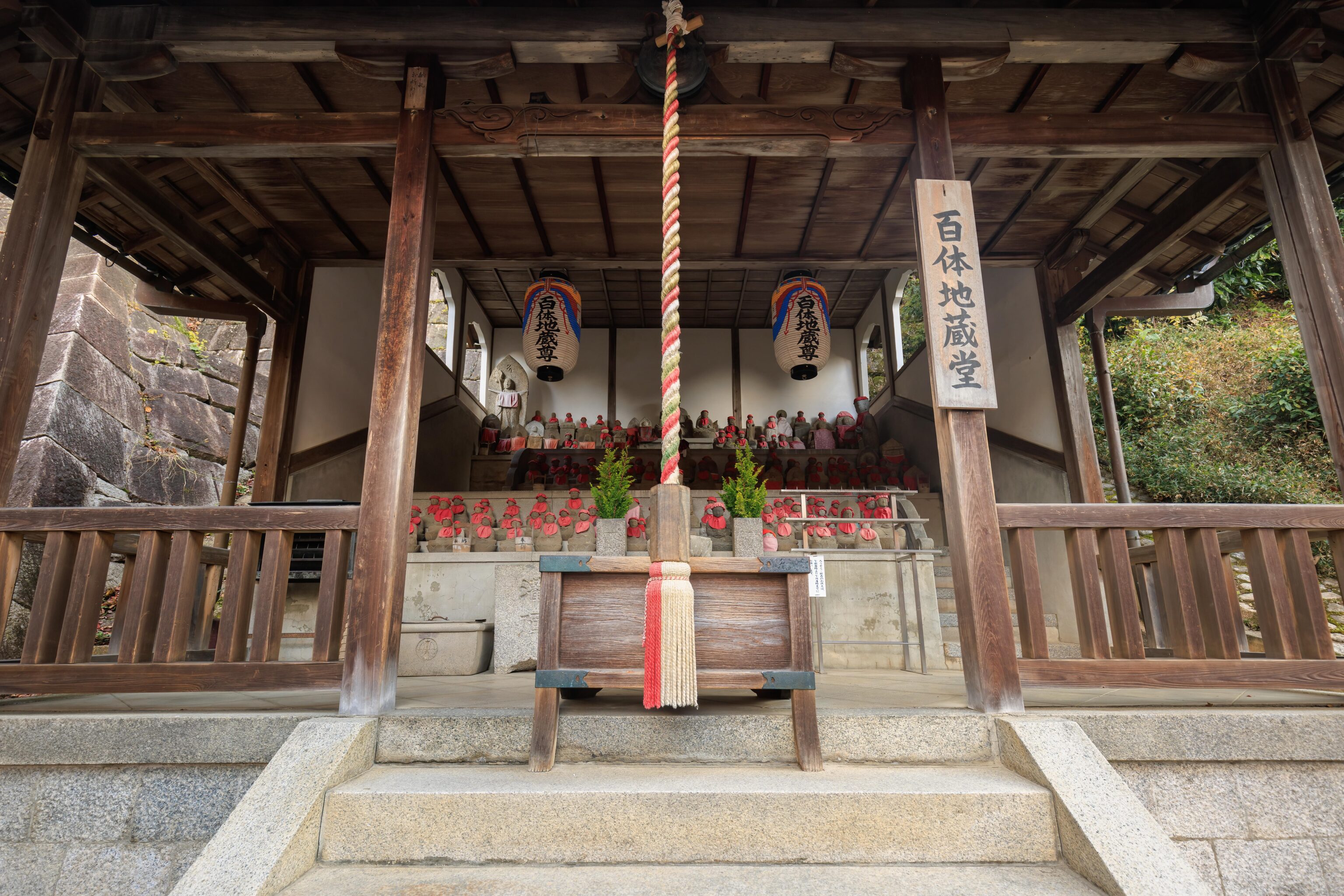
This must be the Hall of 100 Jizo, #16 on the map. There are at least 108 partially visible here! There is mention on the internet of there being almost 200 statues here8.
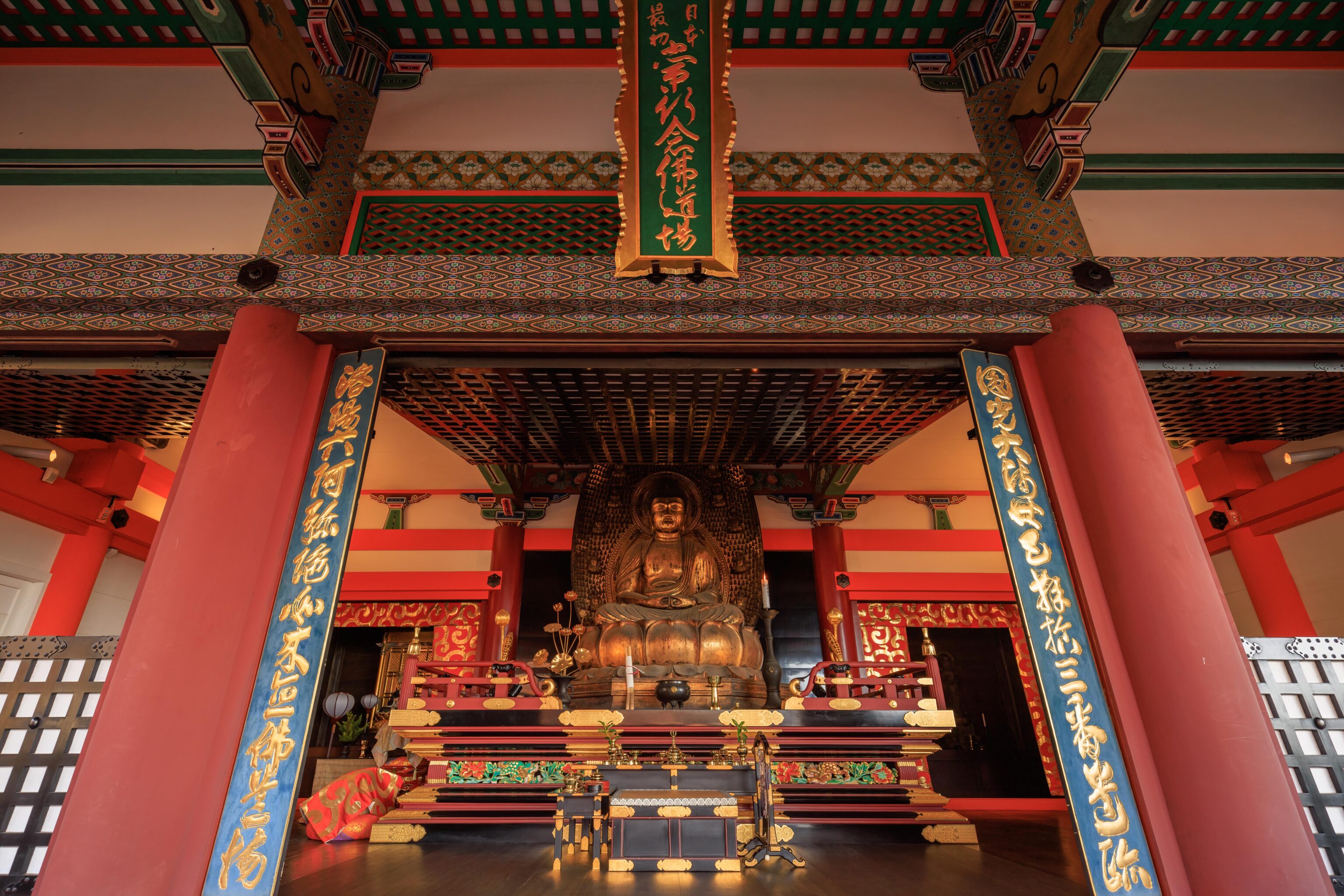
Many temples in Japan prohibit interior photography, or have other more complex rules. They’re always well marked though or explained. There was nothing disallowing photography here, though other places like the Main Hall did not allow photography inside.
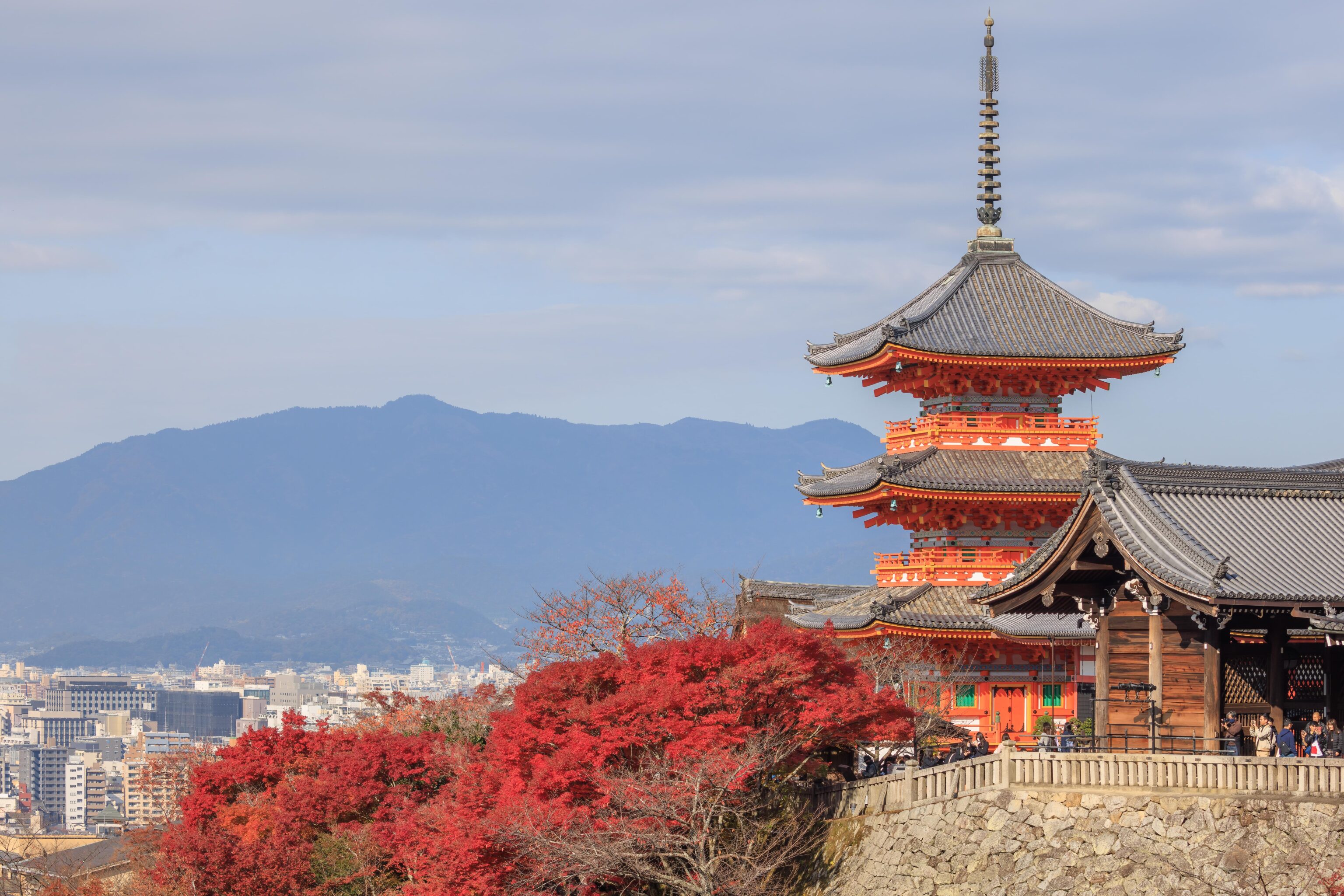
We switched back to the telephoto lens to get a nice view of the Three Storied Pagoda with the Middle Gate below it in the foreground.
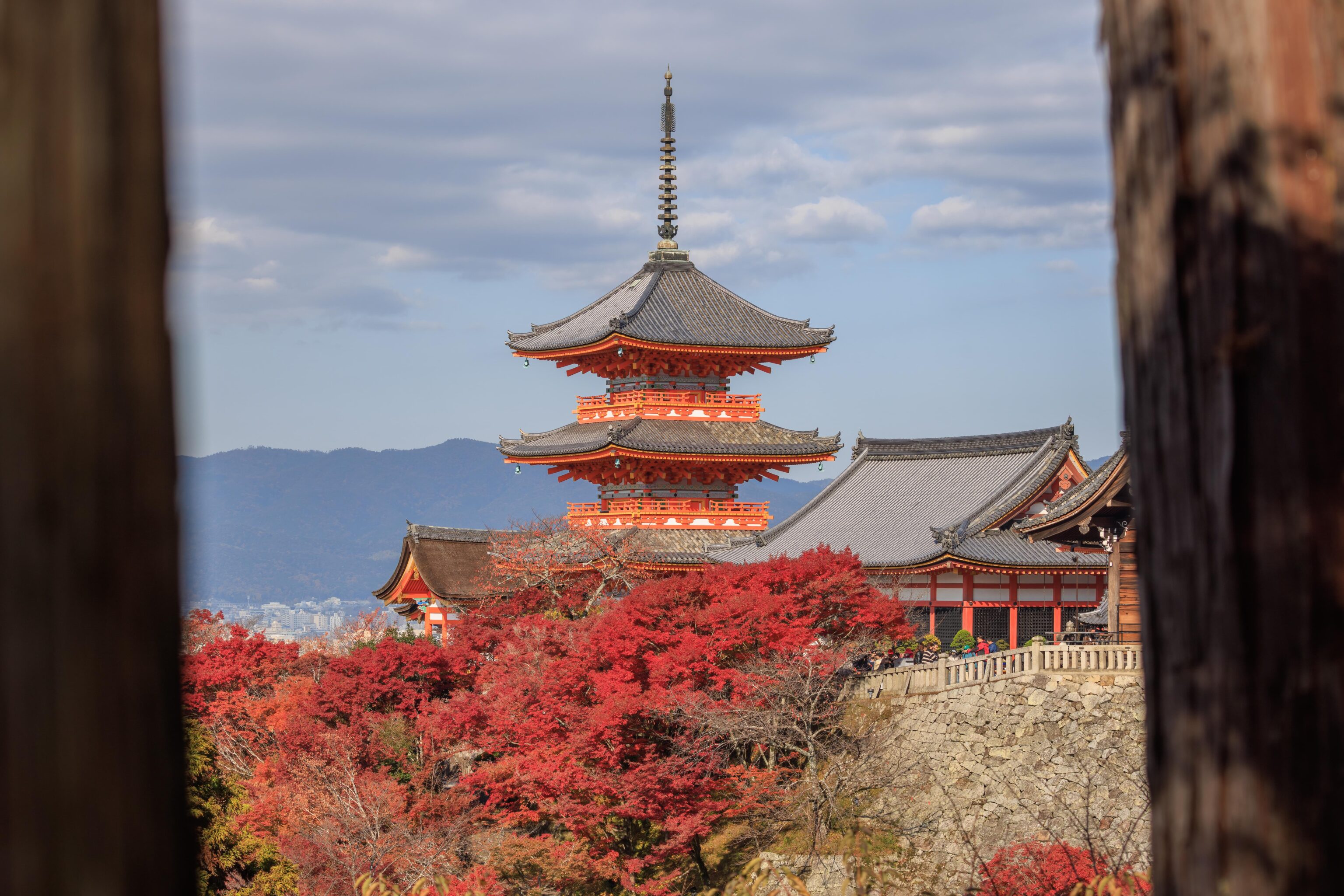
We photographed this same scene earlier in the morning with the wide angle lens. It is quite different viewed through a telephoto! The change in perspective also allows some more temple buildings to appear around the pagoda.
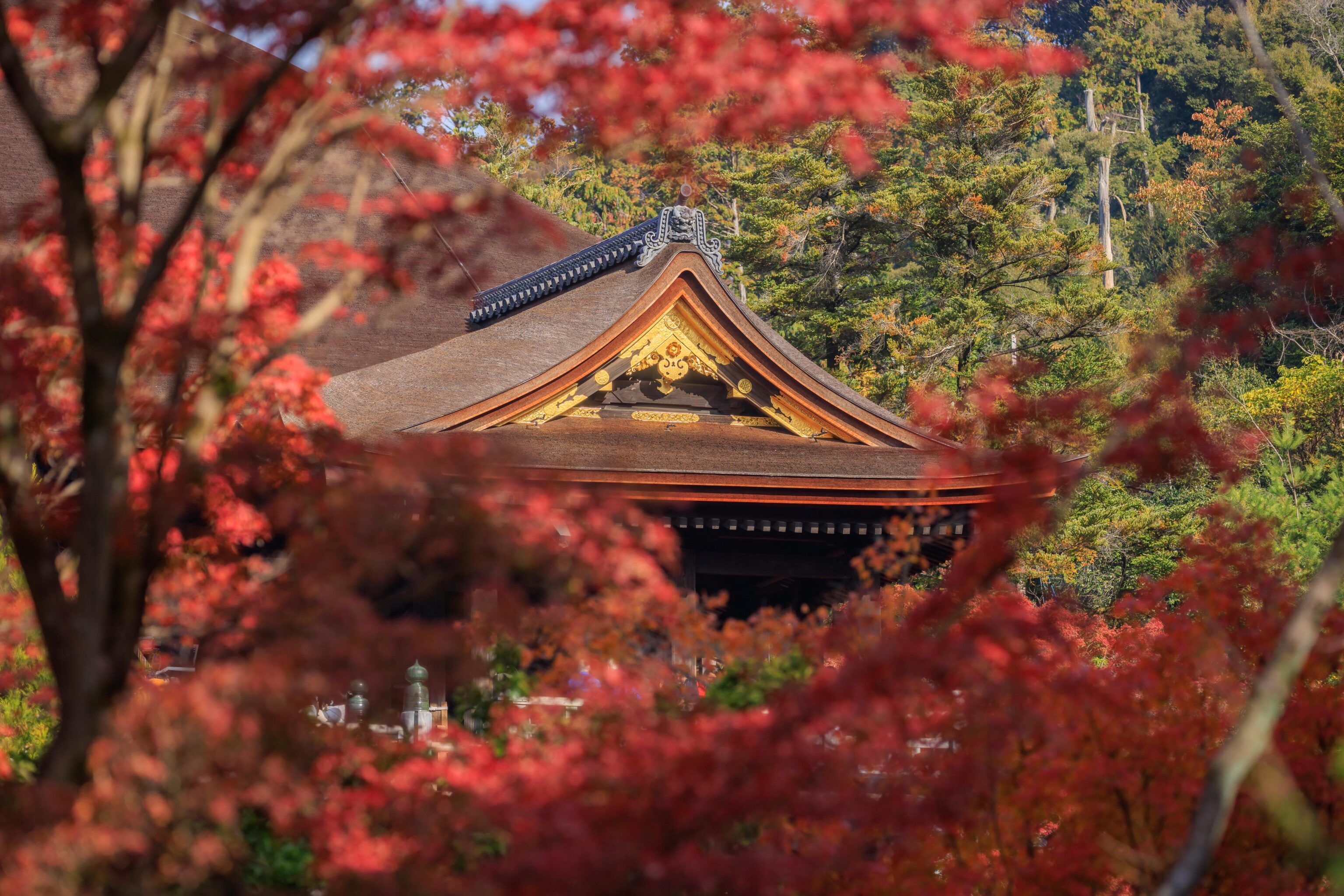
This time around, we bypassed the Koyasu Pagoda. Though in retrospect, perhaps there would have been a nice view with better illumination of the trees by sunlight. This is the eastern section of the Main Hall, viewed through the maple trees.
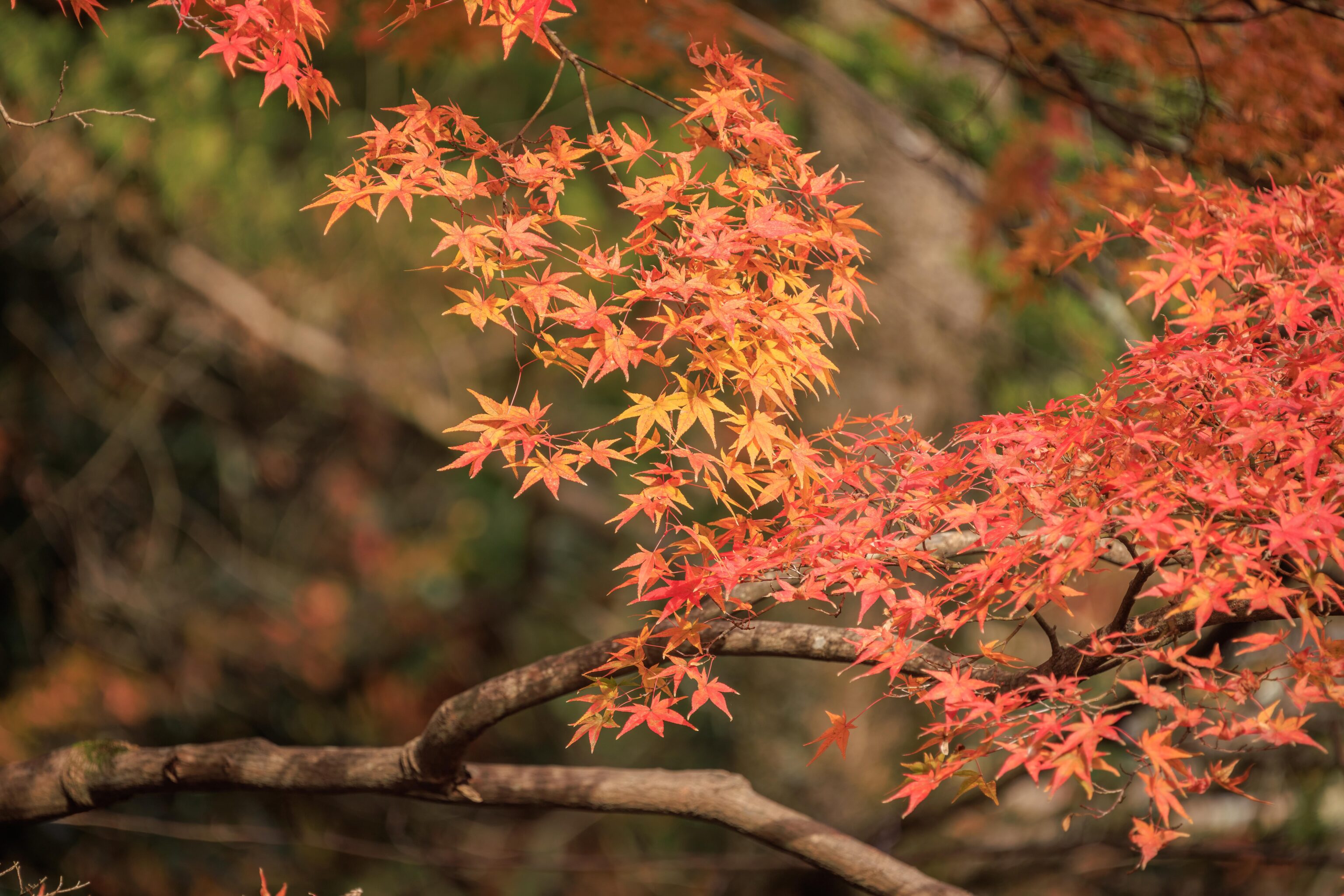
A close look at some of the tiny Japanese maple leaves.
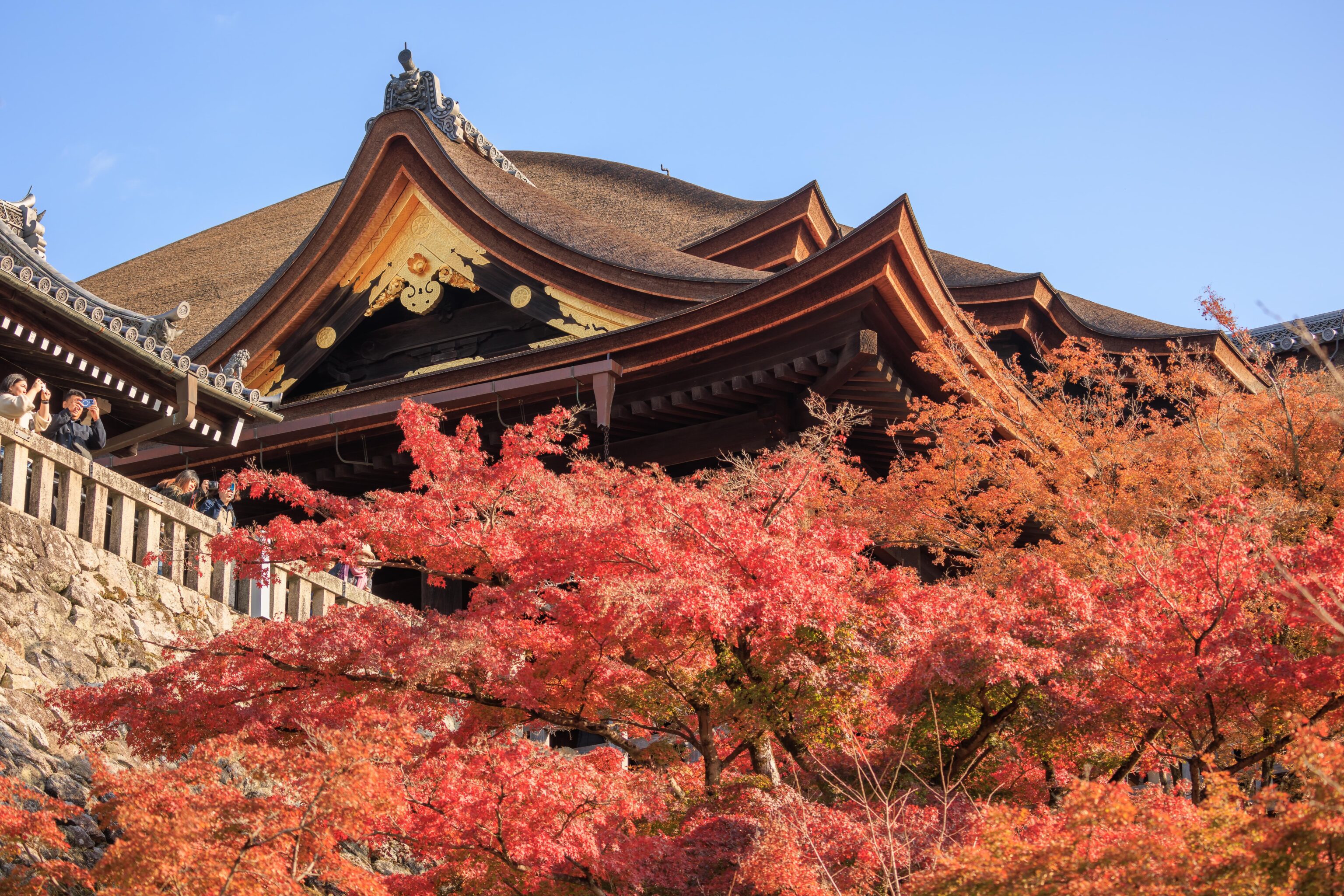
The Main Hall once again, viewed from below to the southwest.
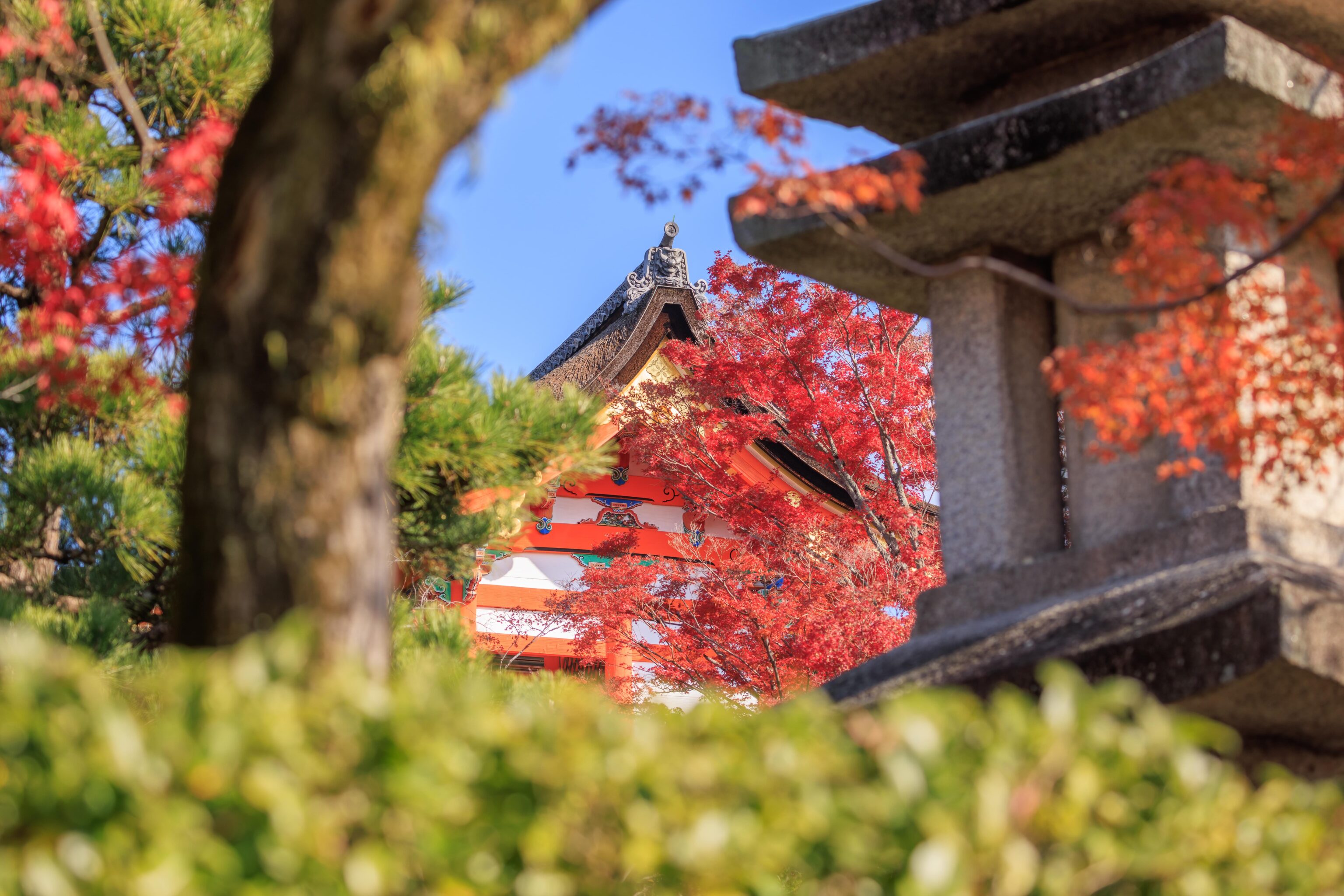
We continued on to exit the ticketed area and ended up by the 11 Storied Stone Stupa again.
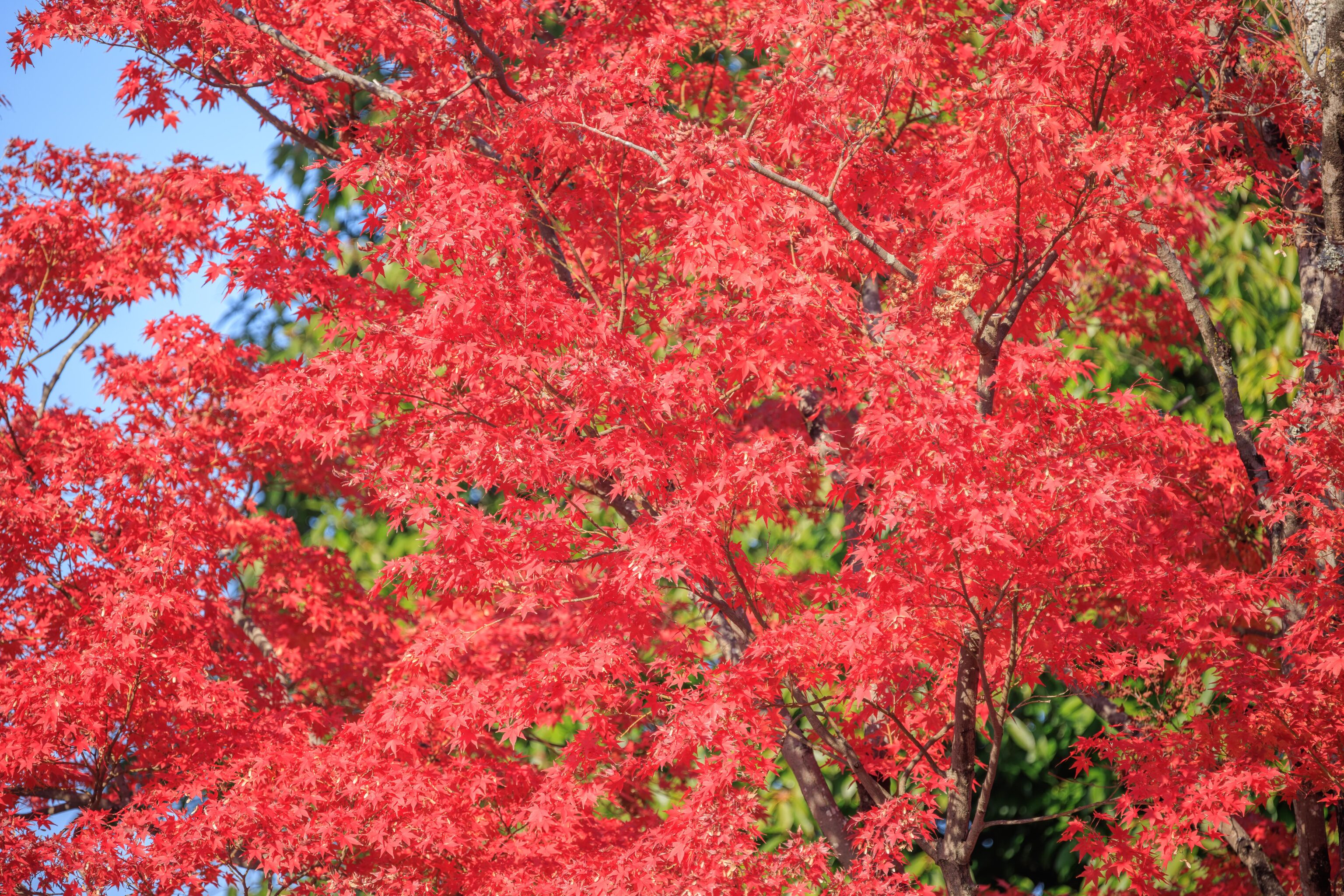
A dense clump of Japanese maple leaves, viewed through the telephoto lens.
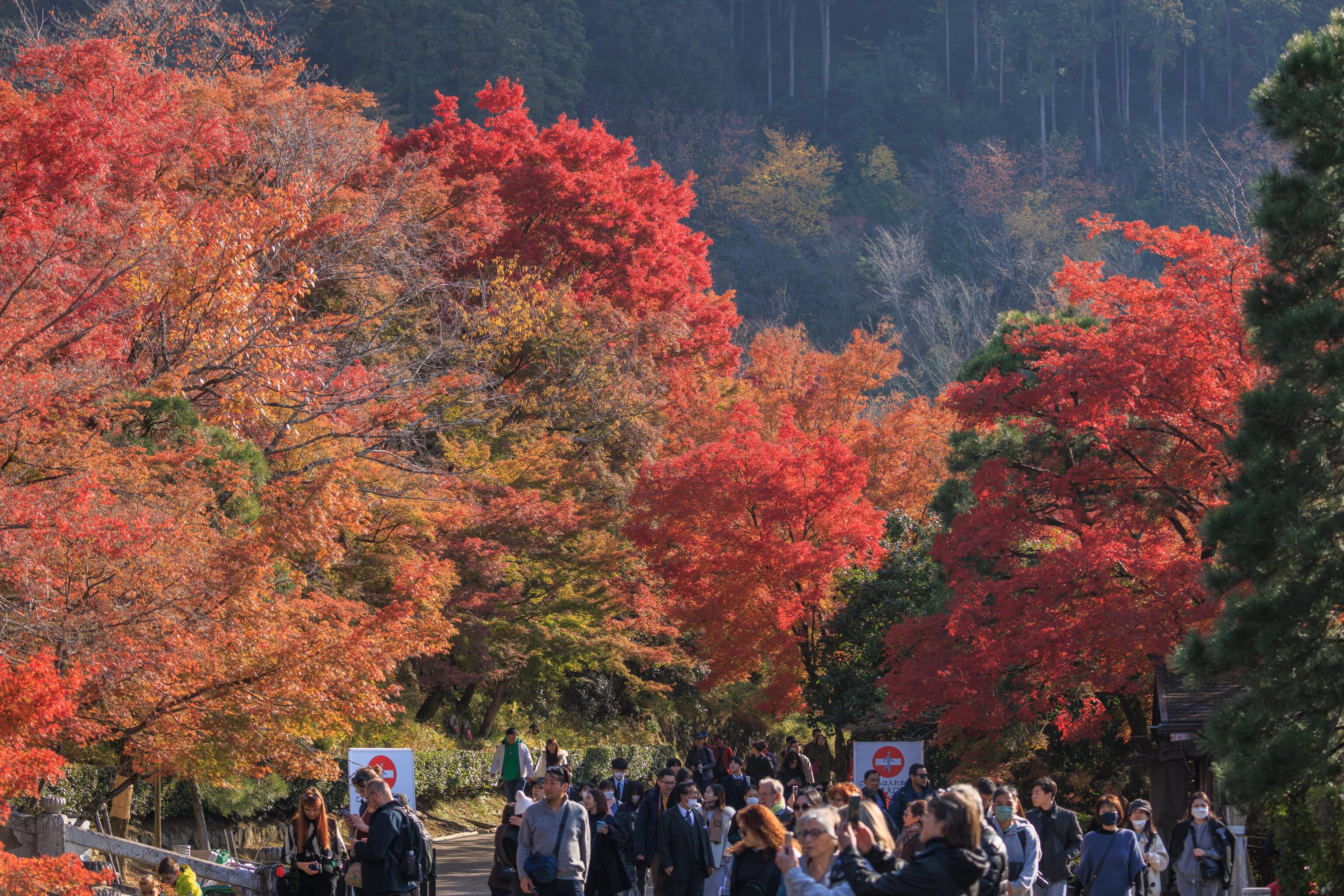
The view looking back towards the exit. It was quite busy!
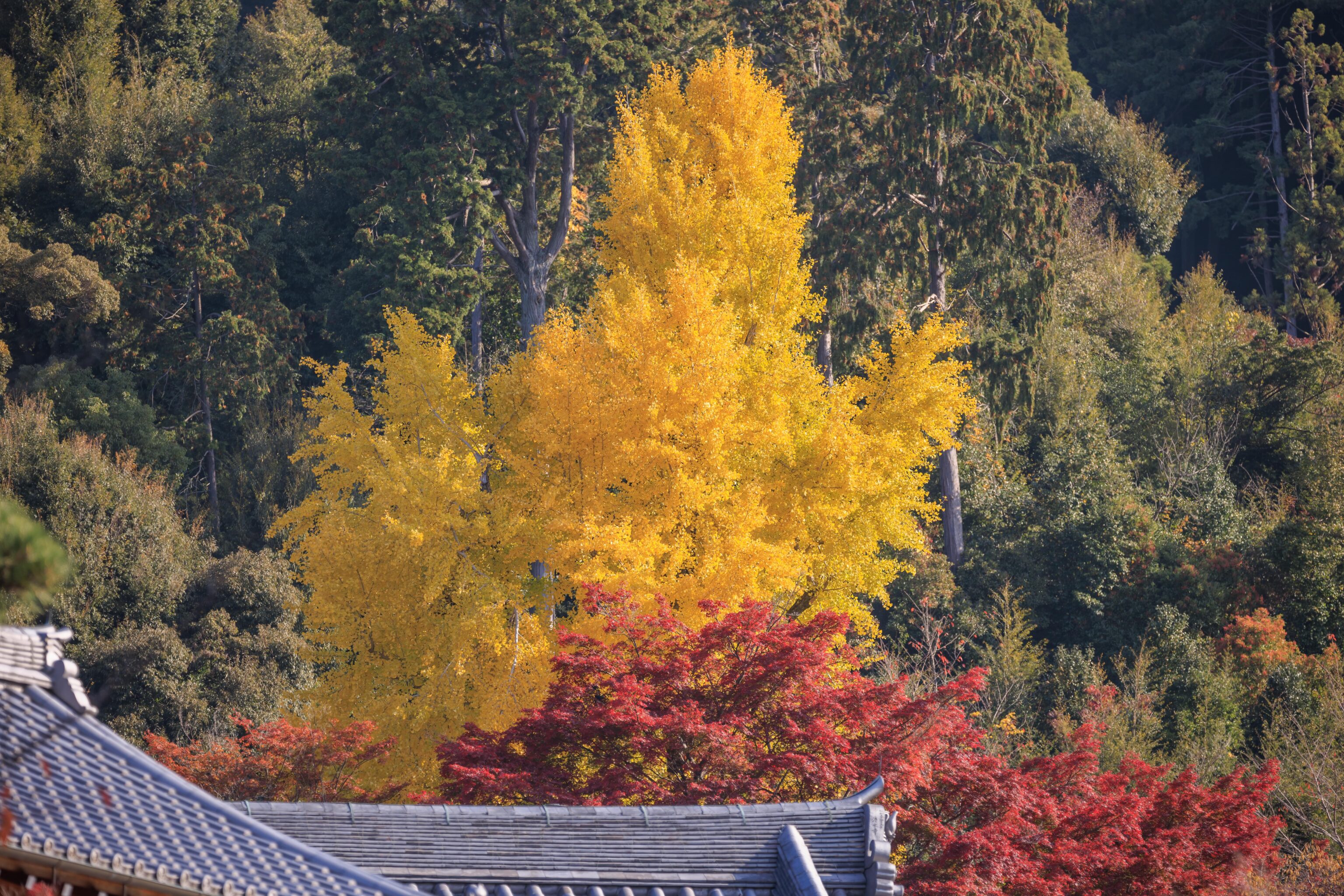
This one clump of trees, visible from the unpaid area of the temple grounds, really stood out because of its bright yellow color. It might be at home in Colorado but really stood out here as there was nothing else like it! It was far enough away that we didn’t go to get a closer look. Instead, we photographed it using the telephoto lens from the temple’s entrance.
Lunch
By now, we were getting hungry. We decided to go eat and come back around again later when the sun would be in a more advantageous position to illuminate all the trees. The road leading to Kiyomizu-dera is lined with various shops and restaurants and was extremely busy with hordes of people walking in both directions.
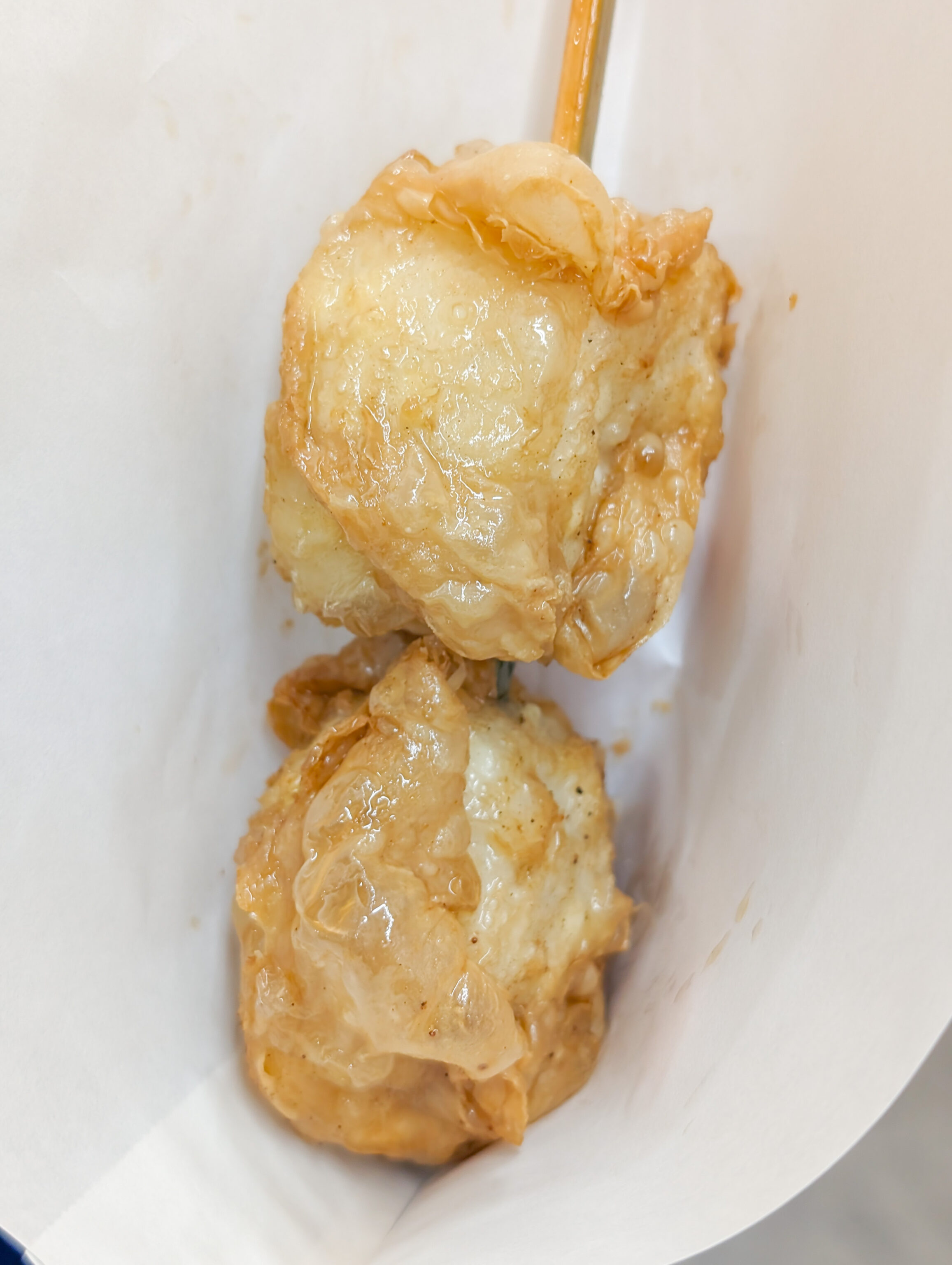
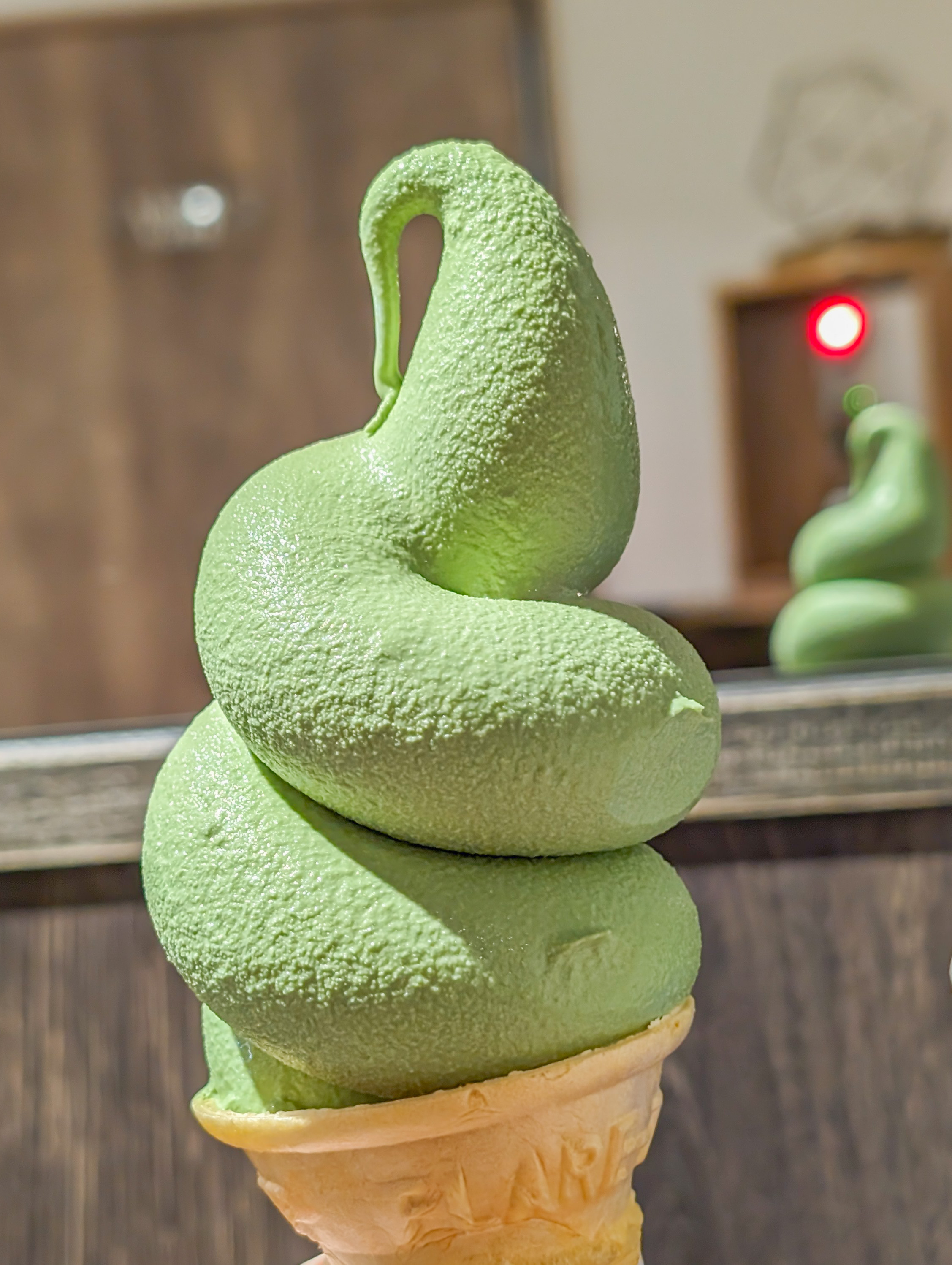
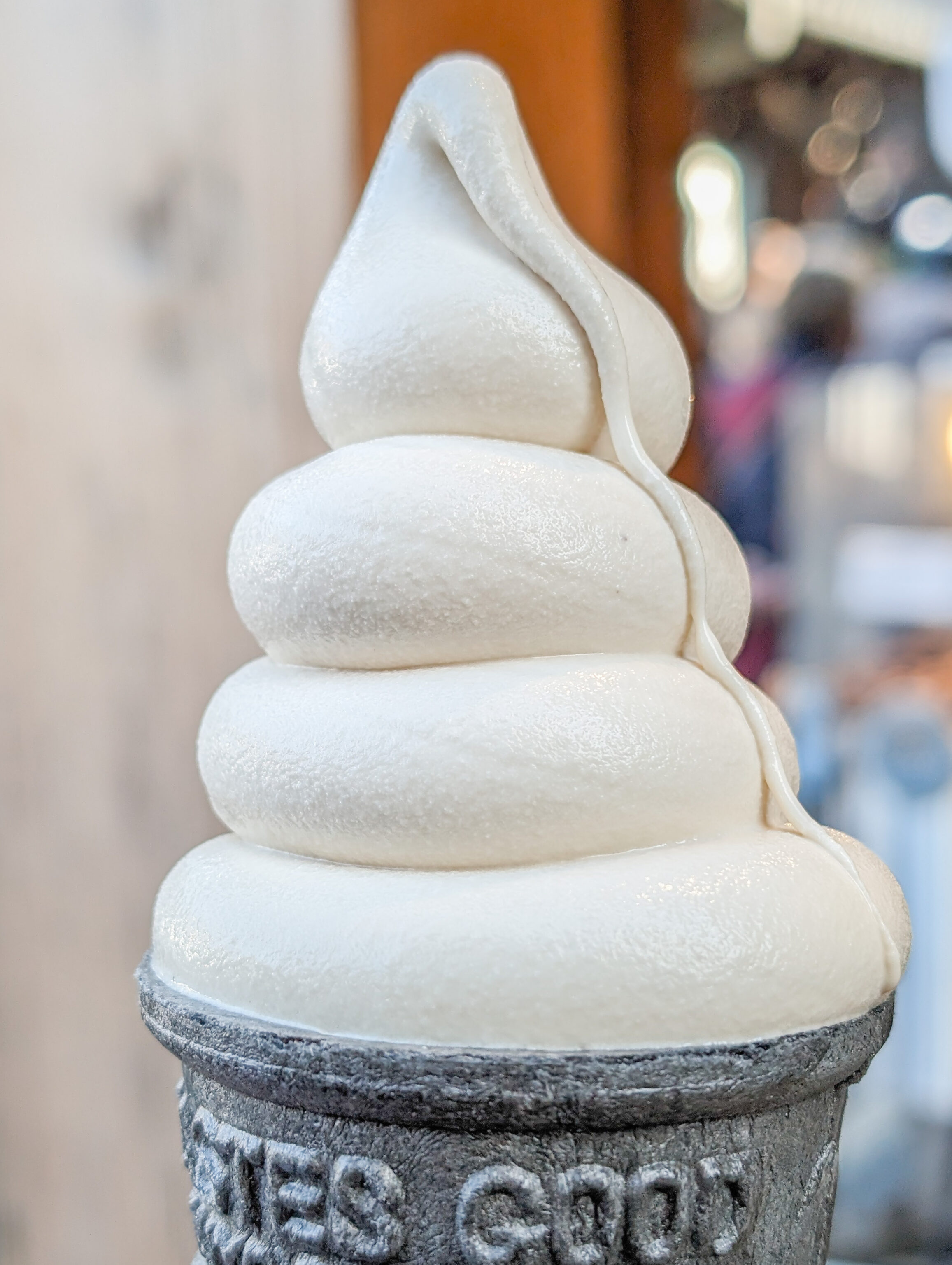
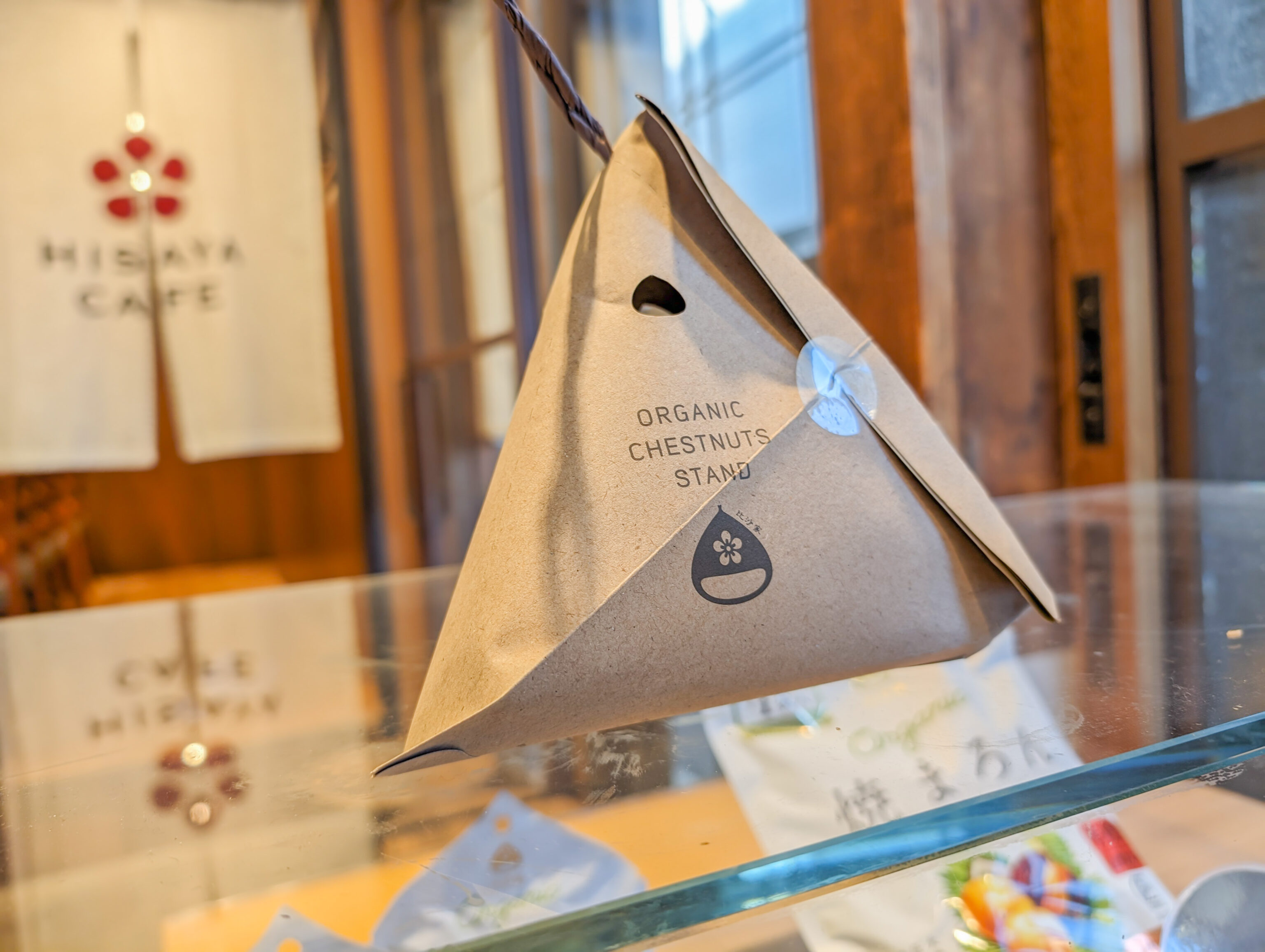
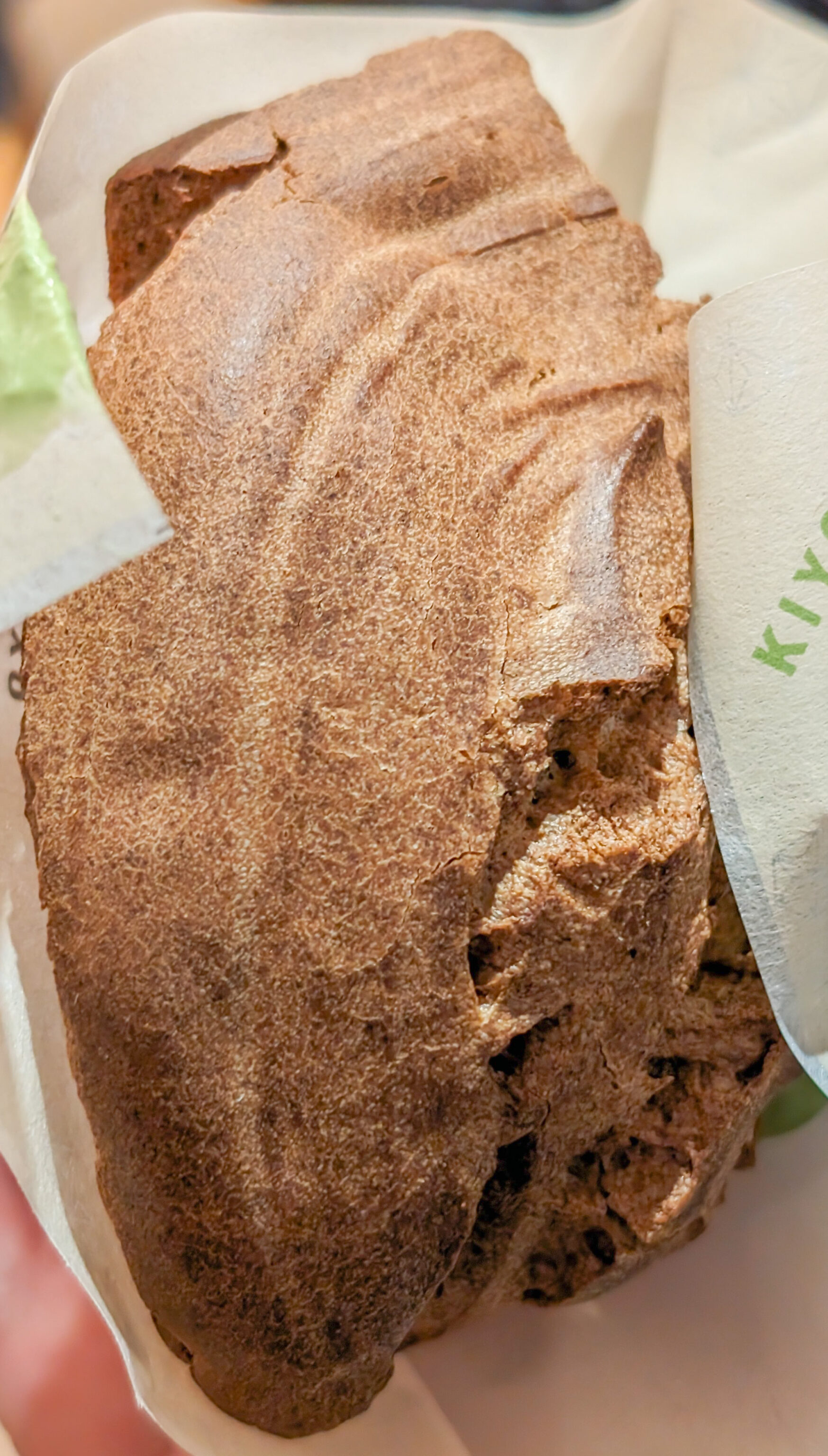
We got a few treats from various shops while deciding where to eat for lunch. We were a bit early so wandered around a bit more until the restaurant we wanted to eat at opened at 11am. The restaurant was above a Yatsuhashi shop, Honke Nishio Yatsuhashi. Yatsuhashi is a local Kyoto snack food and like many such foods in Japan are sold to be given as gifts. This type of gift culture is big in Japan but largely doesn’t exist in the US. Huge areas of department store basements as well as sections of train stations in touristy areas are often dedicated to these types of gift items. Like Buffalo wings and cheesesteaks in America, there is apparently some contention over who made the original product. Honke Nishio Yatsuhashi was founded in 1689 and claims to be the first9.
Yatsuhashi is also an eight planked bridge. We saw one in Tokyo yesterday at Koraku-en. One of the Yatsuhashi origin stories has it coming from Ise Monogatari, a book of poems and stories that introduced the eight planked bridge concept, though it may simply be the name of the original inventor of the snack10.
The shop had samples of both styles that it comes in, baked and steamed. The baked are hard and look like a specific type of clay roof tile to us, though it is apparently supposed to look like a piece cut off of a bamboo stalk11. The steamed ones are soft but relatively dry, cut into squares, and wrapped diagonally in half around a filling, resulting in a triangular appearance. Various fillings were available, ranging from red bean paste to various fruit flavors.
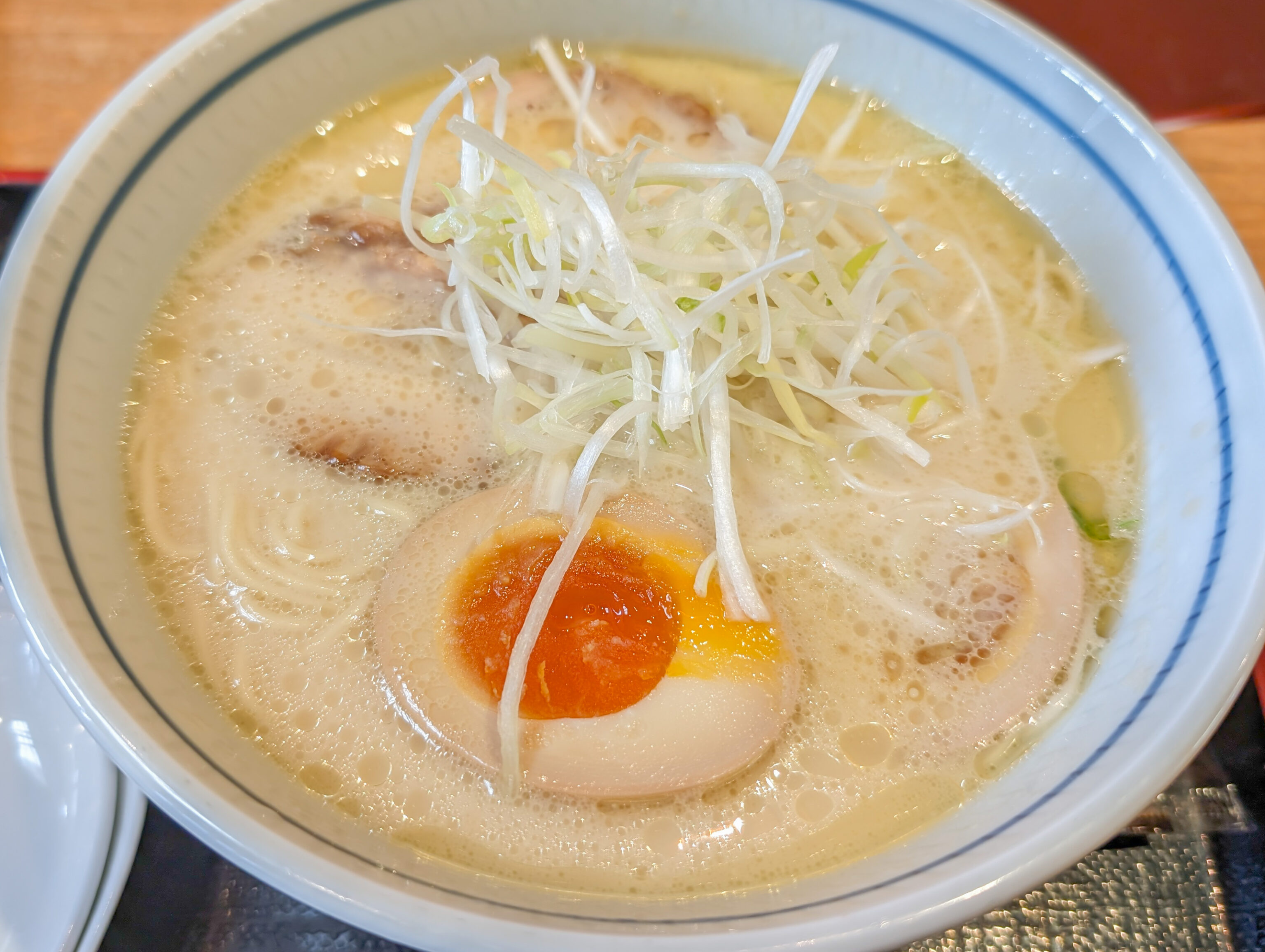
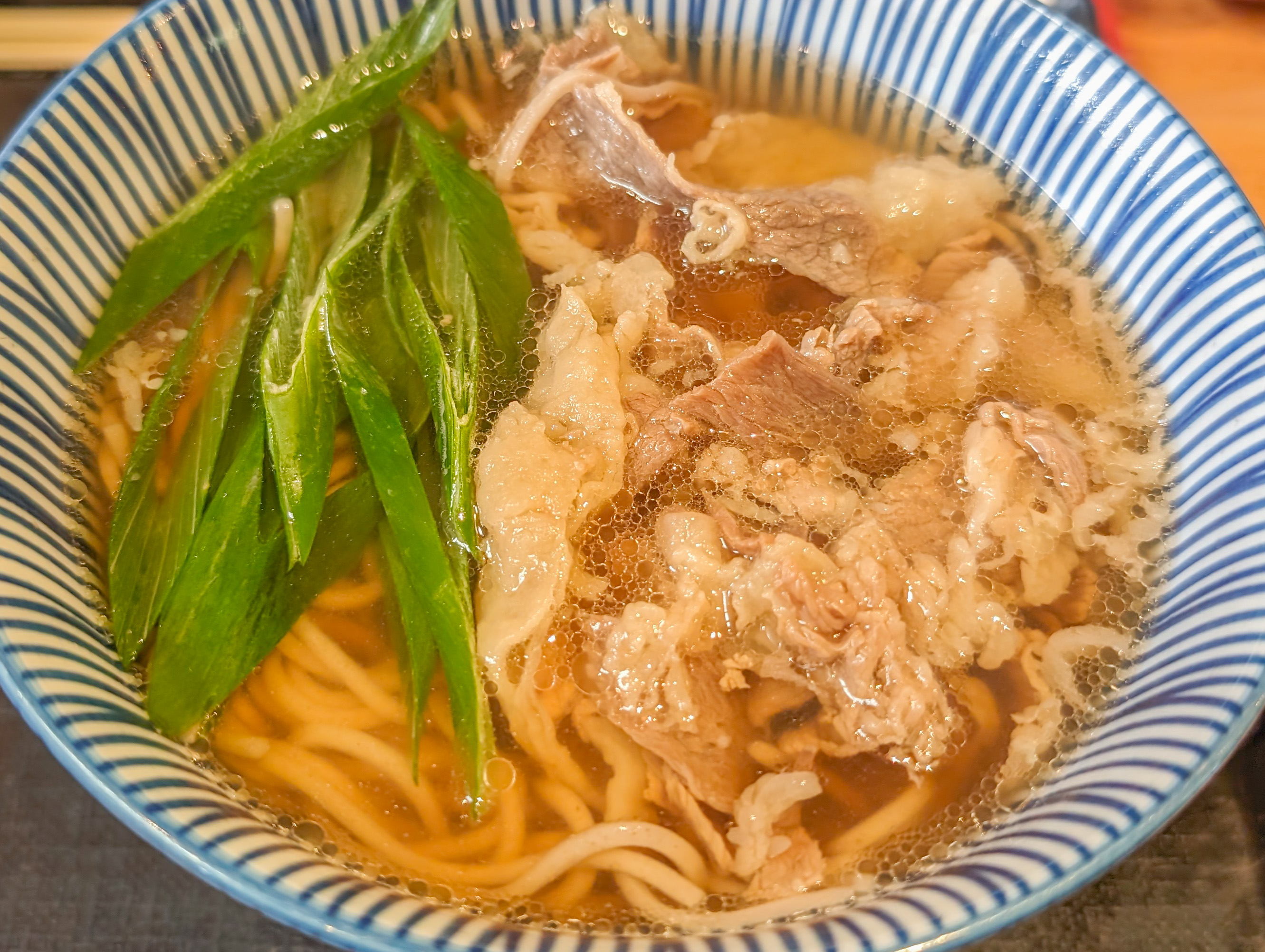
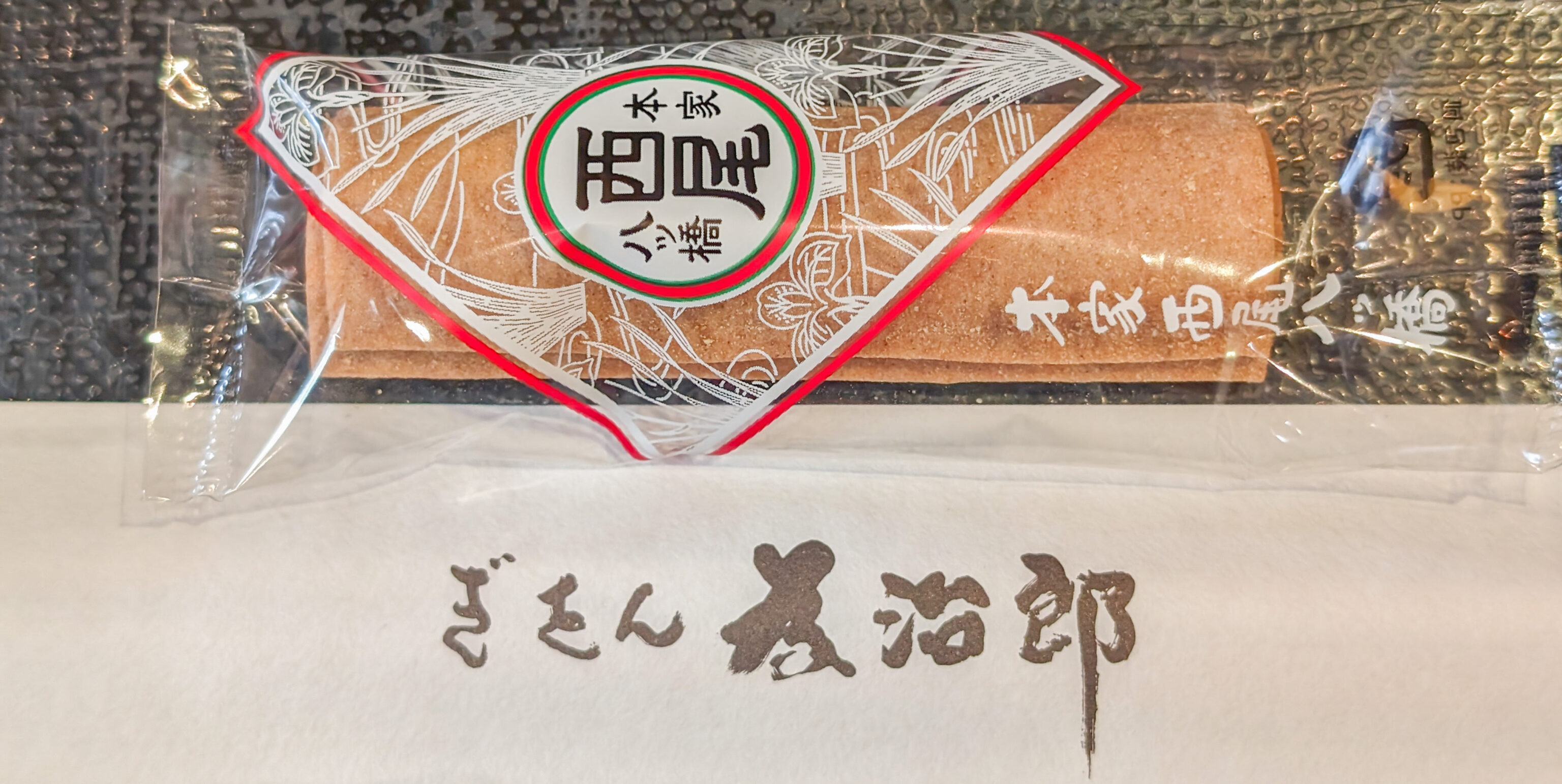
We arrived at the restaurant and were seated when it opened at 11am. The ramen had a strong chicken flavor with a creamyish soup. It was surprisingly good! It seems that Kyoto style ramen favors a rich, heavy broth, sometimes chicken based though it can also be pork12. The beef soba was pretty standard. Good, but the same product one can get anywhere in Japan. The baked Yatsuhashi was a surprise, kind of like getting a fortune cookie at an American Chinese restaurant in the US, except in this case the treat is actually authentic!
After eating, we went back downstairs and browsed the shop a bit more. We ended up buying some of the baked Yatsuhashi to give as gifts. Unfortunately, the shelf life of the steamed ones is pretty short, they’d only last a bit after our scheduled return.
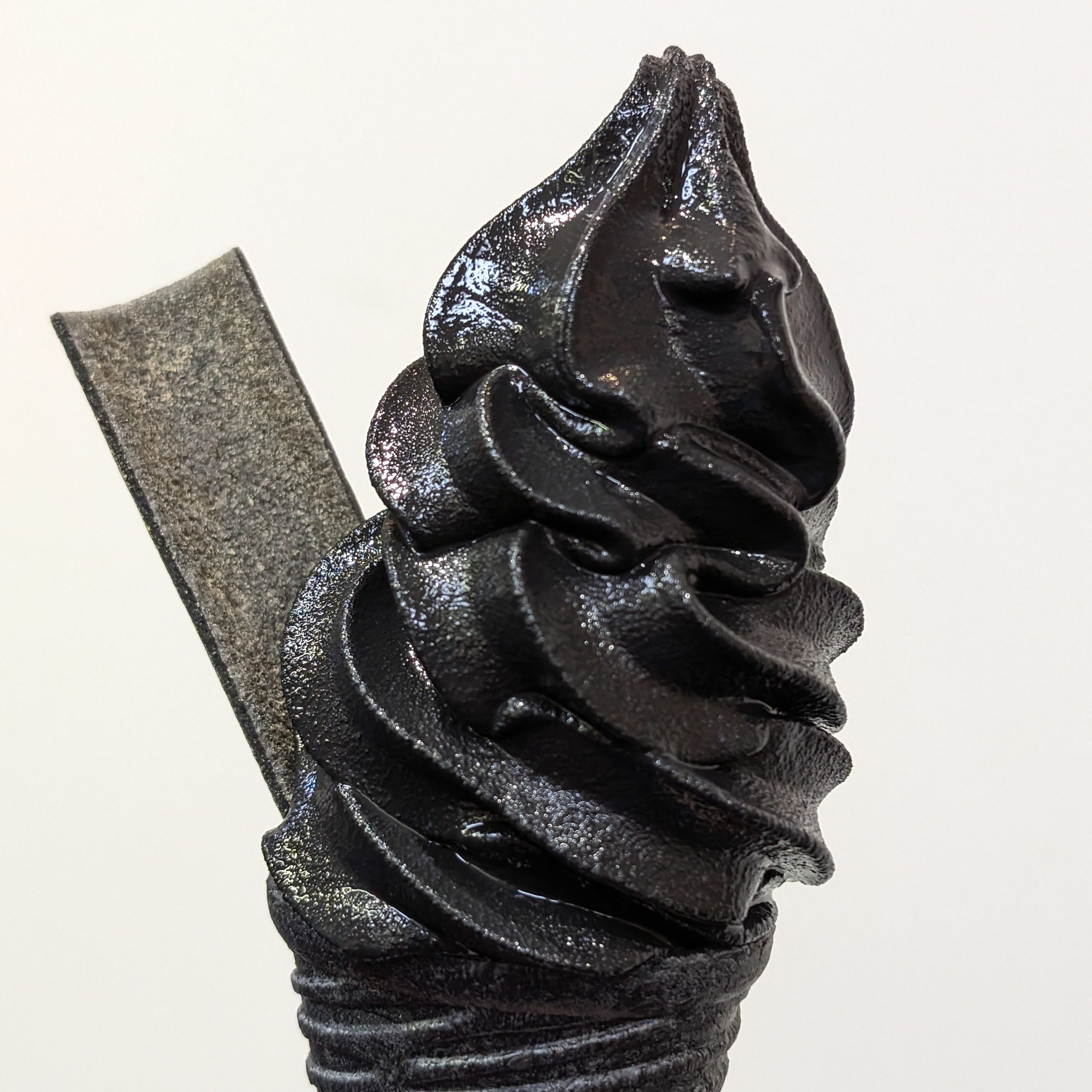
They also sell soft serve and had a very unique option! This isn’t a black and white photo, this is their espresso soft serve! It looked just like this. It came with a black baked Yatsuhashi as well which had a plain flavor, unlike the cinnamon that came with lunch. Its shape allows it to be used as a spoon if necessary! A very unique and tasty treat!
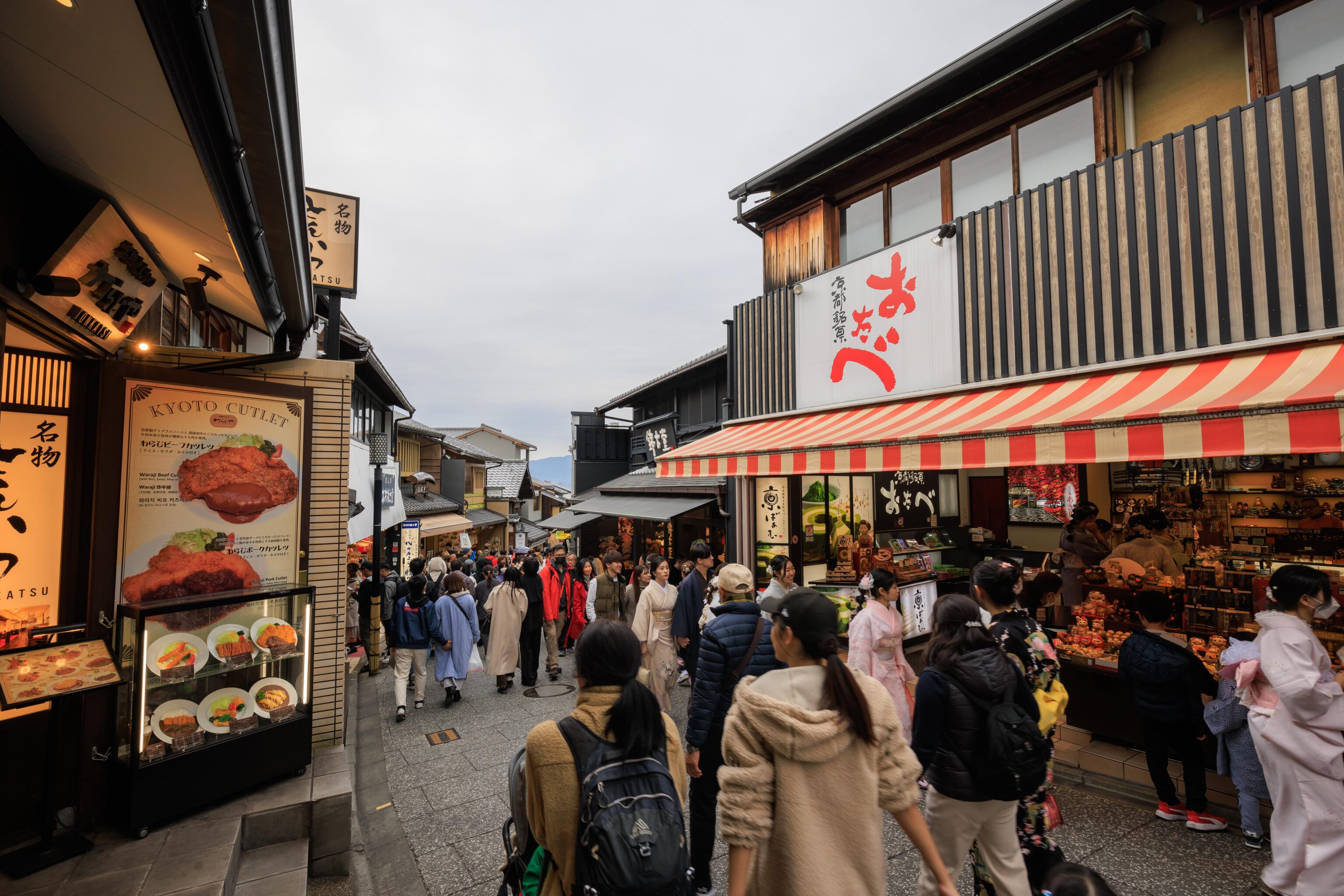
After lunch, we headed back out to find a dark overcast sky! And there were still hordes of people going up and down the street. Did we miscalculate in our strategy of waiting until after lunch to return to Kiyomizu-dera?
Kiyomizu-dera, Round 3
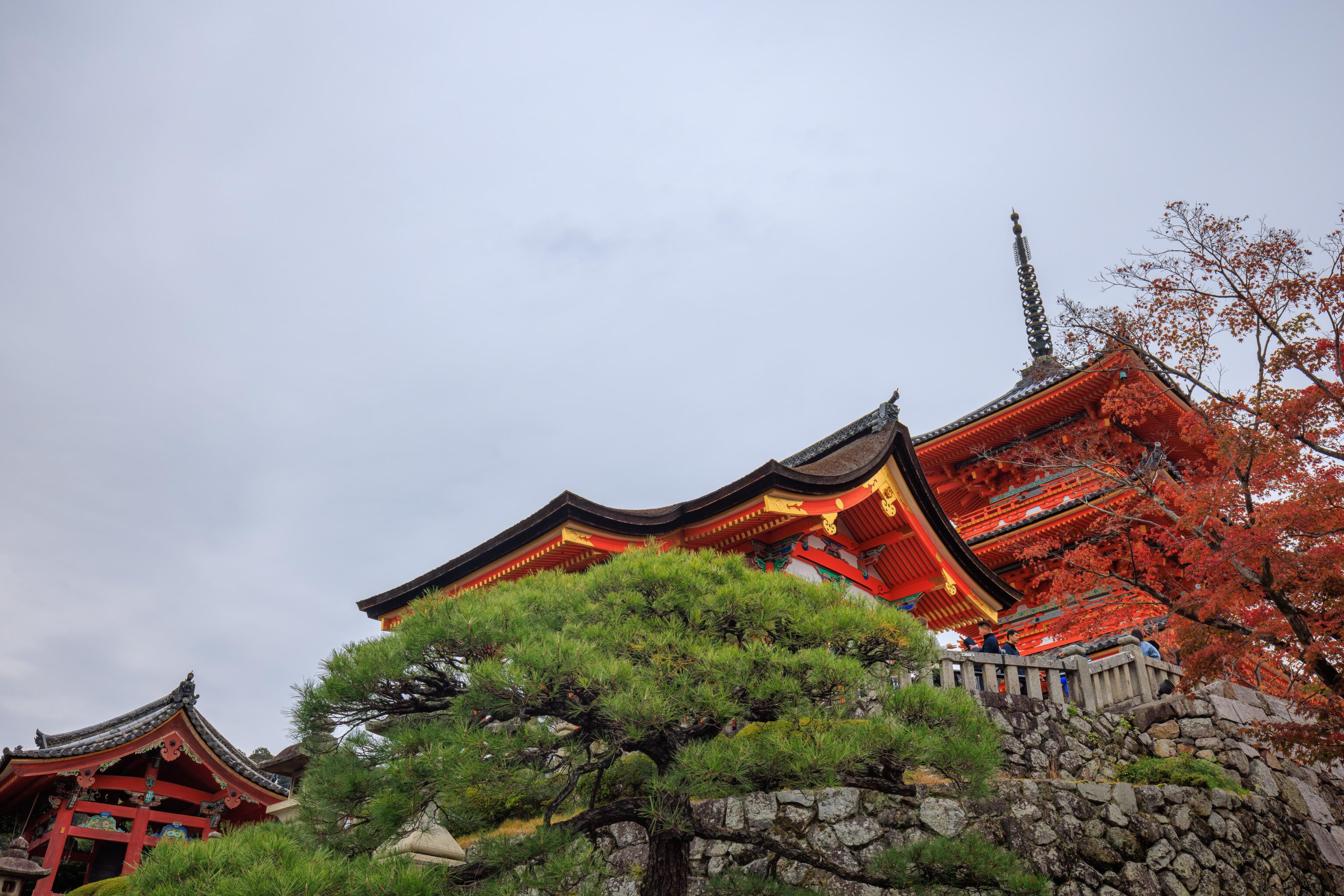
We headed back for round 3…
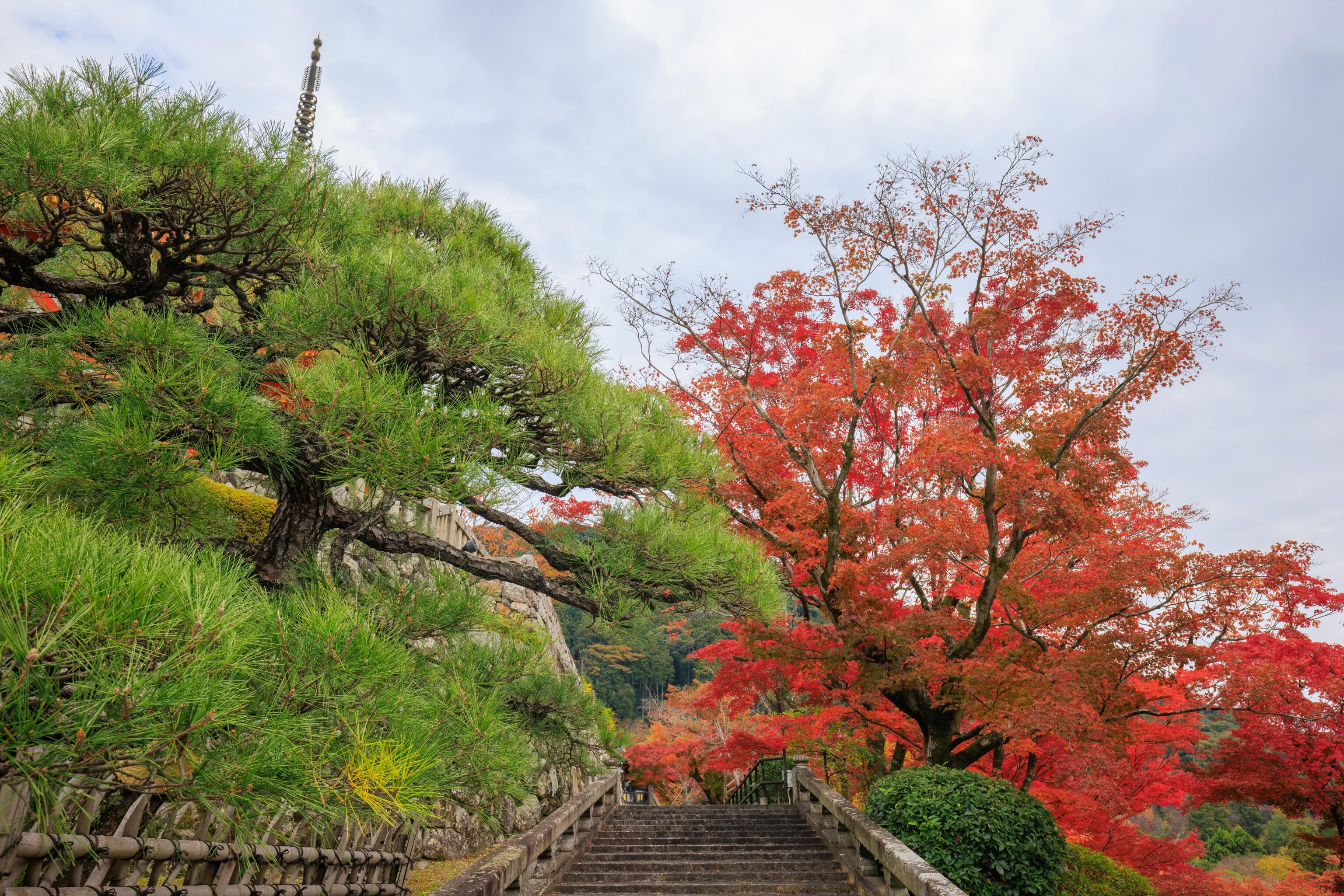
It didn’t look good, but it could clear up right?
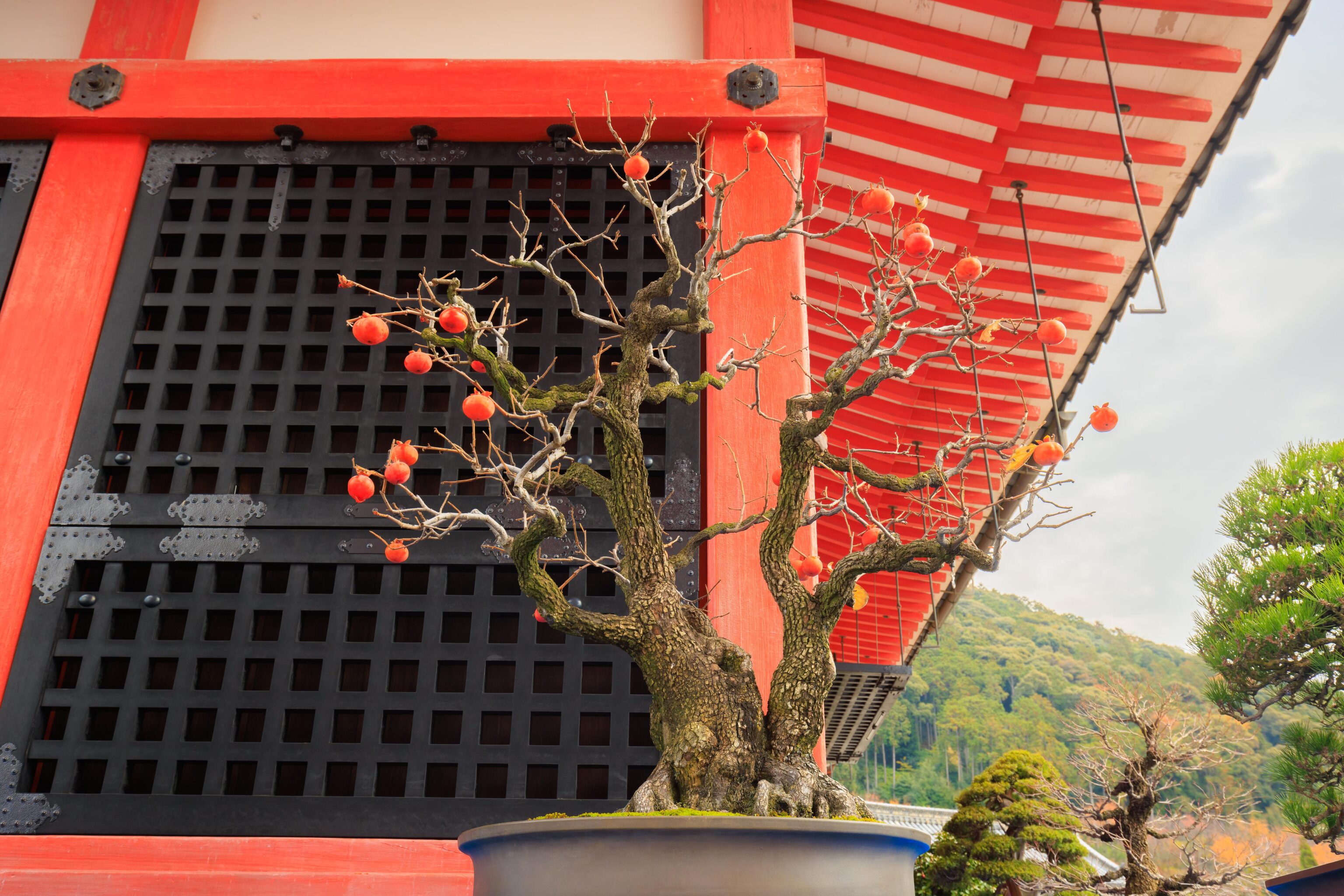
We didn’t photograph this fruiting bonsai earlier.
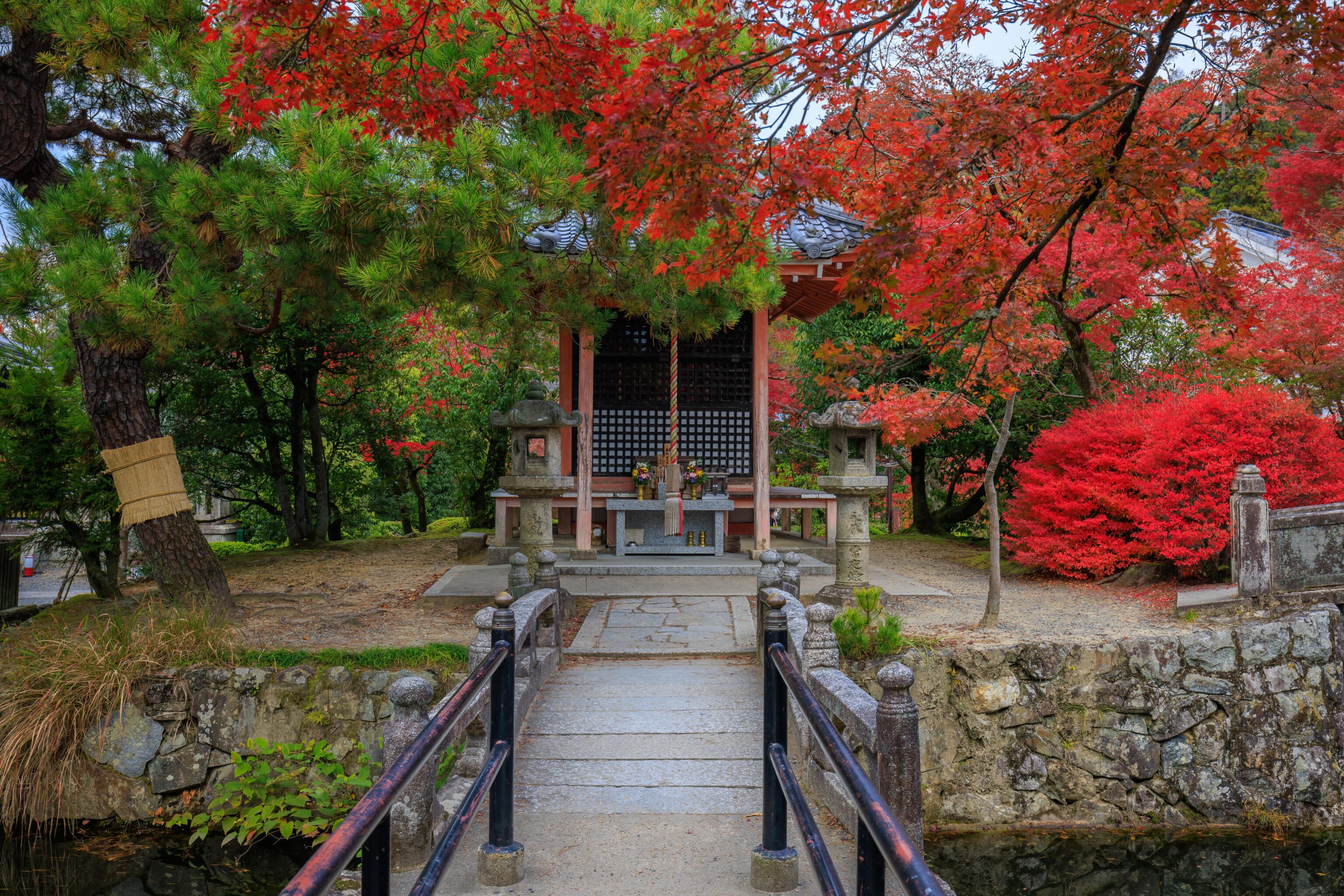
Before entering the ticketed area, we took a brief detour to explore the north section of the temple area.
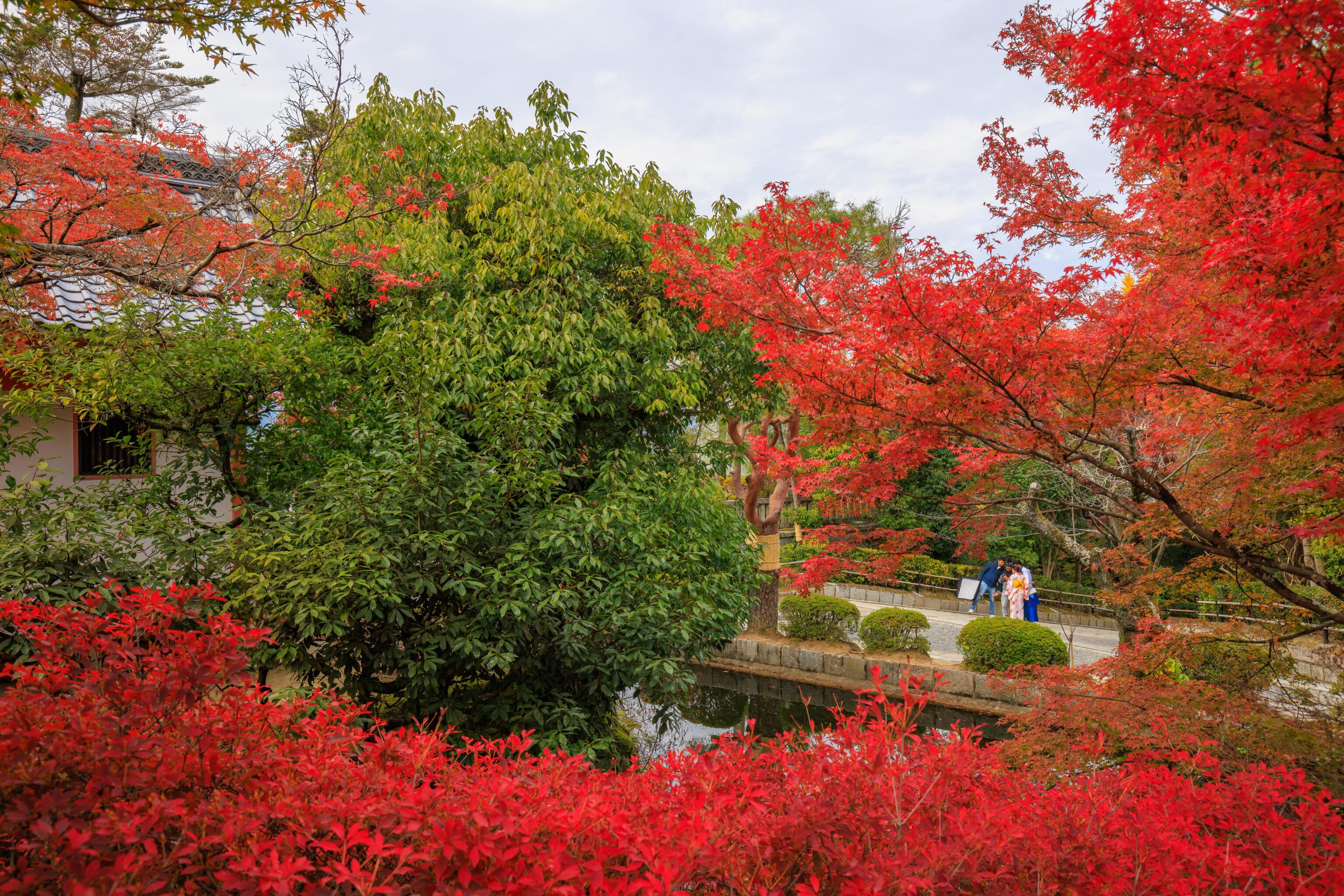
It was pretty nice with lots of red Japanese maple leaves. And other red leaves like on the bushes below.
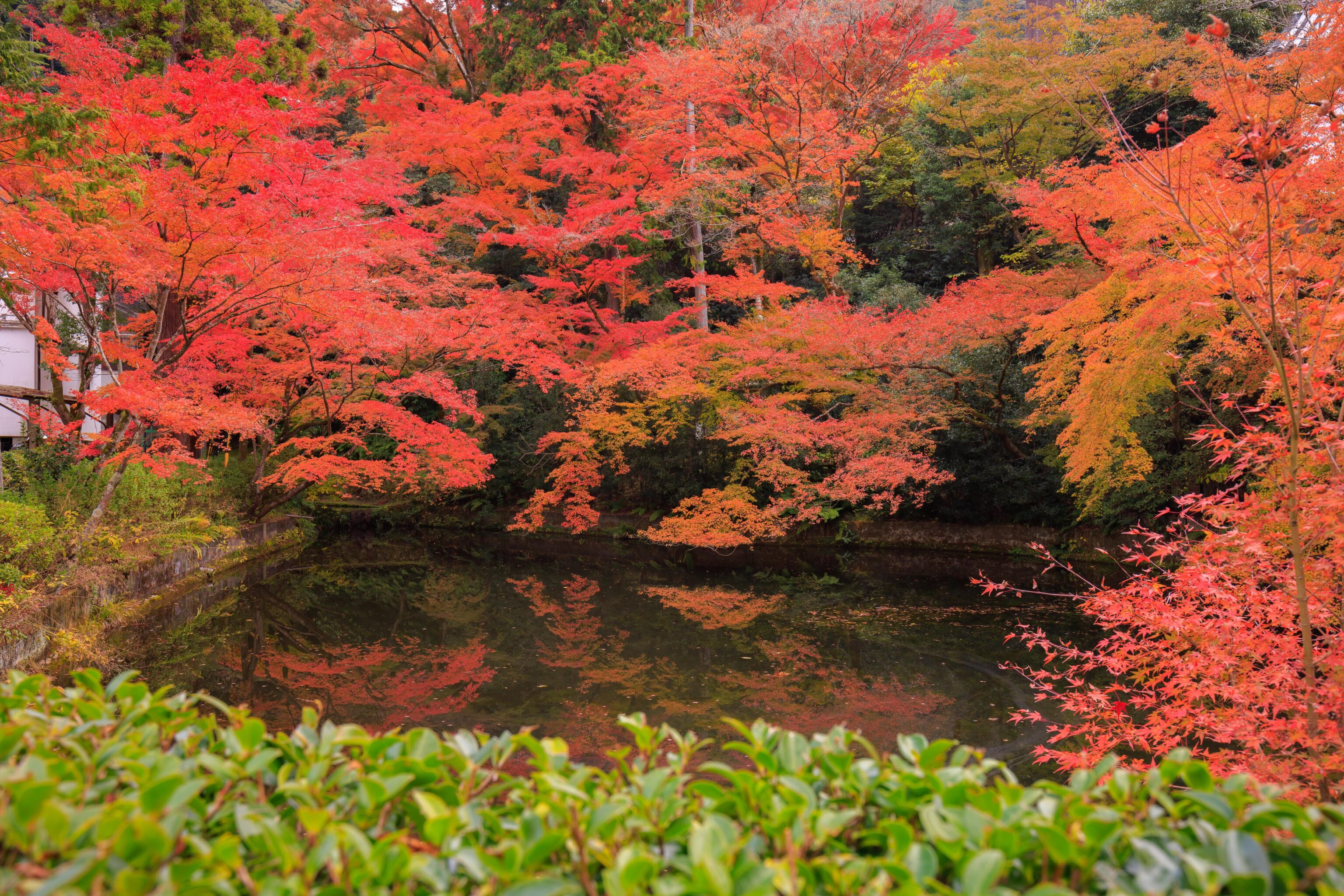
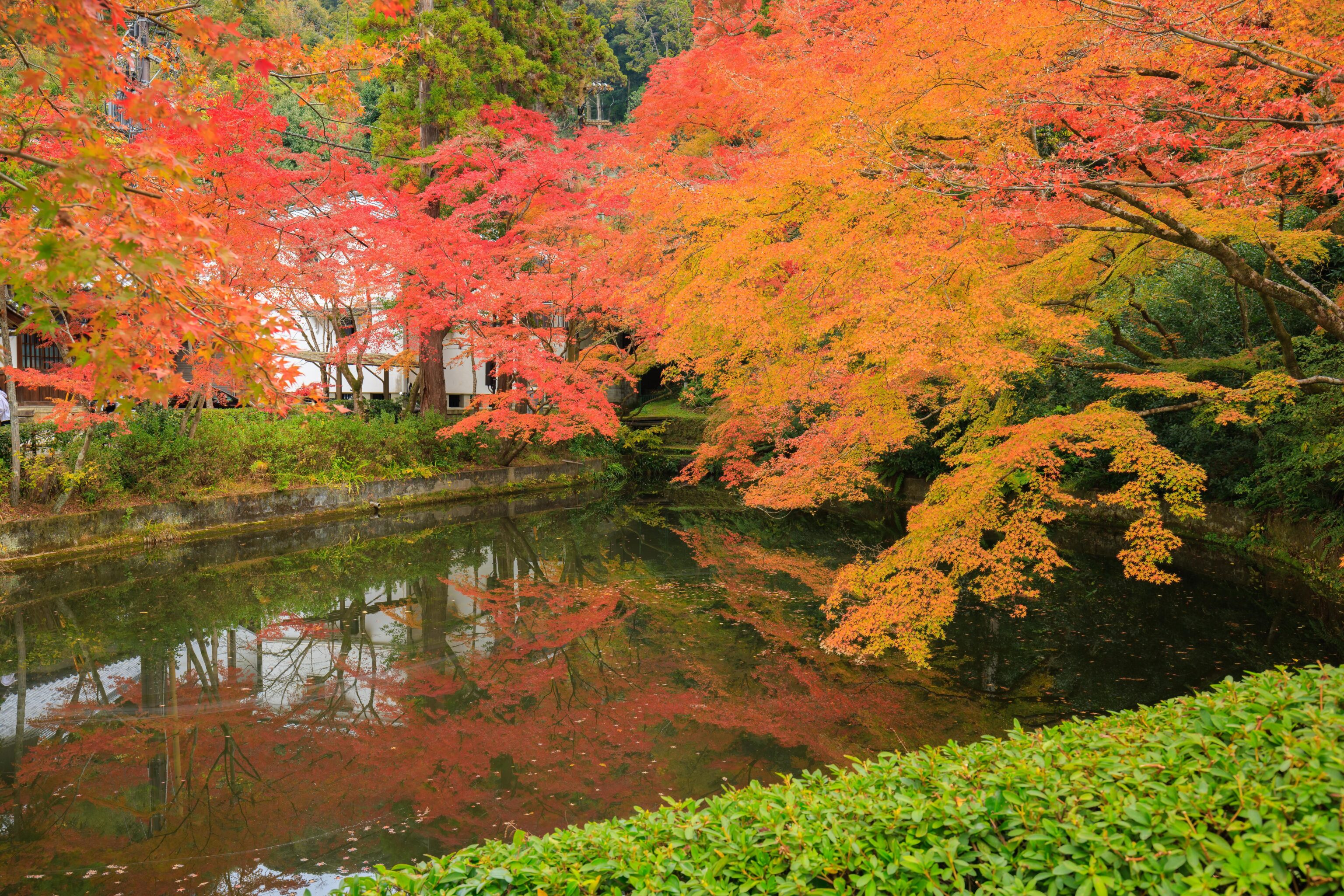
There was a nice little pond before reaching Joju-in, one of Kiyomizu-dera’s sub-temples and #24 on the map.
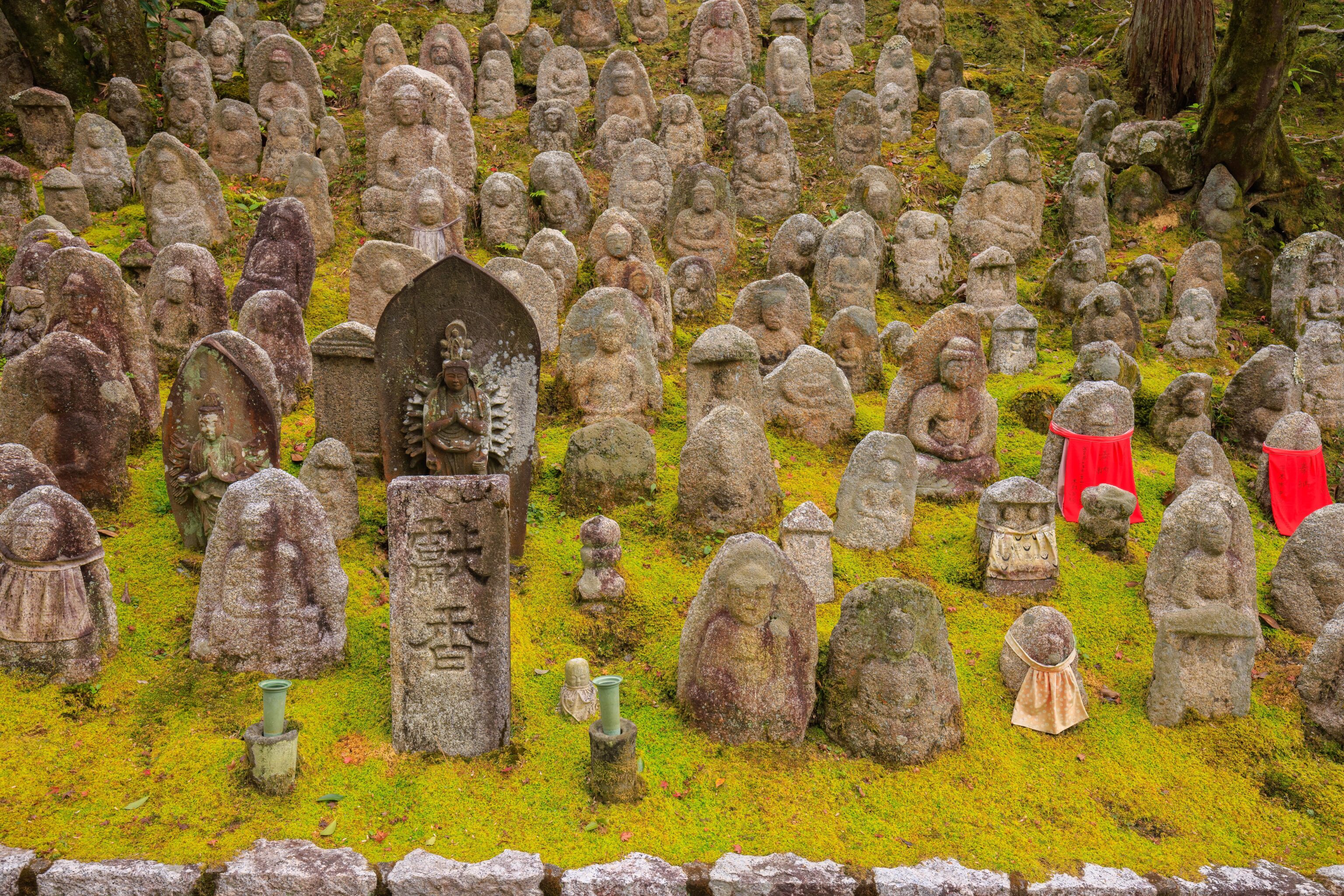
This large batch of Jizo statues aren’t labelled on the map but they do seem to appear above the marker for #25. Only a few had the standard red bib and none had a hat.
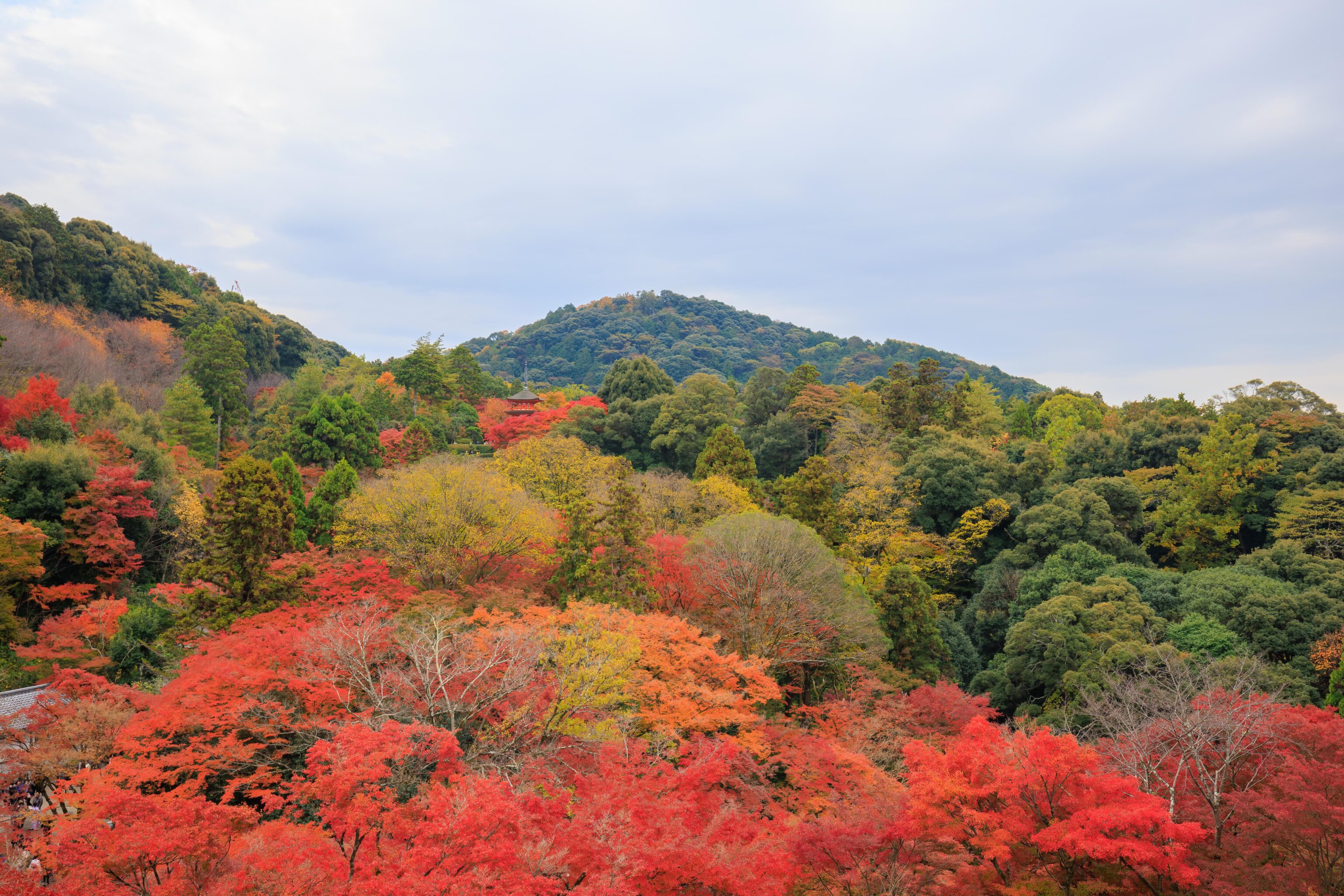
After our brief detour, we passed through the Middle Gate for the third time today. The light was very uniform due to the overcast sky. Interestingly, we noticed that even though it was extremely crowded, the ticket office had minimal queues. There are a number of windows, all of which seemed to be open, and buying a ticket is very quick.
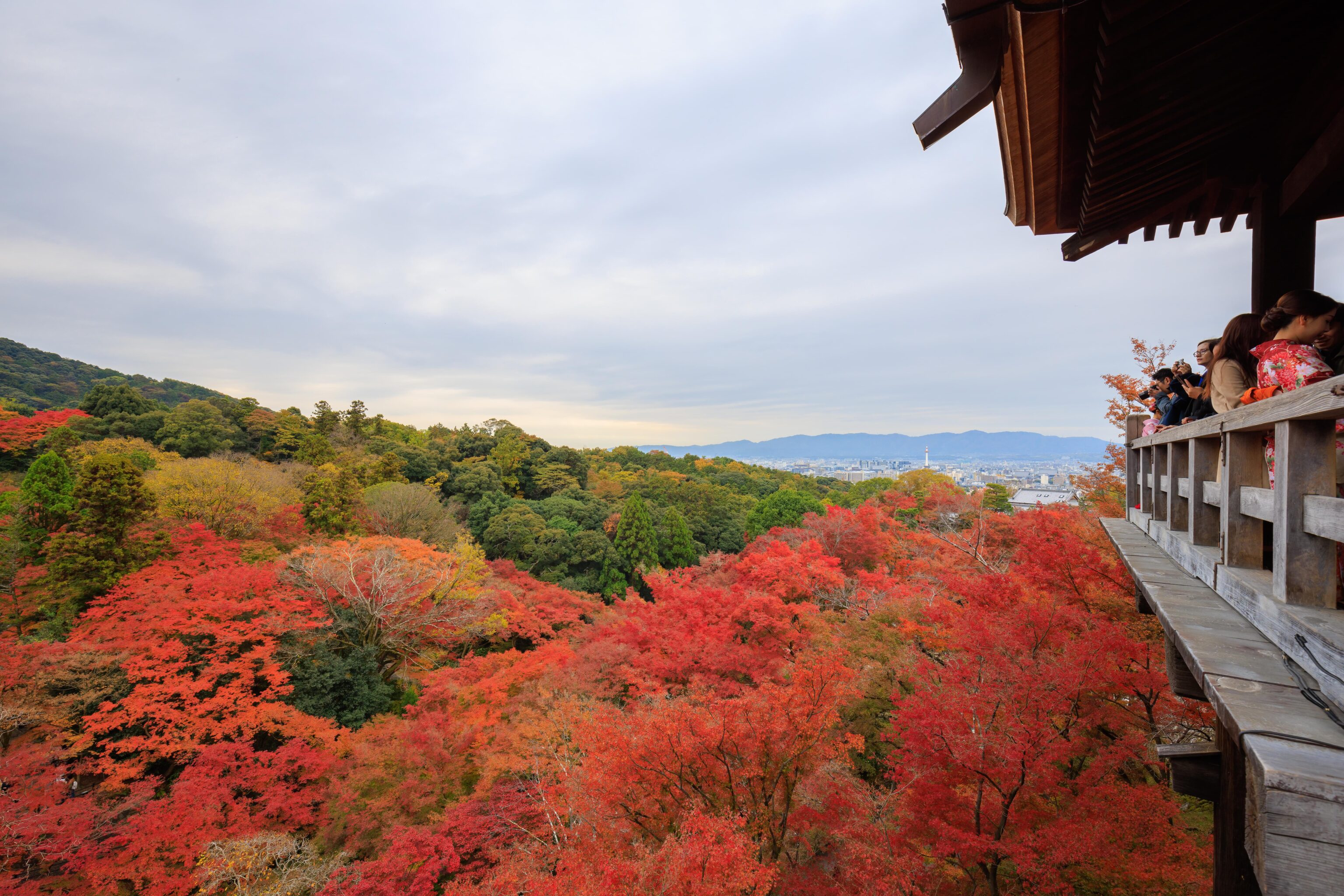
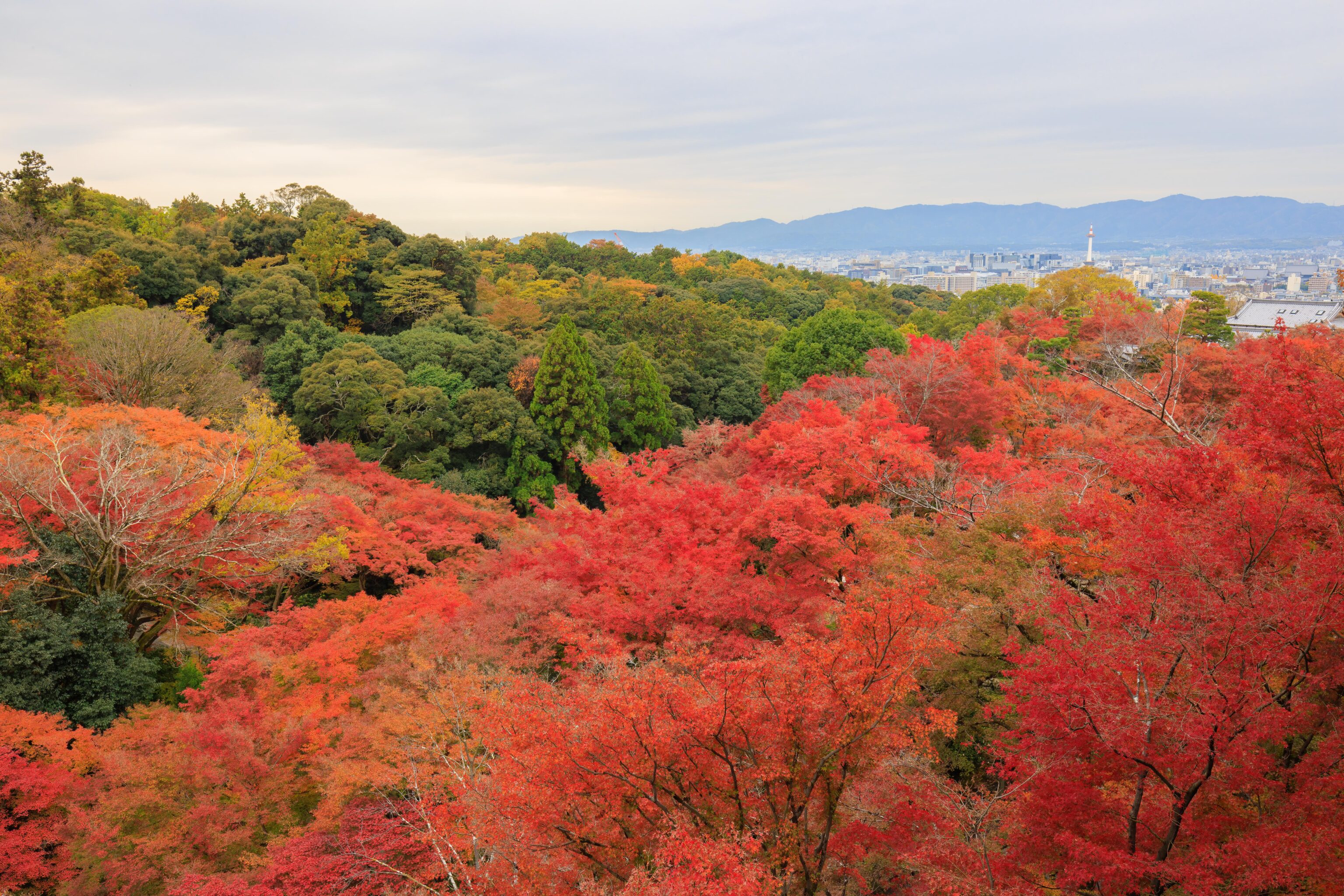
Still a beautiful scene!
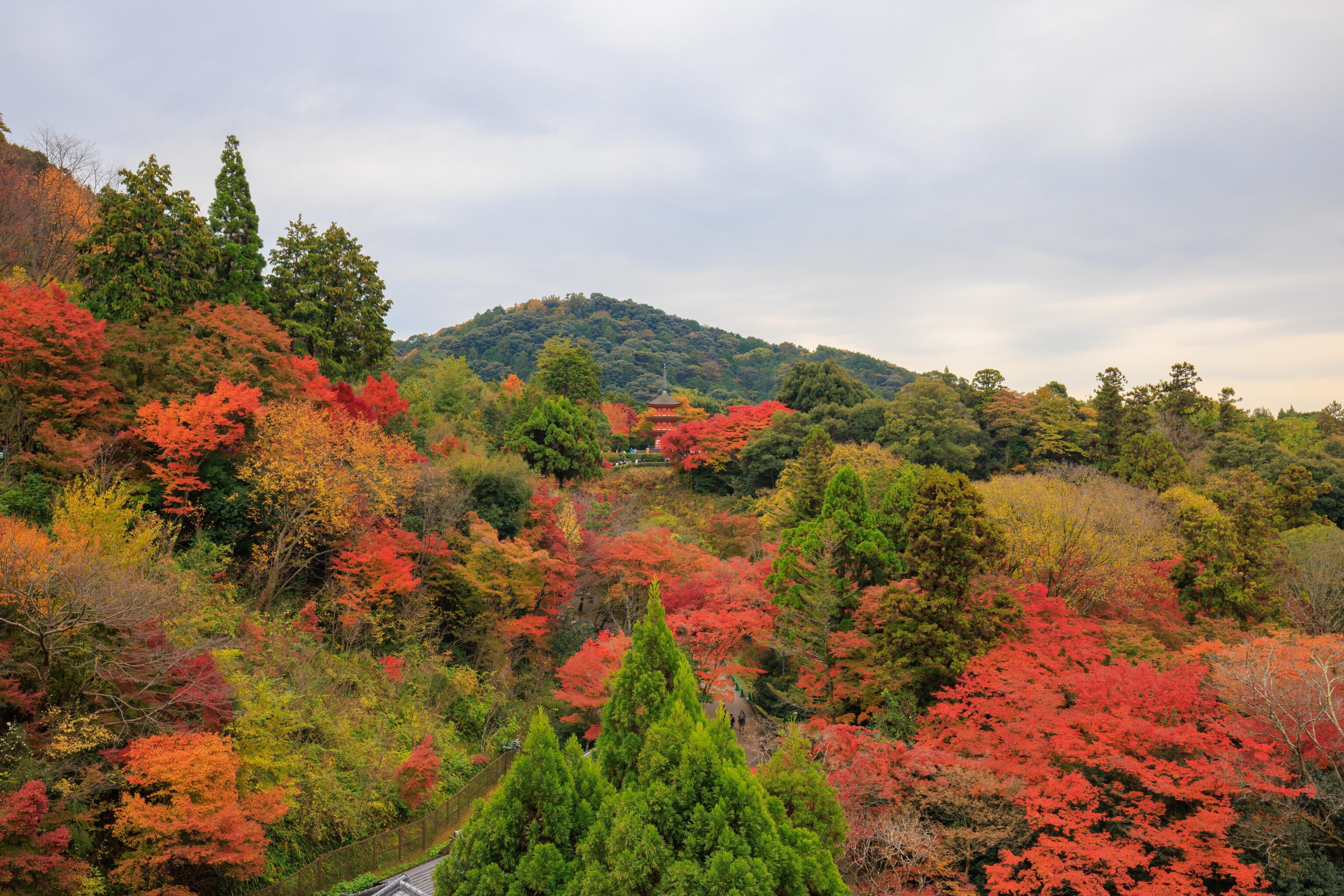
Looking to the south at the Koyasu Pagoda. It is still much less crowded there compared to where we are at the Main Hall, though it does look a bit busier than it was earlier in the day.
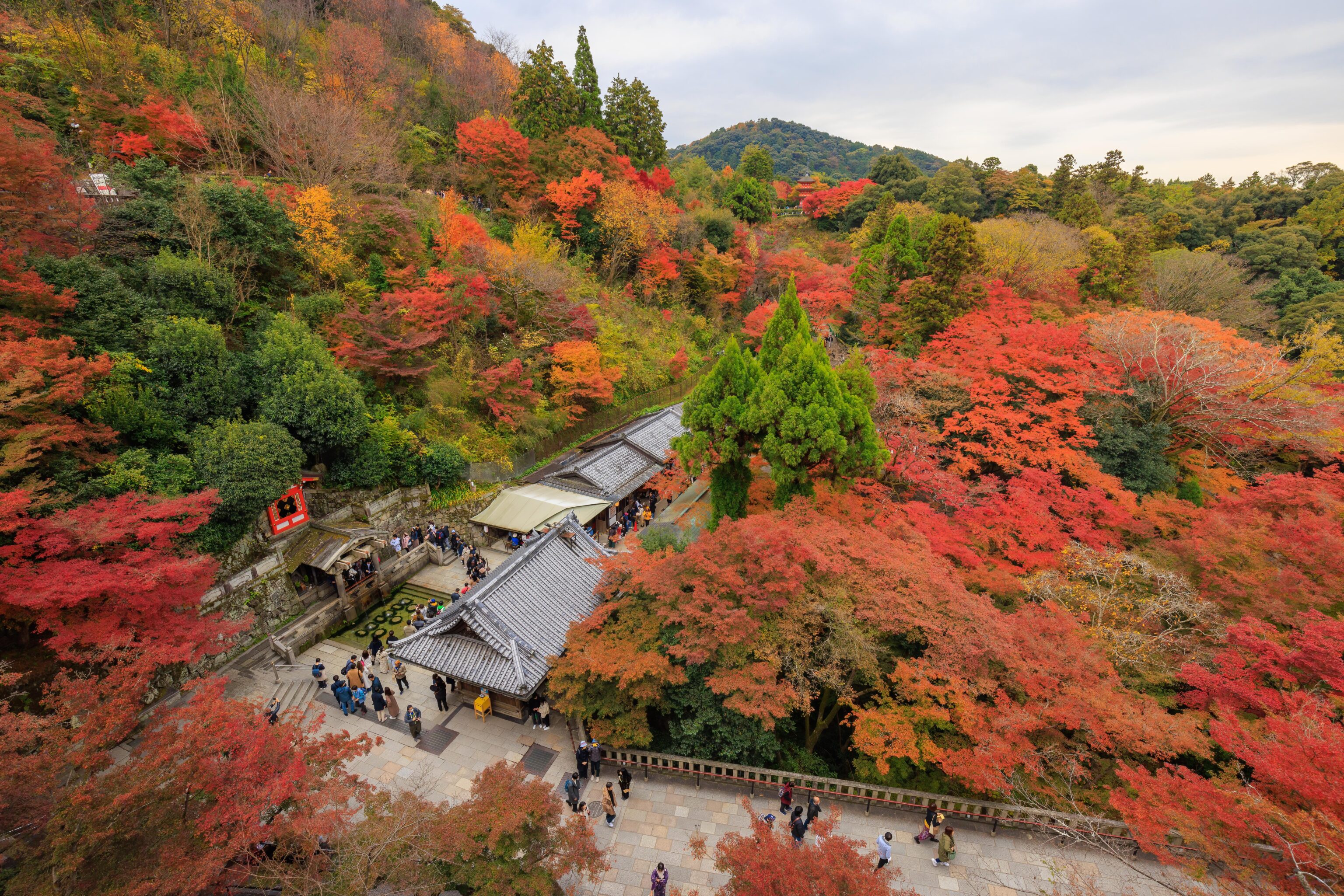
Look at that huge queue for the Otowa Waterfall! Larger Japanese temples and gardens often have some sort of rest house style facility that serves tea, snacks, and maybe some hot food like soba noodles. There is one down there next to the Otowa Waterfall, it can be identified by the tented seating area. It also is busy with a queue.
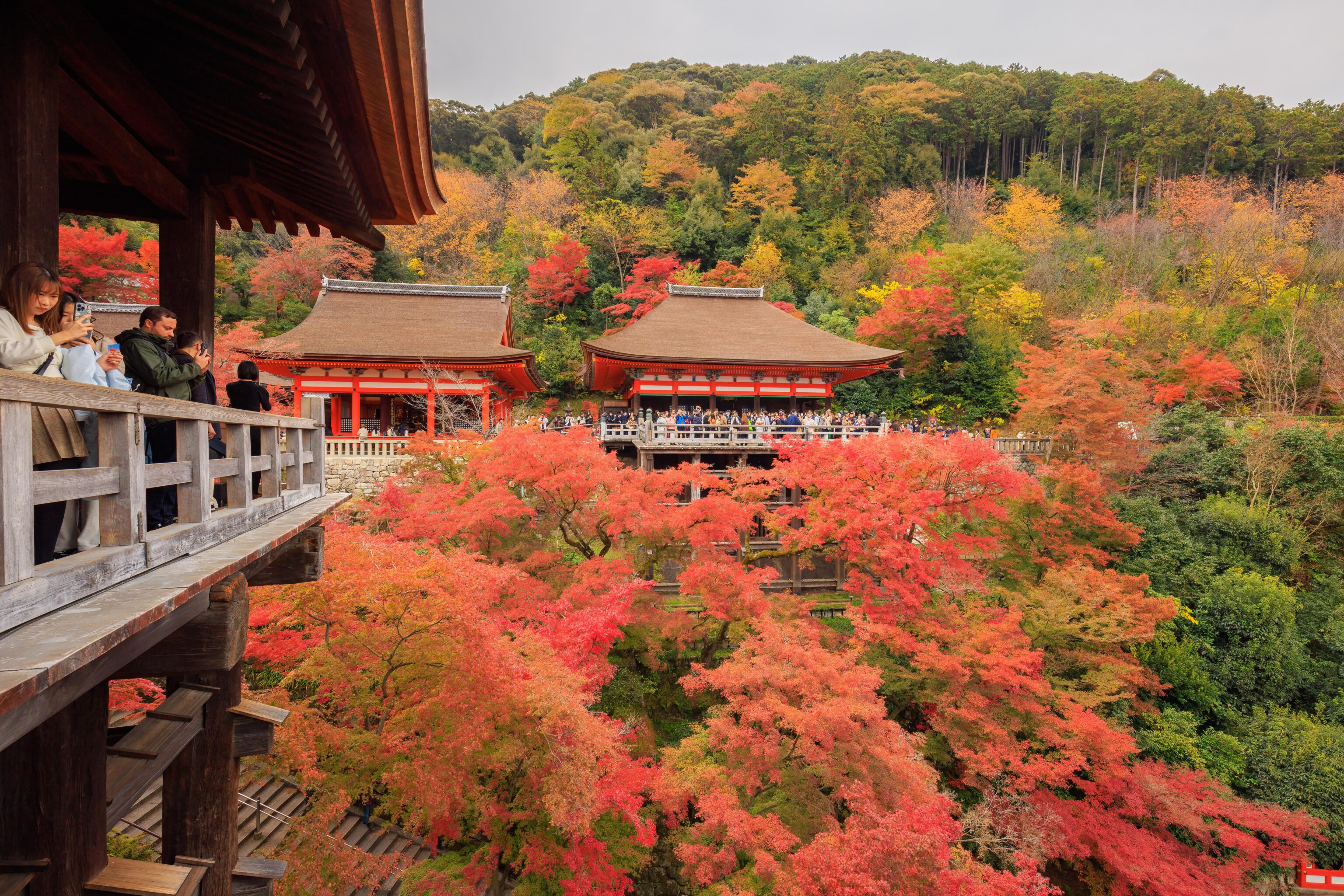
Okuno-in also looks ridiculously busy. Lets go and see how the view has changed!
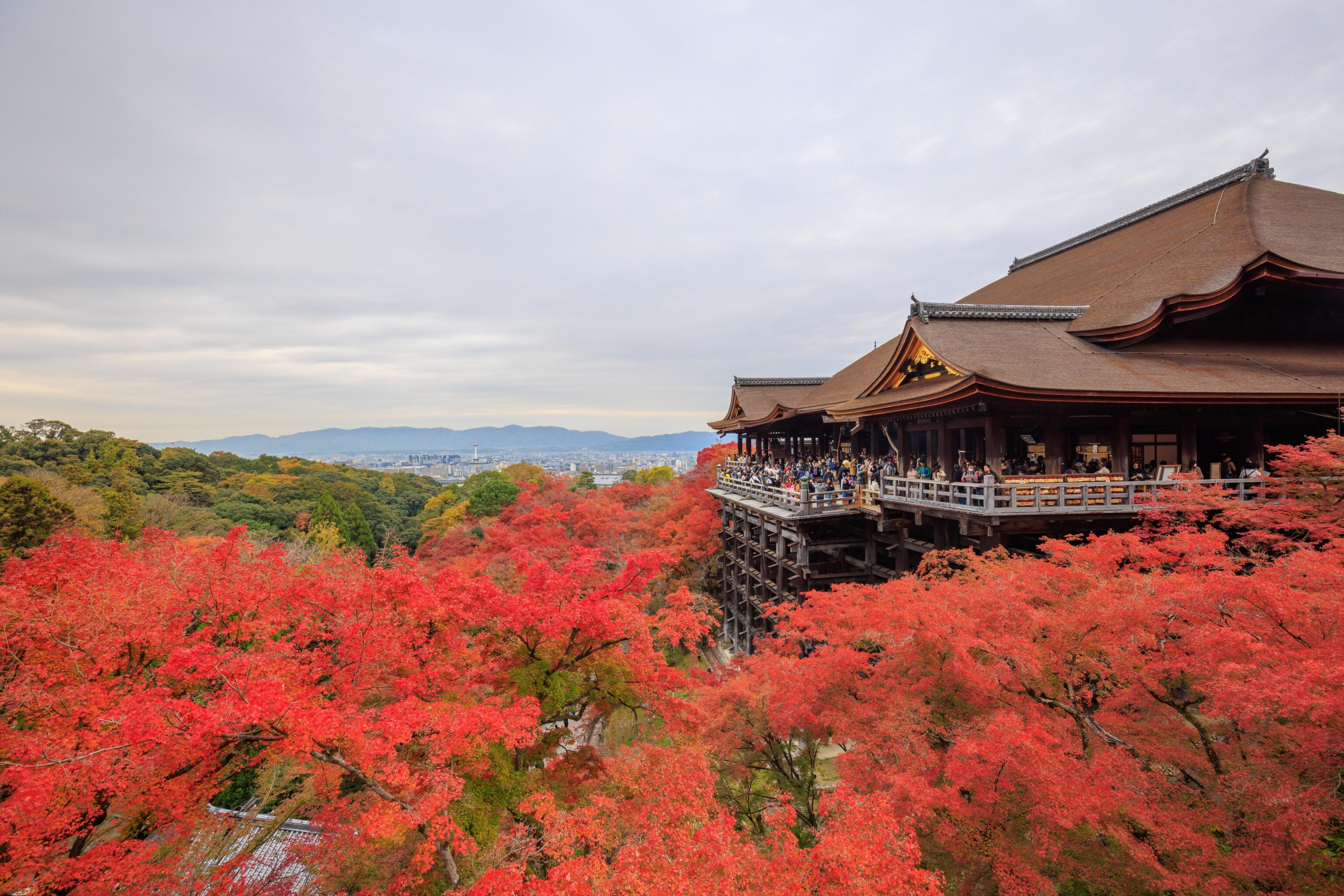
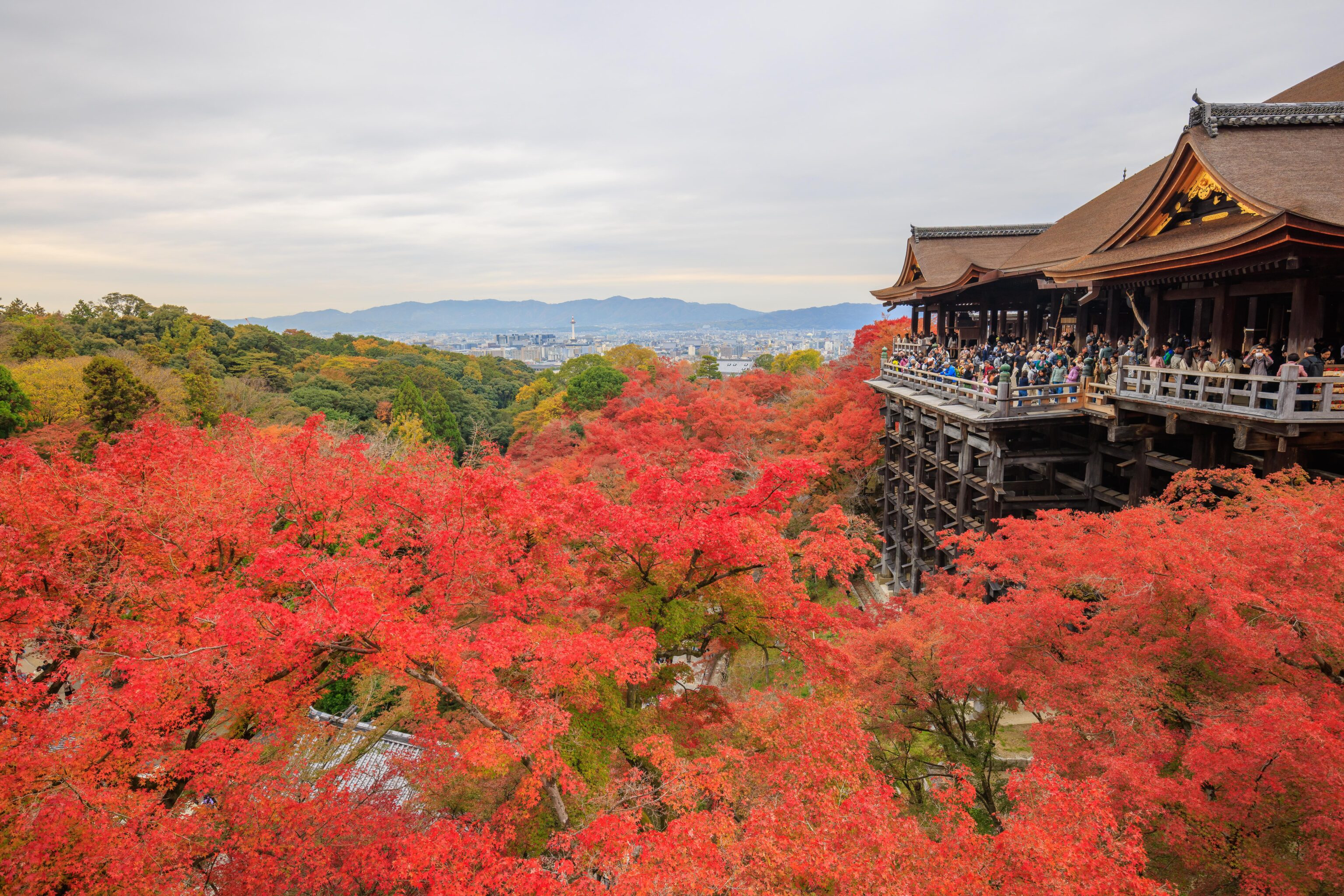
It is still a pretty view, though it would look much better with more light! This probably would be fantastic if the sky was clear as the sun would be off somewhere to the left, illuminating the entire scene. The Main Hall, where we just came from, was also very busy, though not nearly as much as Okuno-in where we are now. The area in front of Okuno-in is also much smaller so there are always plenty of people waiting to get to the front row for the view.
For an idea of what Kiyomizu-dera is like with no people around, I somehow happened to come across Susan Spann’s website. She wrote Kiyomizu-dera: A Mountainside Kyoto Temple With a Sacred Waterfall back in 2021 when Japan was closed to foreign tourists. Sounds like a very different experience!
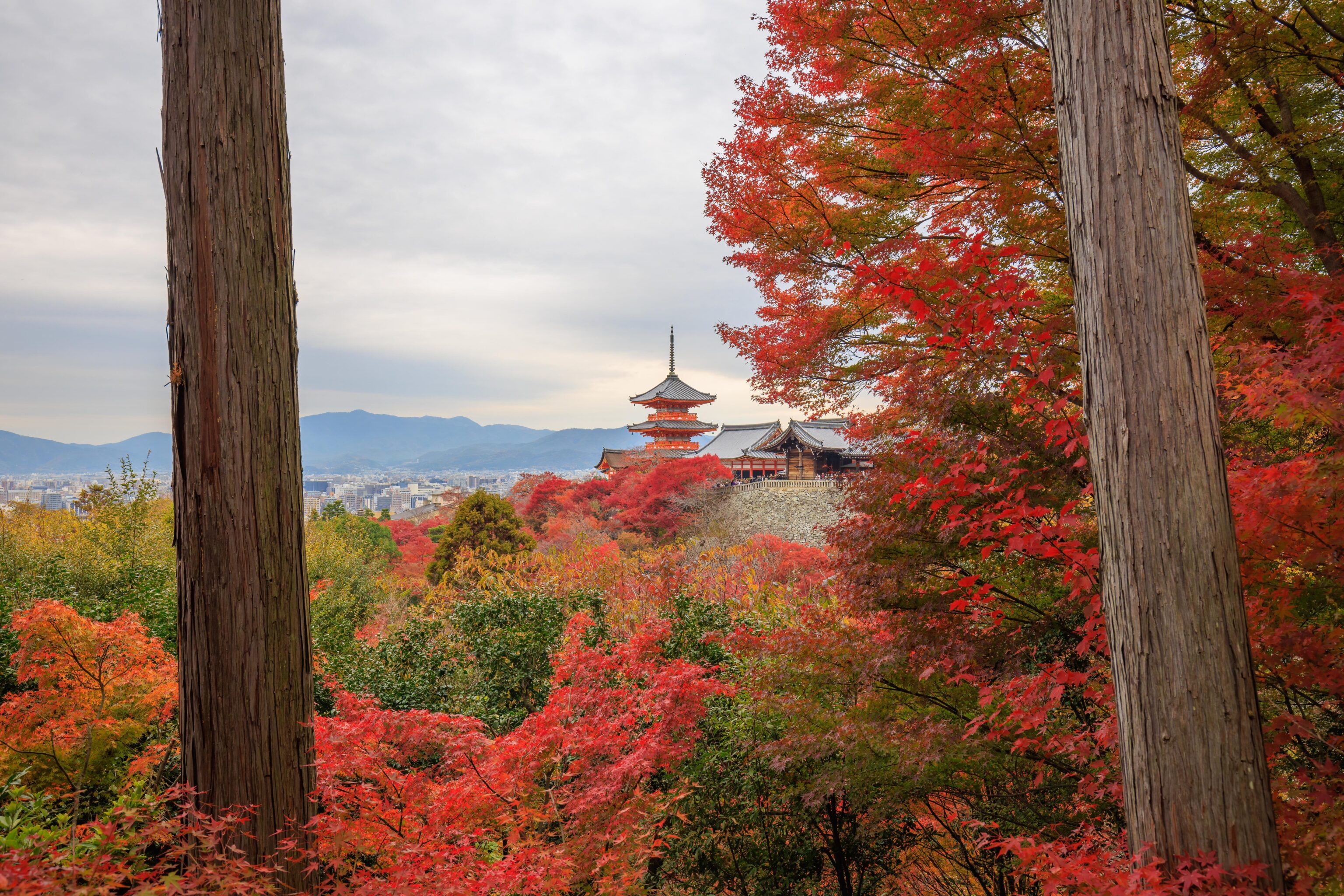
The same yet different compared to earlier in the day.
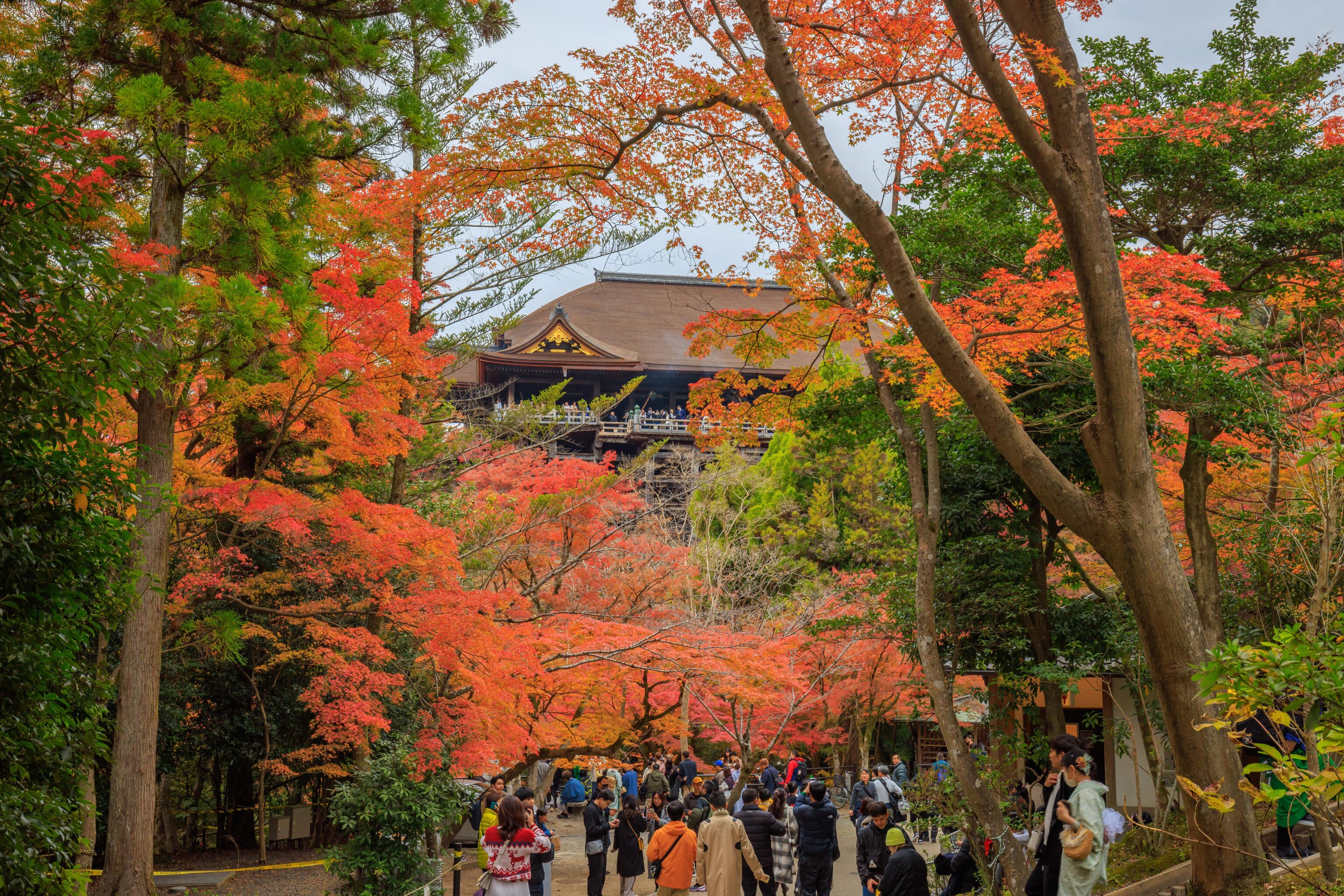
We continued onward, heading back down once again until we could see the Main Hall in front of us.
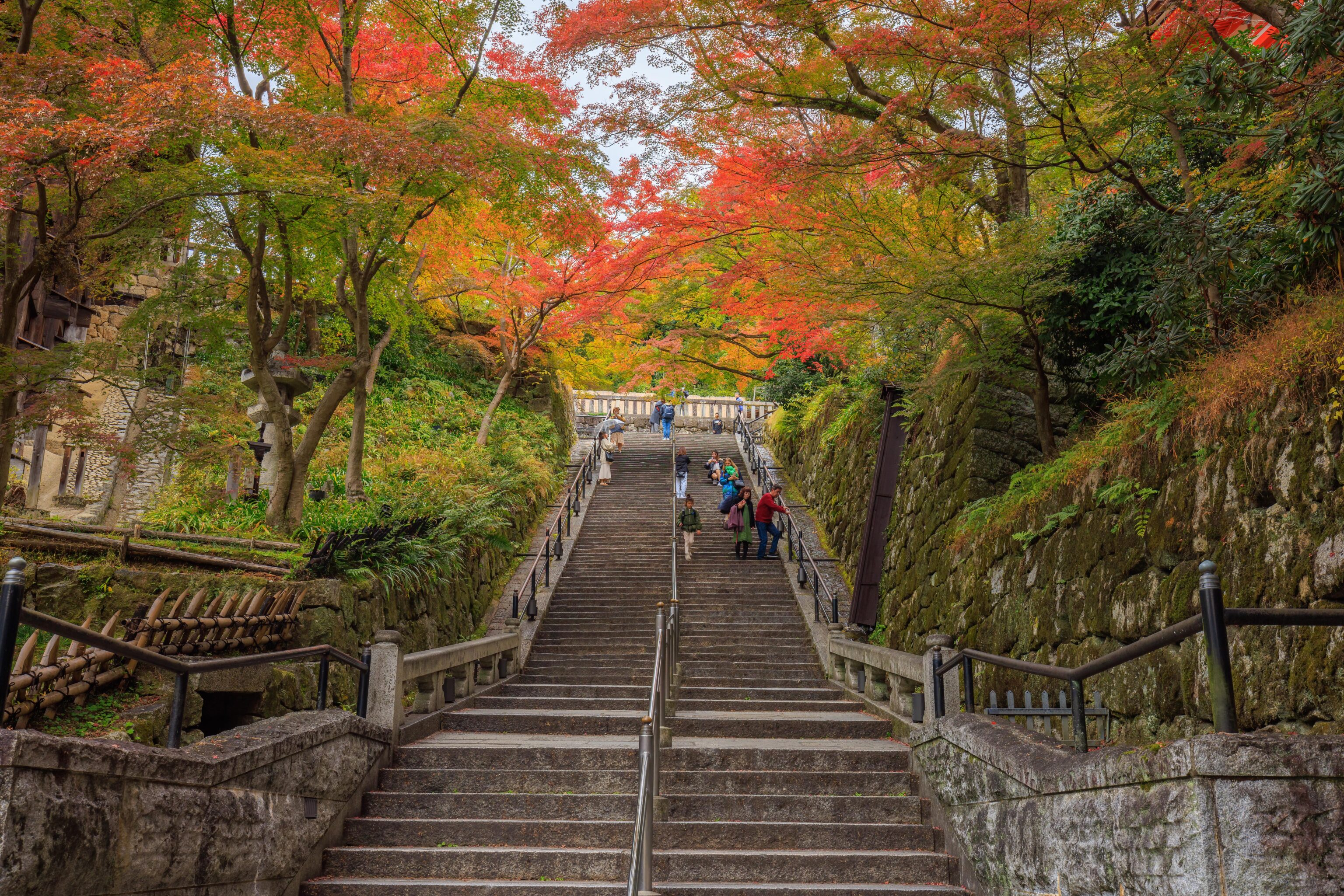
These stairs are not so popular compared to everywhere else at Kiyomizu-dera!
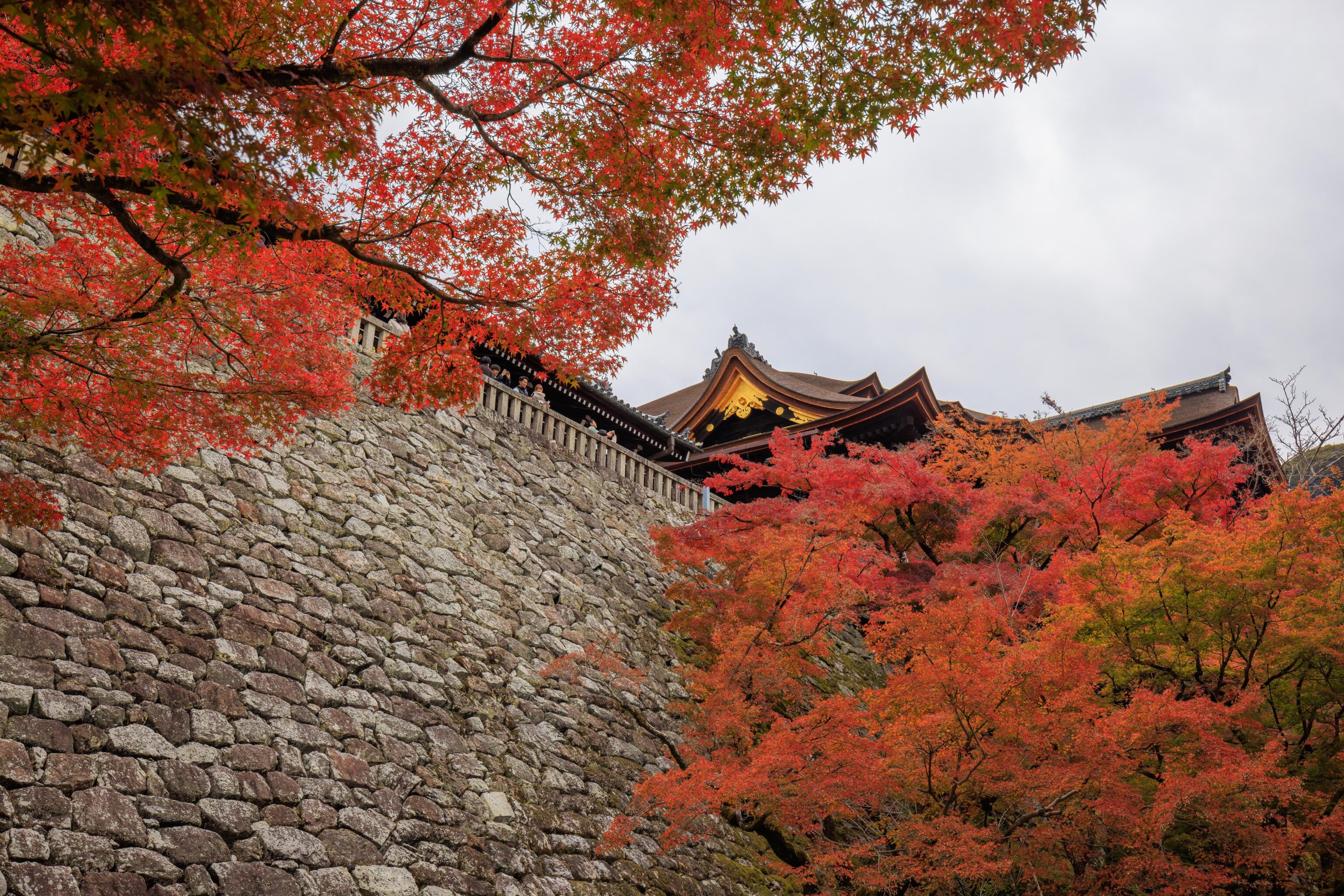
Looking back and up at the Main Hall as we exited the ticketed area.
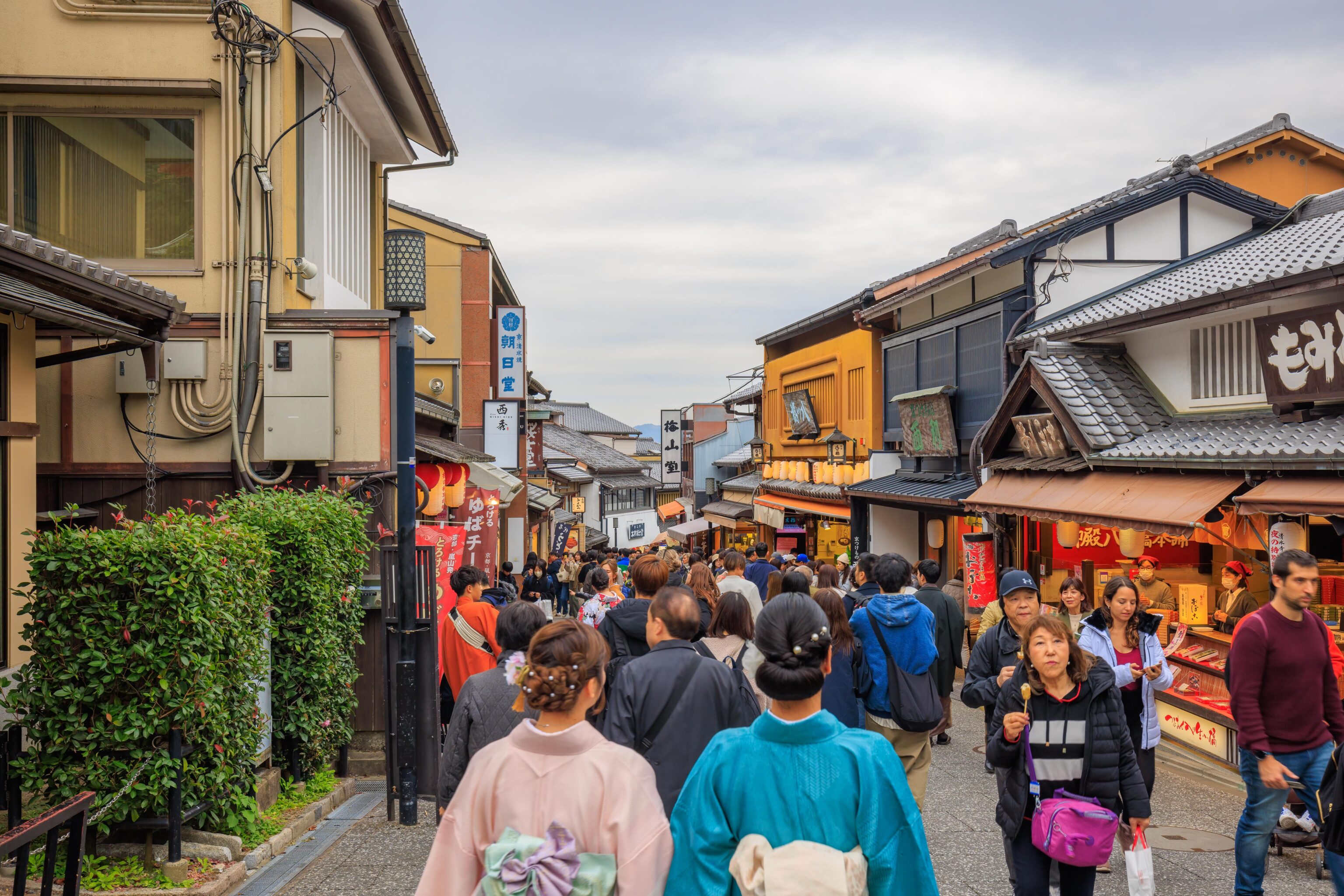
So, what now? It didn’t look good, the weather was not improving.
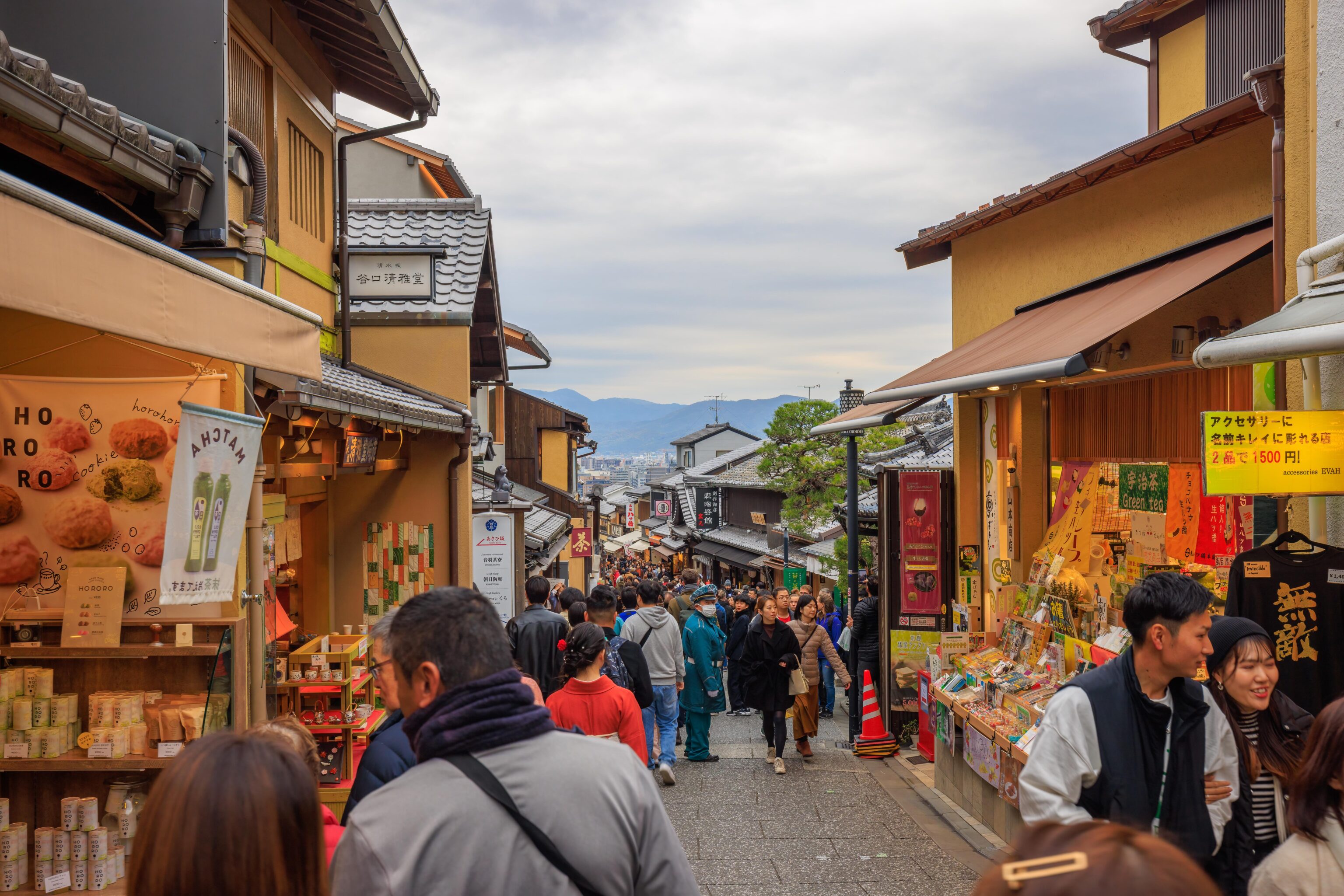
We decided to move on and perhaps come back tomorrow or some other day. There is a night illumination event here that we wanted to see, though we thought maybe it would be nice if we could see it on an evening with a clear sky as it would be a full or mostly full moon. We continued walking down the street to the west. The restaurant where we had lunch is in the building with the pink sign near the center of this photo.
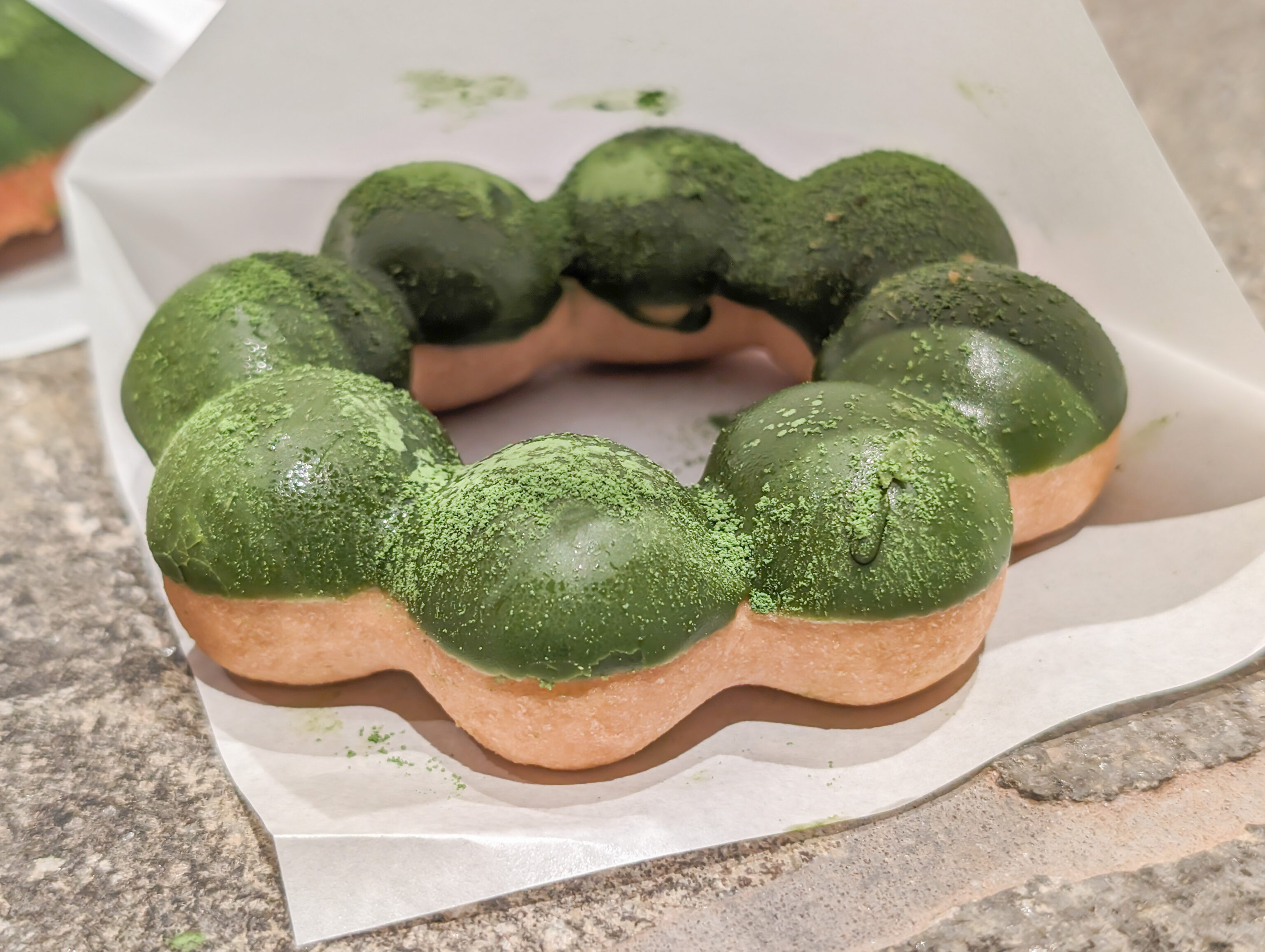
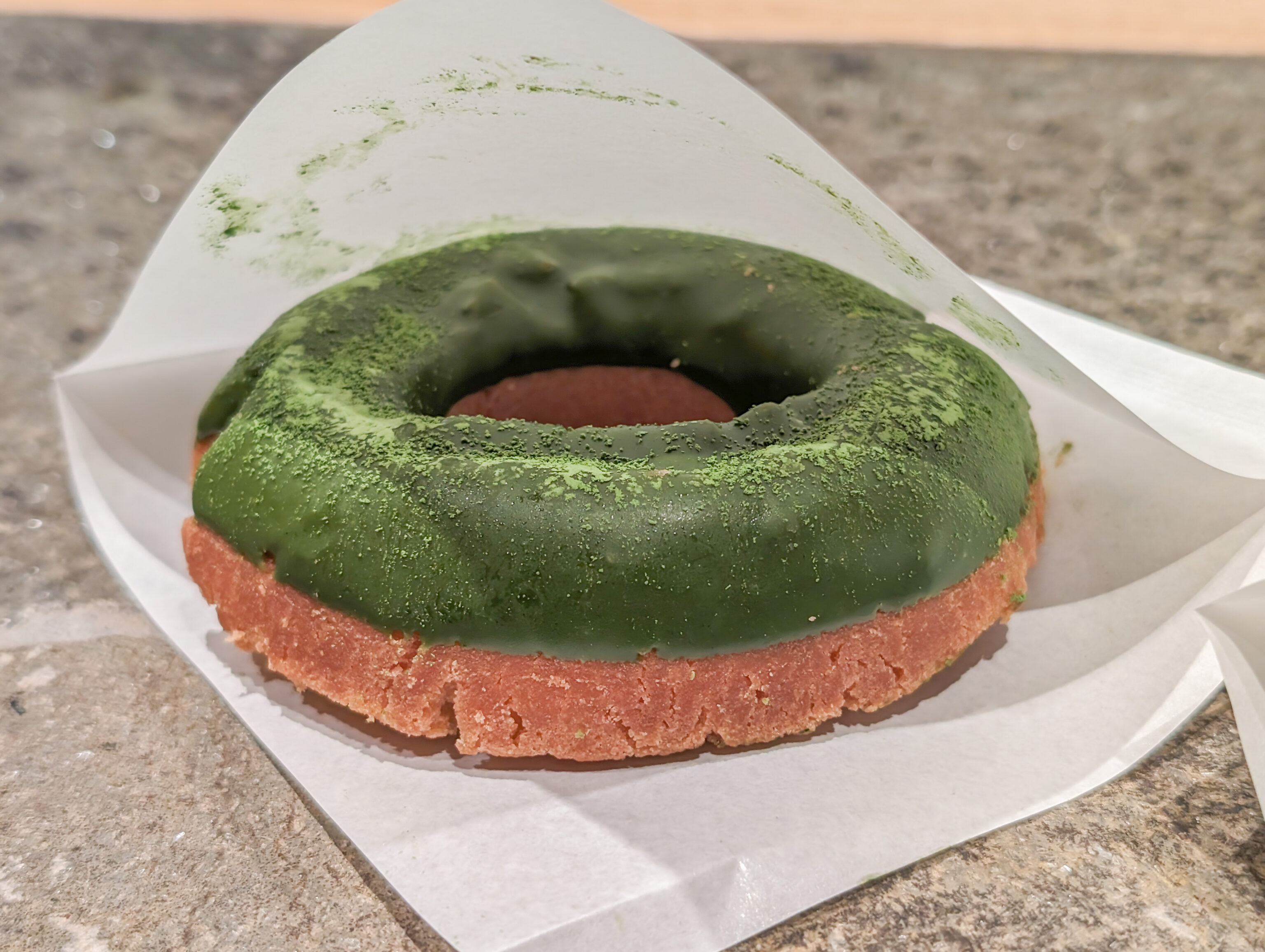
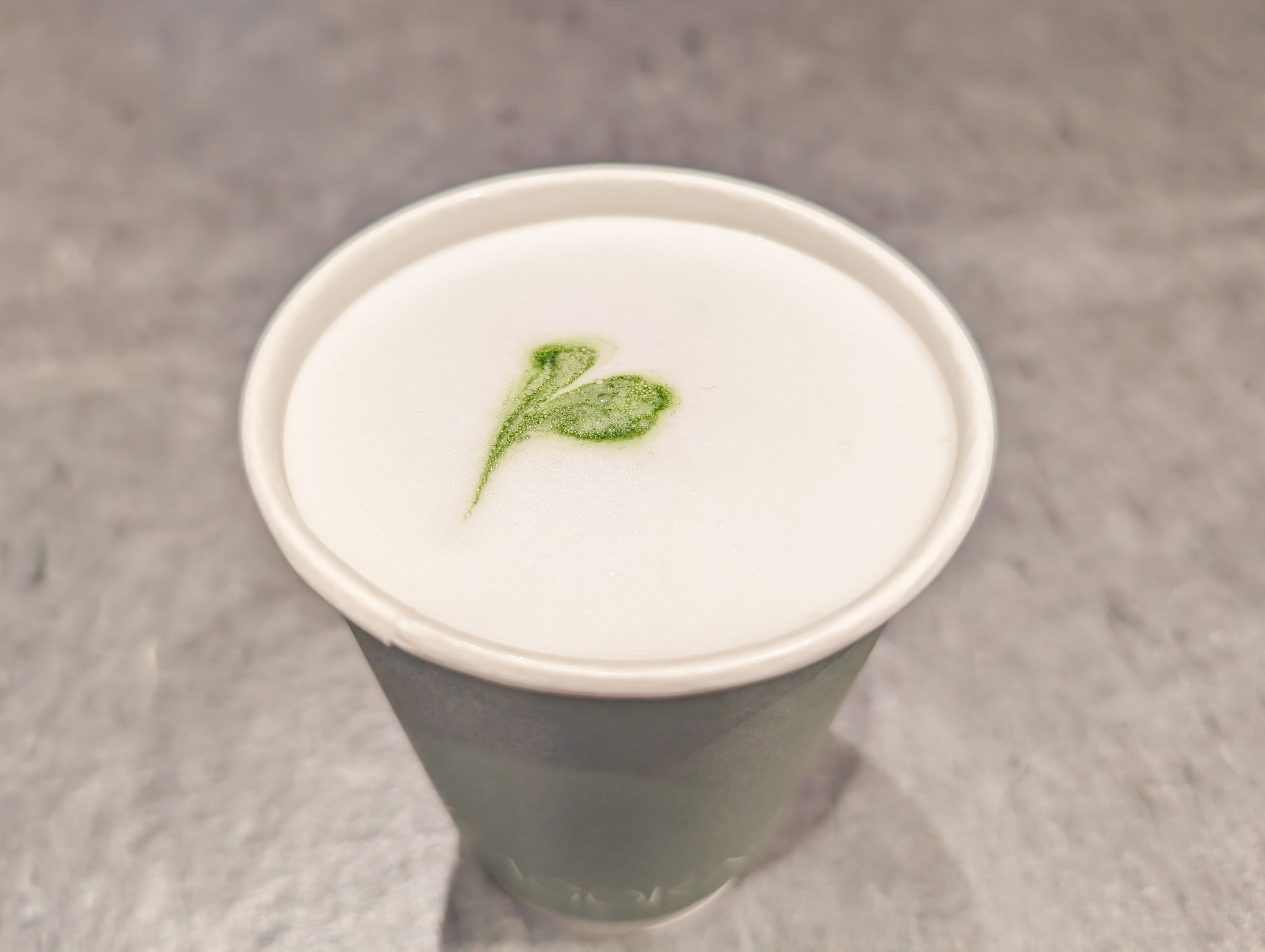
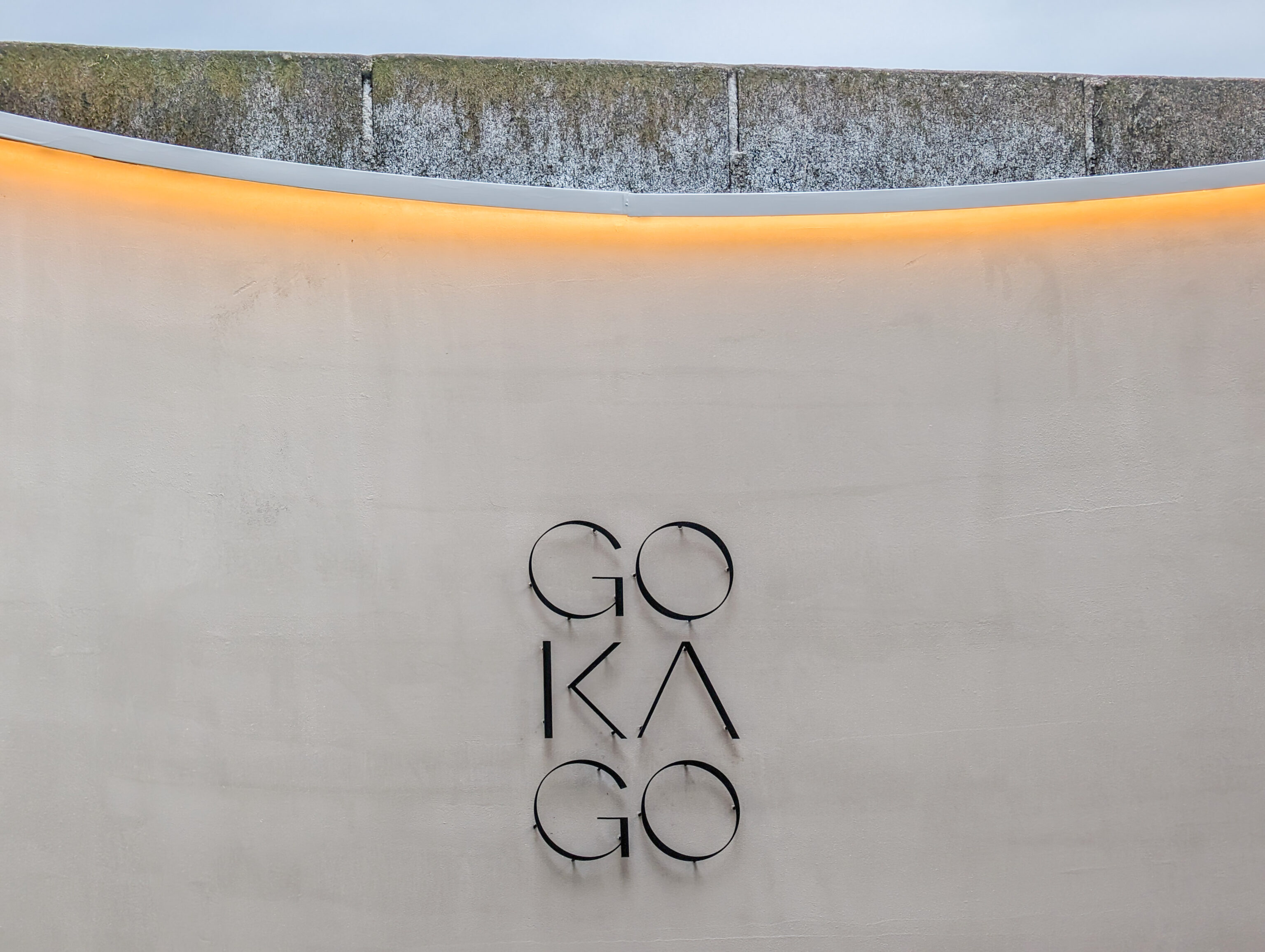
We decided to get a snack at GOKAGO. This little tea shop served matcha donuts as well. We got both styles, a traditional donut and a mochi donut. The mochi donut was better than we’ve had in the US, though we’ve only had it a few times and they weren’t very good. The regular donut was pretty standard, though not overly sweet like they are in the US. We also got a matcha latte which was nice.
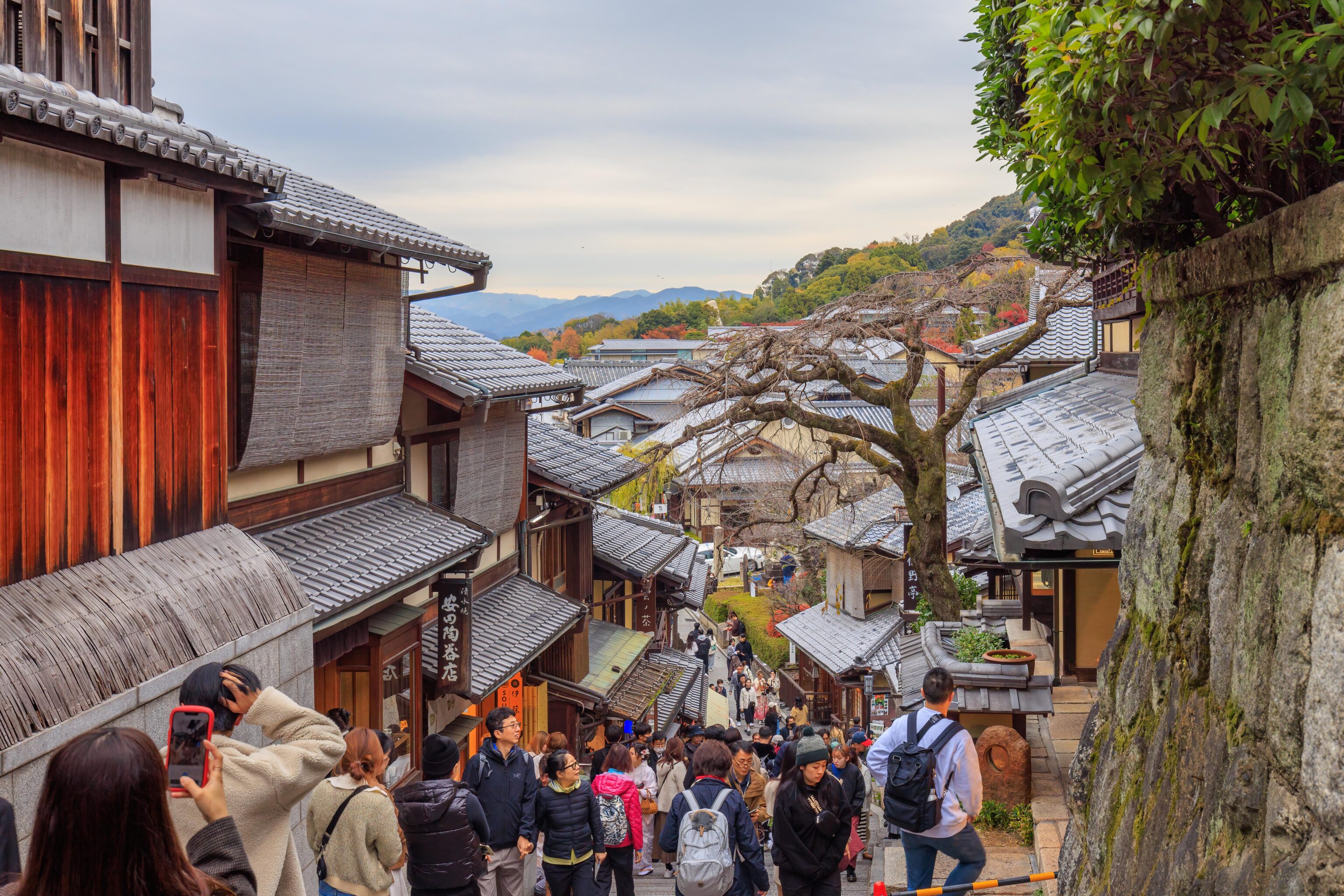
The Sannenzaka was significantly busier than it was early in the morning today! Though, still not nearly as busy as the street we were just on.
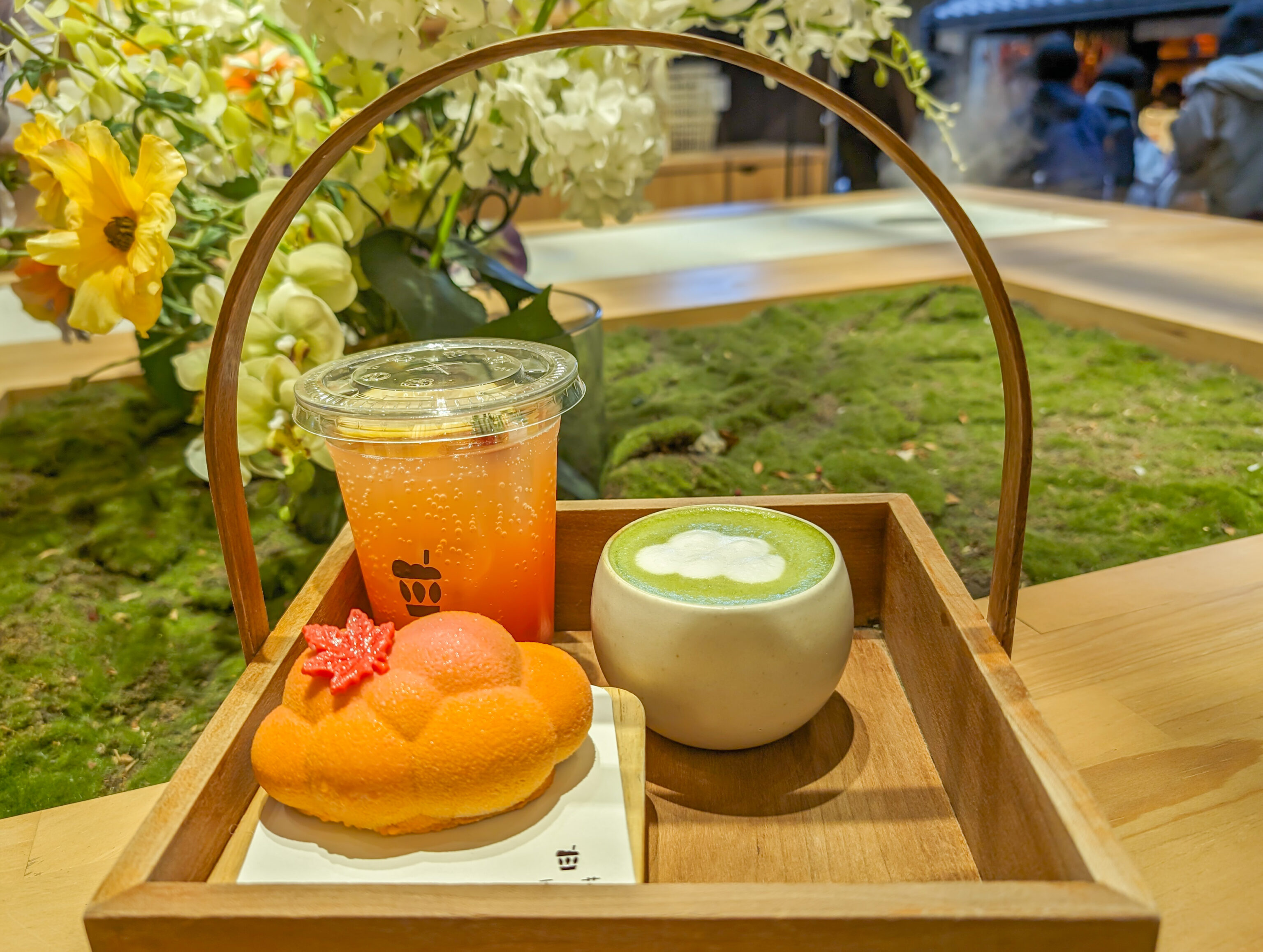
We dropped into Kumonocha because we noticed their cloud mousse! There are a variety of options but we choose a fall colored cloud and a fall colored drink! This was definitely made for sharing on social networks! And of course, we had some green tea. Overall, it was pretty good! The cloud was mousse but had a solid red bean center.
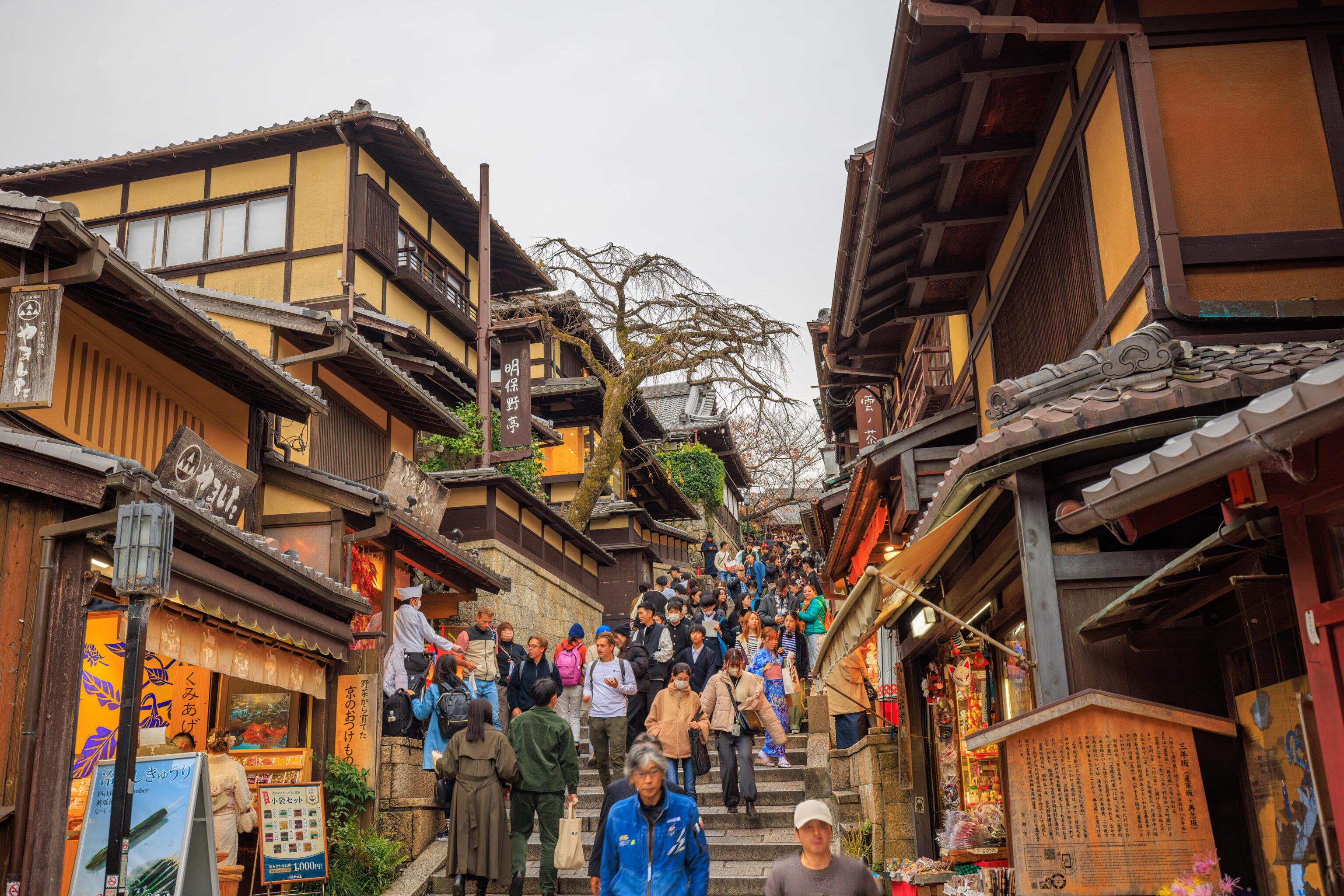
The view looking back up the Sannenzaka. Kumonocha is around here though you can’t tell from this angle.
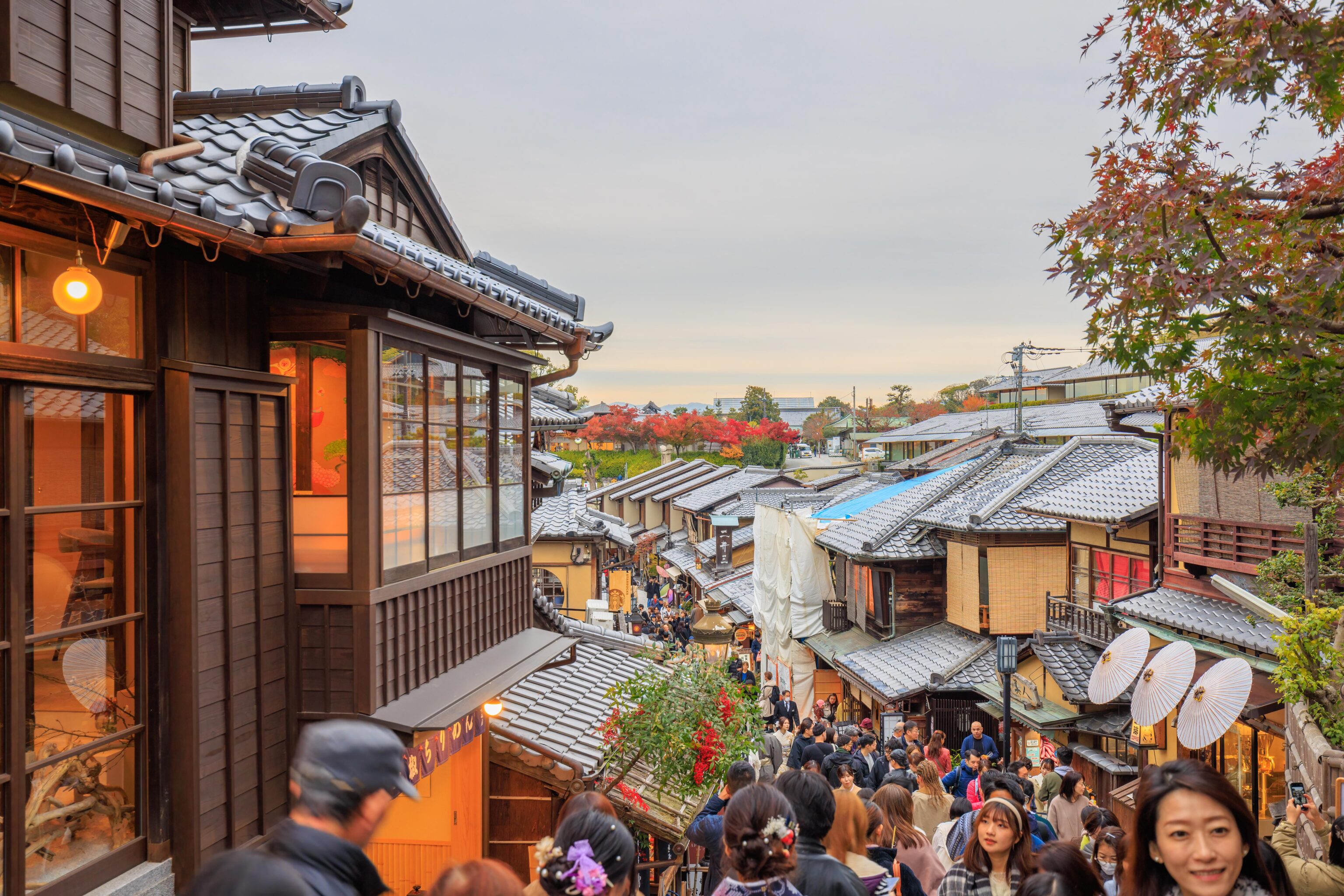
The Ninenzaka is just beyond the Sannenzaka. It is basically, the same thing, a narrow sloped road lined with shops in historic buildings.
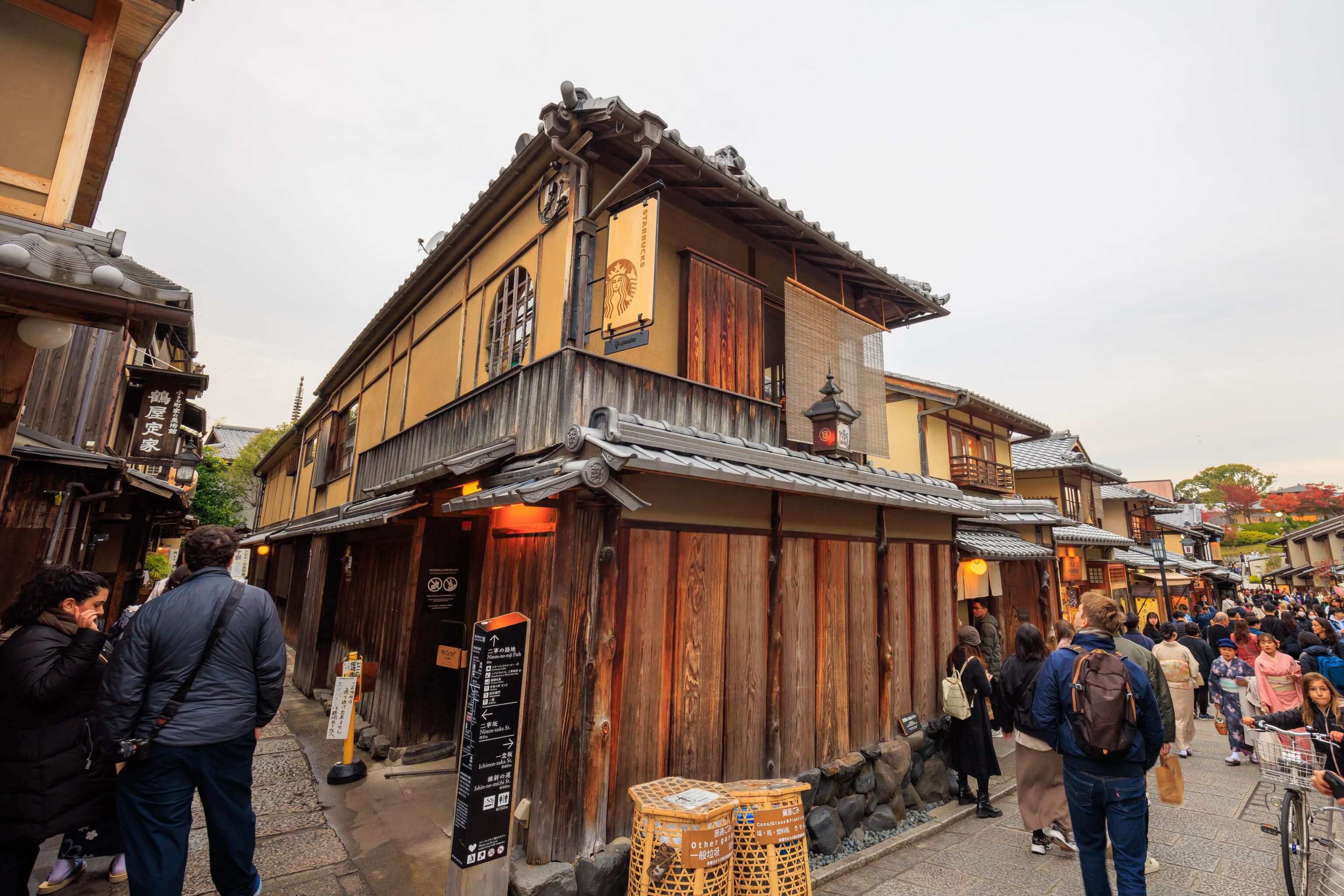
One of the most famous shops on the Ninenzaka is this Starbucks! It is in one of the historic buildings and has kept its exterior appearance. It is pretty popular and has been featured on CNN. It apparently has tatami rooms on the 2nd floor13. We only took a brief look at the first floor as it was rather busy. Generally, visiting Starbucks while traveling internationally isn’t high on our list of things to do, beyond seeing if they have the You Ae Here mugs which are no longer produced in the US but are still available at some international locations14. Apparently, we recently missed out on the Annecy mug which is unfortunate is its unclear if we’ll ever be back there!
Kodai-ji
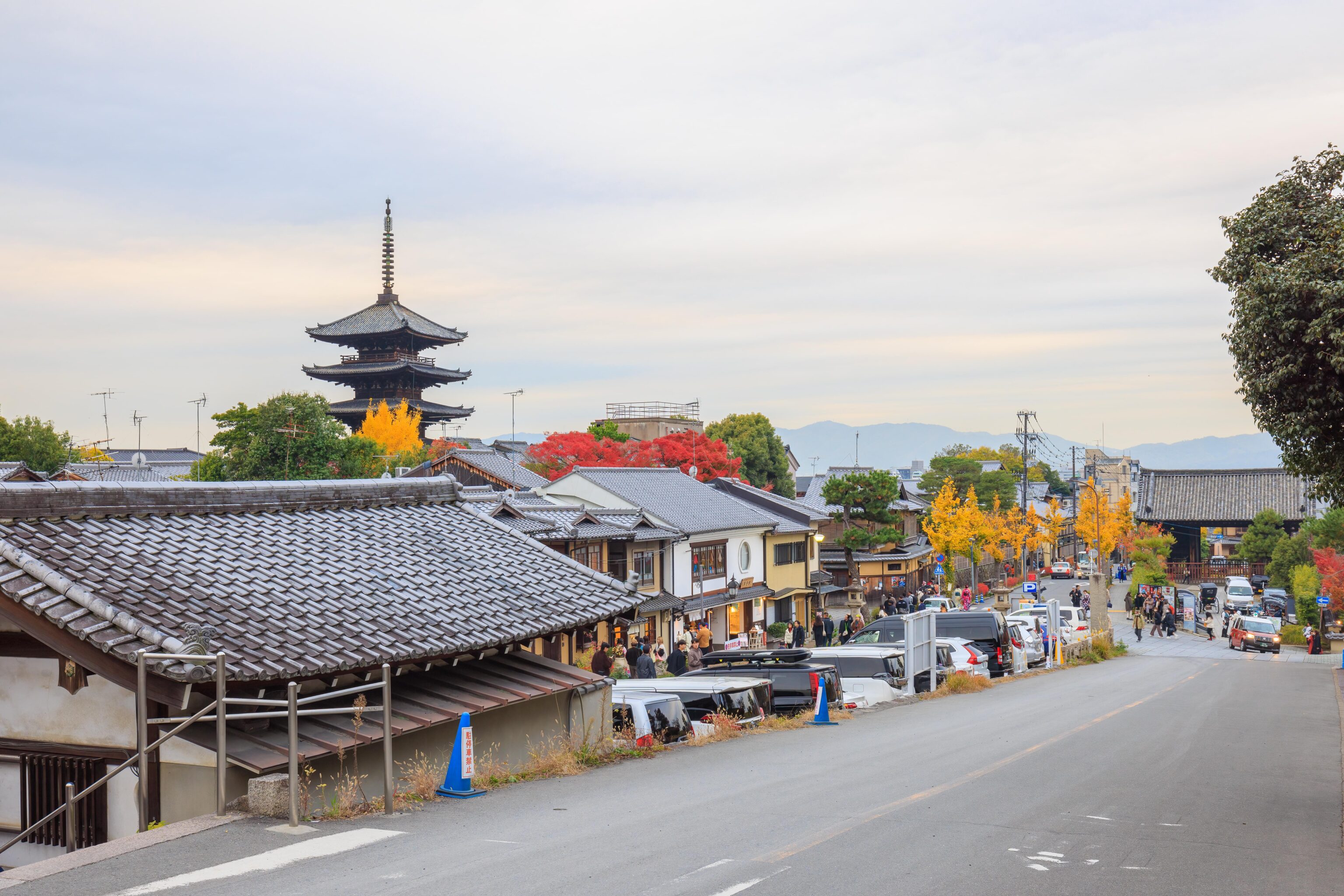
We continued walking to the north until we reached a slightly larger road. The pagoda is probably Hokan-ji. It has never been on our list of places to visit in Kyoto though it may be a worthwhile visit. Kyoto is packed with temples and shrines, there is just too much to see even a fraction of everything!
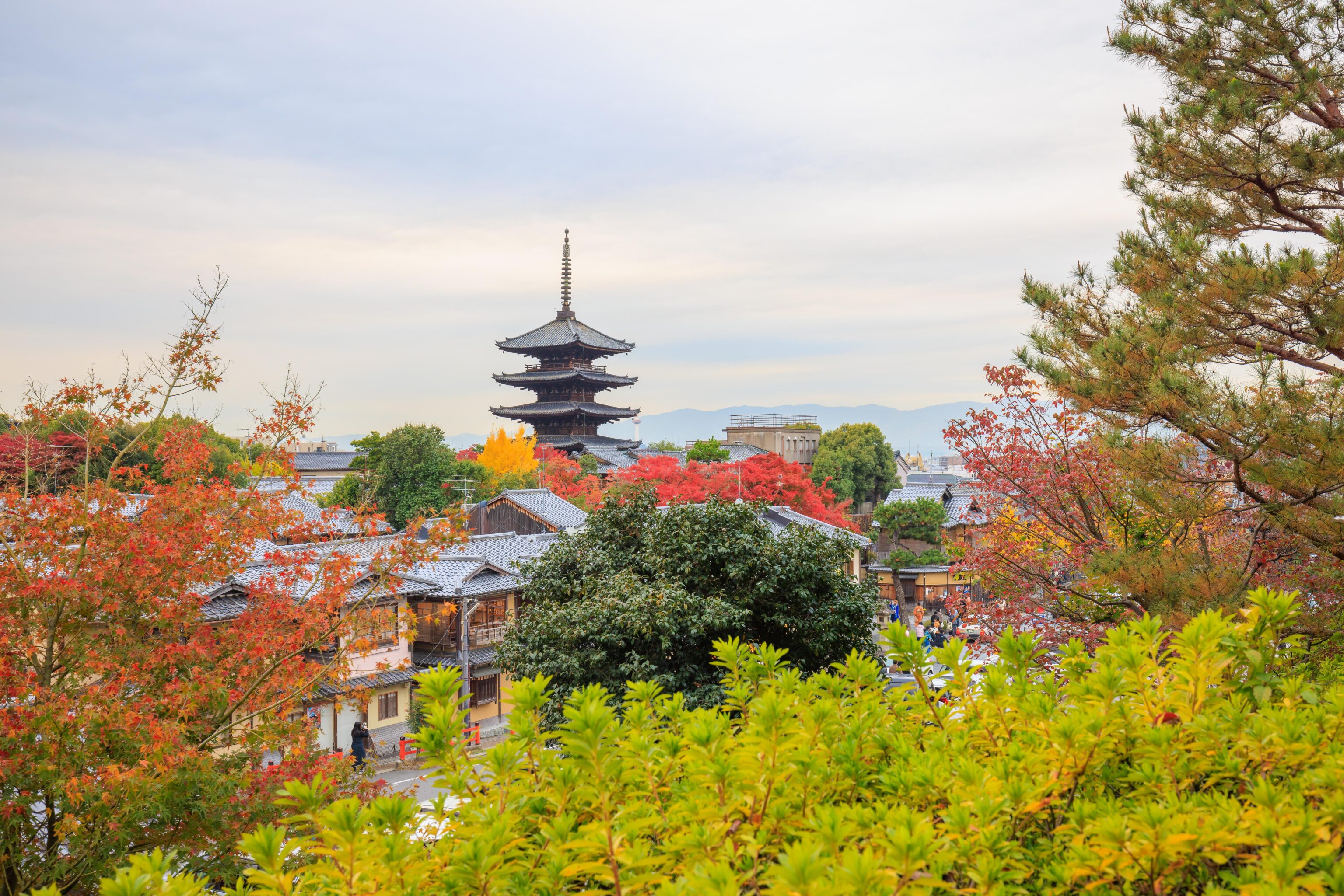
We ascended some stairs to head to Kodai-ji. We looked back for this view from atop the stairs.
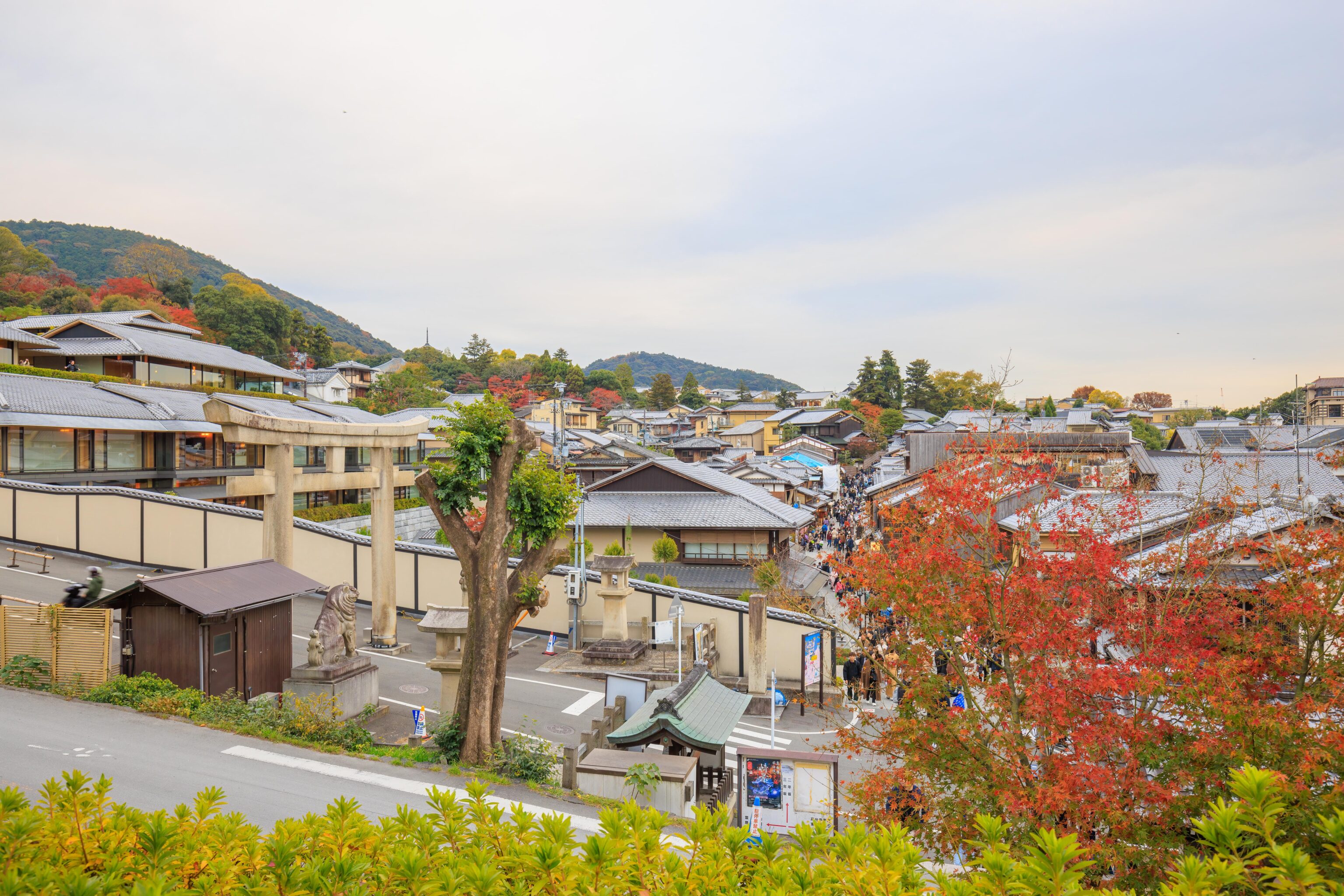
There was a stone torii to the southeast. The Park Hyatt Kyoto occupies the space behind it. While Hyatt Place, where we are staying, is the lowest tier in the Hyatt portfolio, Park Hyatt is at the very top. Hotel rates vary but one night refundable at this Park Hyatt in the lowest tier room is roughly the same cost as our 10 day stay at the Hyatt Place!
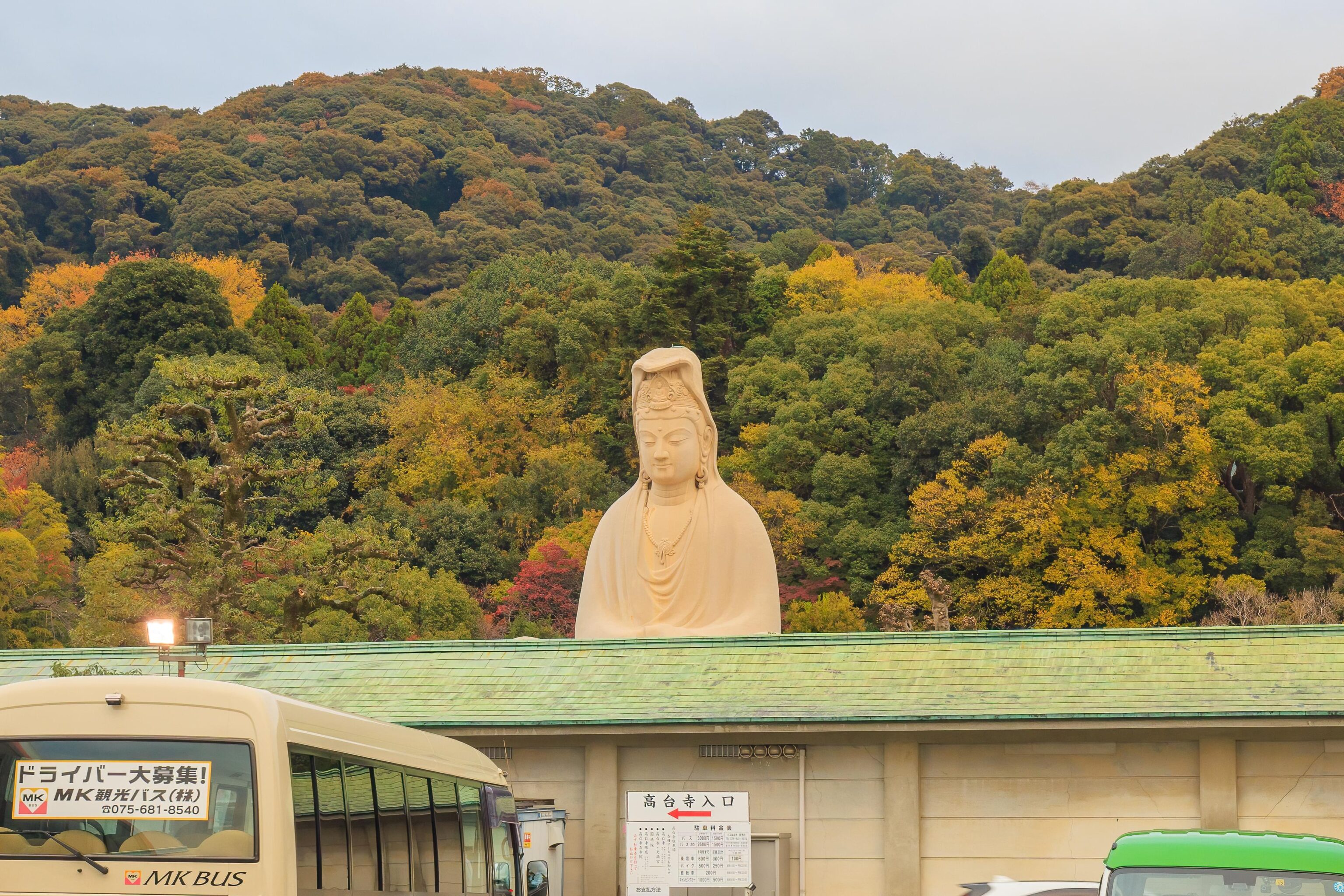
The shortest path to Kodai-ji passes through a parking lot which was filled with tour busses of various sizes. The parking lot is shared with the Ryozen Kannon. This site features a large statue of the Kannon Buddha that can be partially seen from outside. It was constructed as a war memorial to Japanese World War II fatalities15. It doesn’t seem to be controversial like the Yasukuni Shrine16.
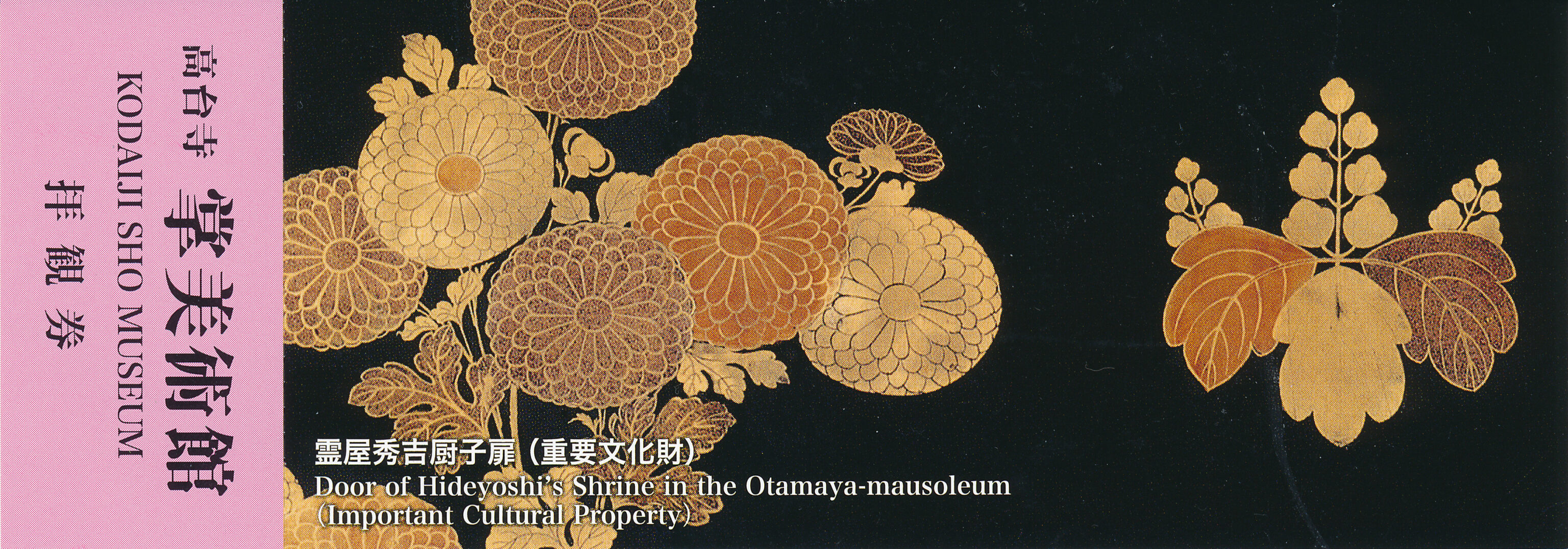
We continued walking by to reach Kodai-ji. Kodai-ji does have a nighttime illumination event but it was still daylight. We weren’t quite sure how it works, if our entry would be valid for the evening or if everyone would be kicked out. Either way, we bought our tickets to enter.
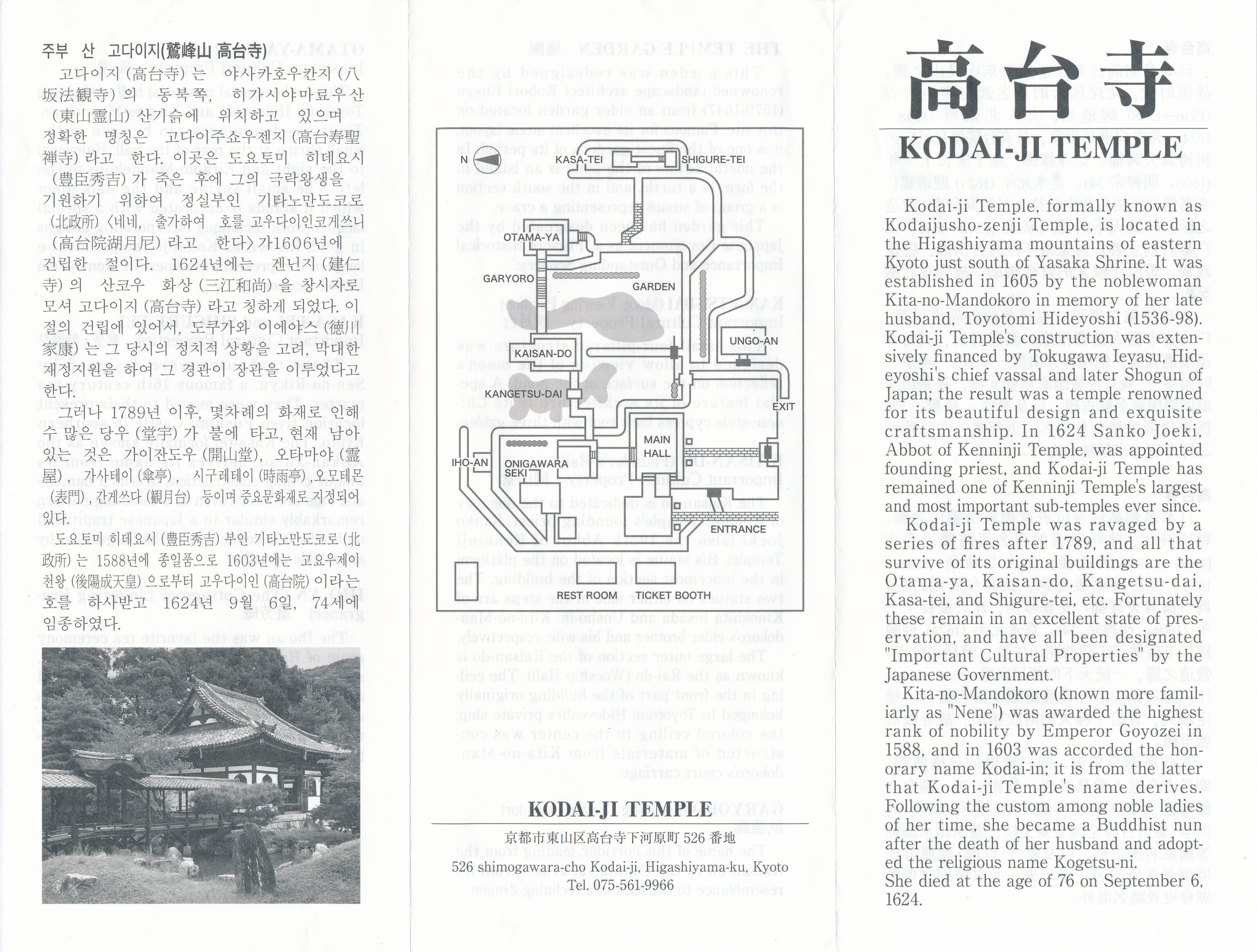
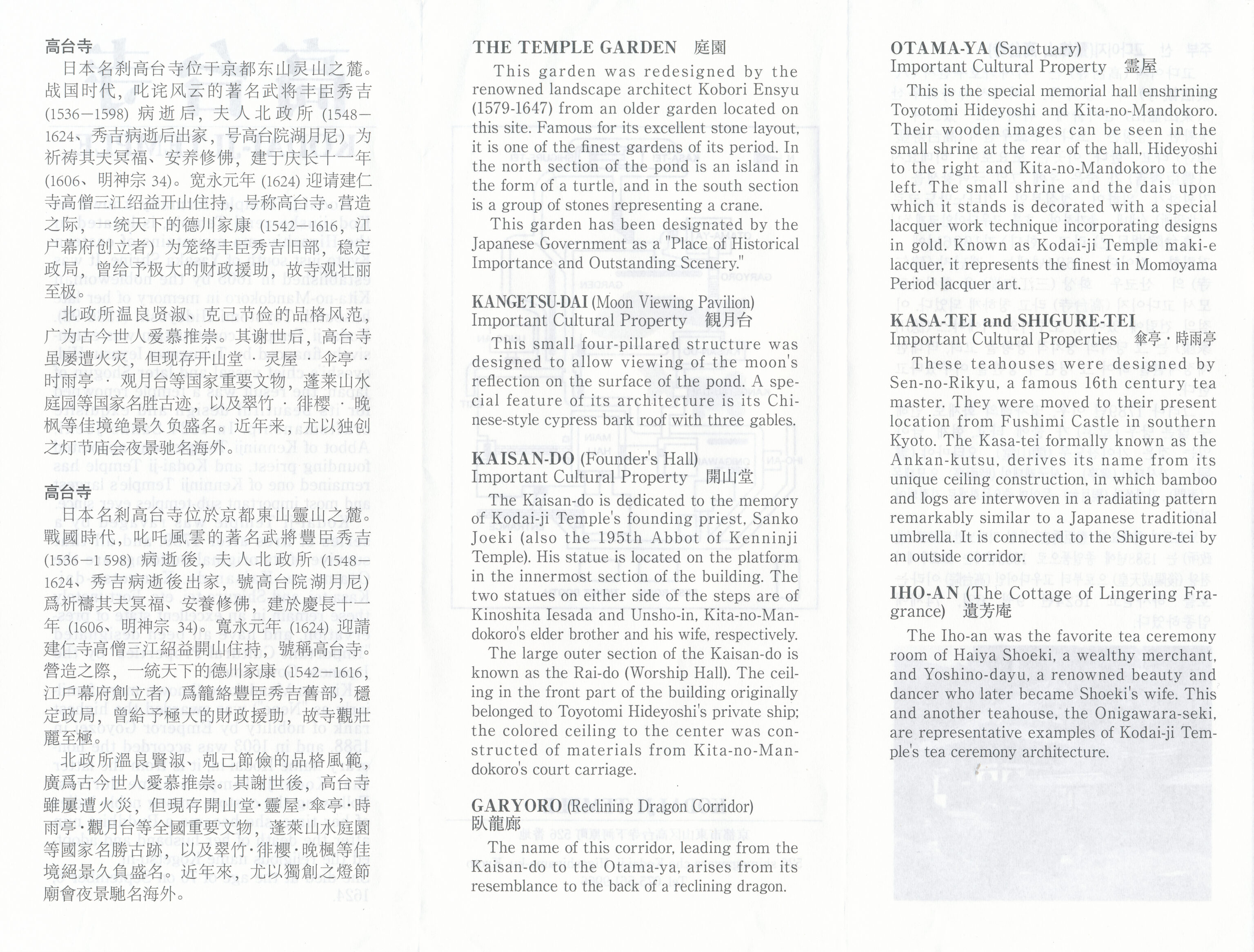
As is often the case, we received an informational pamphlet. Most of the text was English but there were also shorter one panel Korean and Chinese sections. Interestingly, Chinese is provided in both Traditional and Simplified for Taiwanese and Mainland visitors.
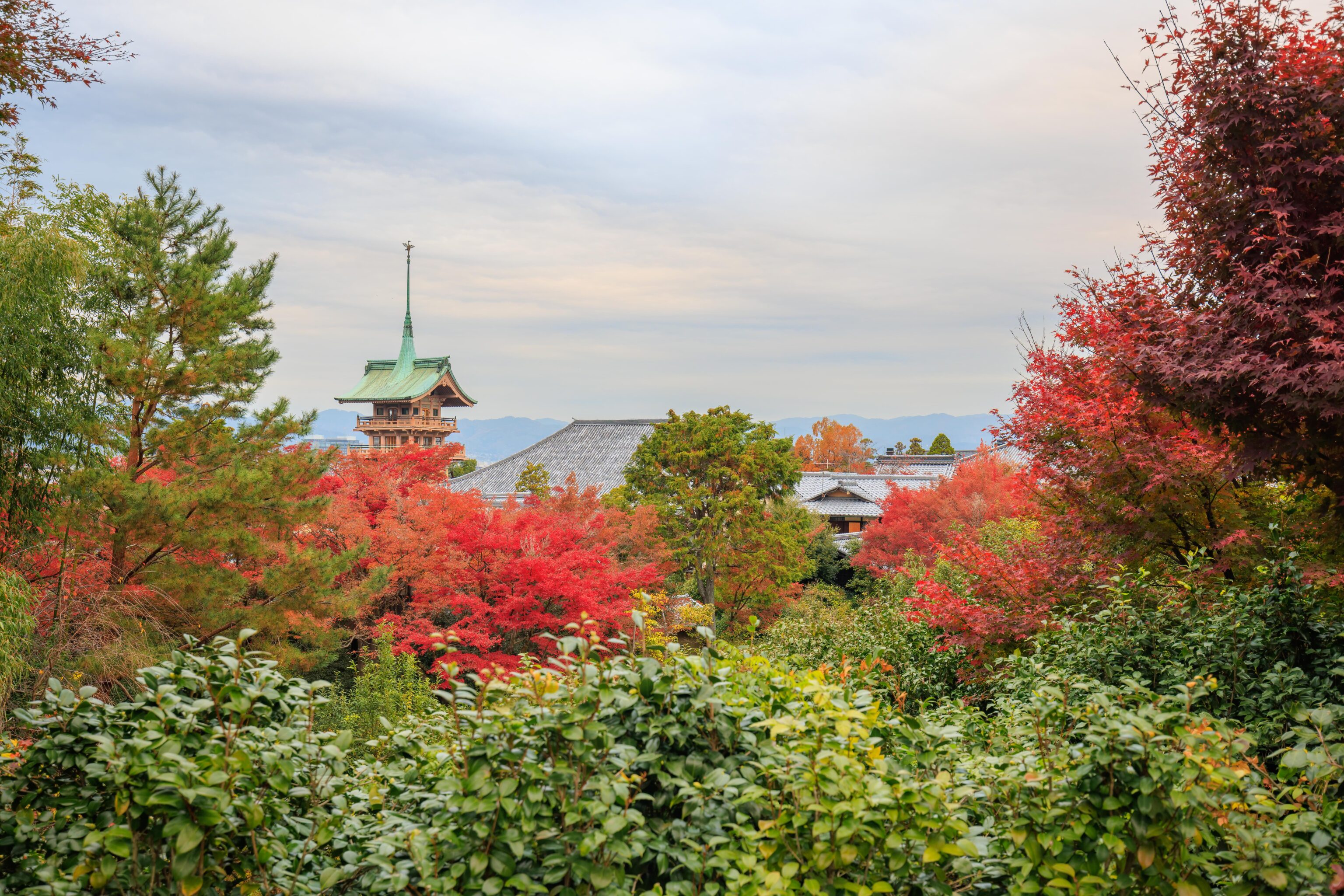
We came across this beautiful view at the northeast corner, just beyond the entrance. The relatively tall tower is Gionkaku, part of Daiun-in. It was apparently built to resemble the floats used during the Gion Festival17.
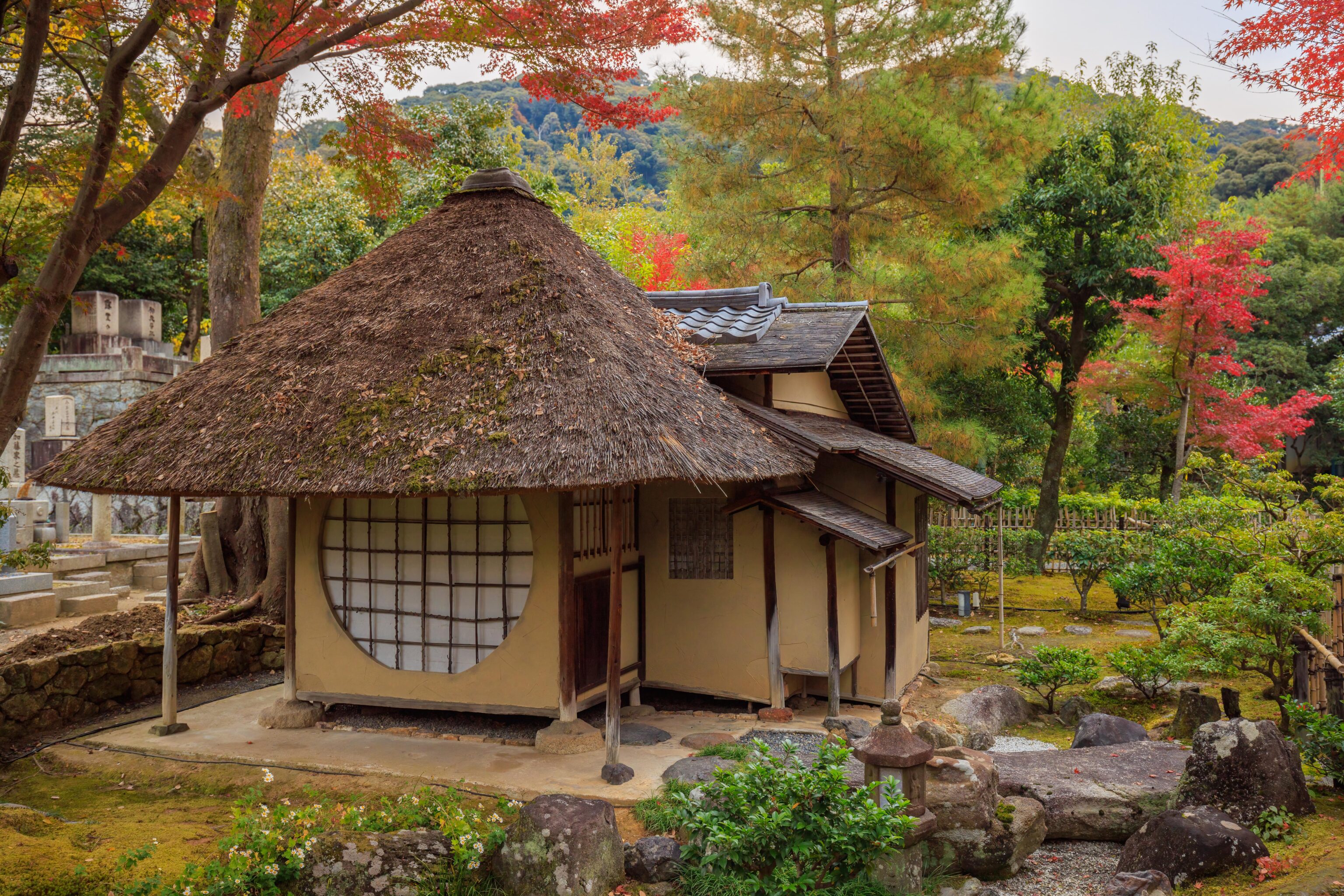
This little building is Iho-an, described as The Cottage of Lingering Fragrance in the temple’s pamphlet. It is a small building used for tea ceremonies.
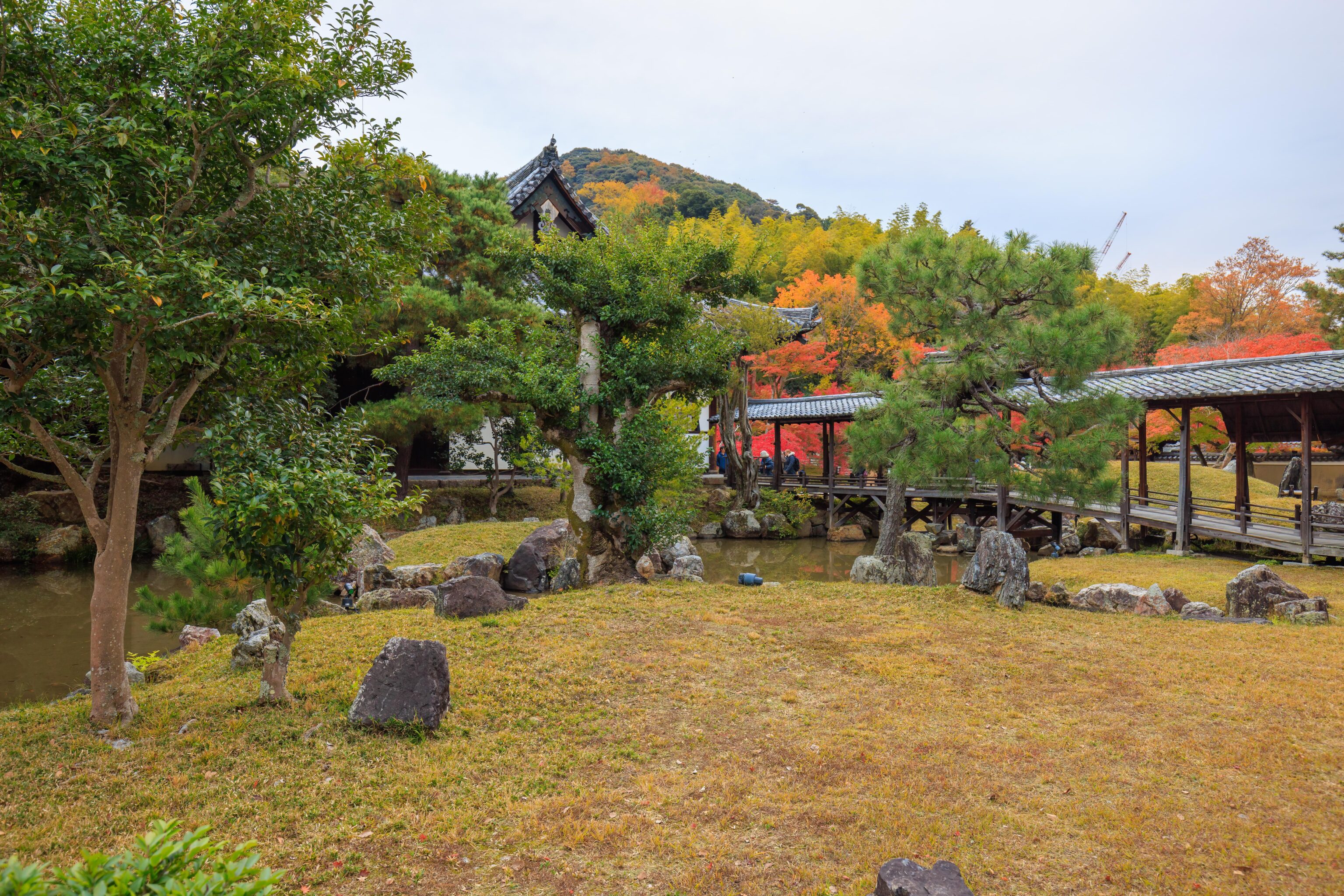
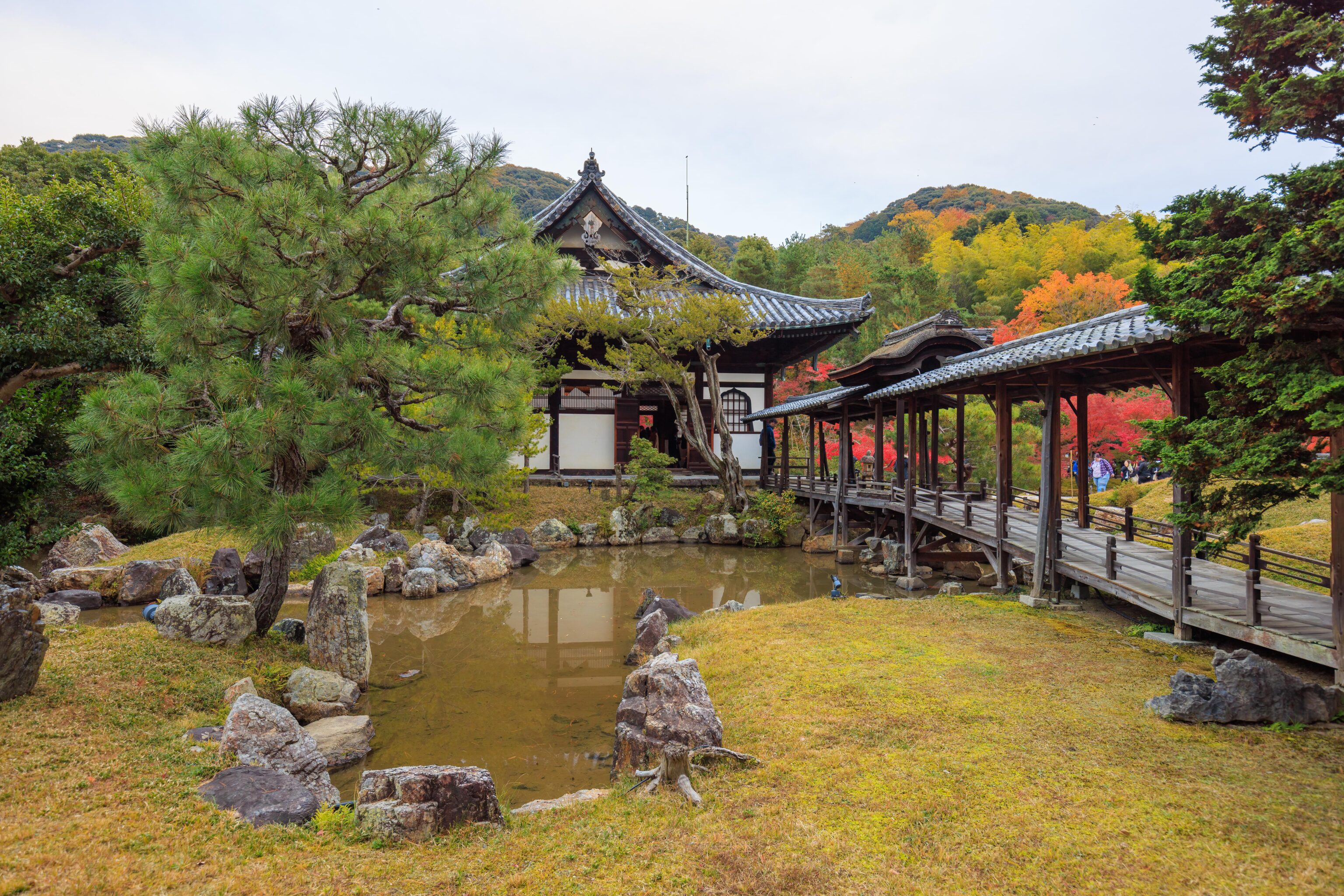
We continued on, coming across a garden pond.
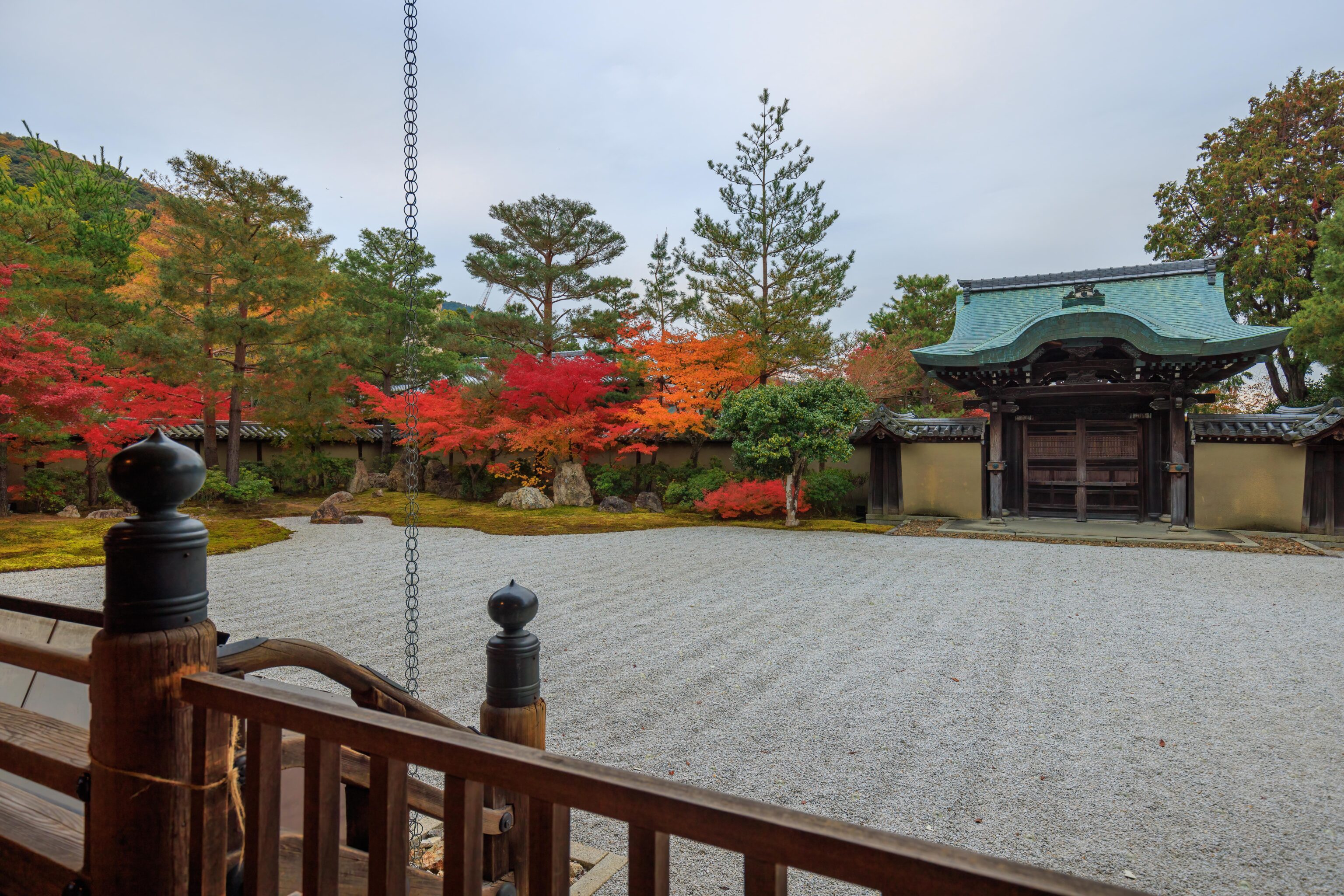
We sat in the Main Hall for a bit in front of the dry garden. We thought the roughly raked stone garden seemed a bit odd.
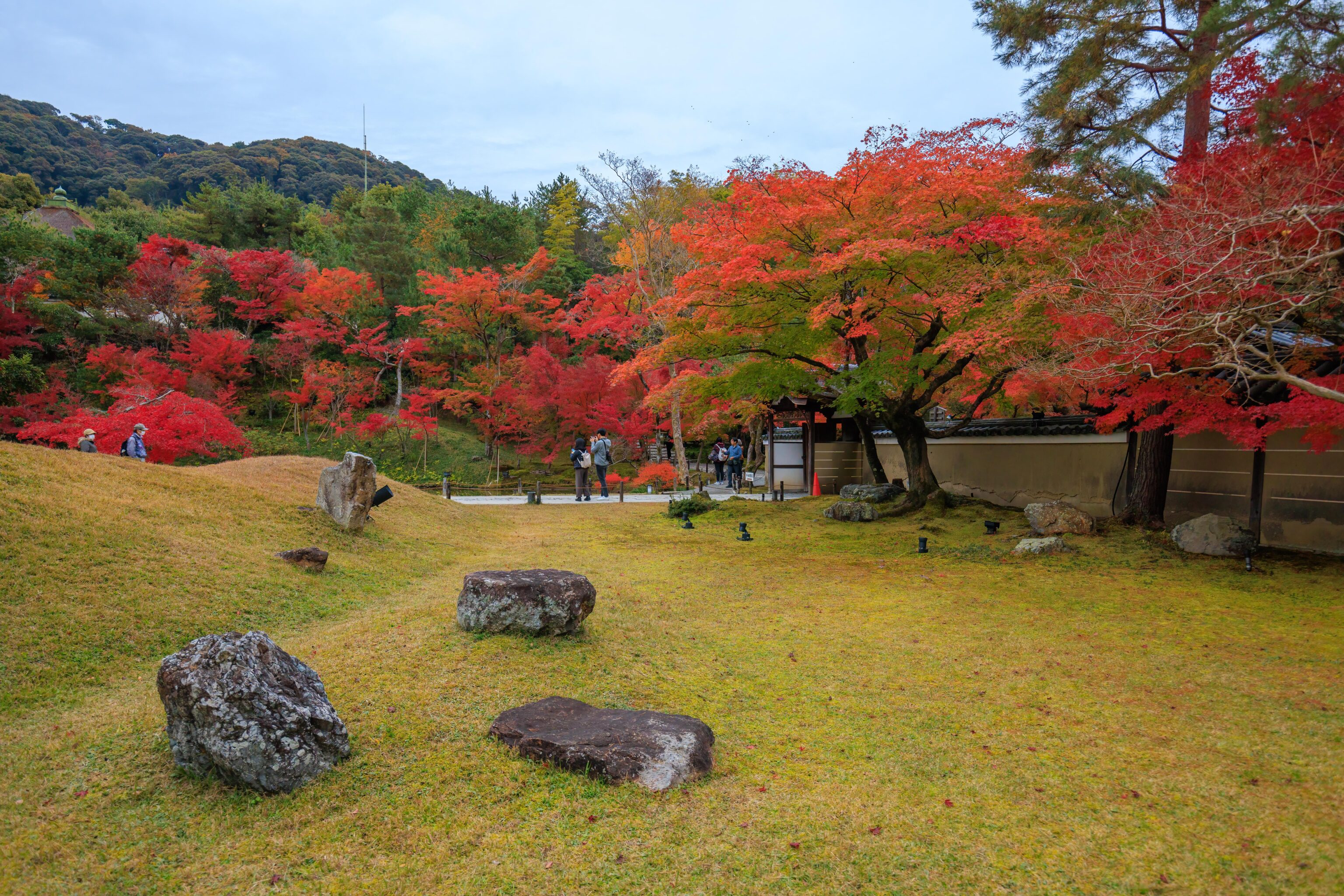
There was a nice grassy view fro the side of the building. We could see some maple trees mixed in with other greener trees.
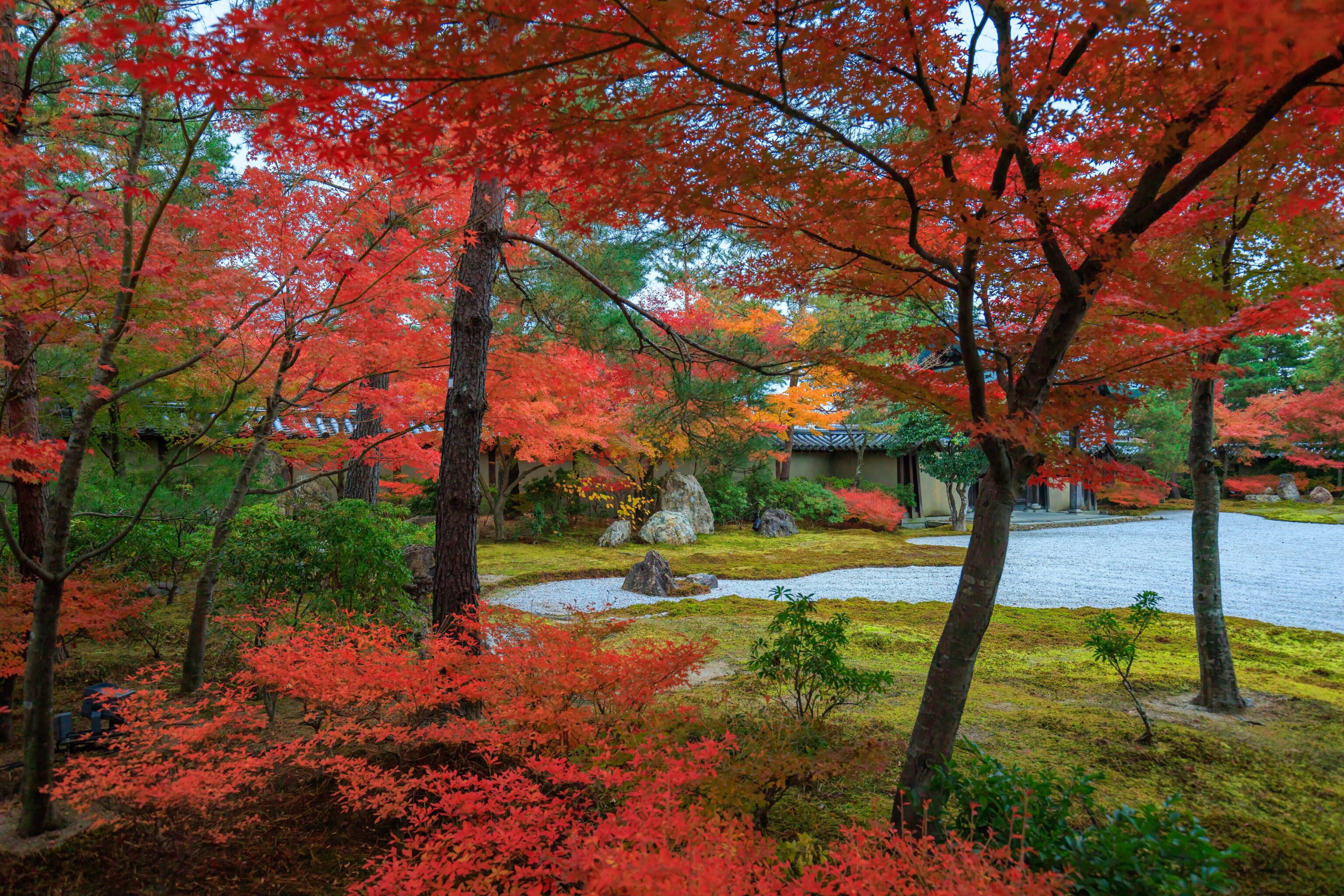
We headed to the building route’s exit, to the east of the dry garden.
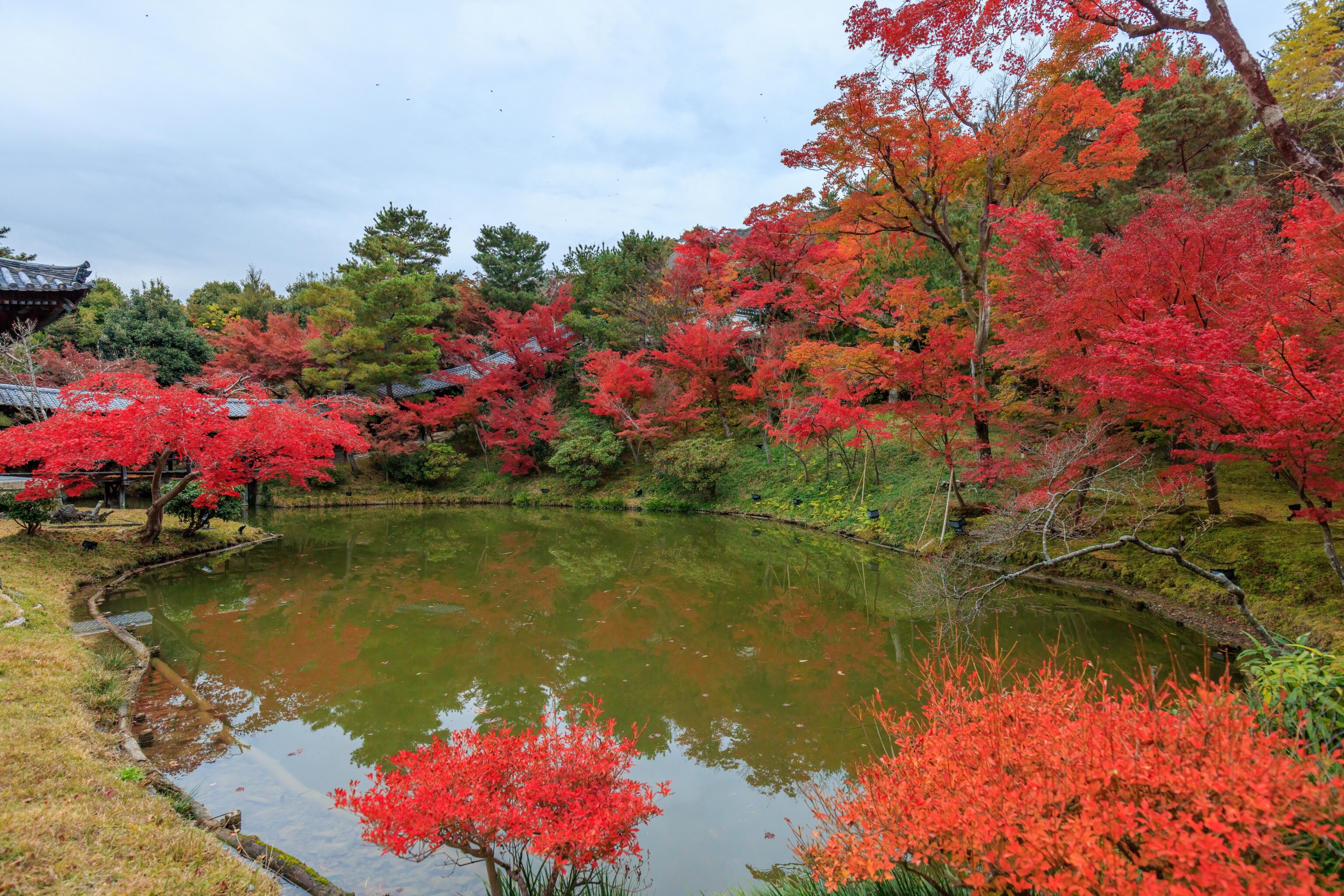
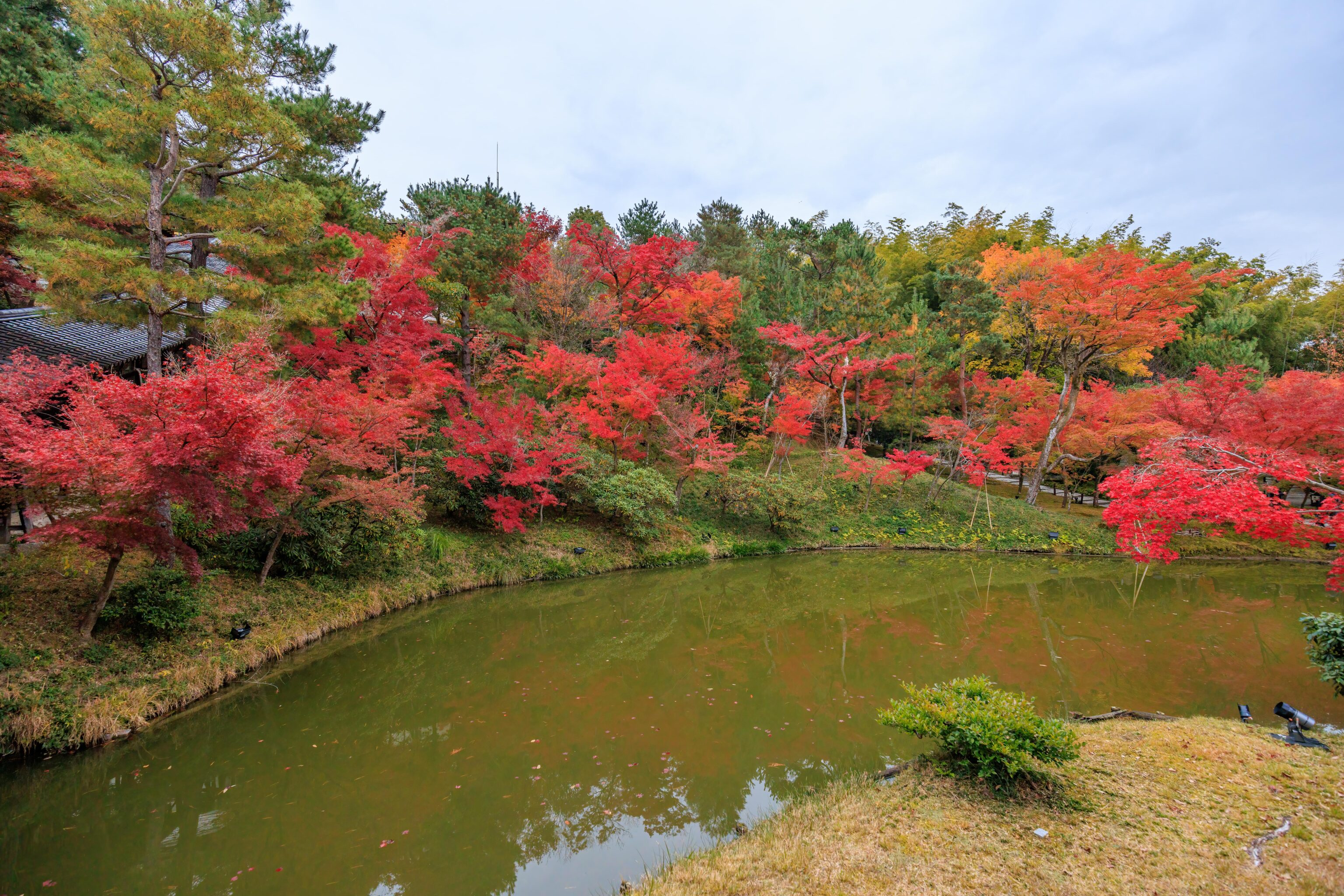
We continued walking through the temple grounds to end up by a large pond with some nice fall colors on the opposite side.
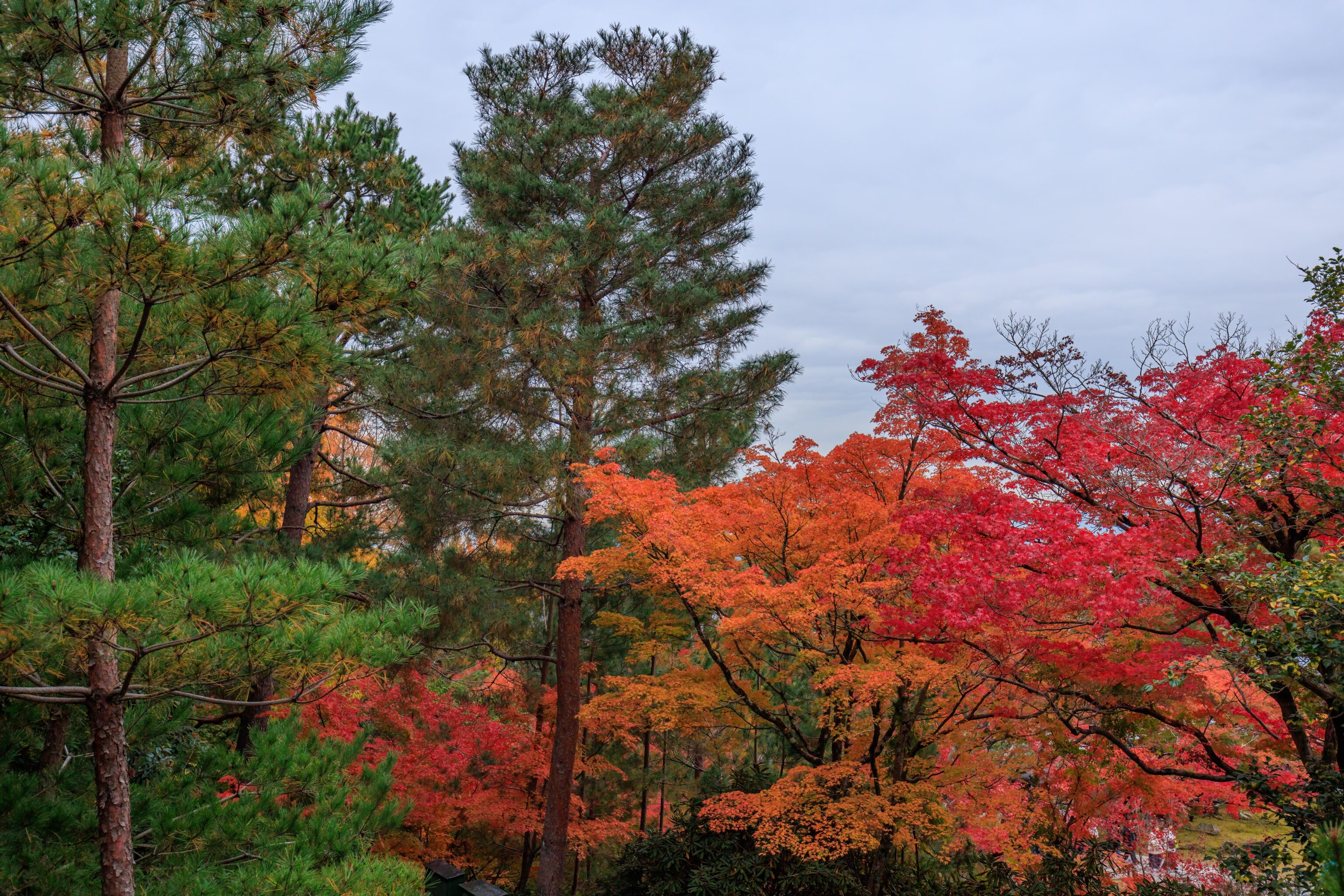
A path led up the hill on the far side of the pond. By now, it was past sunset and the sky was rapidly darkening.
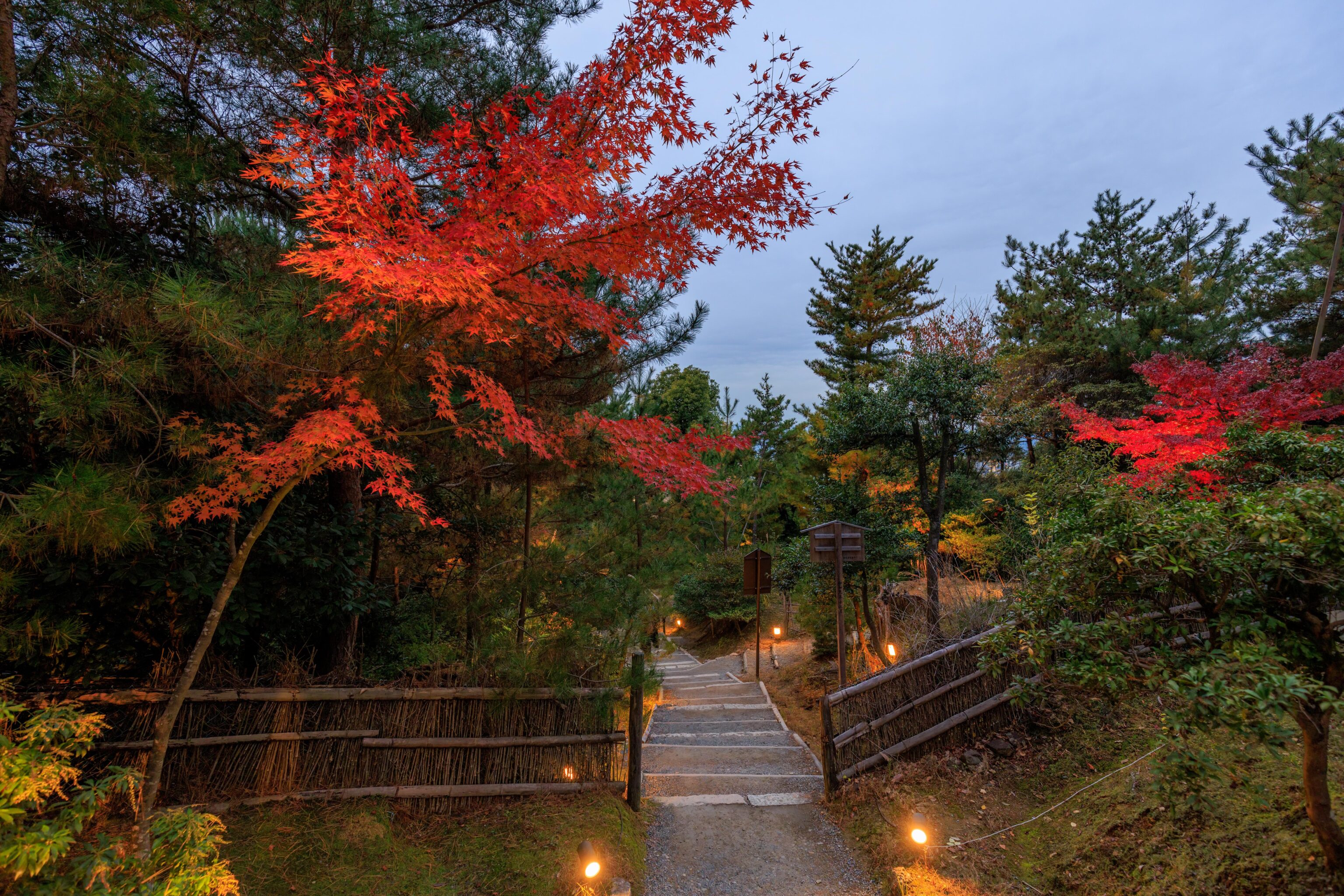
The lights turned on a bit before 4:50pm.
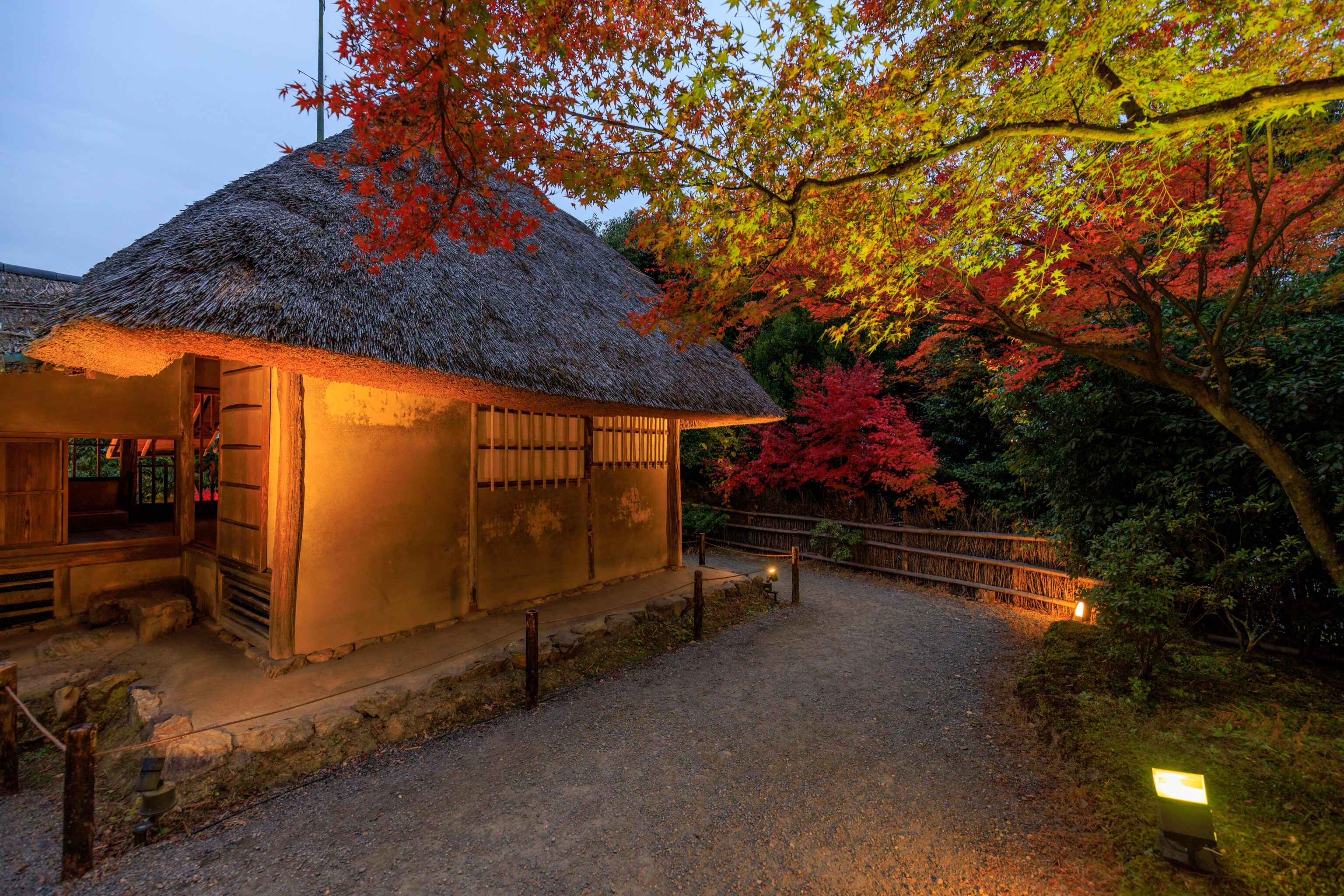
We continued on the route, reaching the Kasa-tei and Shigure-tei, which are two small teahouses connected by a short corridor. This seems like it should be the Kasa-tei.
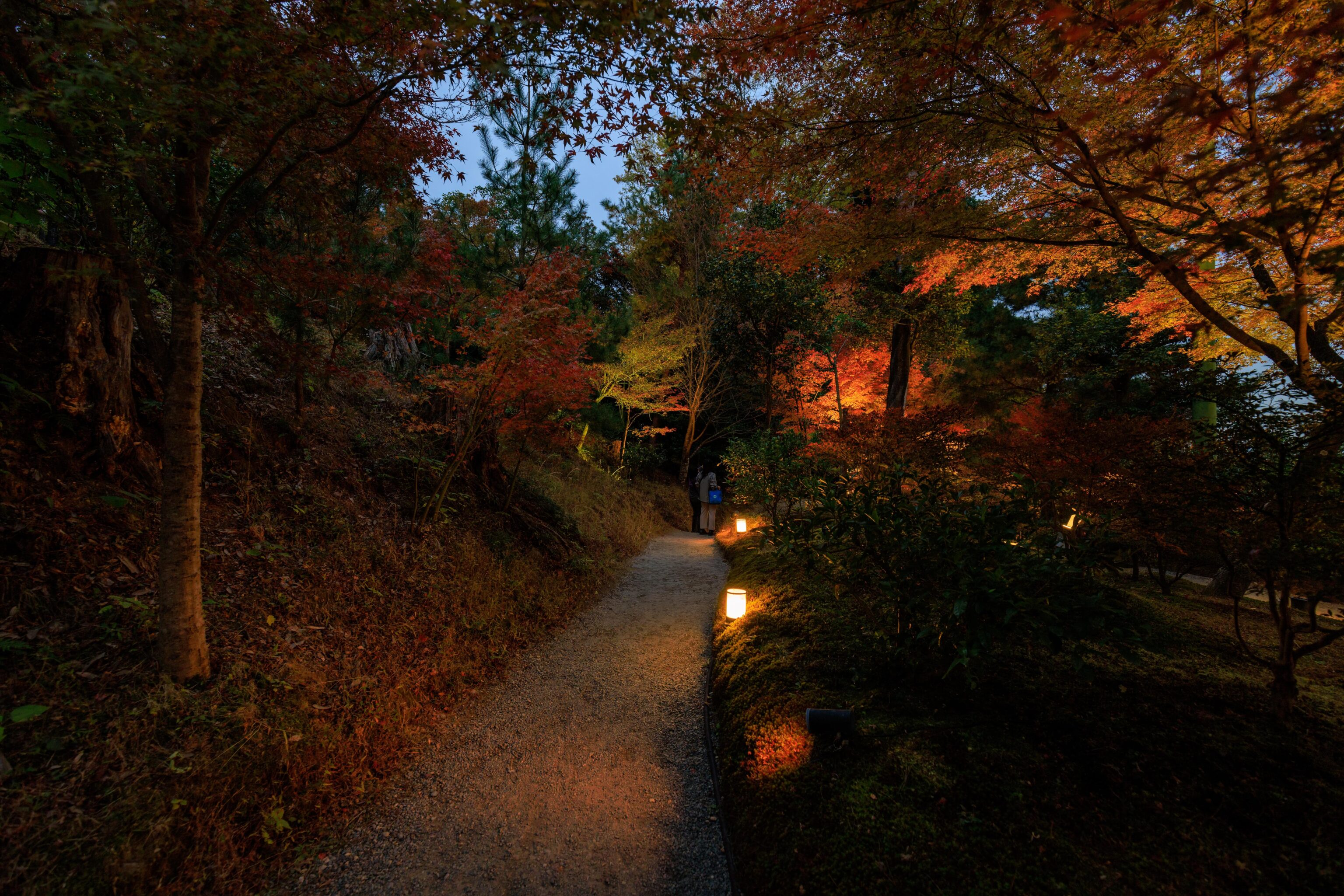
We continued along the route as it started to descend.
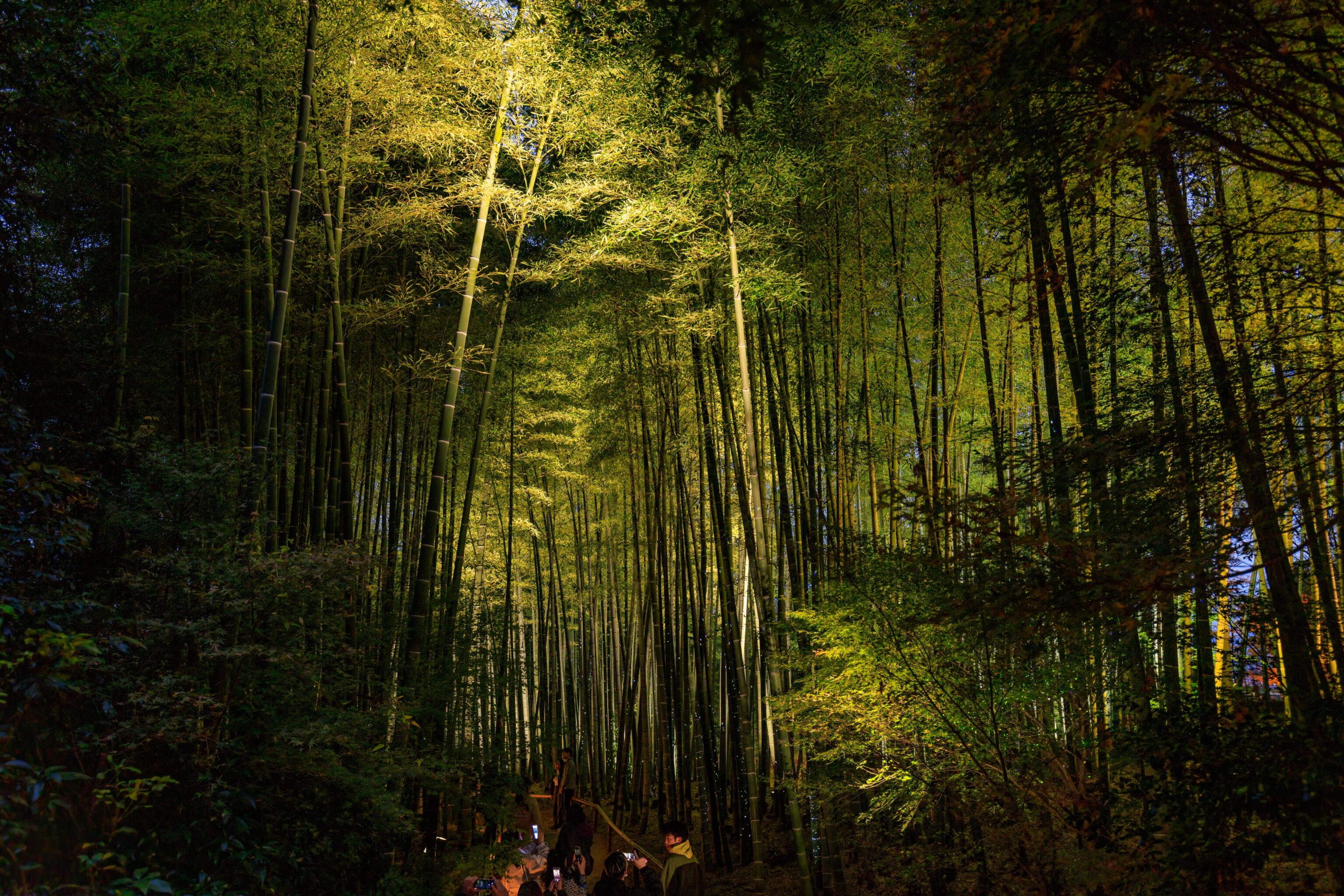
We soon found ourselves in a small illuminated bamboo forest!
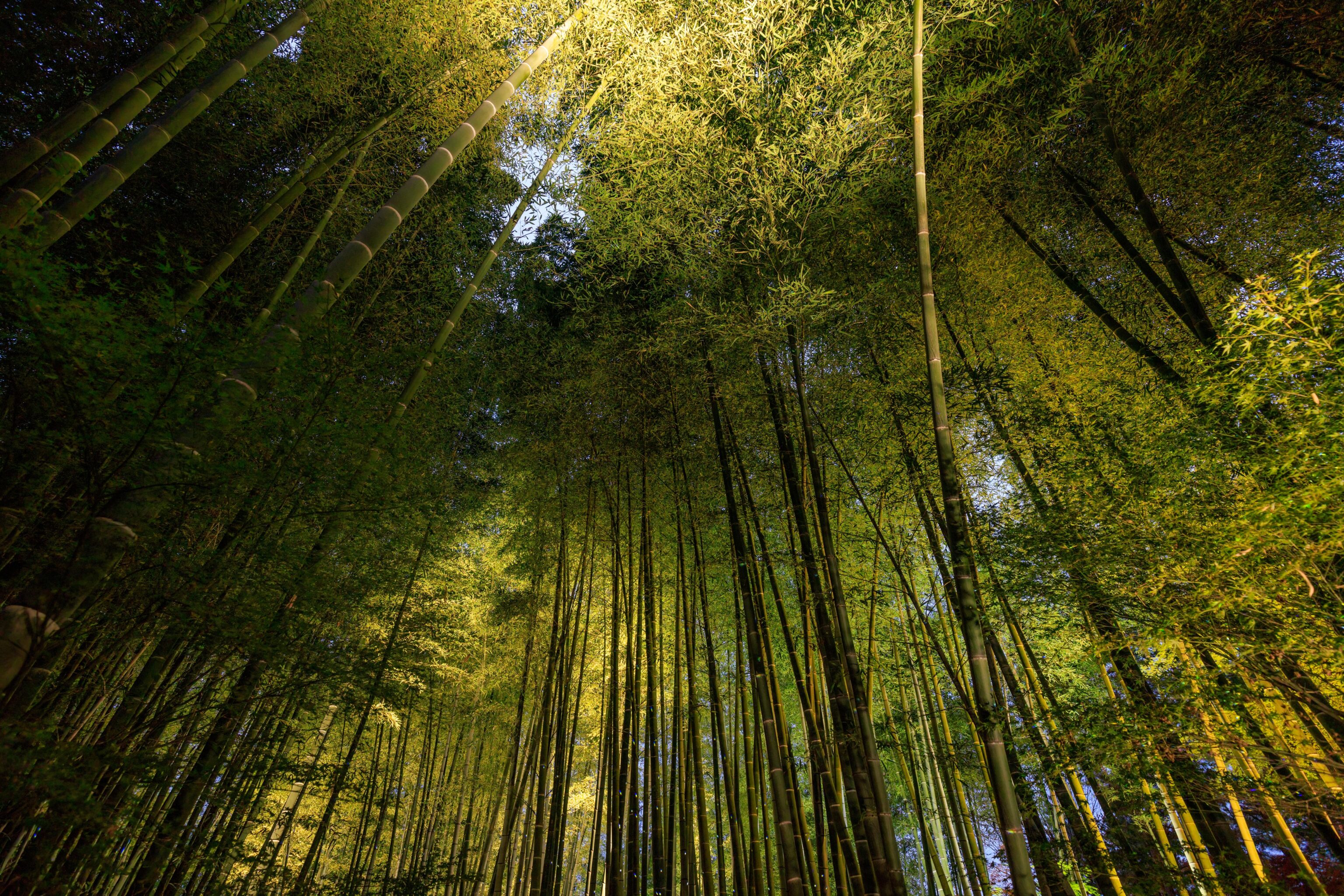
Its not quite the famous Arashiyama Bamboo Forest, which we’ve been to before, but it was still pretty nice!
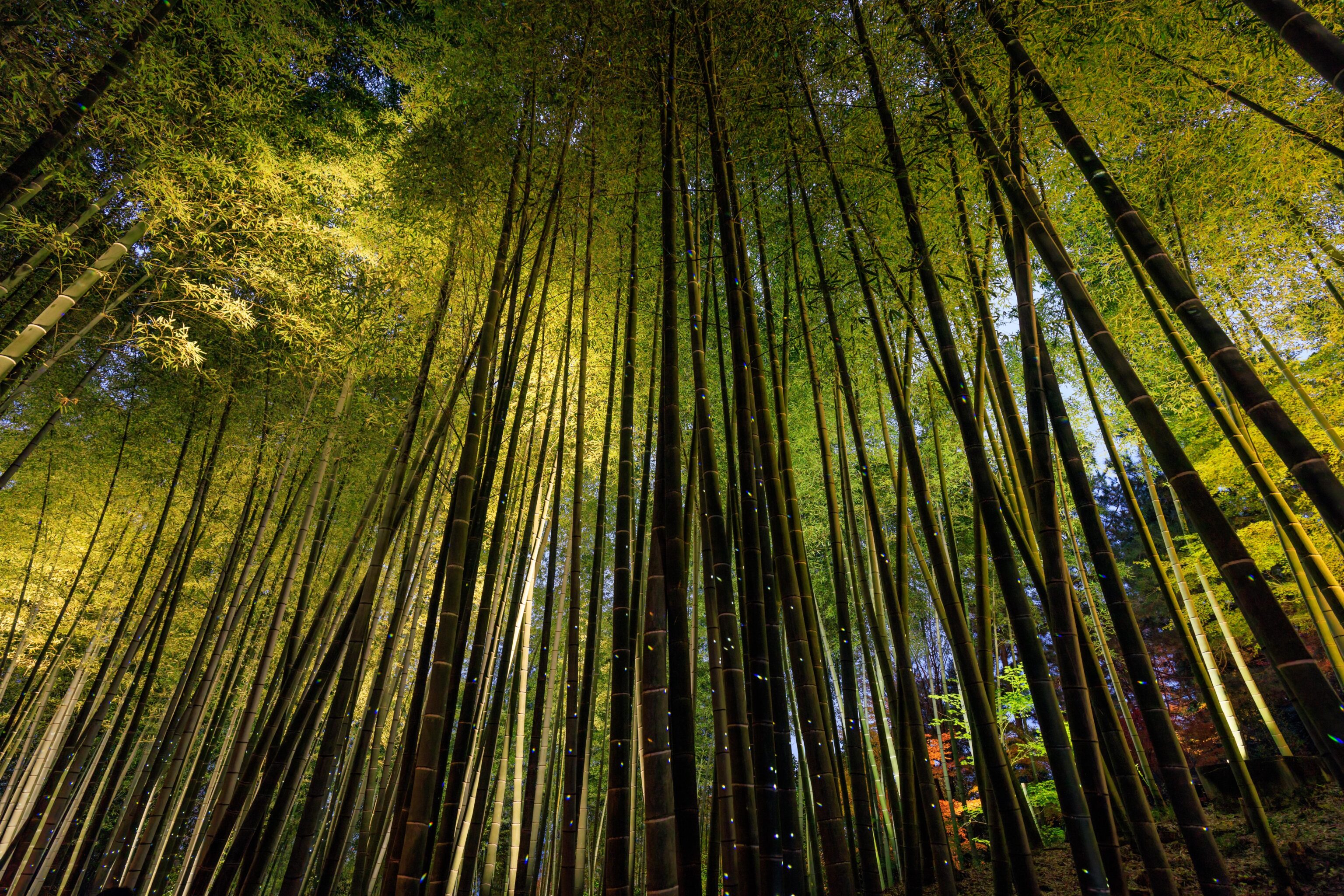
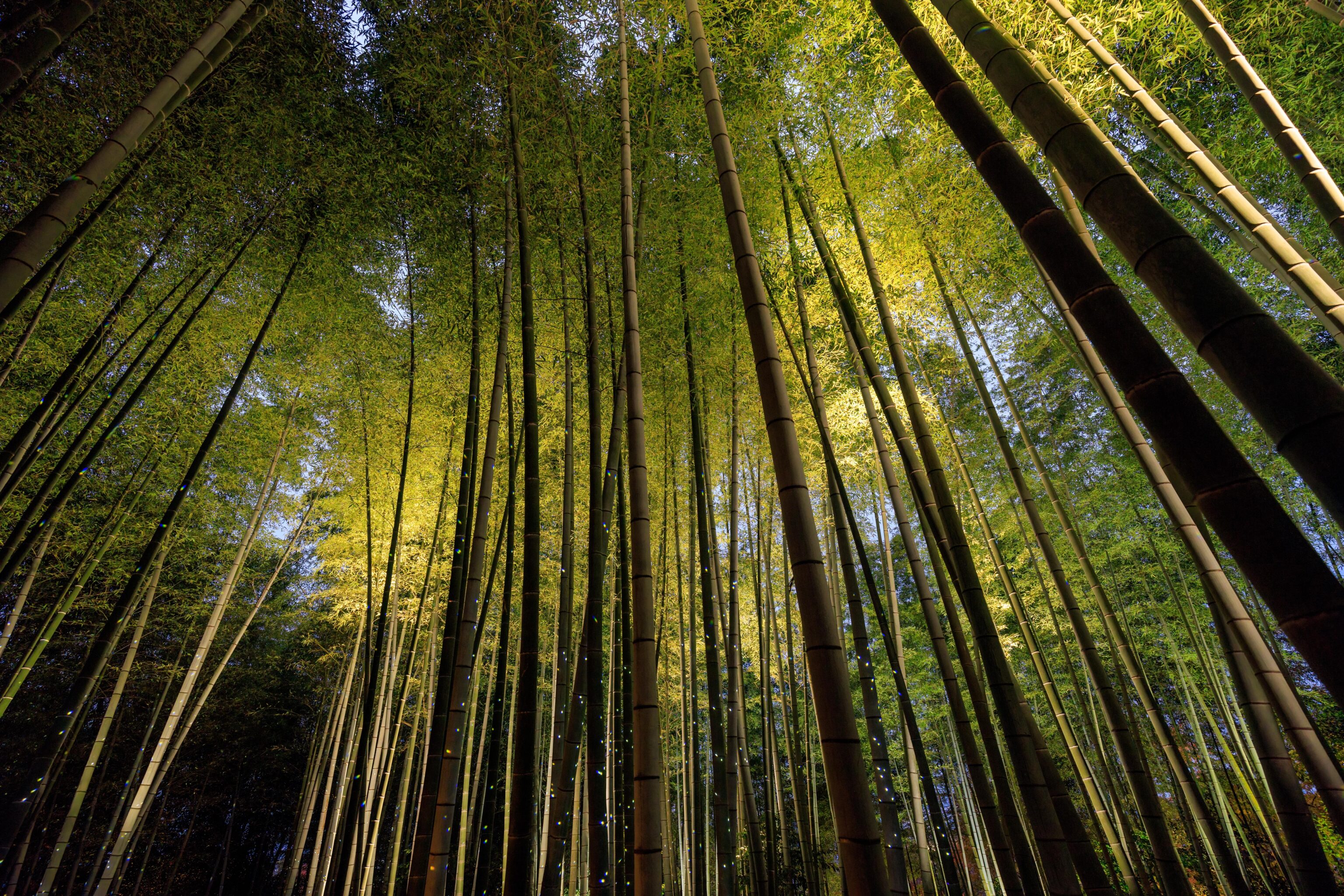
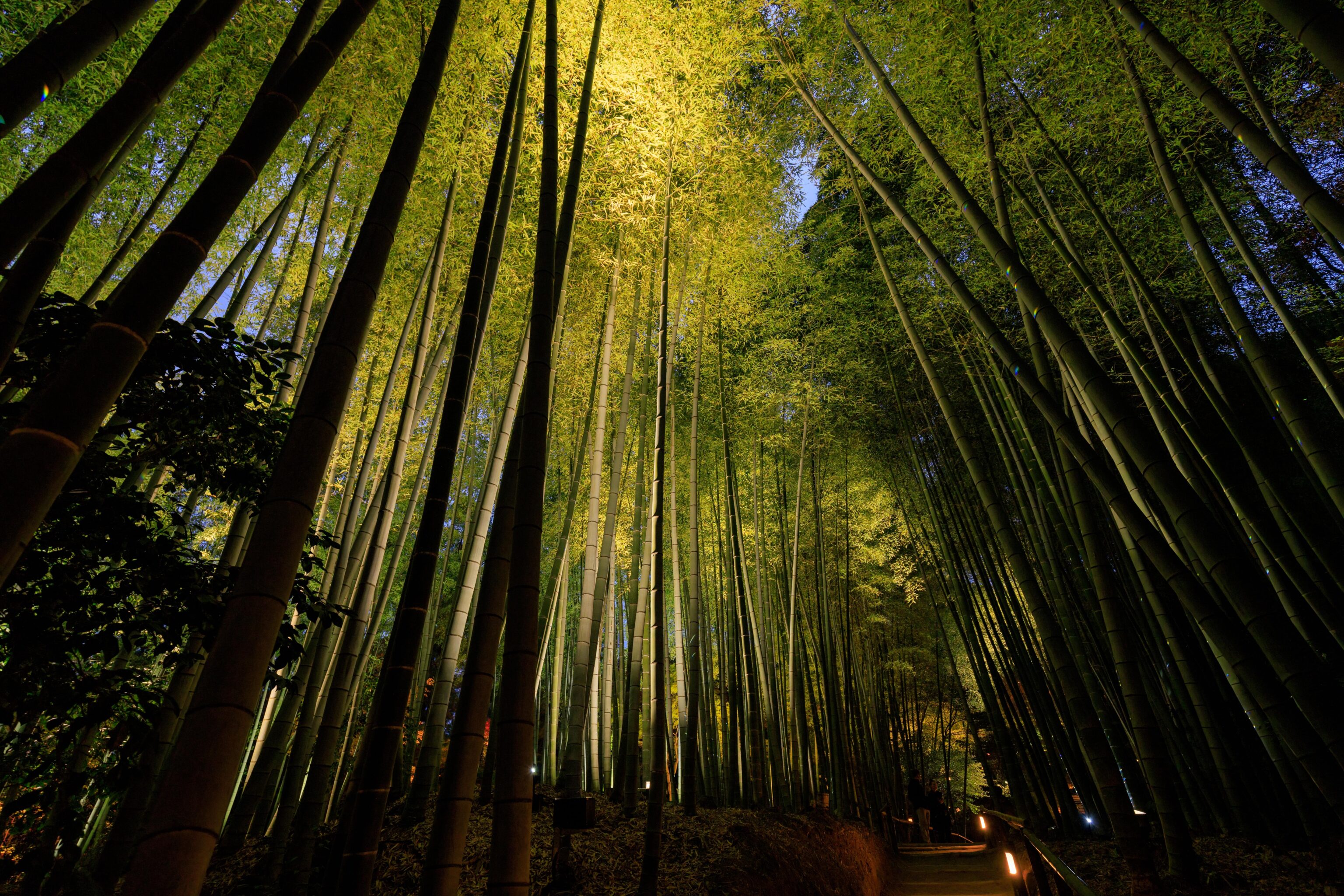
Some of the lights used were actually projectors, projecting star-like dots onto some of the bamboo. The effect wasn’t always entirely obvious.
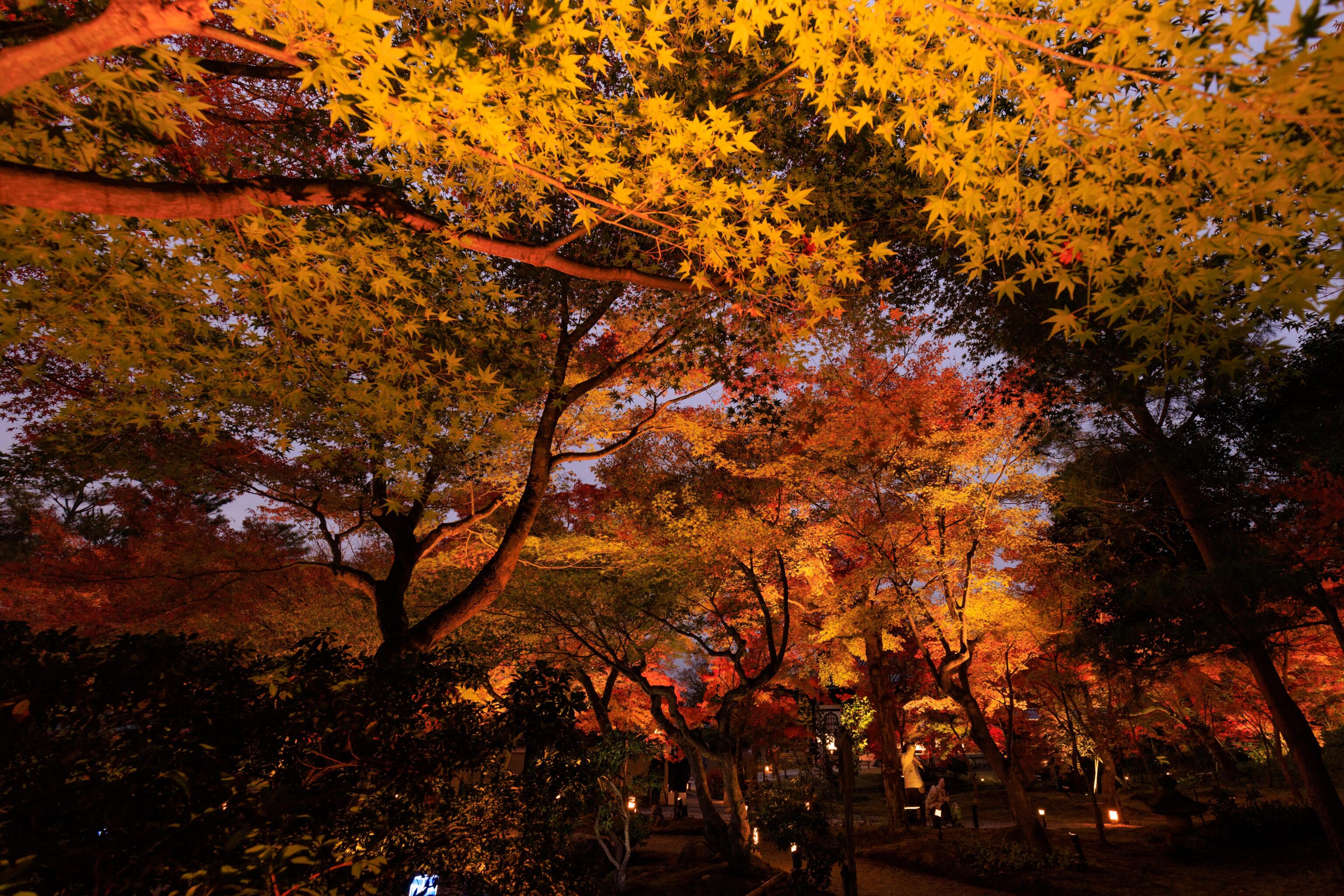
After descending through the bamboo, we reached an illuminated area covered with Japanese maples. Quite a different appearance from when we walked through earlier!
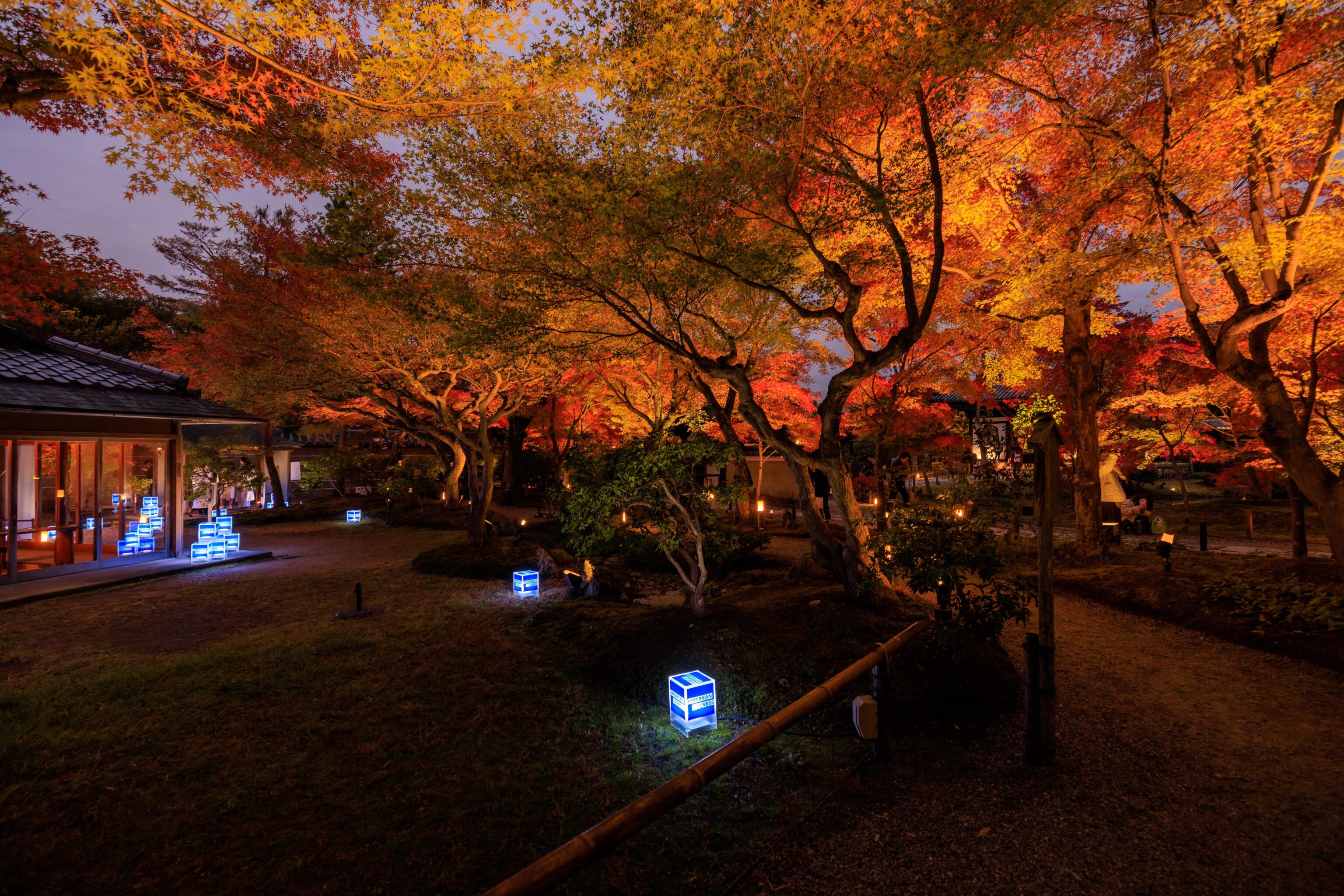
There was a Kodai-ji Temple Premium Access event for American Express cardholders. It provides a slight discount to the ticket price (50 JPY, yay, that’s about 0.34 USD) as well as timed entry to avoid ticket queues. It wasn’t busy at all when we entered.
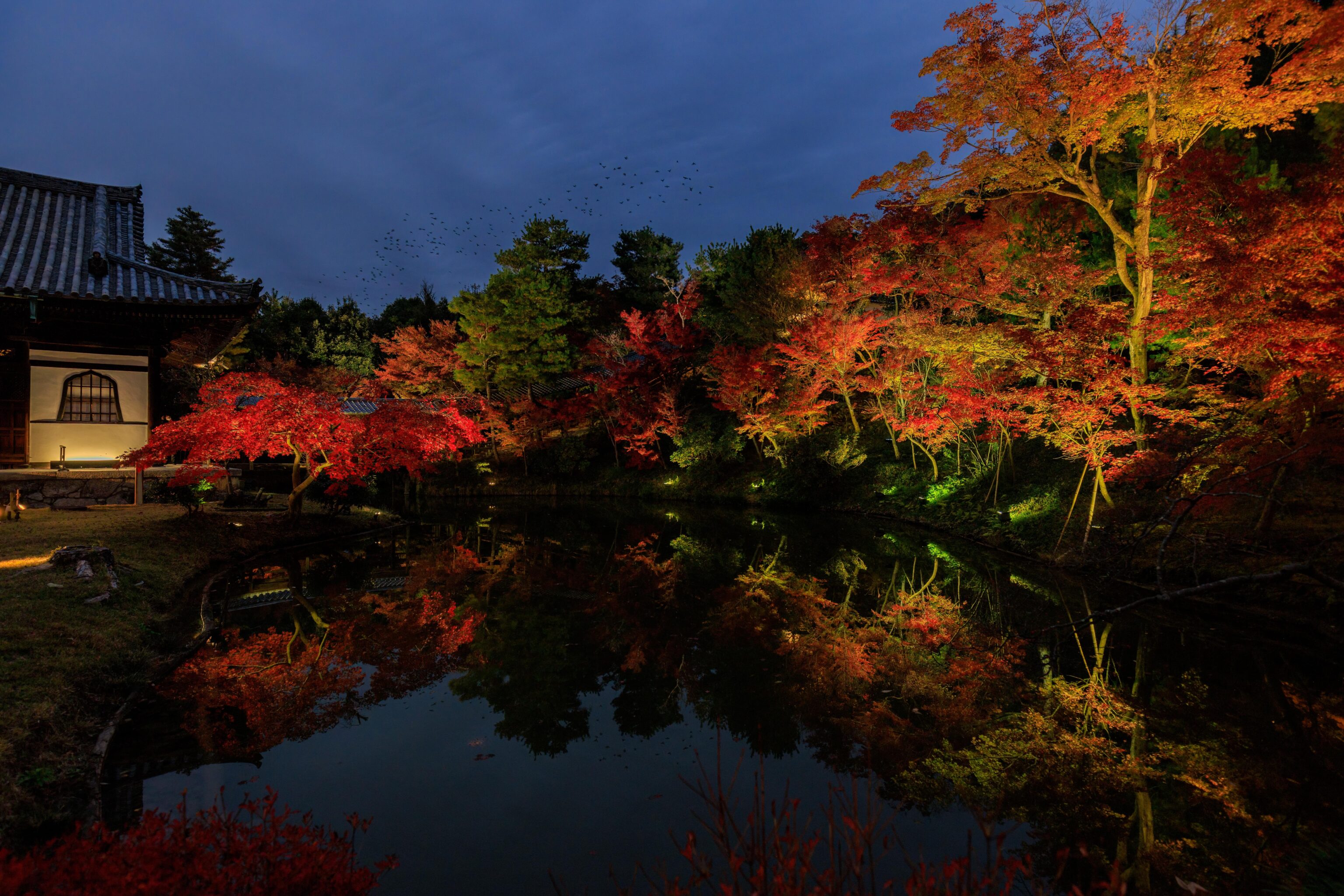
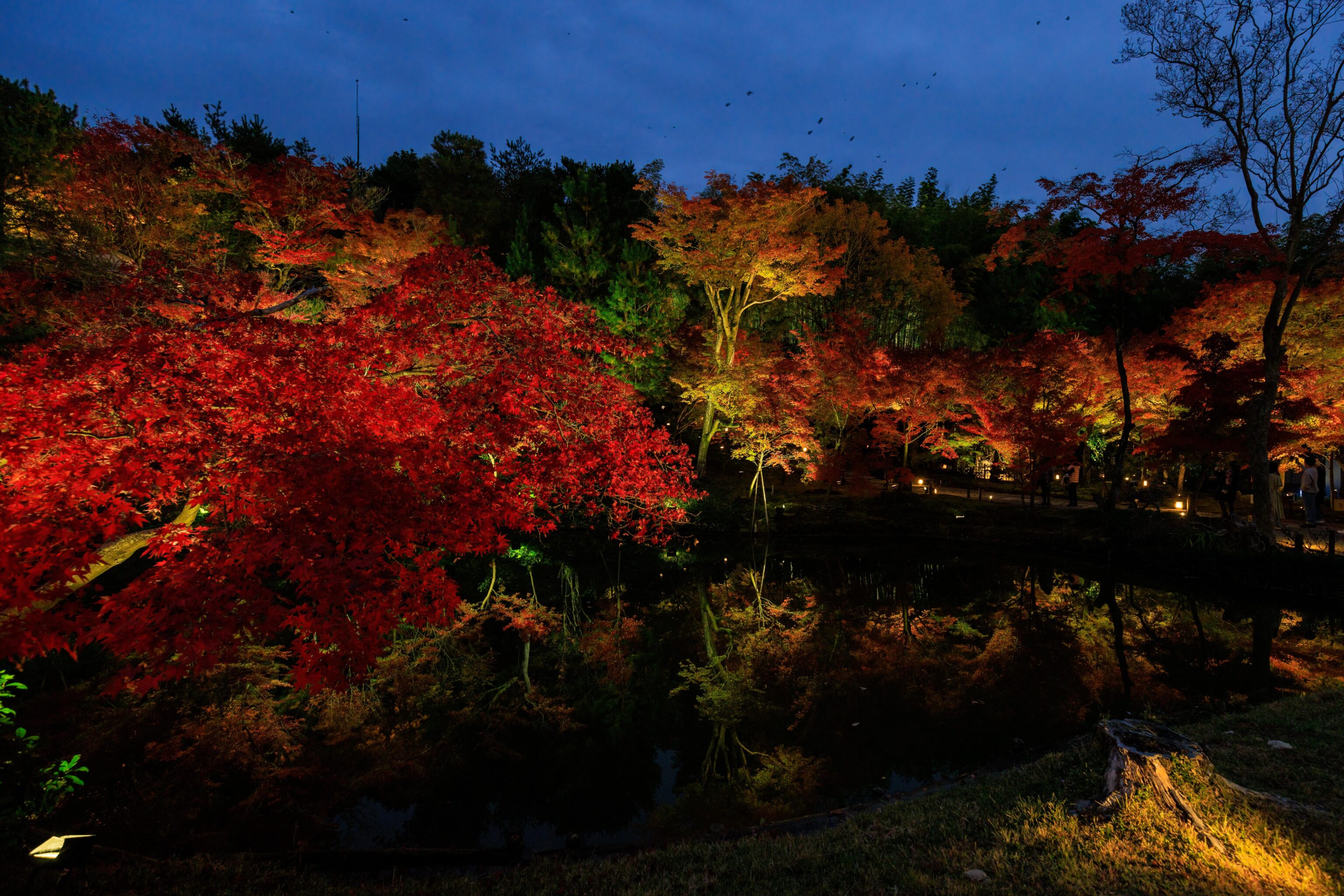
We went back to visit the large pond that we passed by earlier. It looked pretty nice when illuminated!
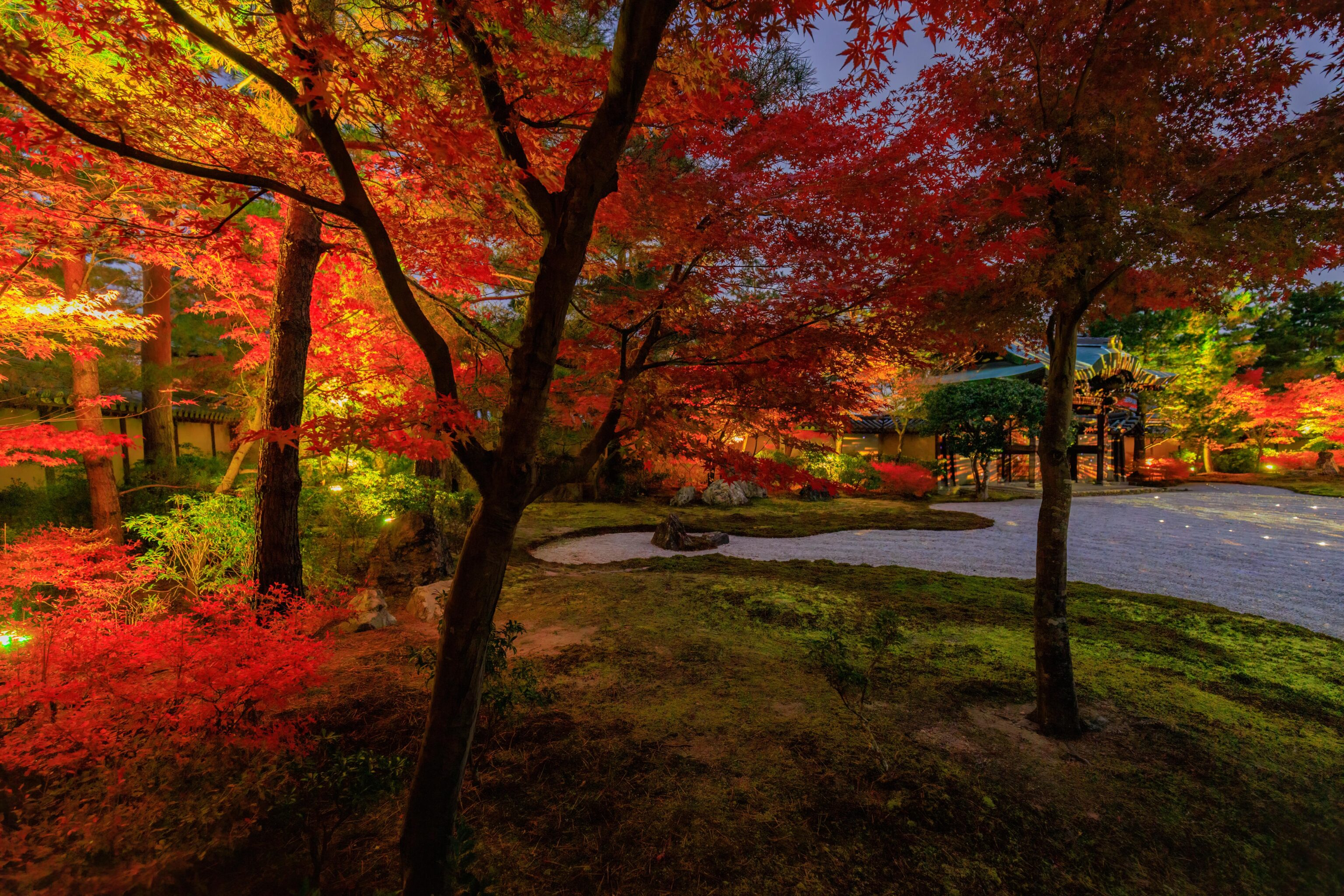
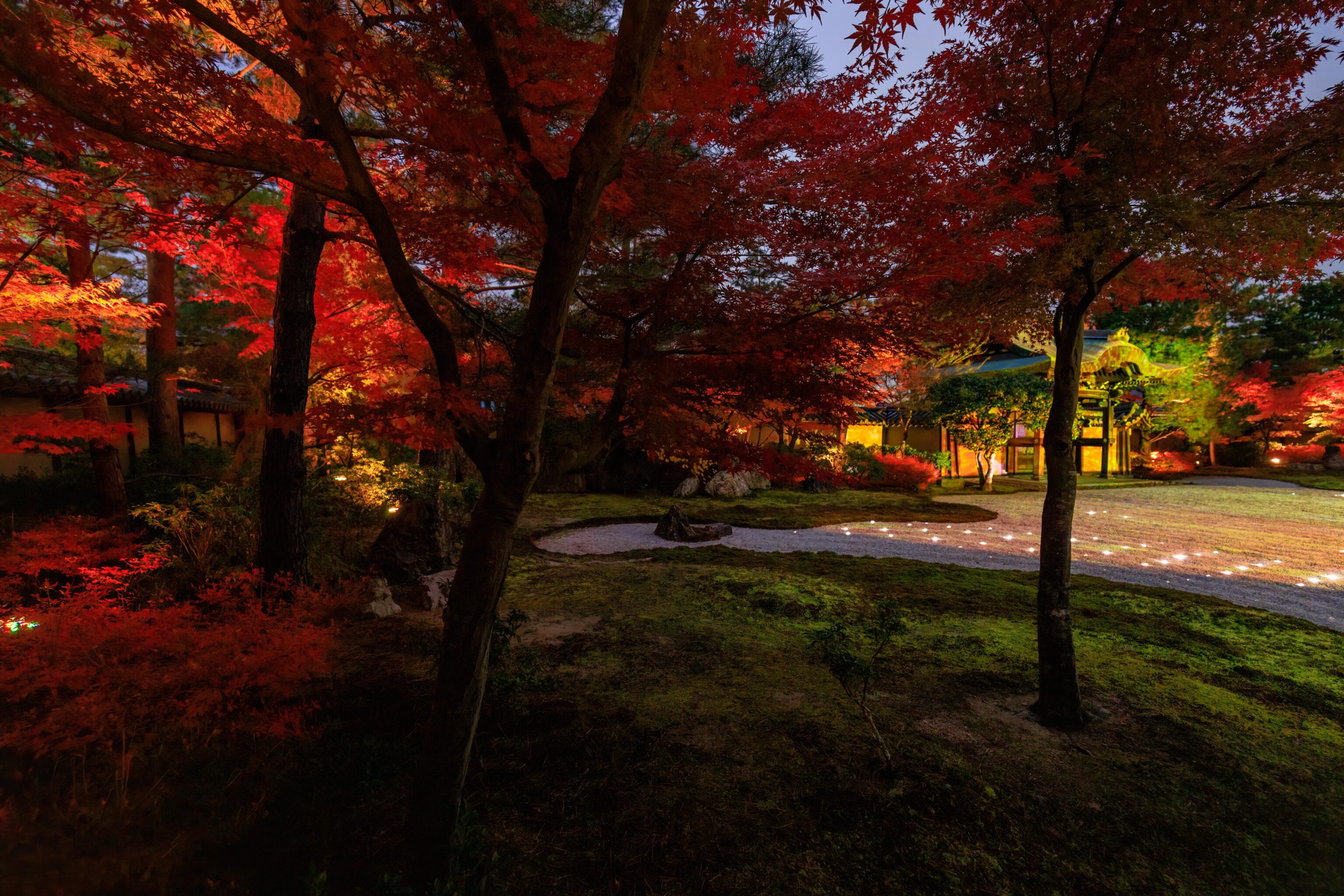
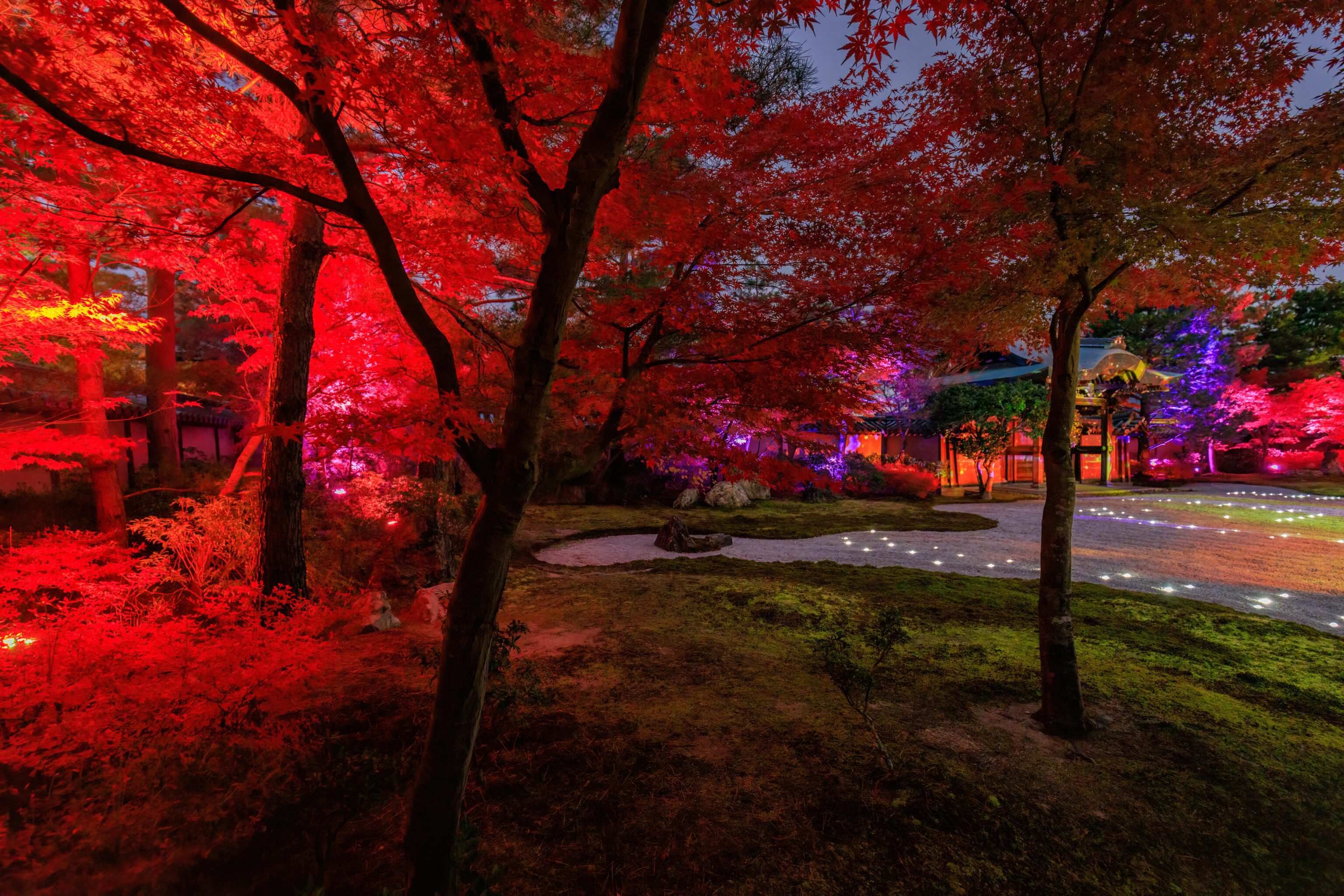
On our way out, we passed by the side of the Main Hall. We noticed some activity there. It turns out there is a music and light show in the dry garden! That would explain why it was rather poorly raked! It was too busy to get any closer and the best views would have been from inside the Main Hall which looked rather packed. We watched for a bit before heading out.
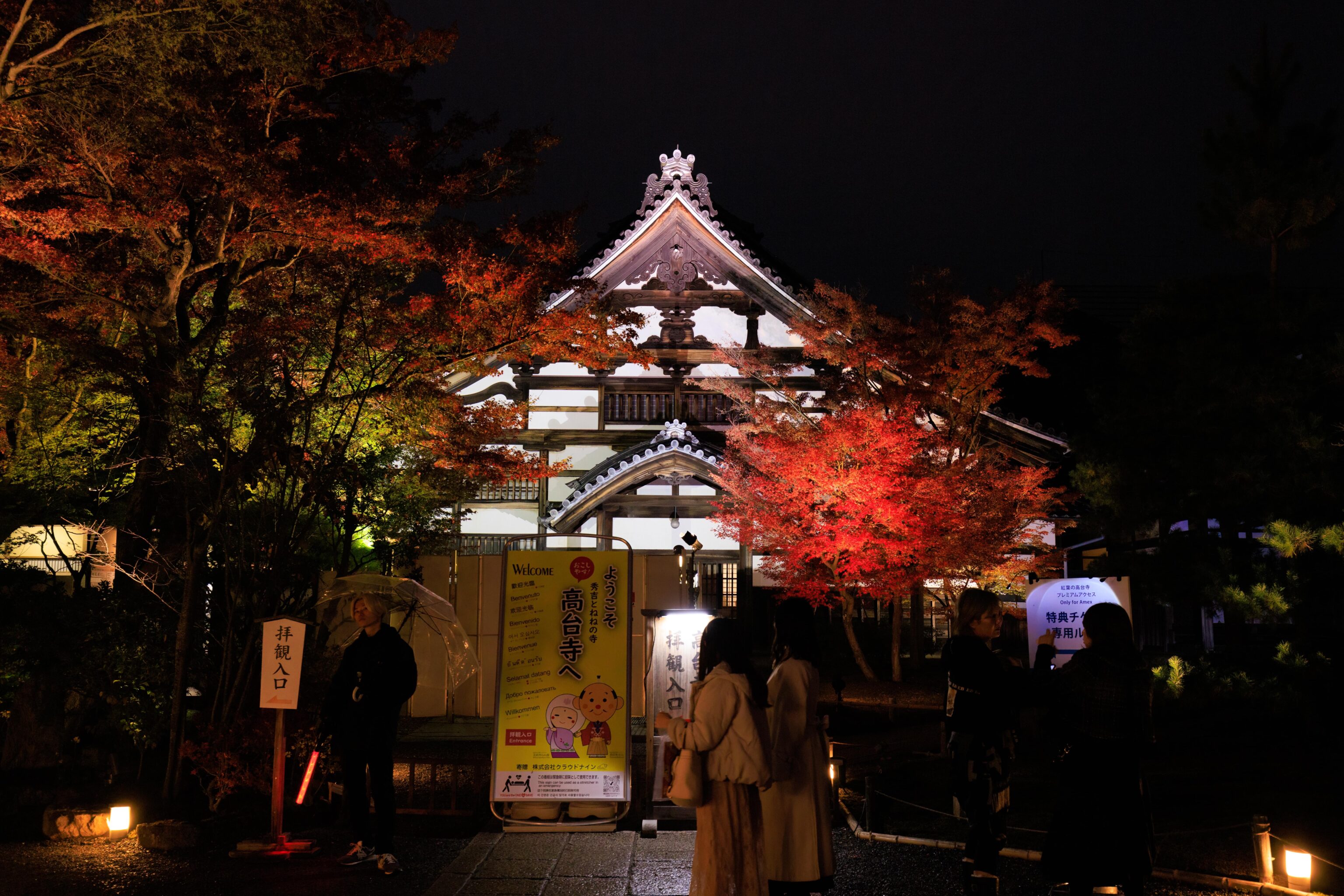
The temple’s entrance area as we exited. It was busier than before but overall still not busy, particularly compared to what we just experienced earlier at Kiyomizu-dera!
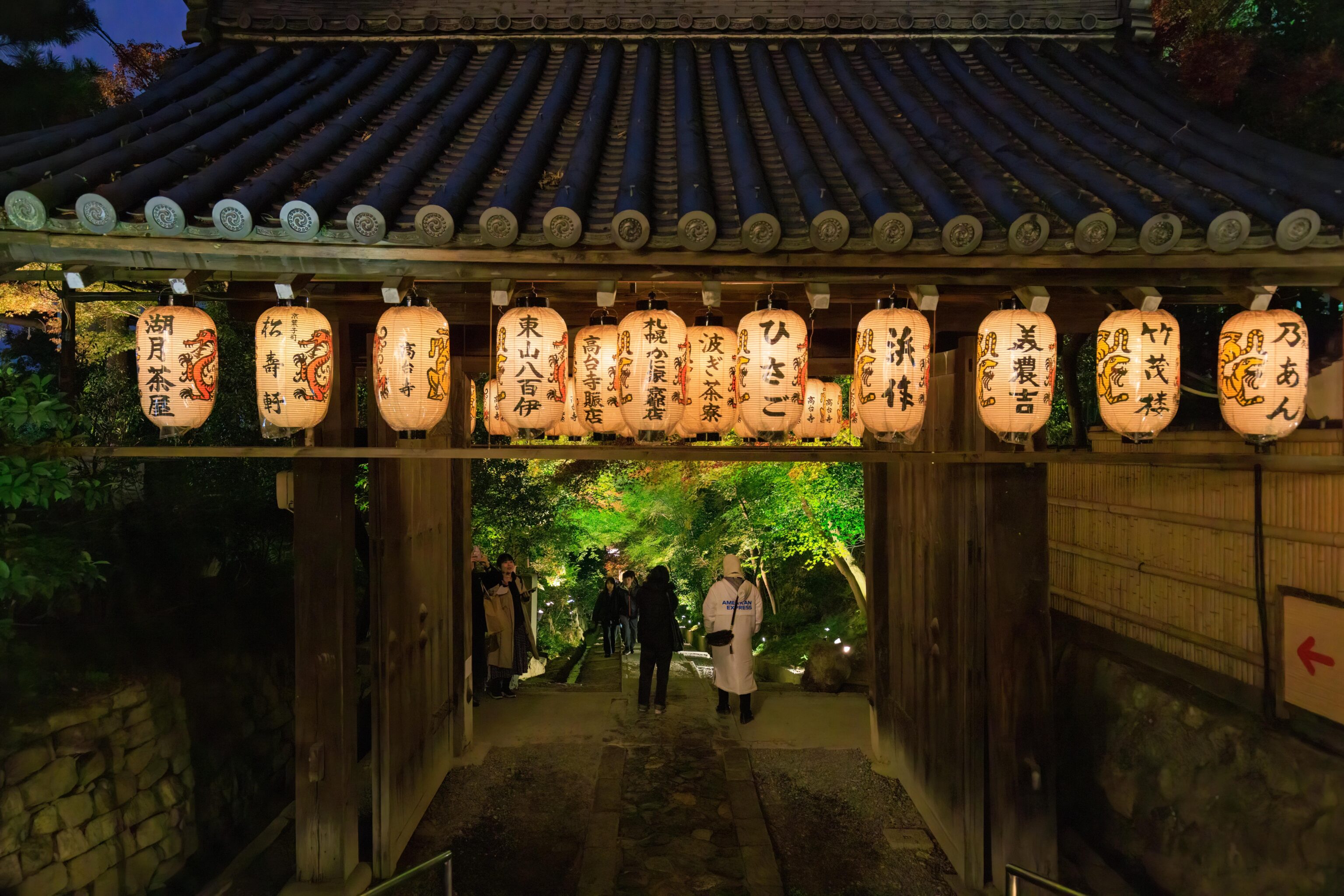
We continued on to exit via a path to the west, through this small gate. There is an American Express staff member in front of us. We saw many of them today!
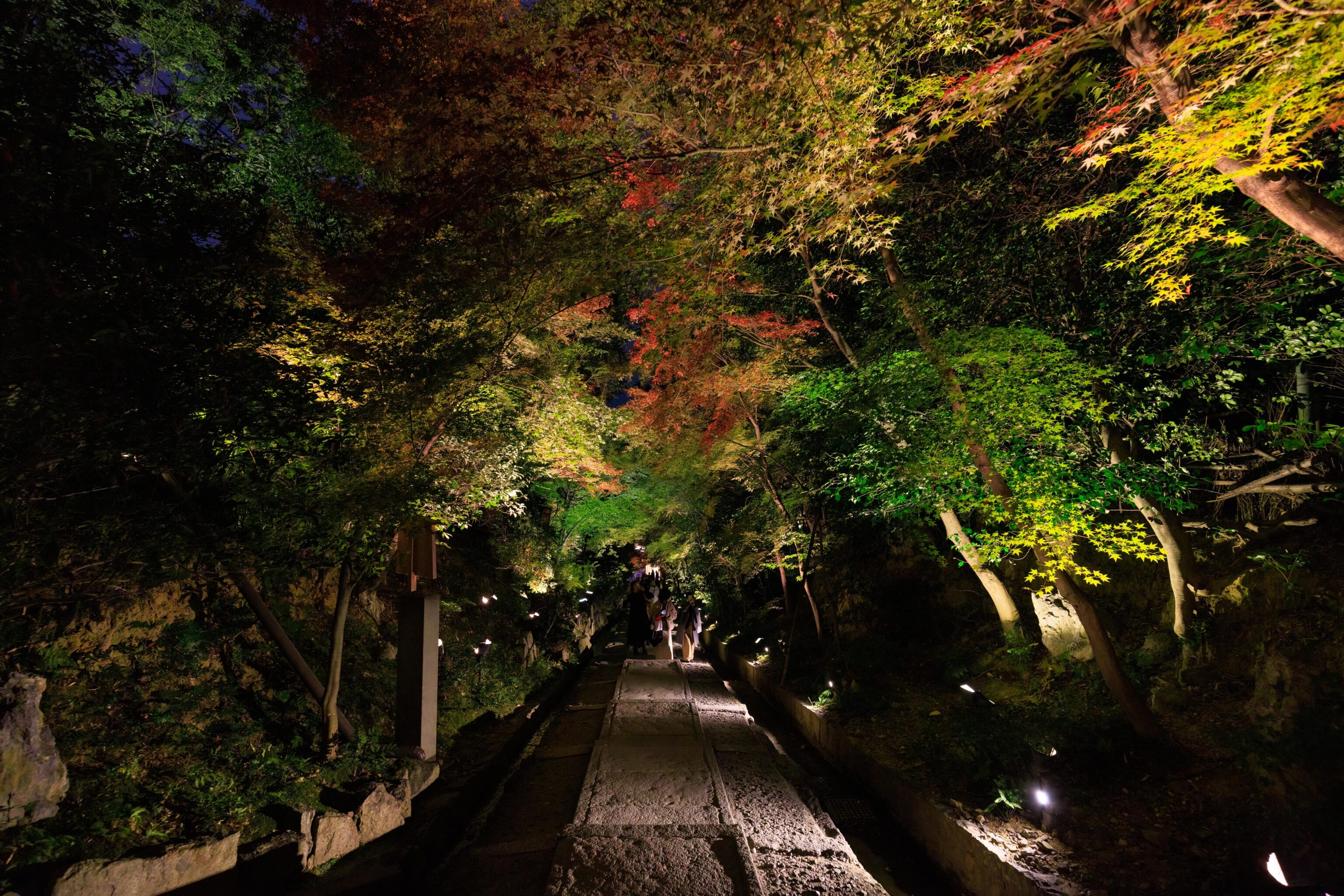
The downhill path was nicely illuminated.
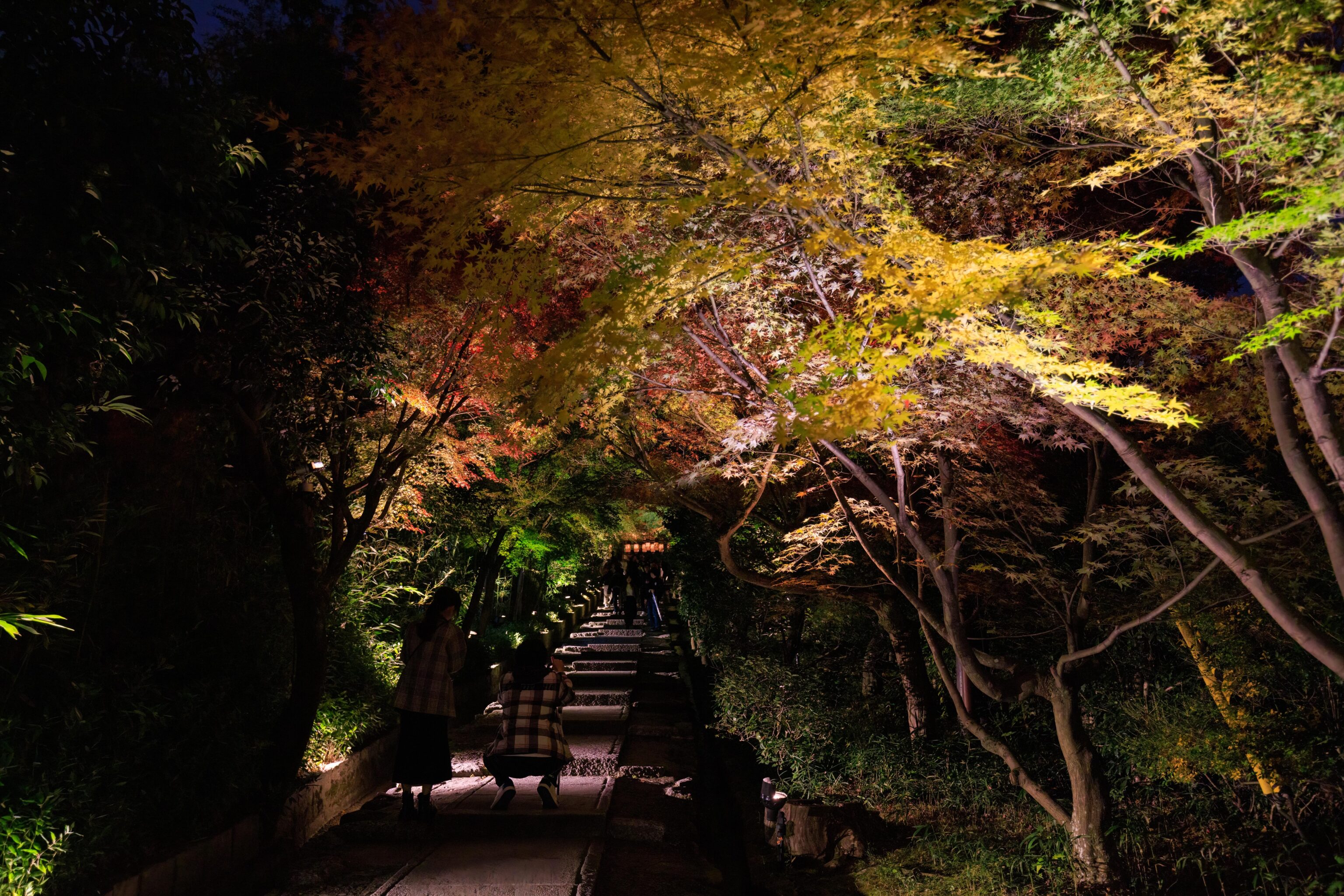
The view from the bottom, looking back up. At this point, we could have gone back to Kiyomizu-dera to check out the illumination there but we were tired and it would have been a long uphill slog back. So we headed west to catch a bus.
Kodai-ji is pretty close to Kiyomizu-dera and its horde of visitors but luckily our bus was not crowded! We took the 202, the same route we arrived on earlier in the day. There are a few other hotels by the Hyatt Place Kyoto but overall it seems to be a pretty quiet area. In past experience, busses from Kyoto Station are often packed so staying away from that area seems like a good decision!
We decided to have dinner at a restaurant near the hotel. The restaurant’s name in English is Kyo-Umare Gohan-Biyori.
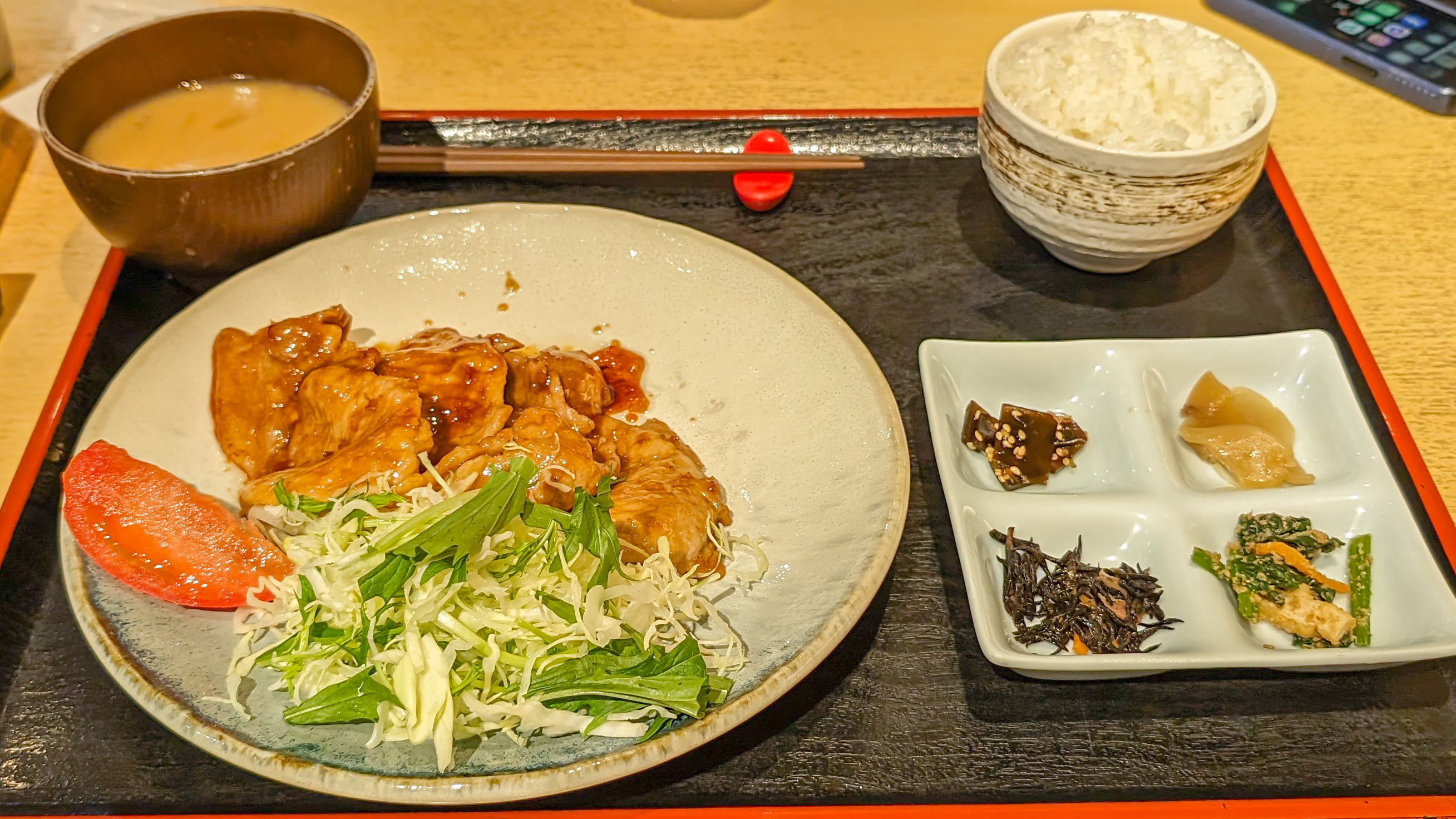
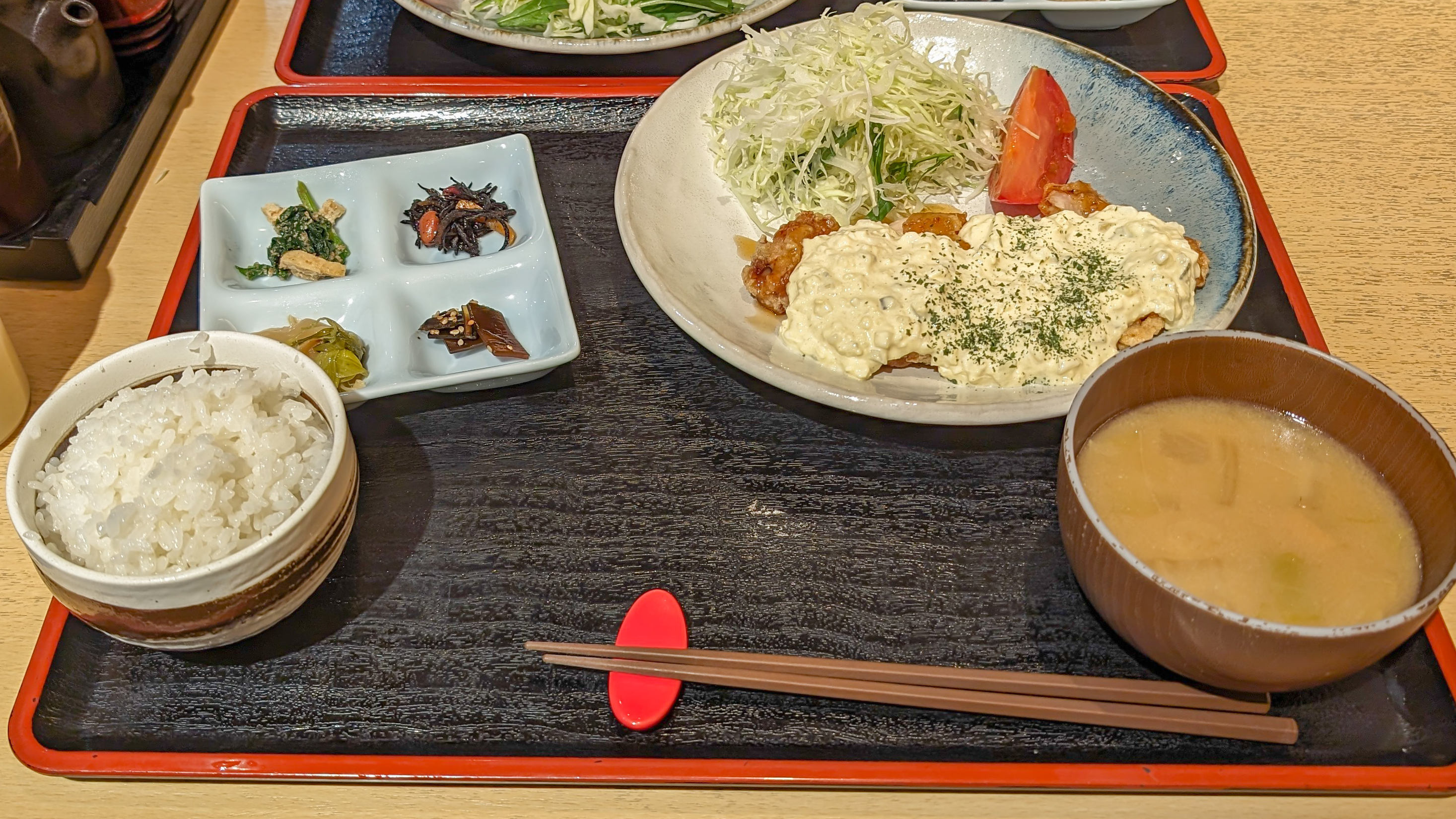
It all tastes better than it looks! Visually, the chicken covered with some sort of Japanese mayo based sauce in particular looks very unappealing and didn’t sound too great on the menu either but it was something that we hadn’t had before. The other item was ginger pork. Overall, a quick light meal though not likely to win any awards.
Footnotes
- https://www.mlit.go.jp/tagengo-db/en/R2-01607.html ↩︎
- https://en.wikipedia.org/wiki/Ni%C5%8Dmon ↩︎
- https://www.kiyomizudera.or.jp/en/learn/ ↩︎
- https://en.wikipedia.org/wiki/Kiyomizu-dera#History ↩︎
- https://www.kiyomizudera.or.jp/en/visit/ ↩︎
- https://muza-chan.net/japan/index.php/blog/kyoto-kiyomizu-dera-koyasu-pagoda ↩︎
- https://www.okujapan.com/blog/japanese-jizo-statues/ ↩︎
- https://www.flickr.com/photos/42304632@N00/59684572 ↩︎
- https://en.wikipedia.org/wiki/Honke_Nishio_Yatsuhashi ↩︎
- https://arigatojapan.co.jp/yatsuhashi-kyotos-famous-sweet-souvenir/ ↩︎
- https://en.wikipedia.org/wiki/Yatsuhashi ↩︎
- https://kyoudo-ryouri.com/en/food/2467.html ↩︎
- https://www.kanpai-japan.com/kyoto/starbucks-ninenzaka-yasaka-chaya ↩︎
- https://starbucks-mugs.com/category/you-are-here/you-are-here-international/ ↩︎
- https://apjjf.org/2022/11/Milne-Moreton.html ↩︎
- https://en.wikipedia.org/wiki/Controversies_surrounding_Yasukuni_Shrine ↩︎
- https://muza-chan.net/japan/index.php/blog/gionkaku-tower-higashiyama-kyoto ↩︎


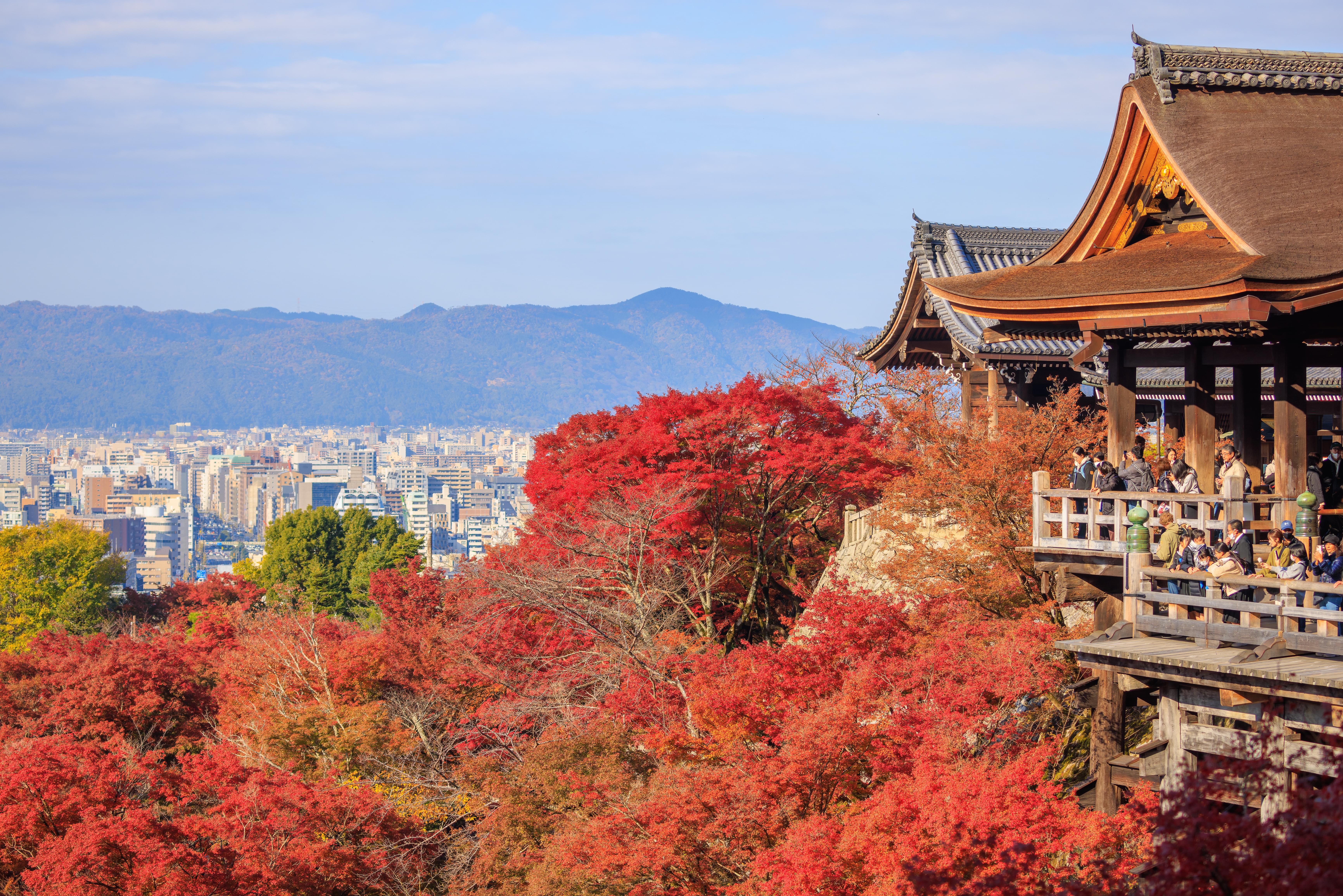
One Reply to “Daytime Kiyomizu-dera and Evening Kodai-ji”